The document discusses the evolution of human resource management (HRM), human resource development (HRD), and organization development (OD) as they converge into a unified approach for the twenty-first century. It highlights the increasing importance of people as the primary source of competitive advantage for organizations, prompting HR to innovate and integrate various functions. Additionally, the analysis outlines a historical context for these fields and examines their distinct yet interconnected trajectories over the last century.

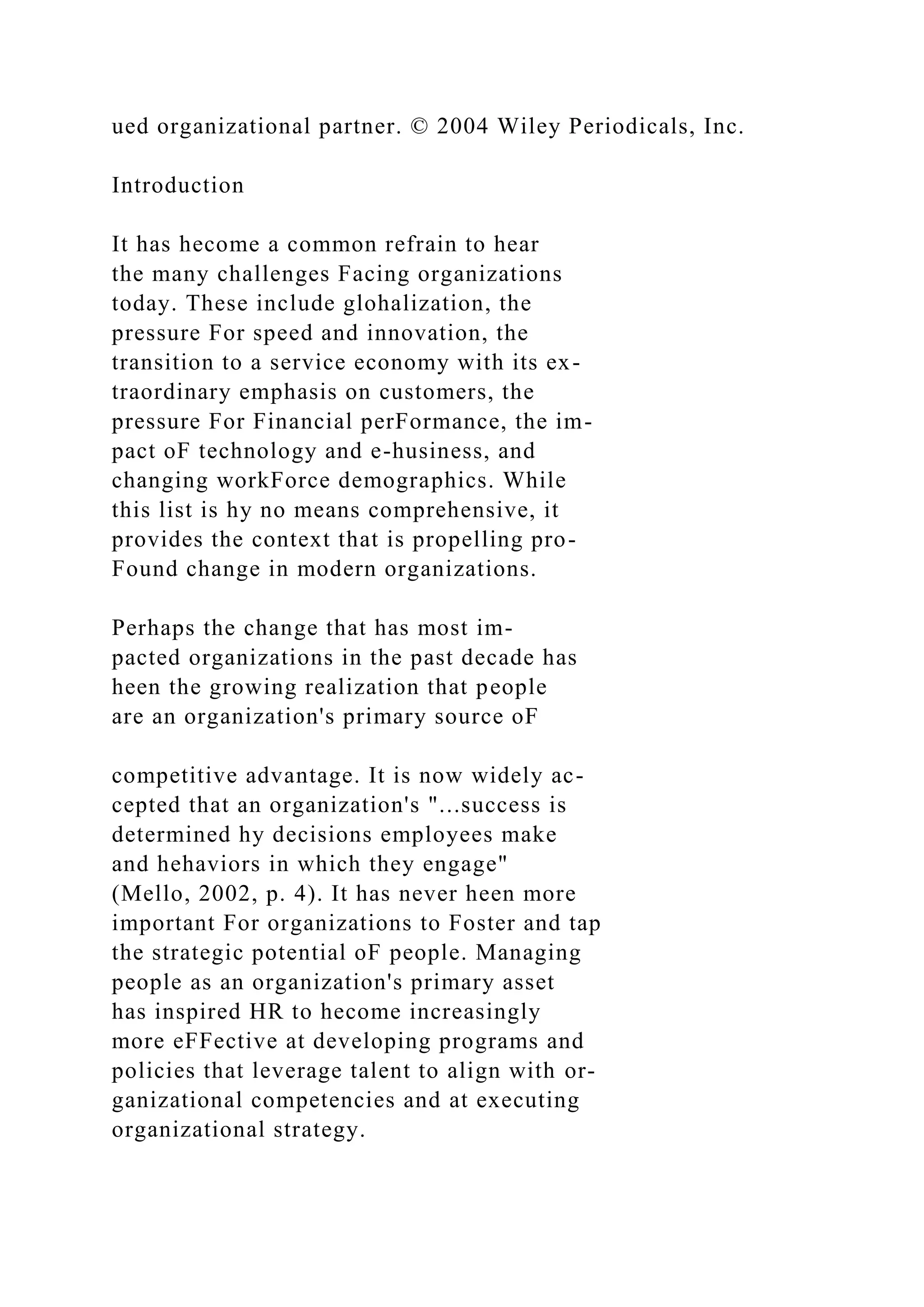
![MacDonald (2003) states that "creating
the next generation work environment—
highly collahorative and capahle oF not just
Fostering, hut also encouraging, the instant,
seamless movement oF ideas and expertise—
Correspondence to: Wendy E. A. Ruona, Assistant Professor,
Department of Oceupational Studies, 213
Rivers Crossing, 850 College Station Road, Athens, CA 30602,
Tel: (706) 542-4474, Fax: (706) 542-
4054, E-mail: [email protected]; Sharon K. Cibson, Assistant
Professor, Organization Learning and De-
velopment, Mail #MOH 217, 1000 LaSalle Avenue,
Minneapolis, MN 55403, Tel: (651) 962-4387, fax:
(651) 962-4169, E-mail: [email protected]
Human Resource Management, Spring 2004, Vol. 43, No. 1, Pp.
49-66
© 2004 Wiley Periodicals, inc. Published online in Wiiey
InterScience (www.interscience.wiley.com).
DOI: 10.1002/hrm.20002
50 HUMAN RESOURCE MANAGEMENT, Spring 2004
will present both intellectual and technical
challenges for us as professionals" (p. 262).
HR faces these challenges as it contemplates
organizational strategy and workforce impli-
cations. It also, however, must reflect on
these challenges as they relate to HR itself.
The HR function and its processes have
changed as a direct result of these organiza-
tional dynamics. The next-generation HR is
emerging as a field that uniquely combines
activities and processes that have traditionally](https://image.slidesharecdn.com/reflectionpaper1reflectionpaper2reflectionpaper-221031054129-dcabb3bf/75/Reflection-Paper-1Reflection-Paper-2Reflection-Paper-docx-3-2048.jpg)
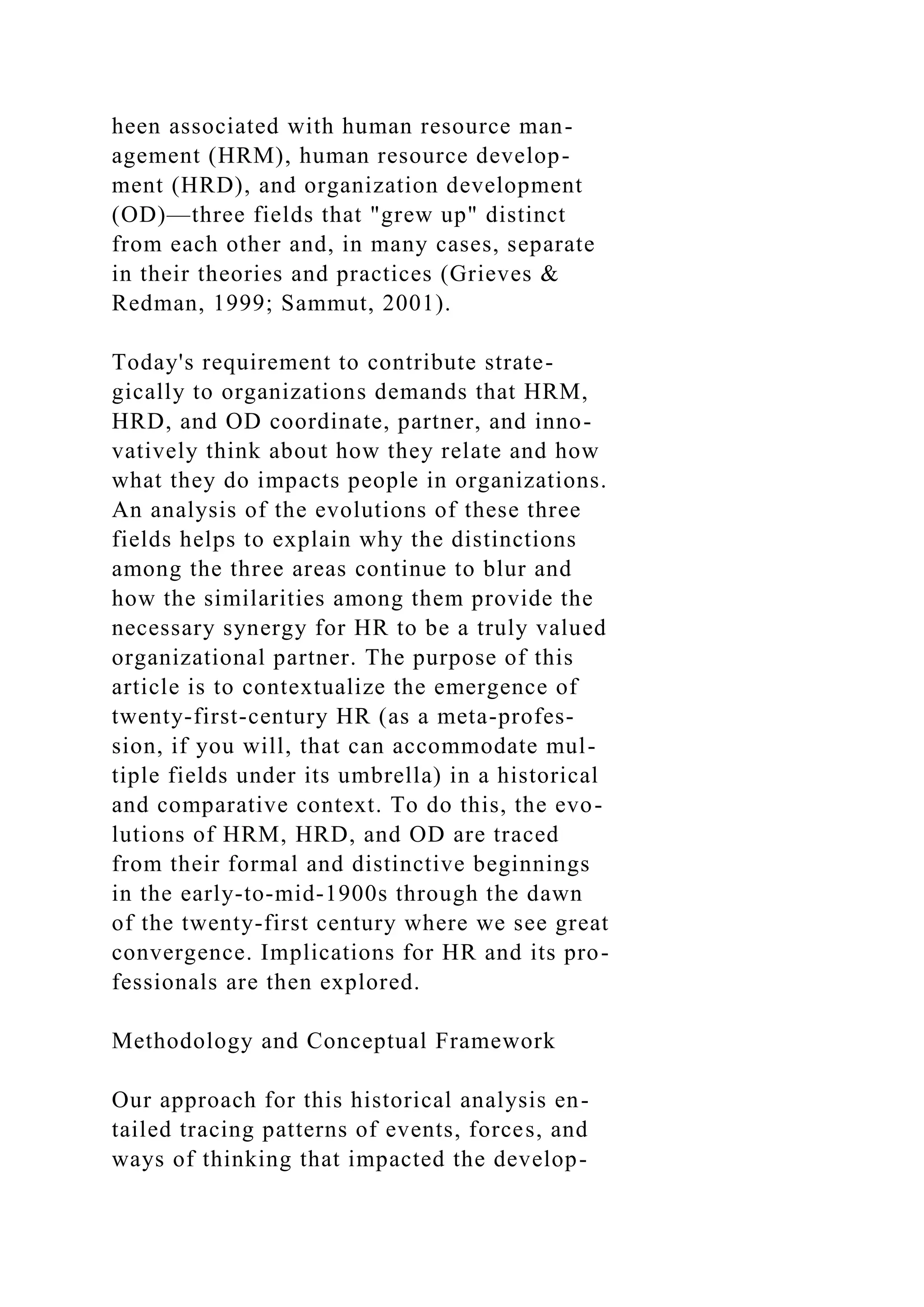
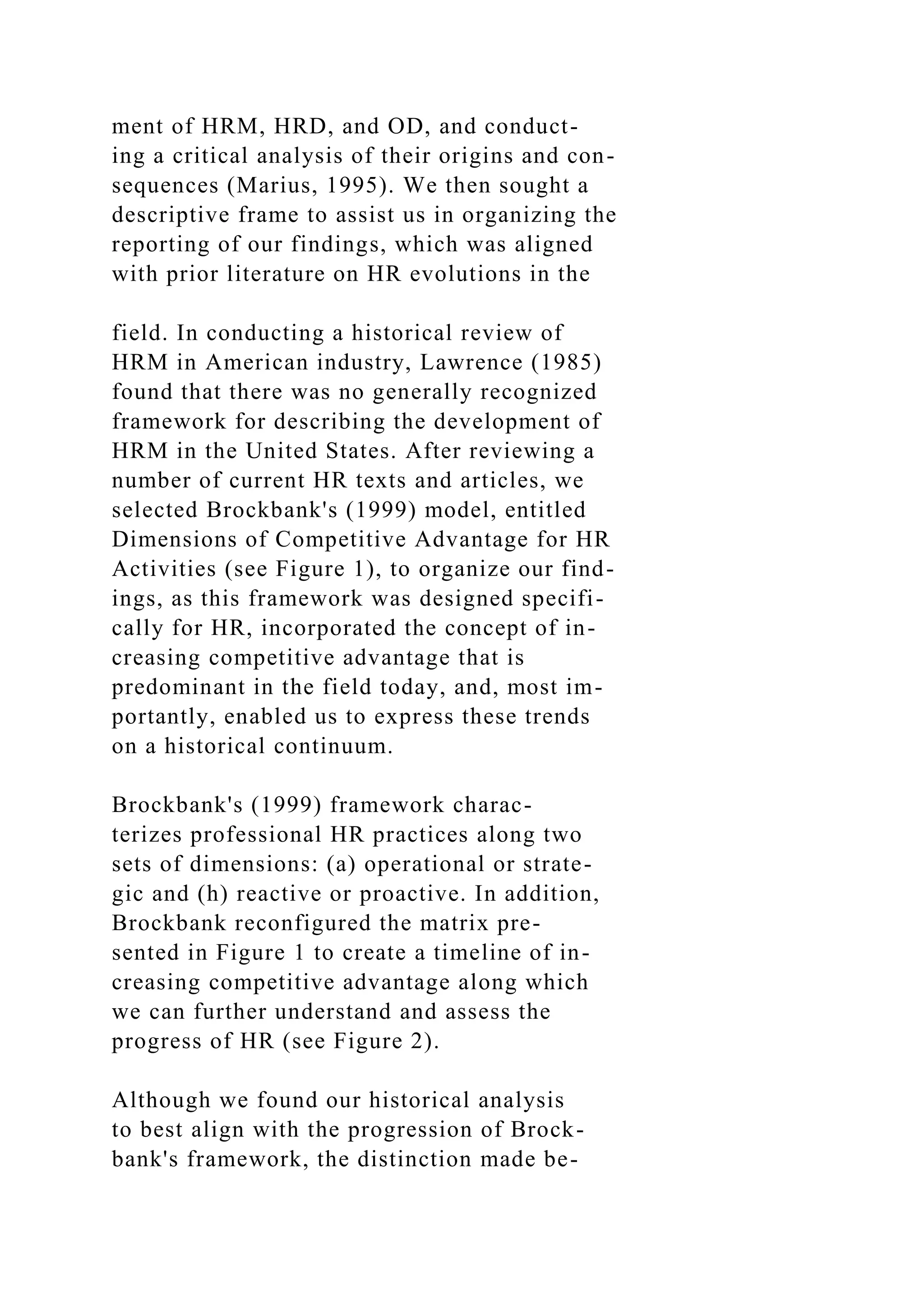

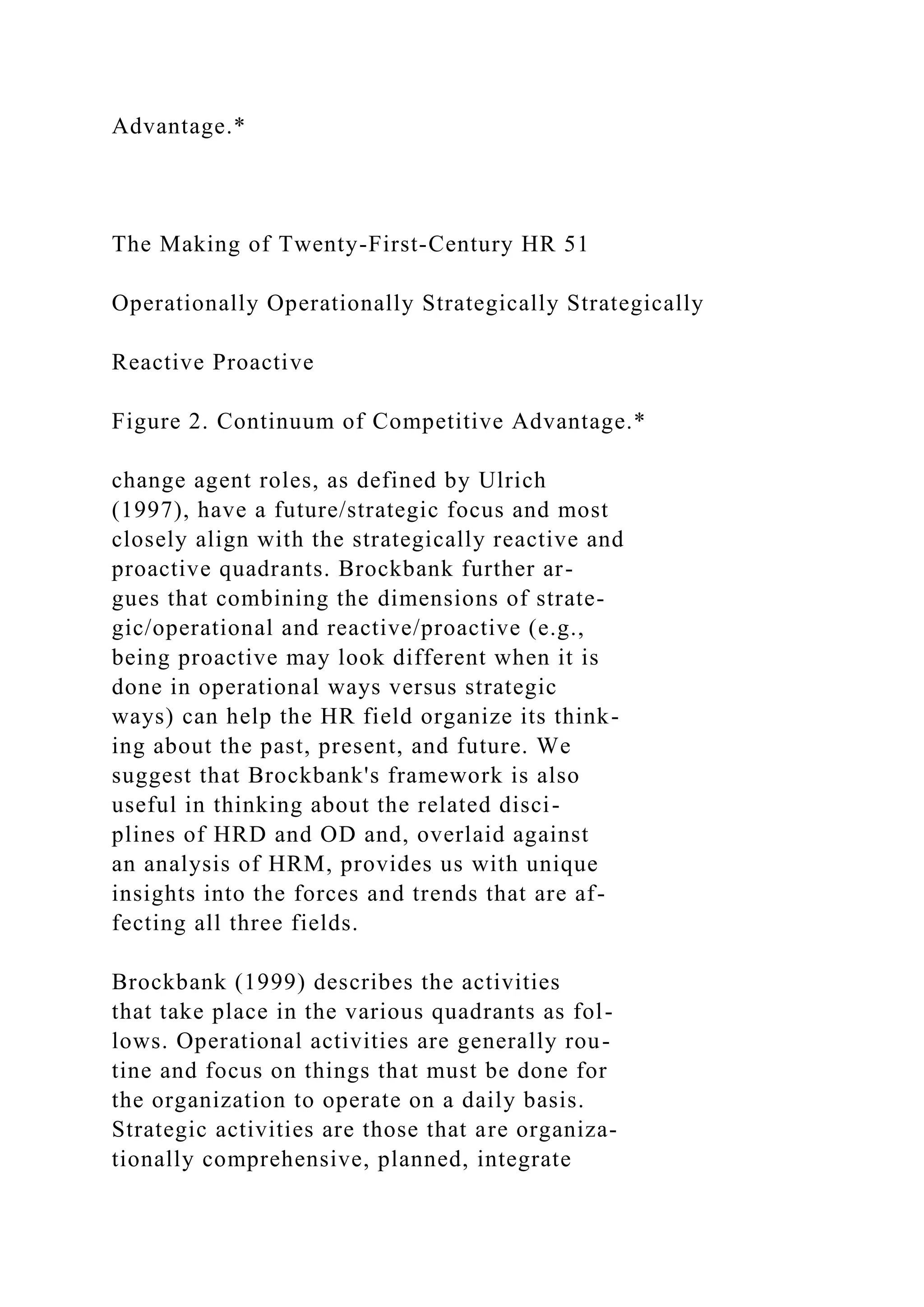
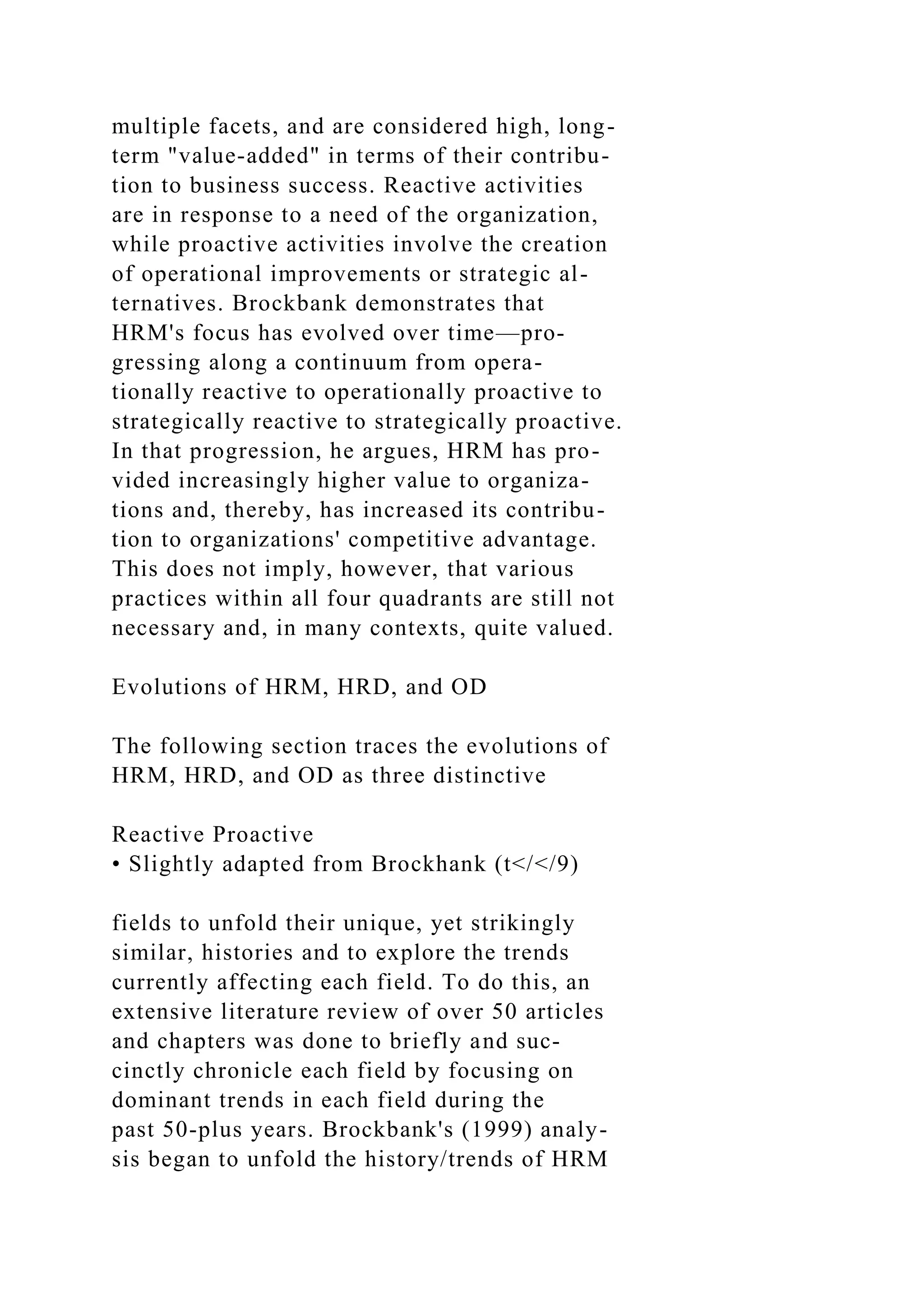
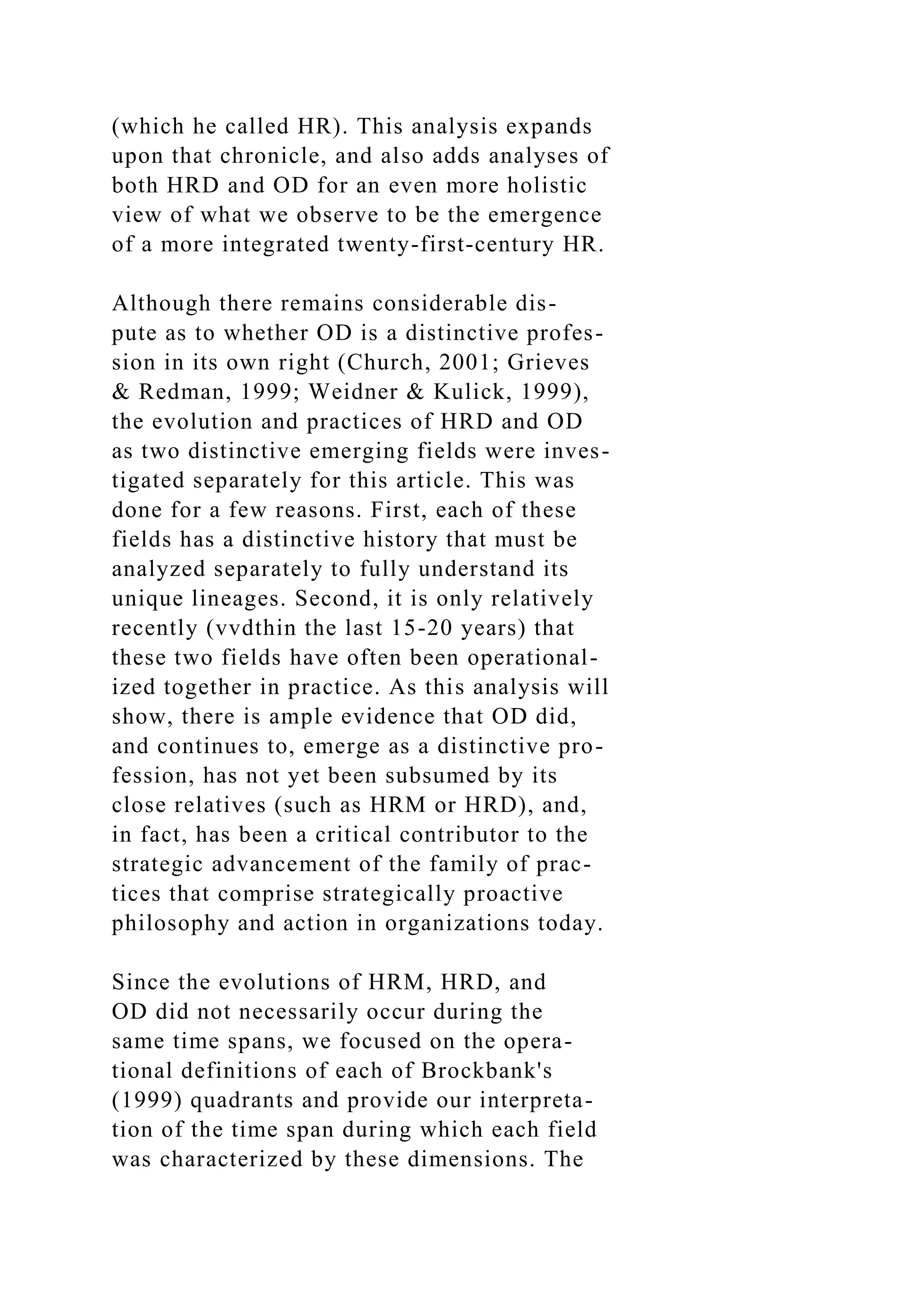

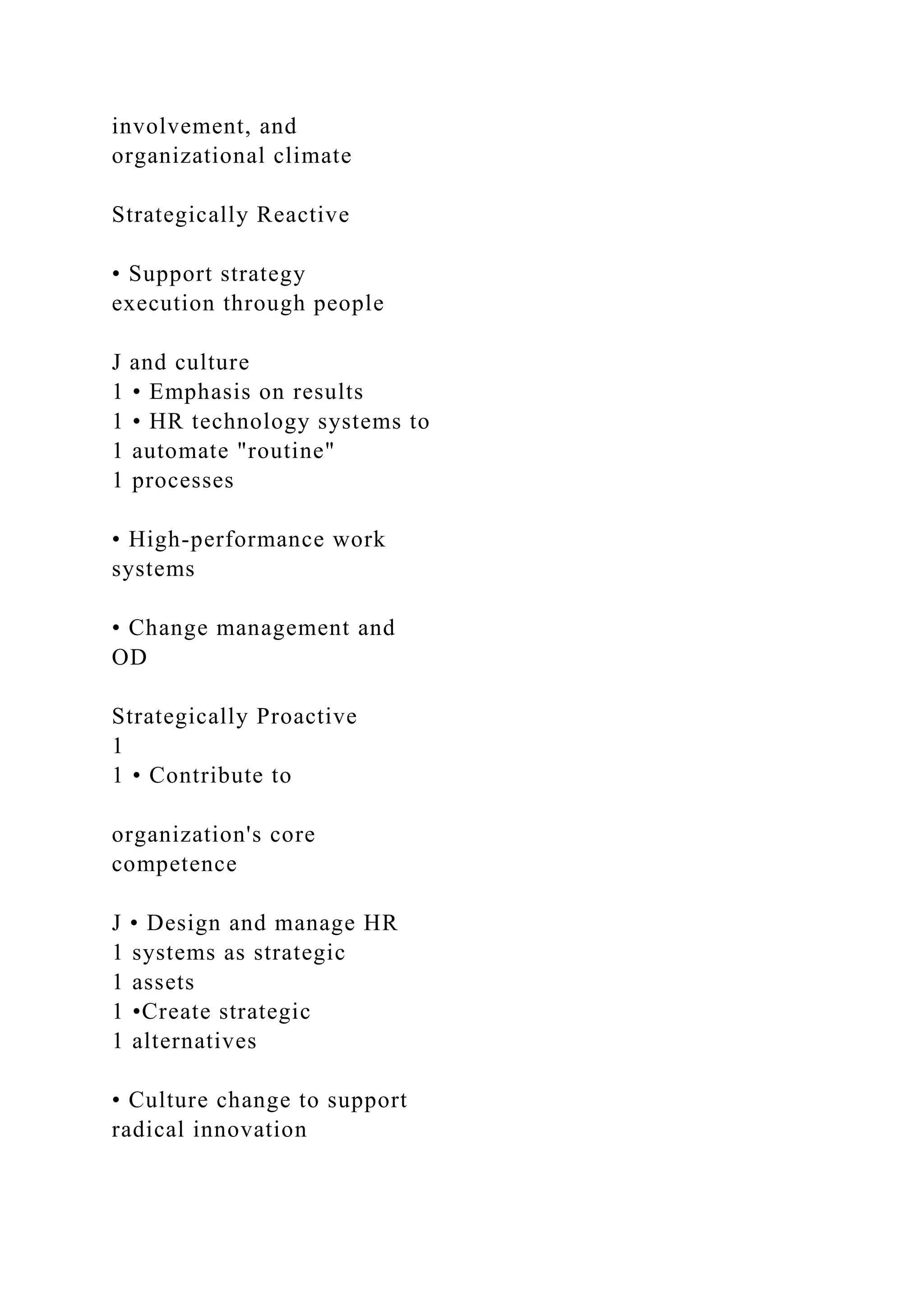

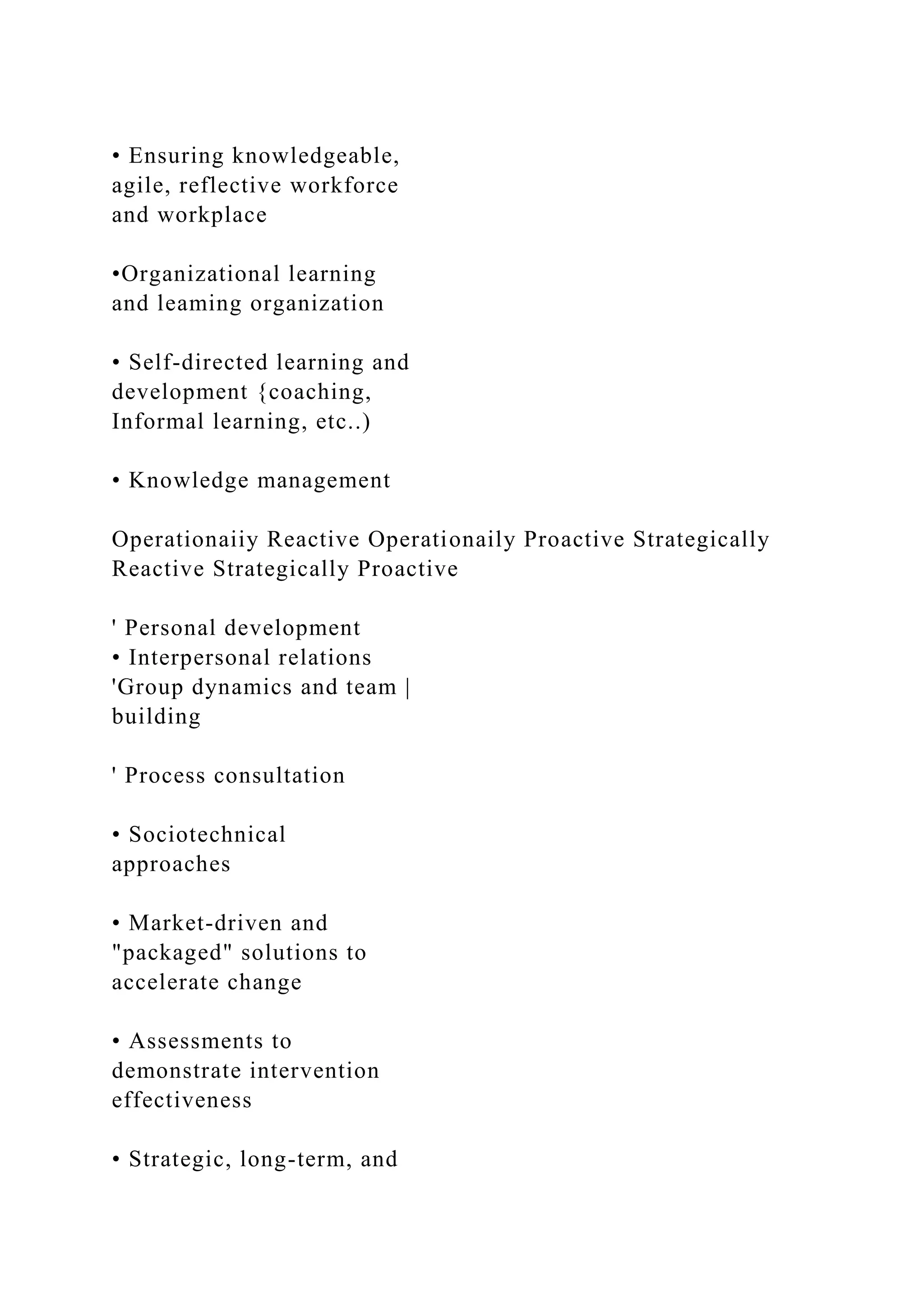

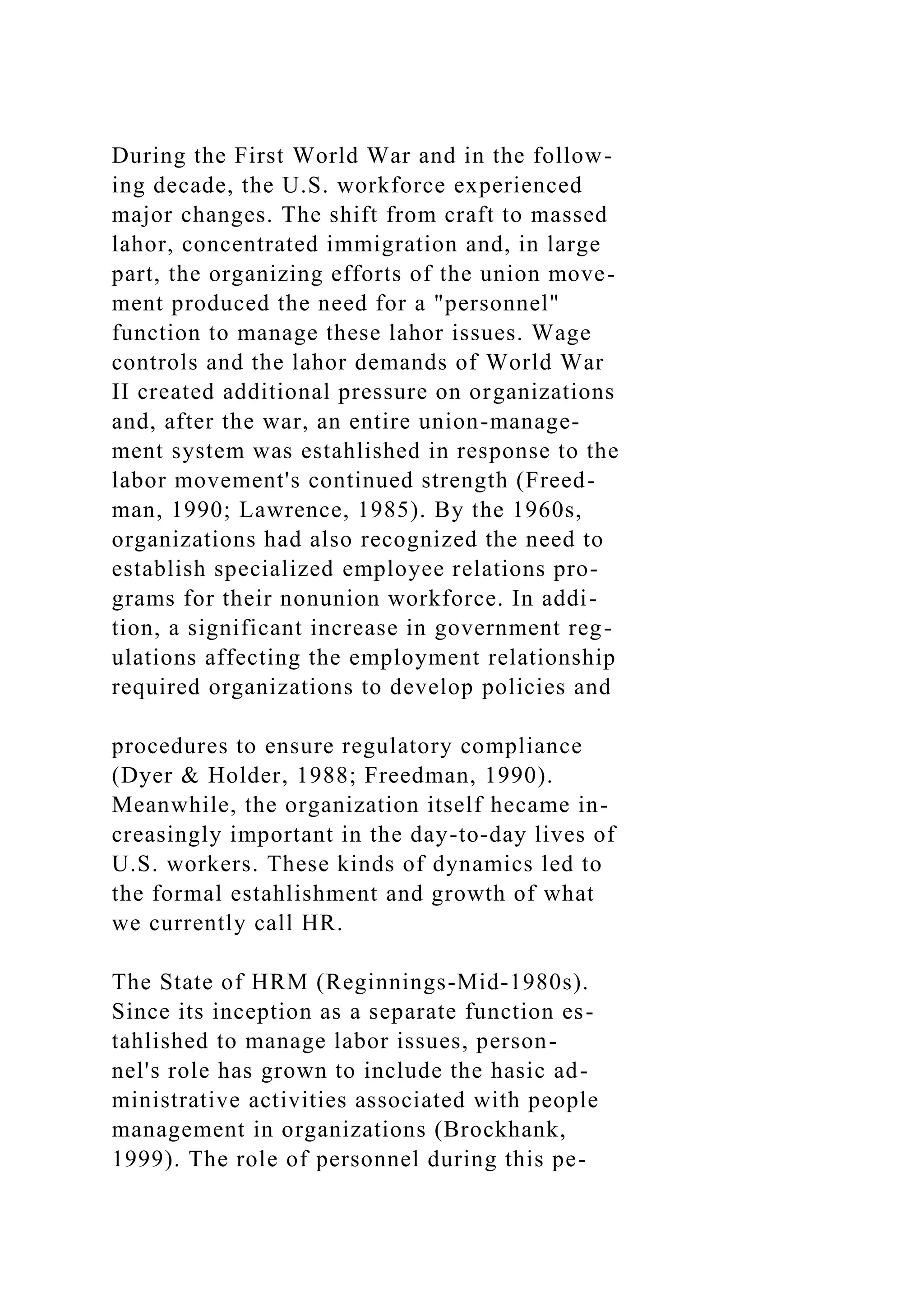
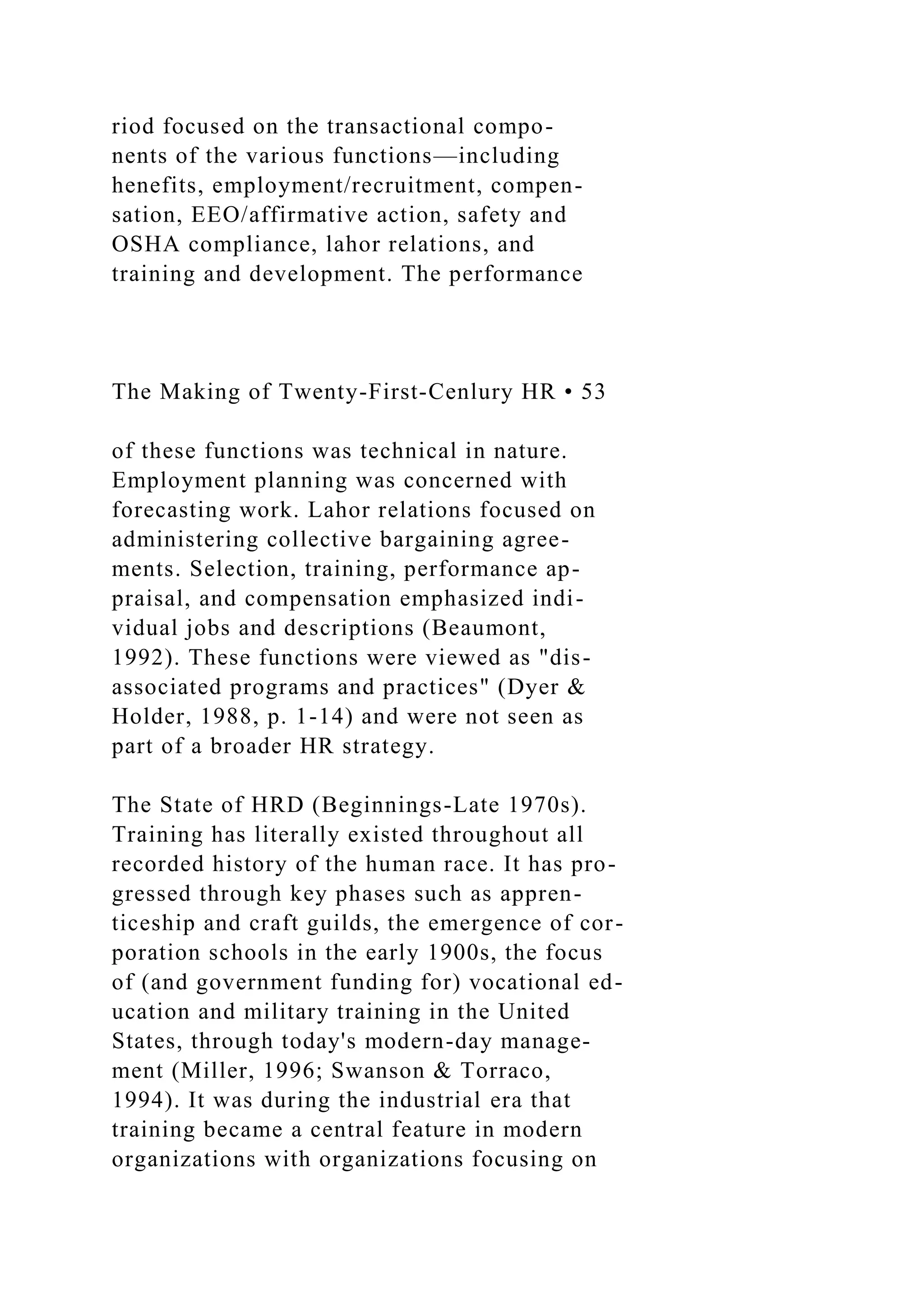
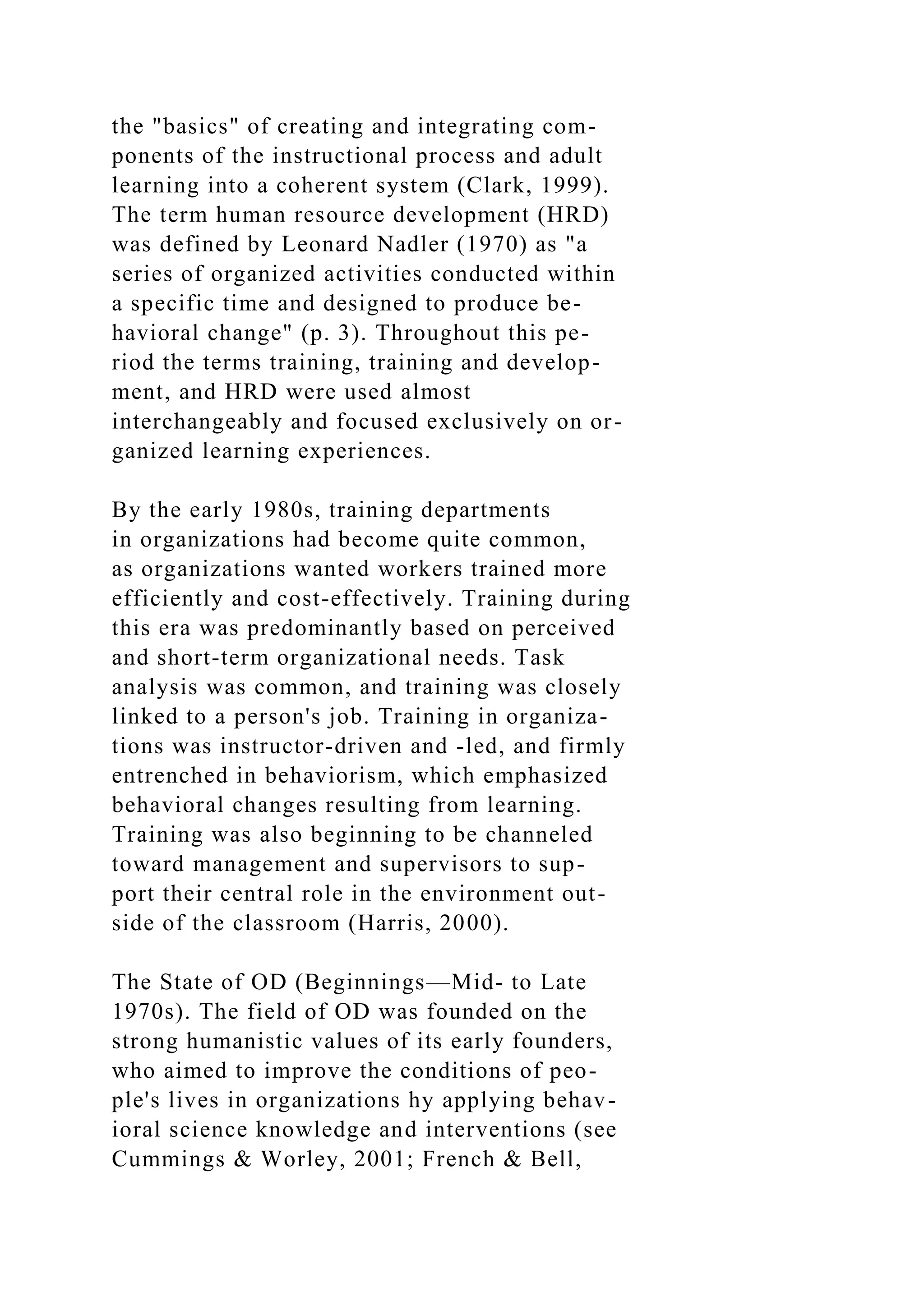
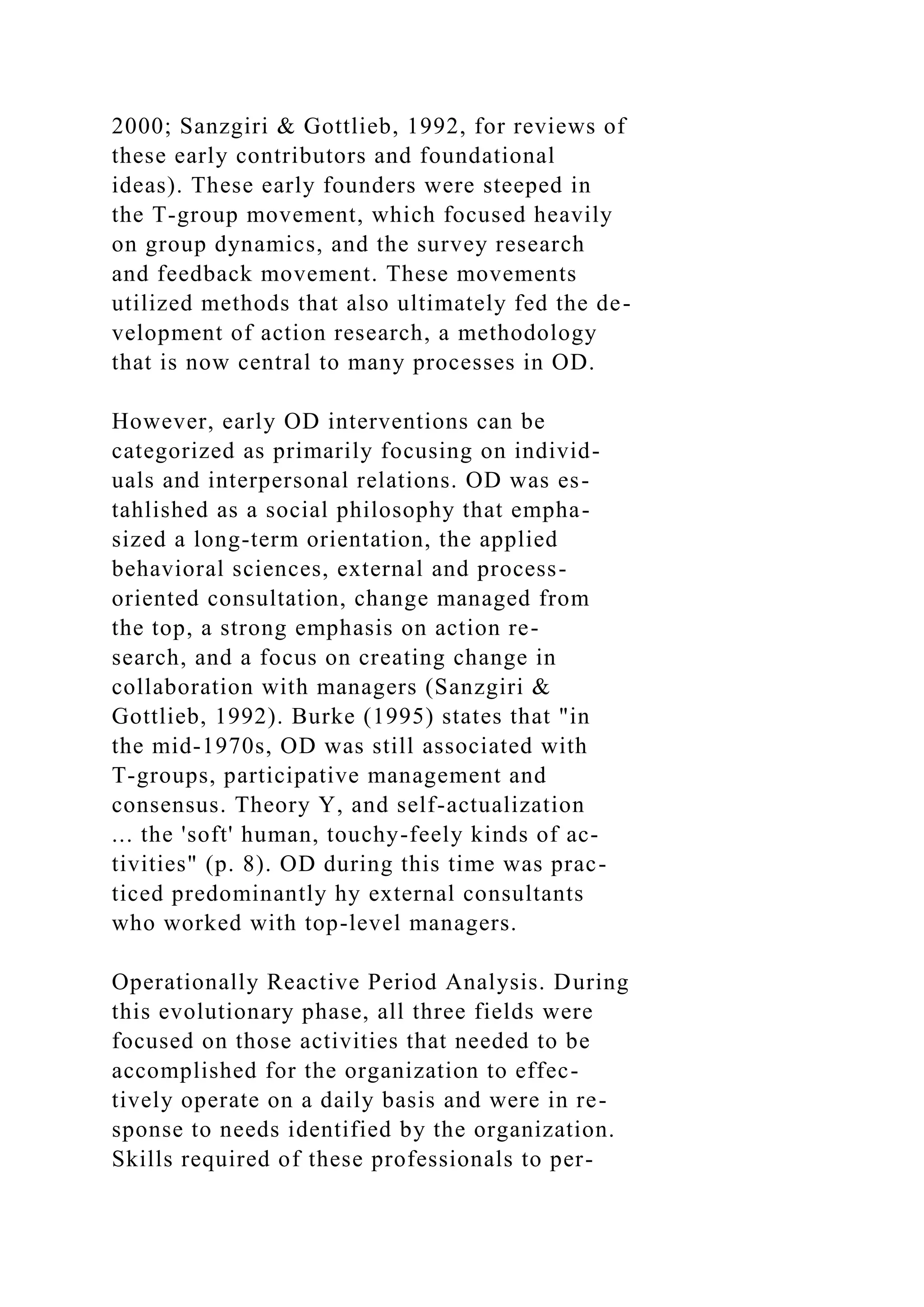
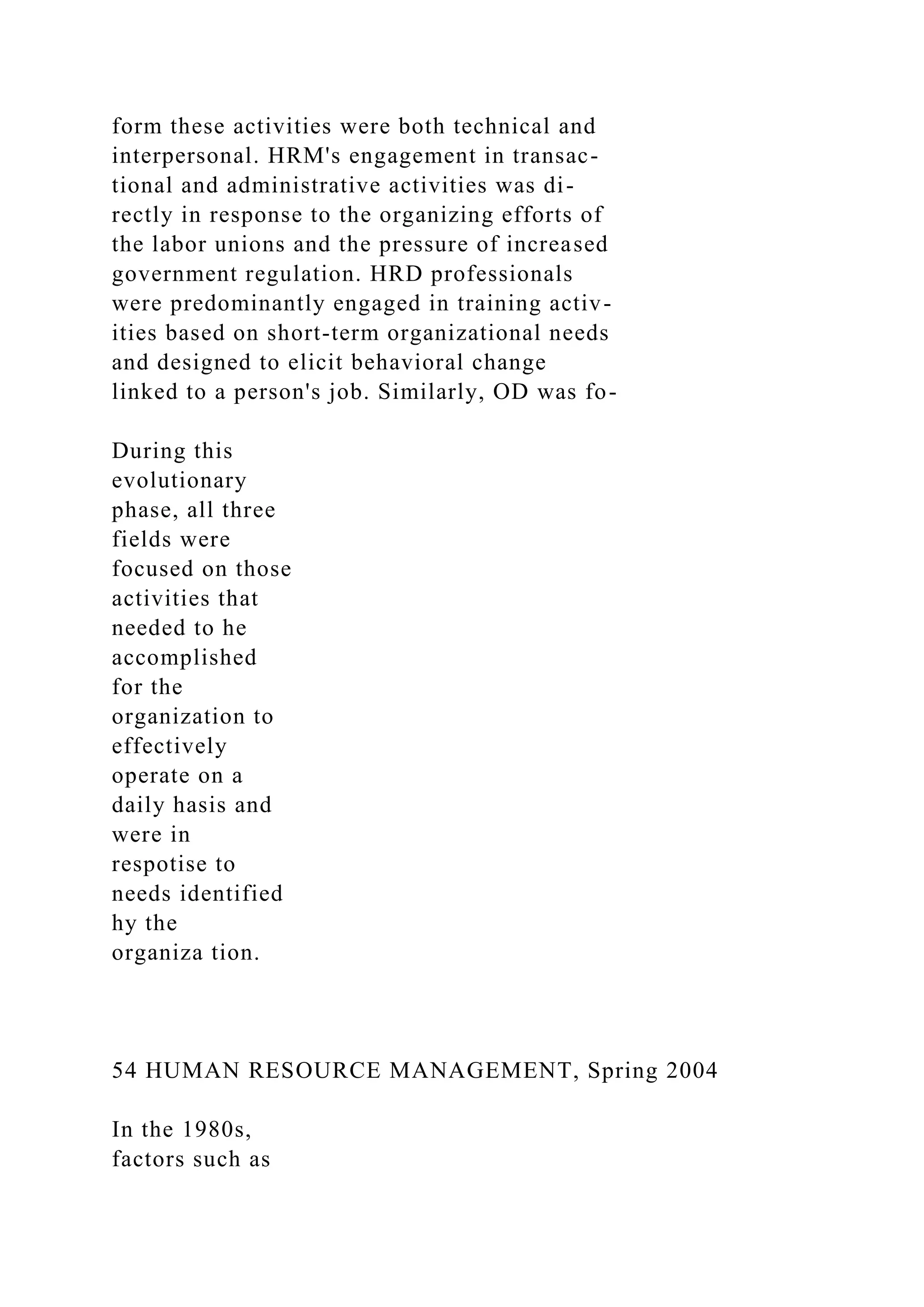
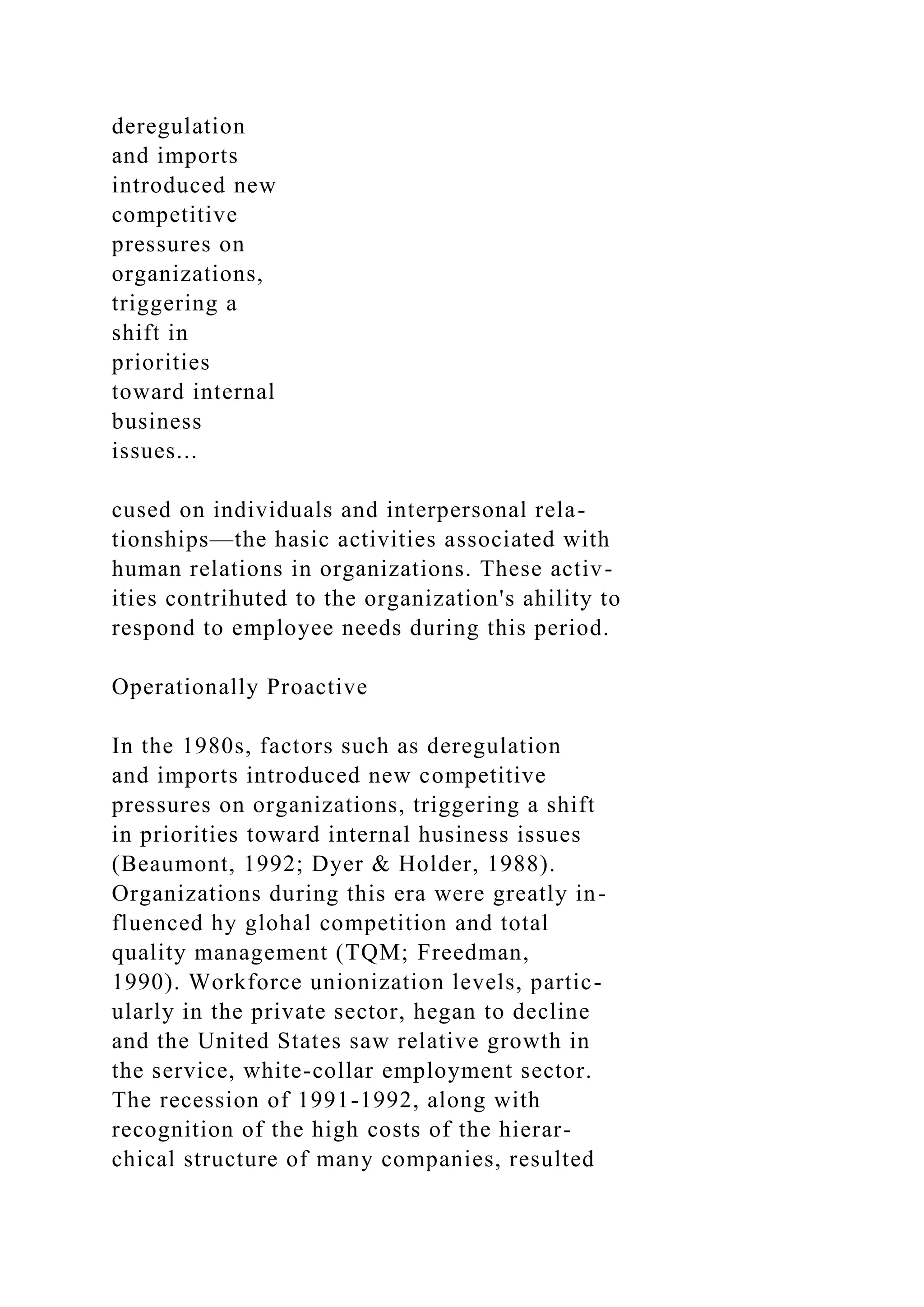
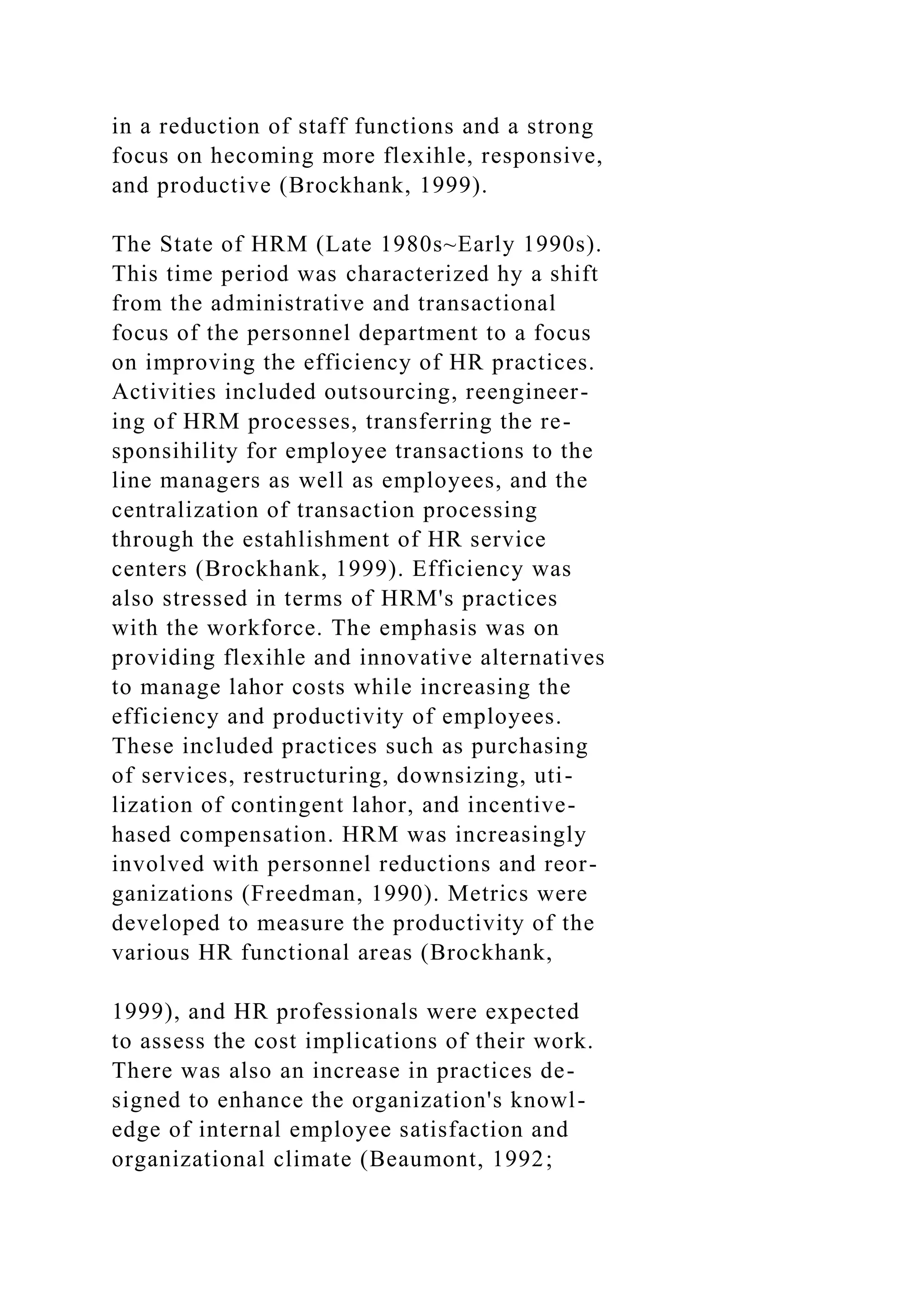
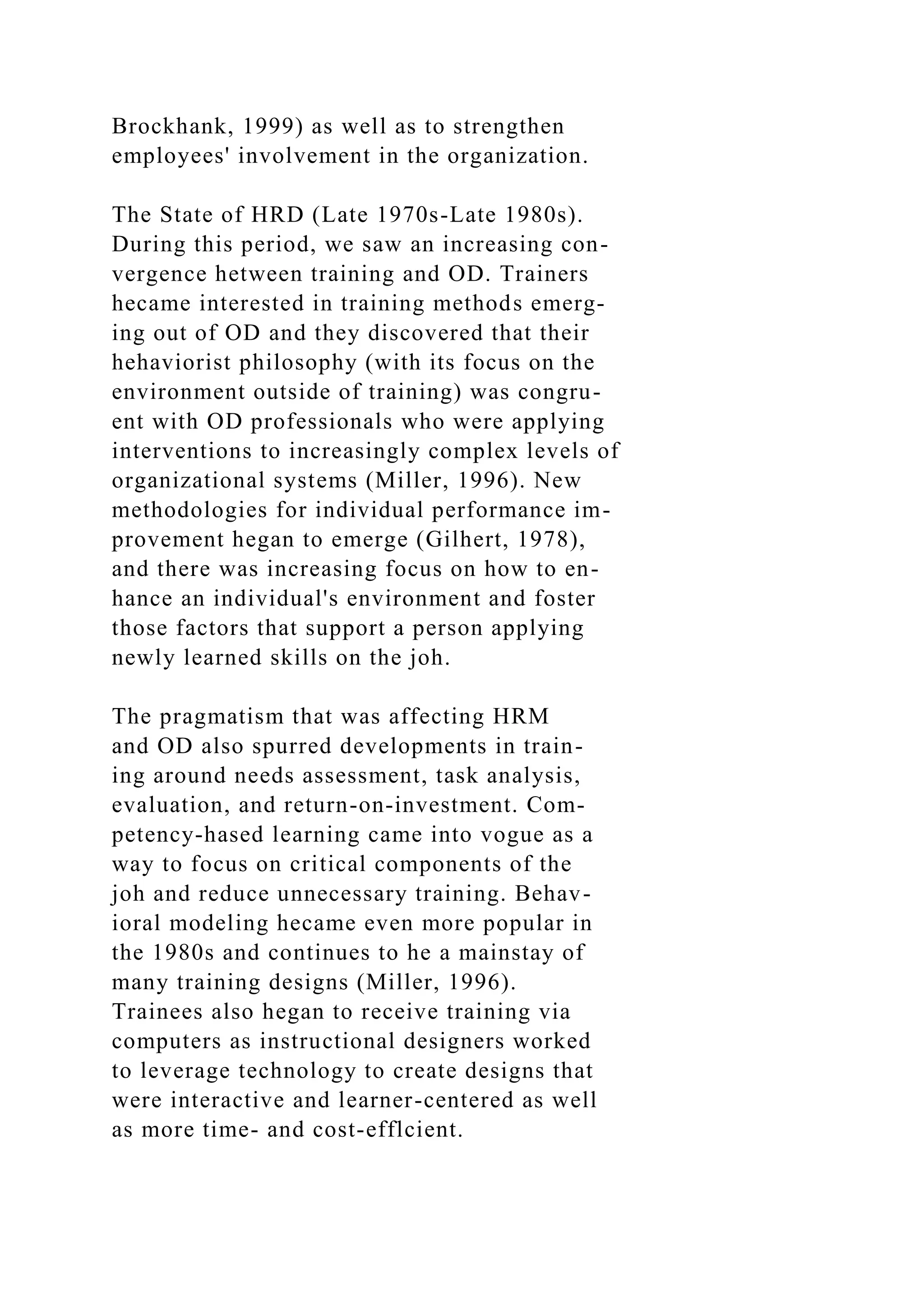
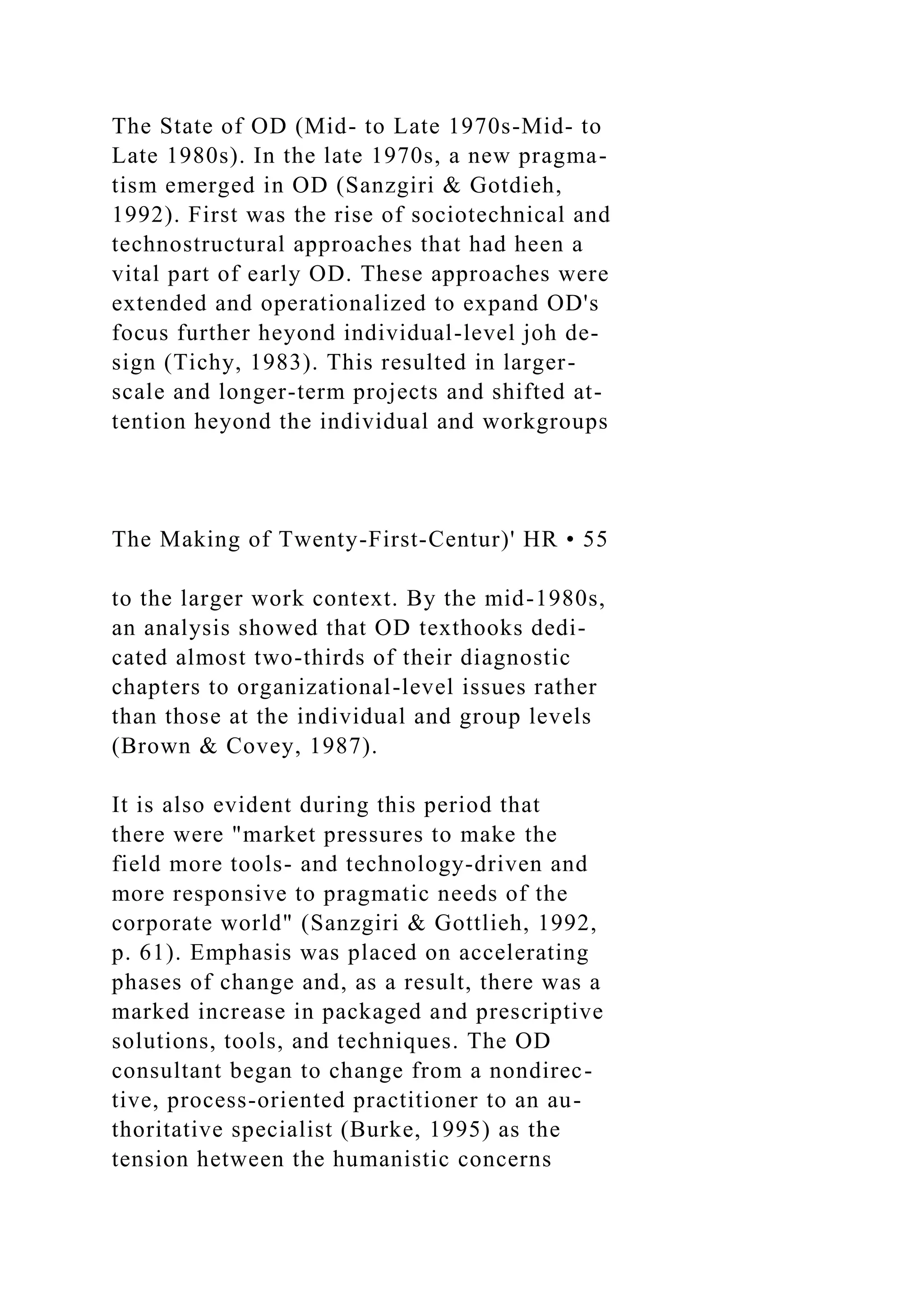
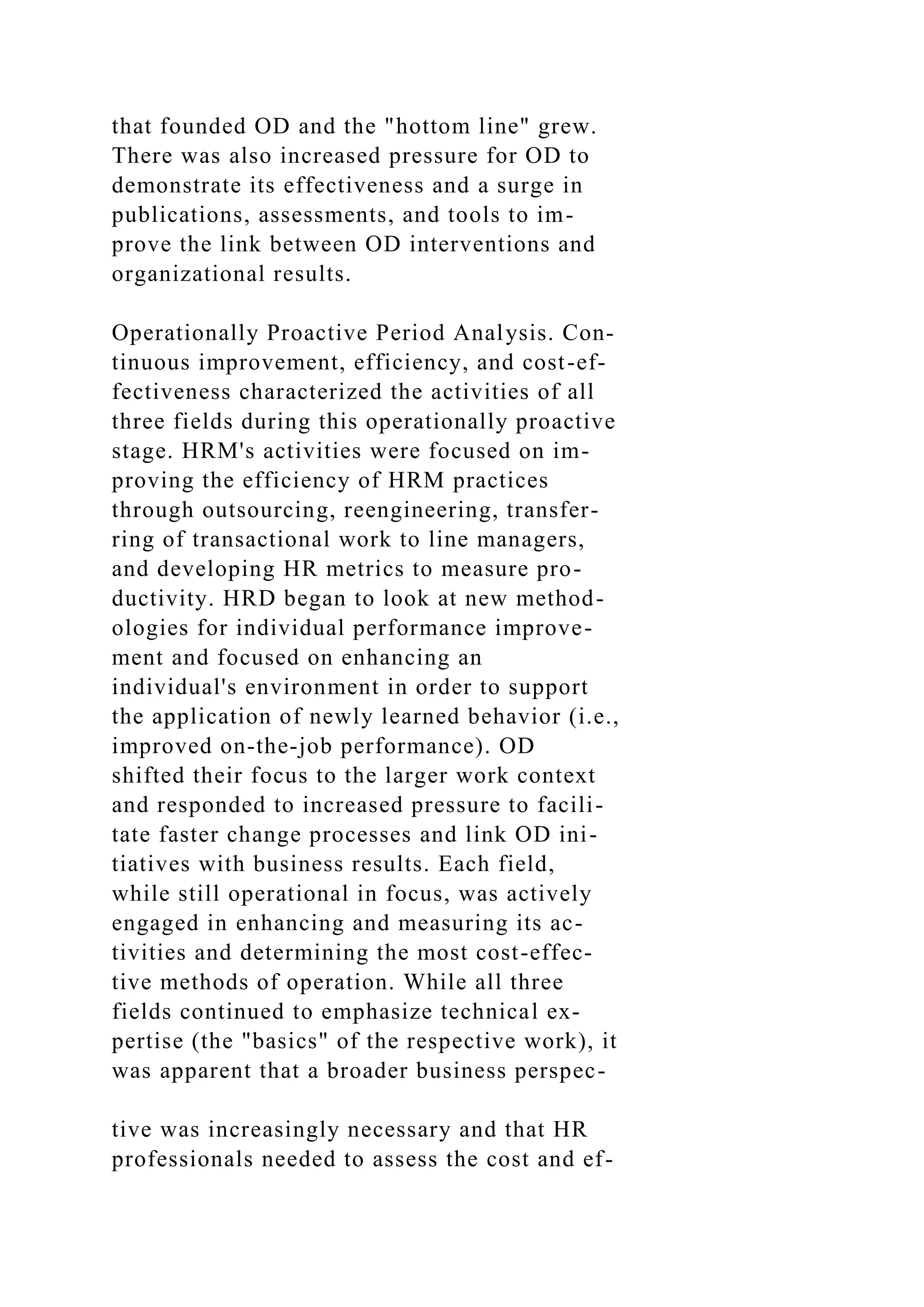
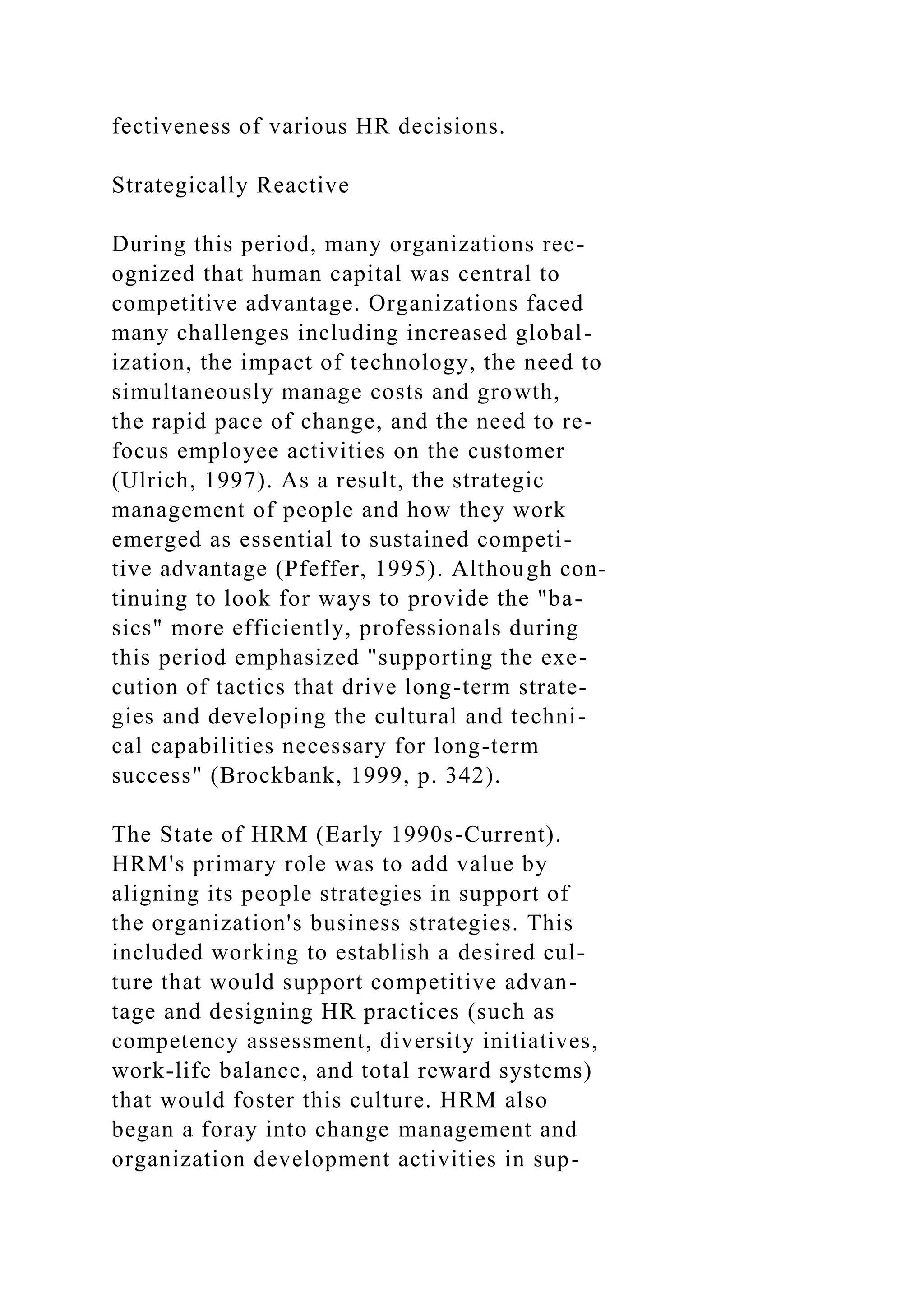

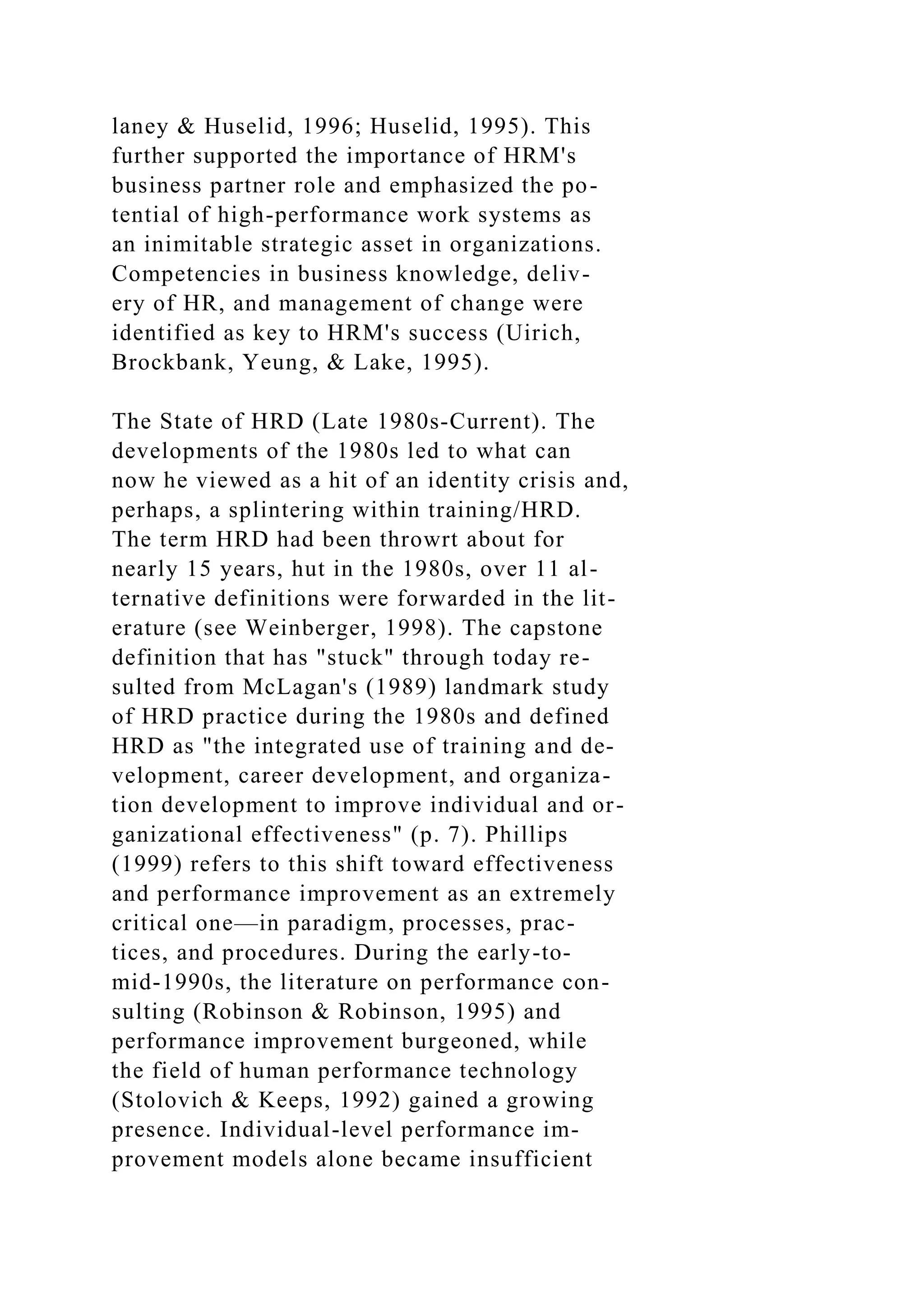


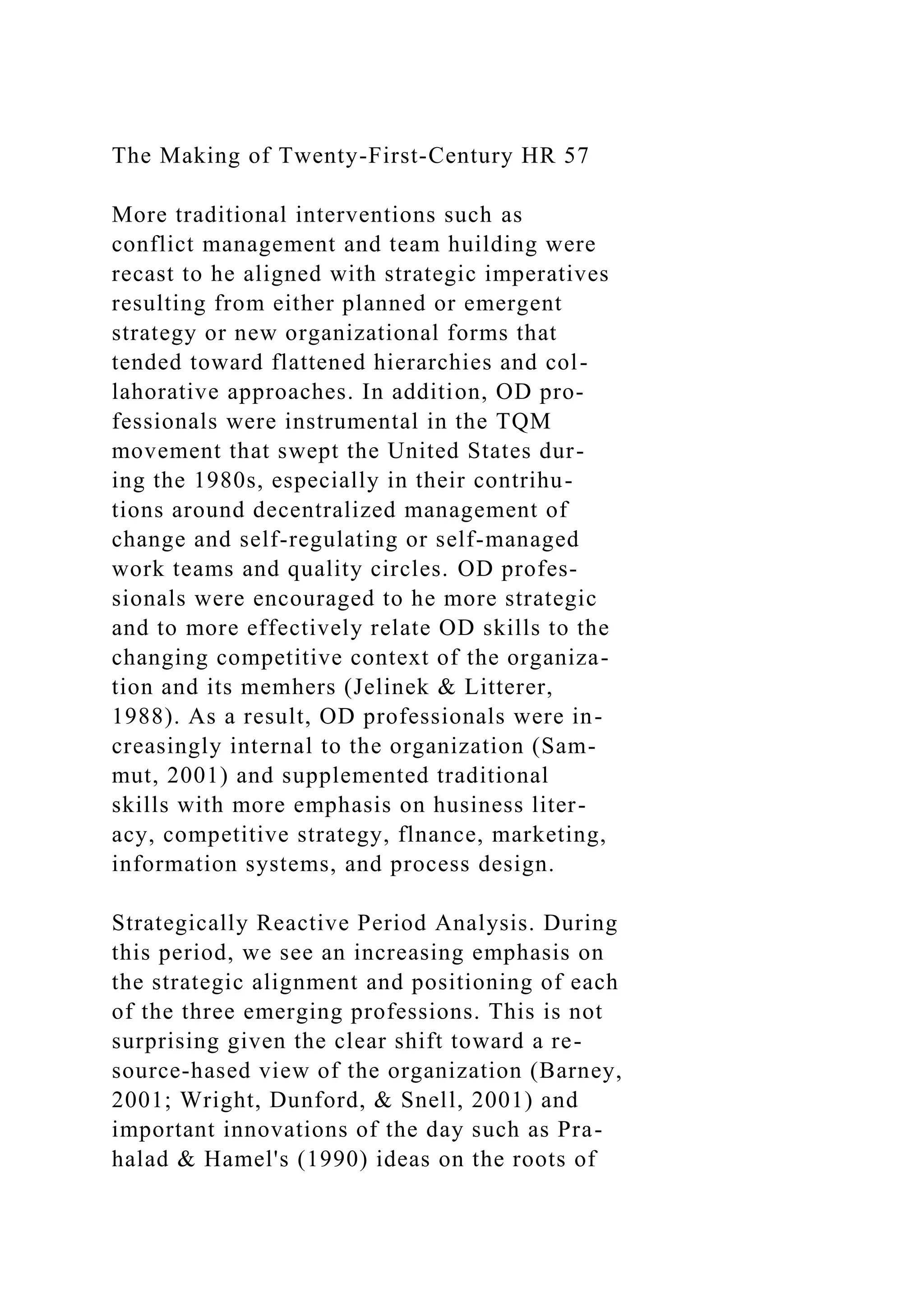
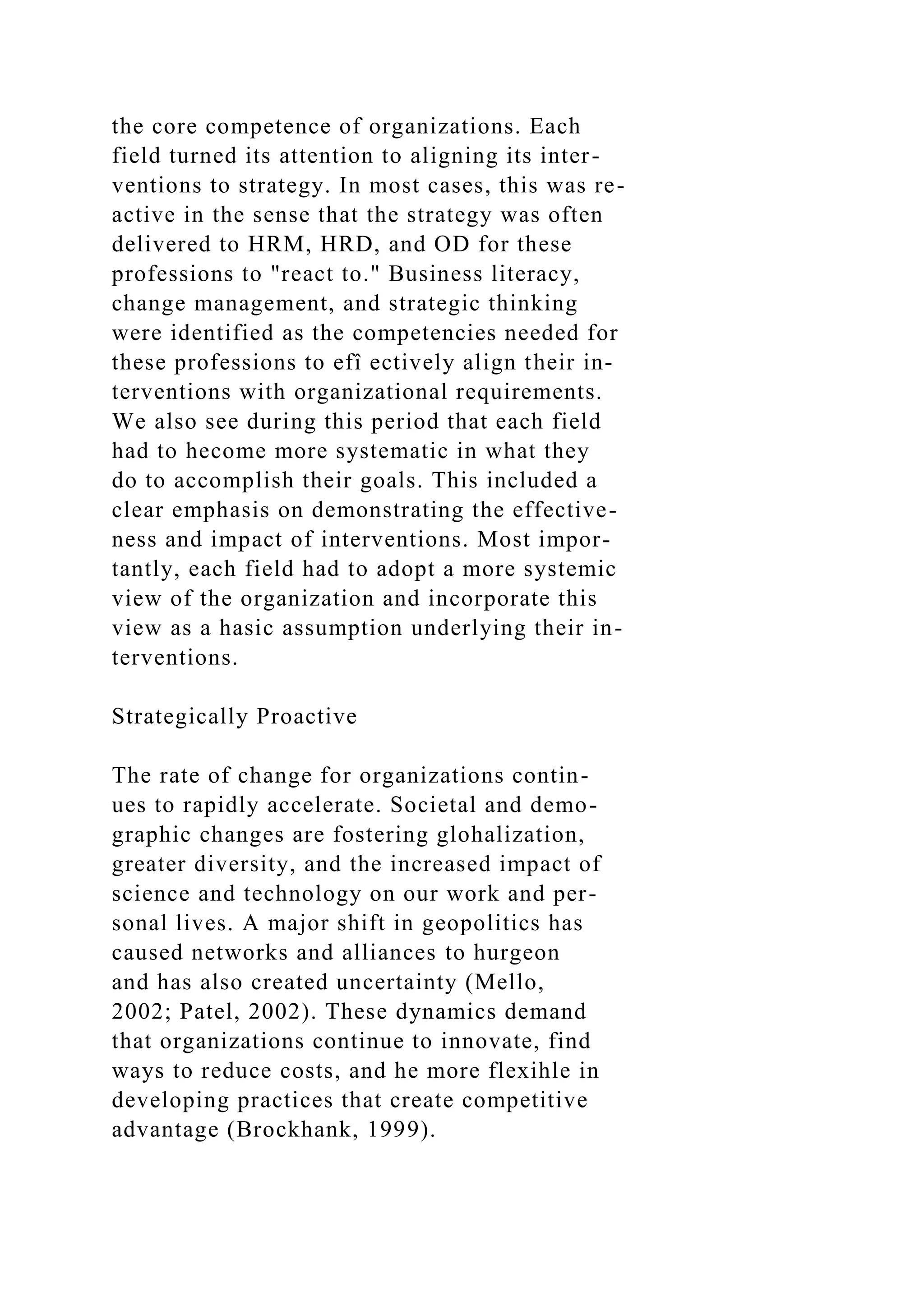
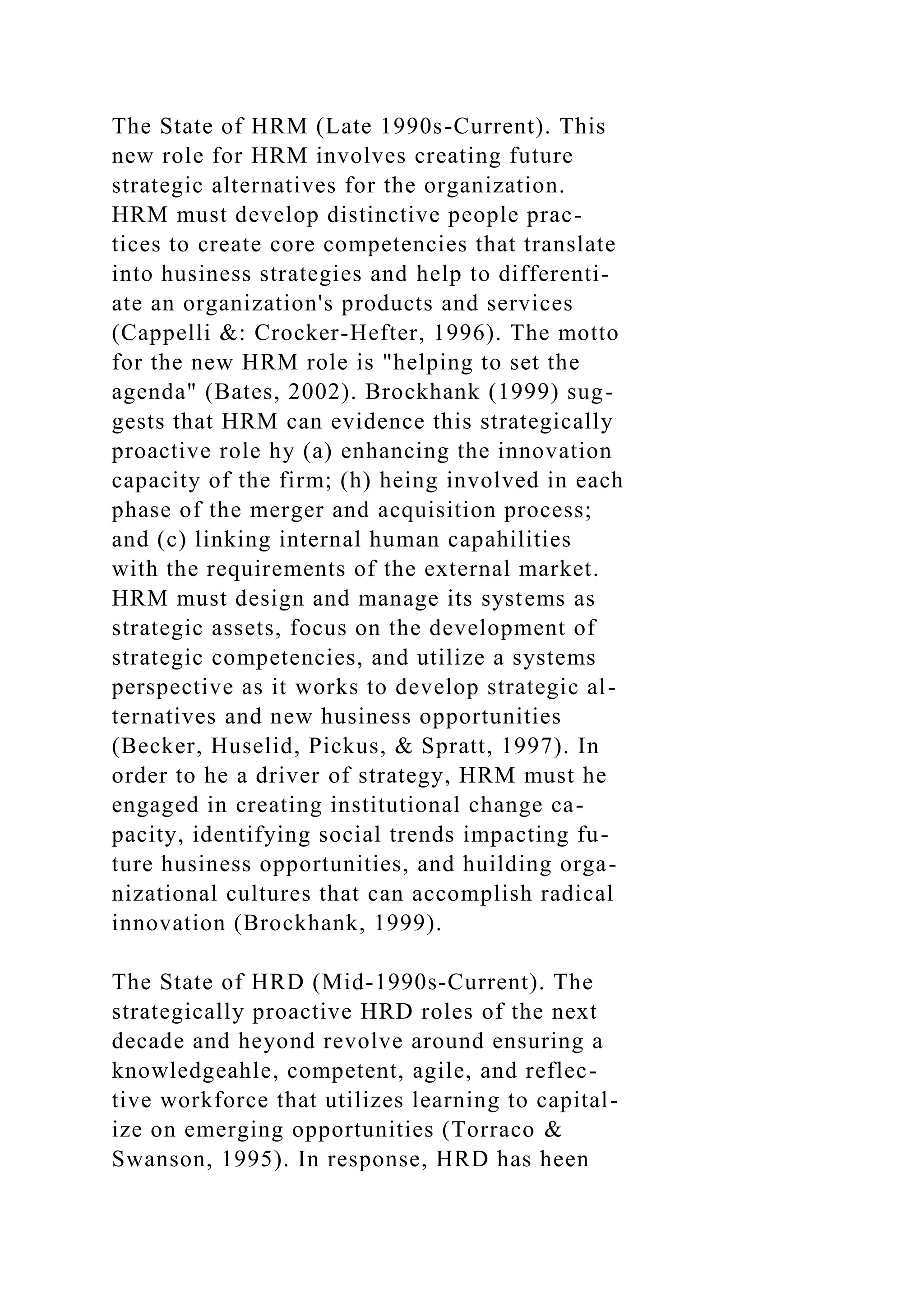
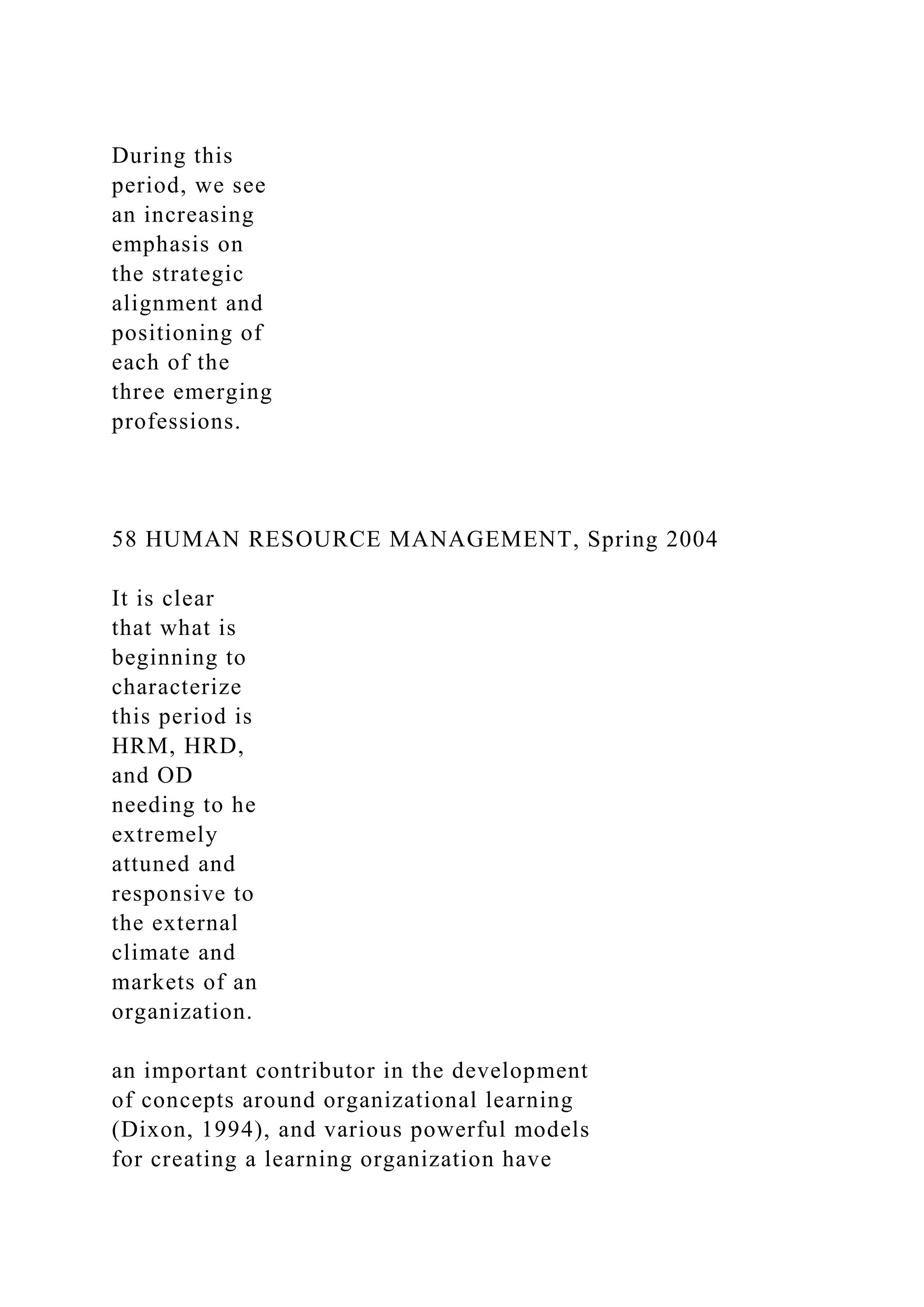
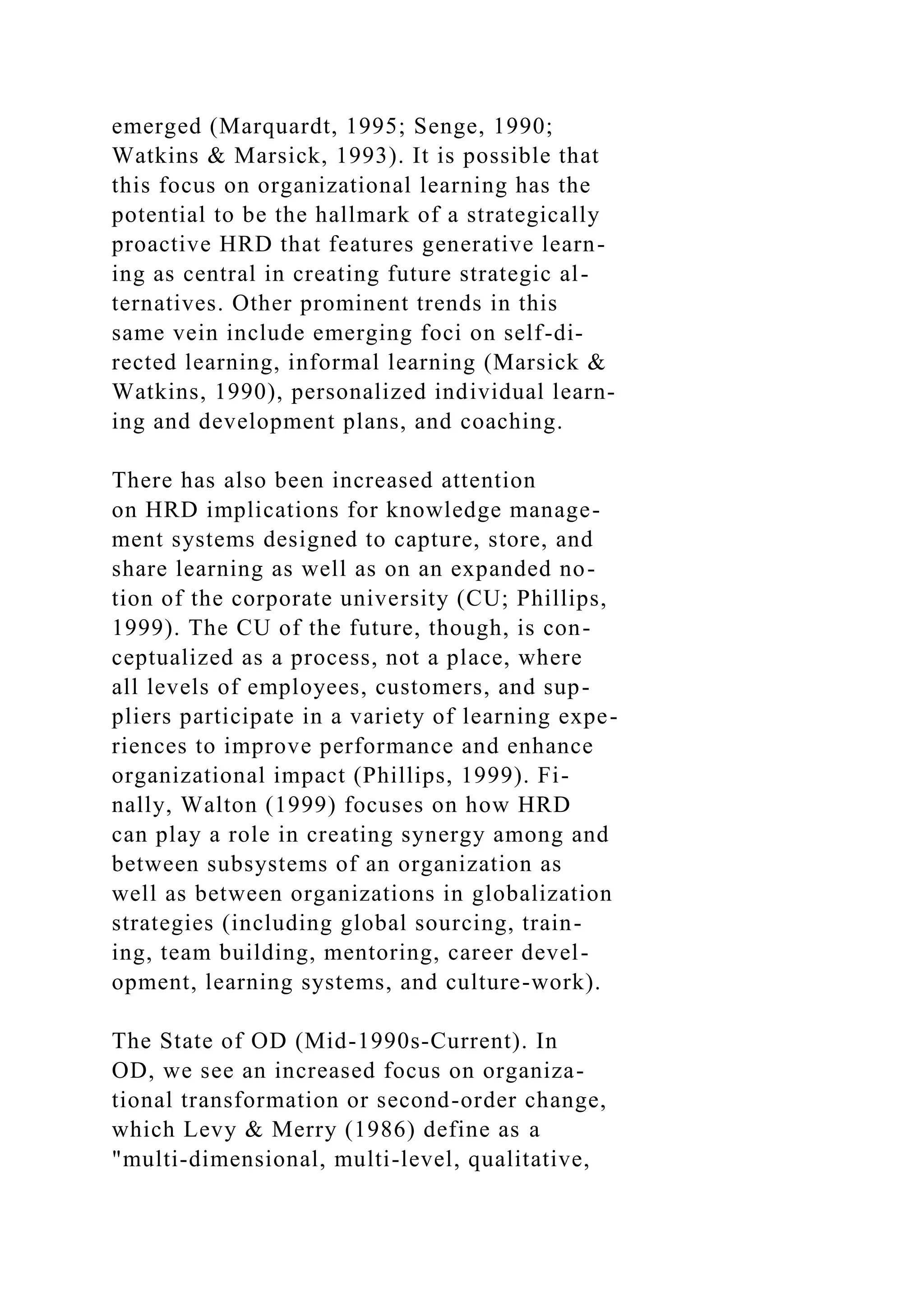

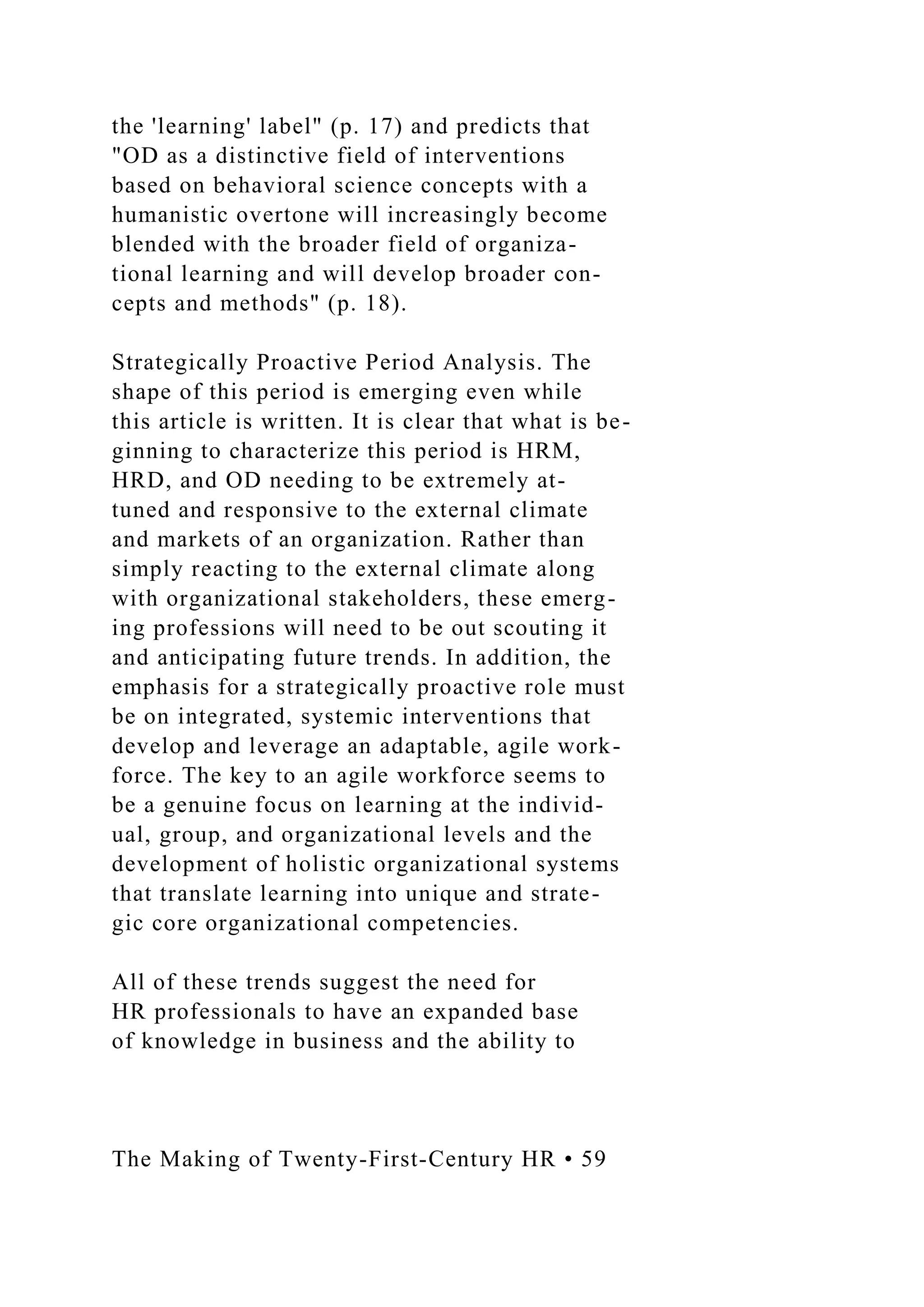
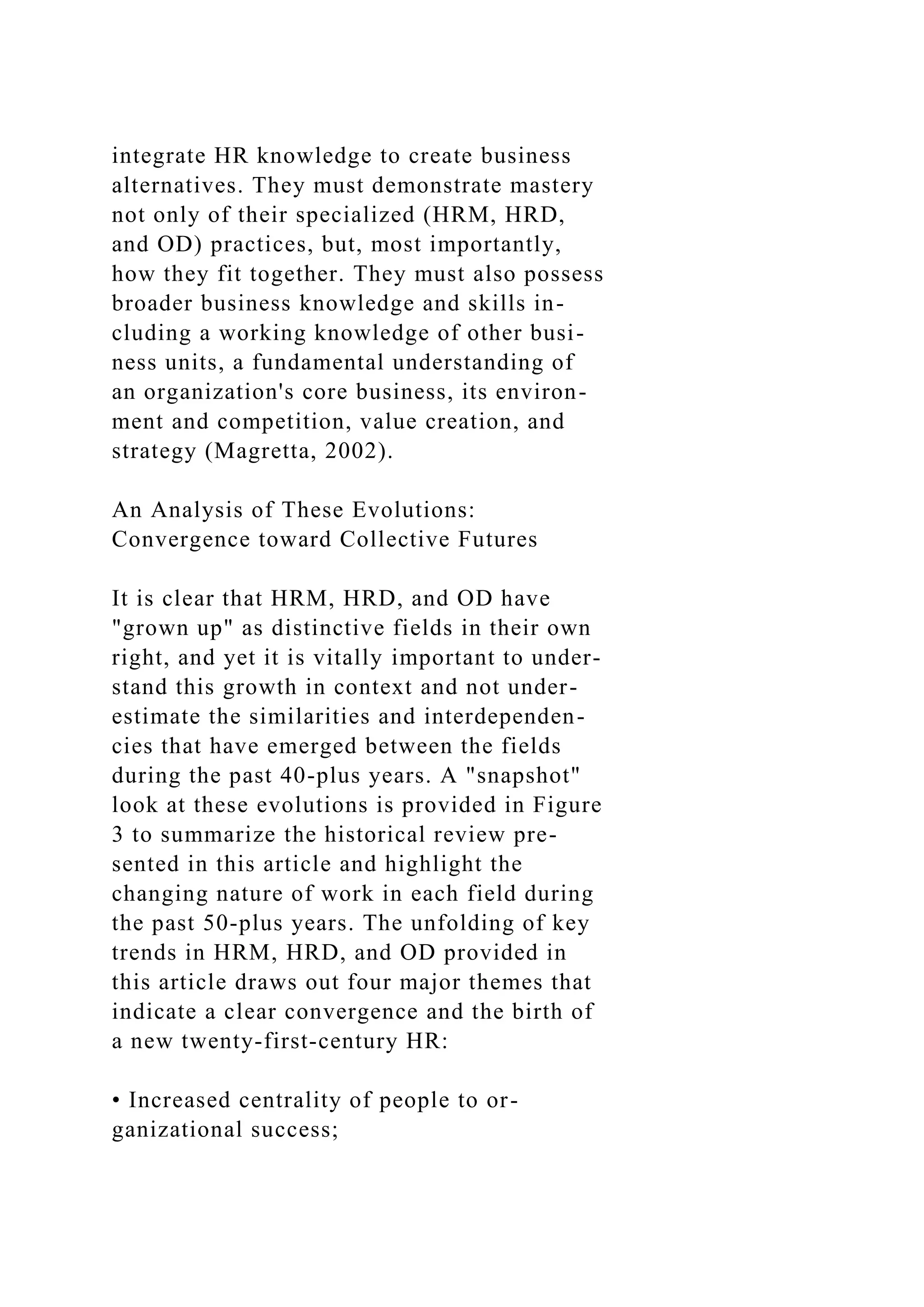
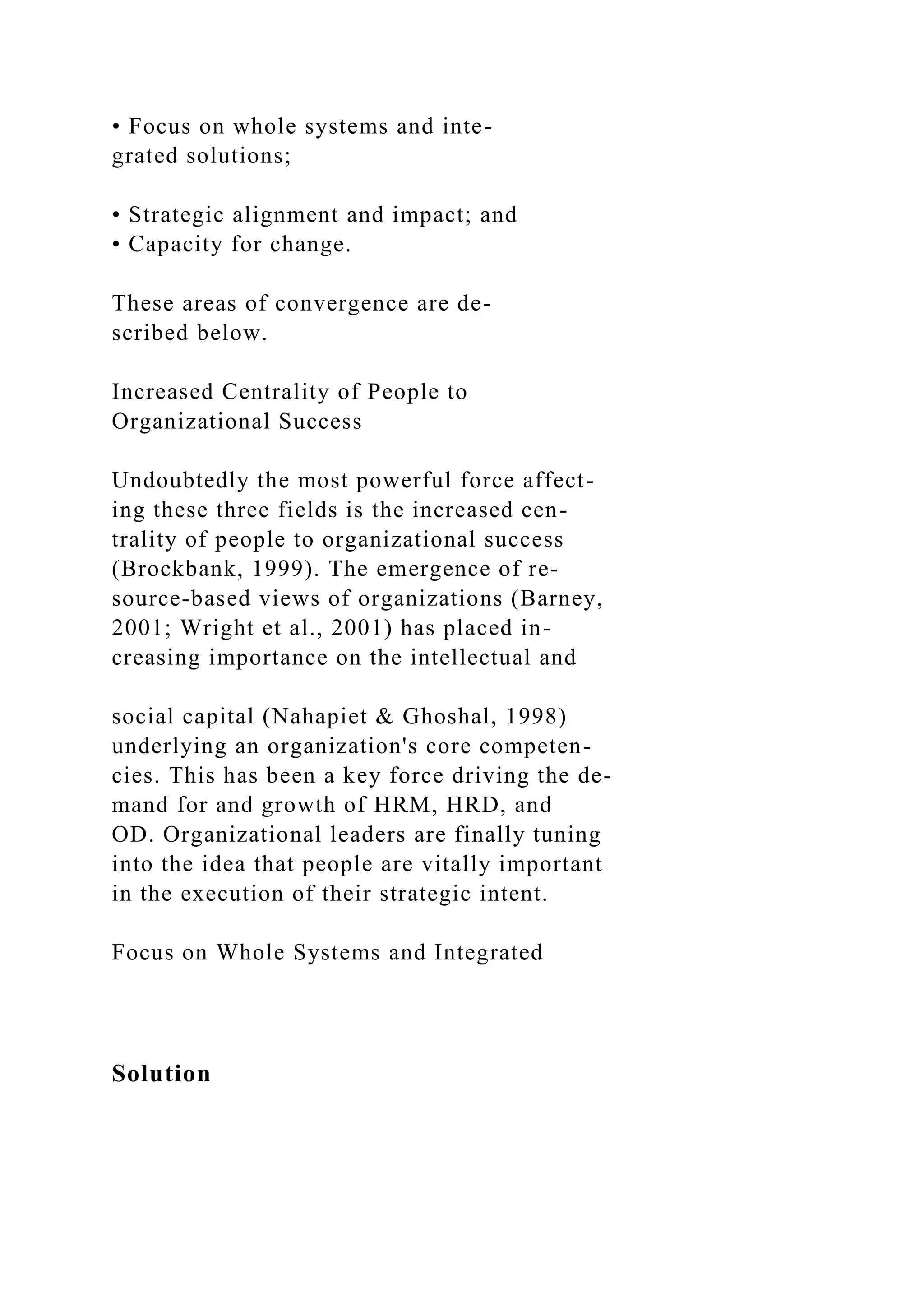
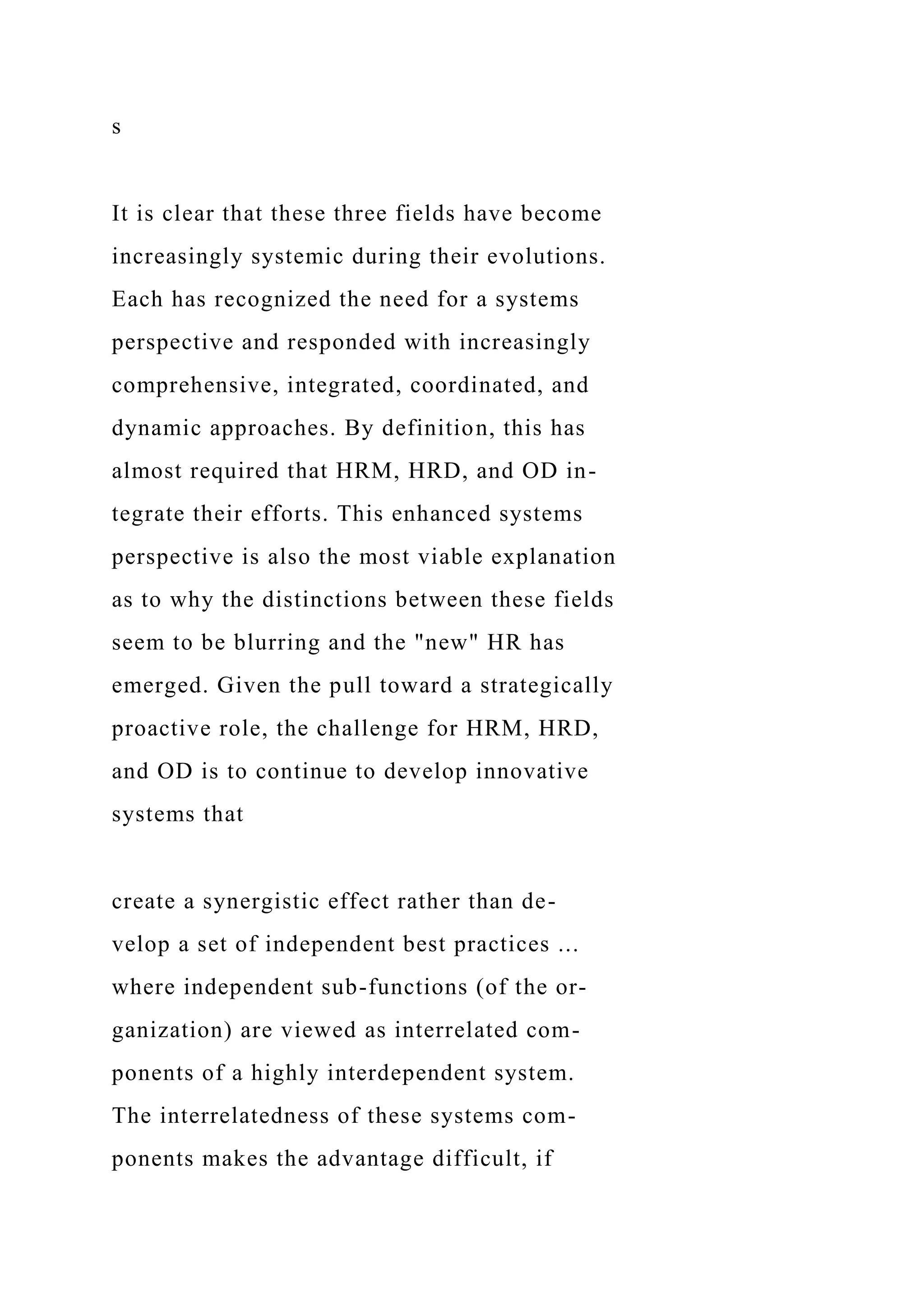
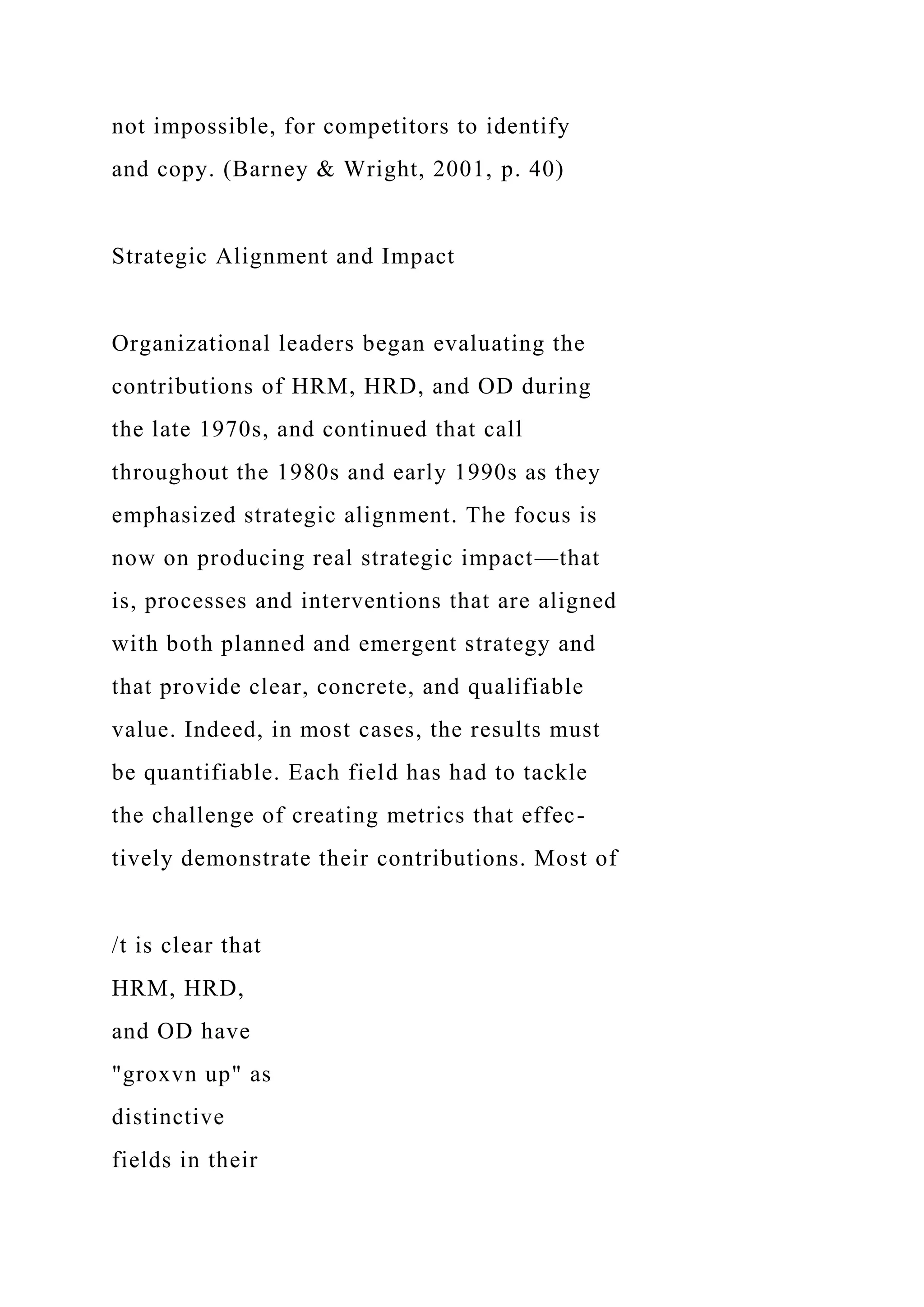
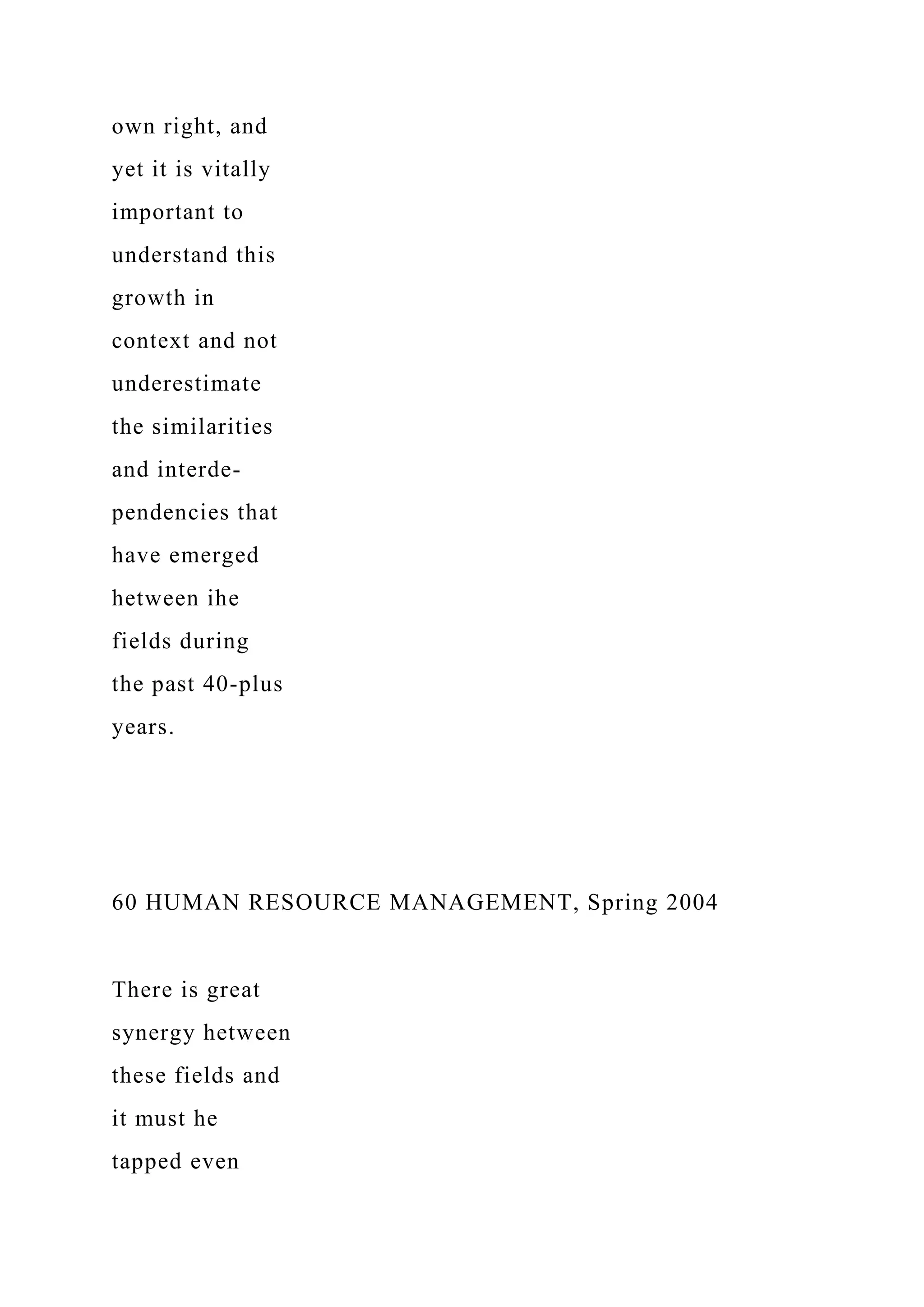
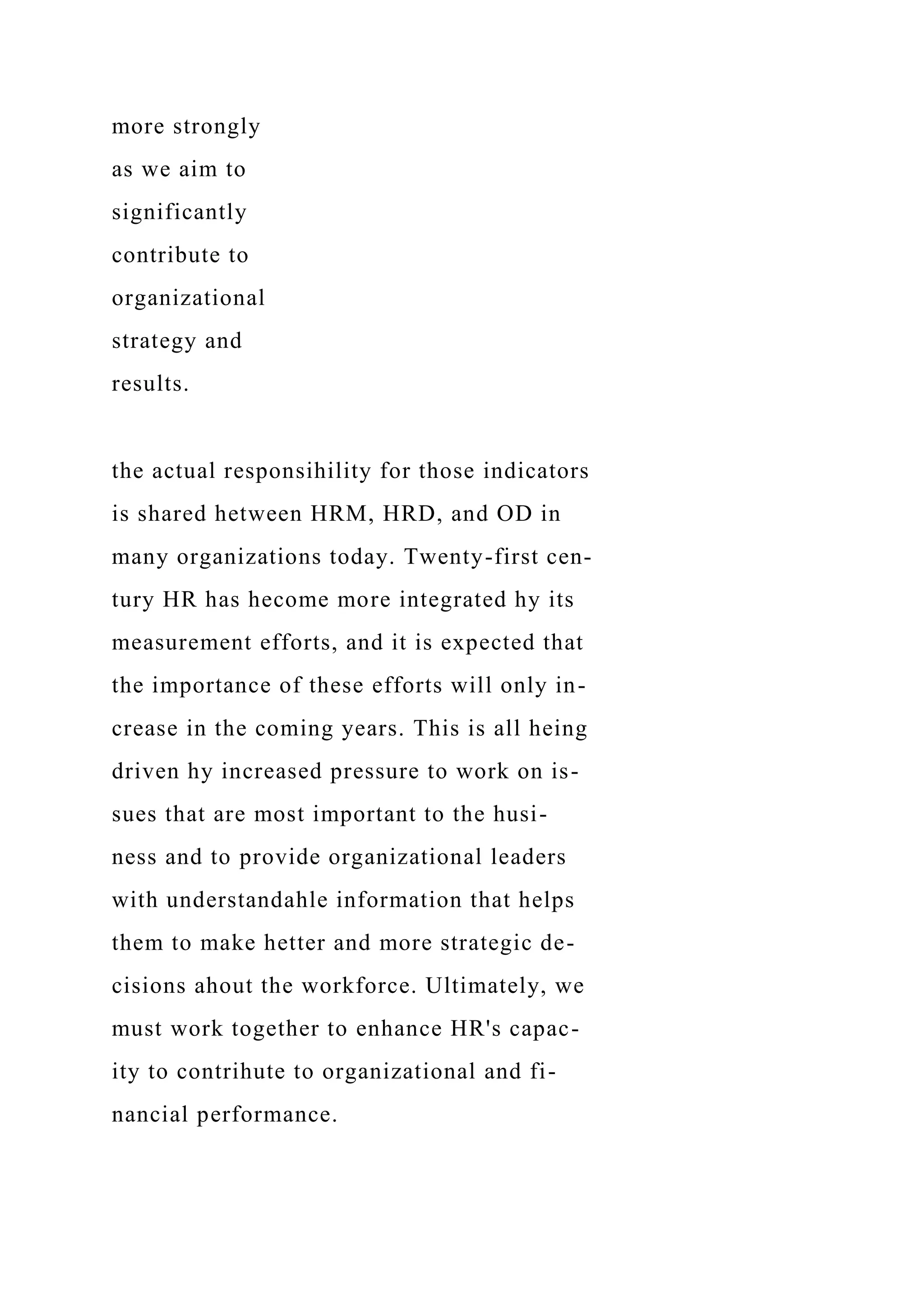
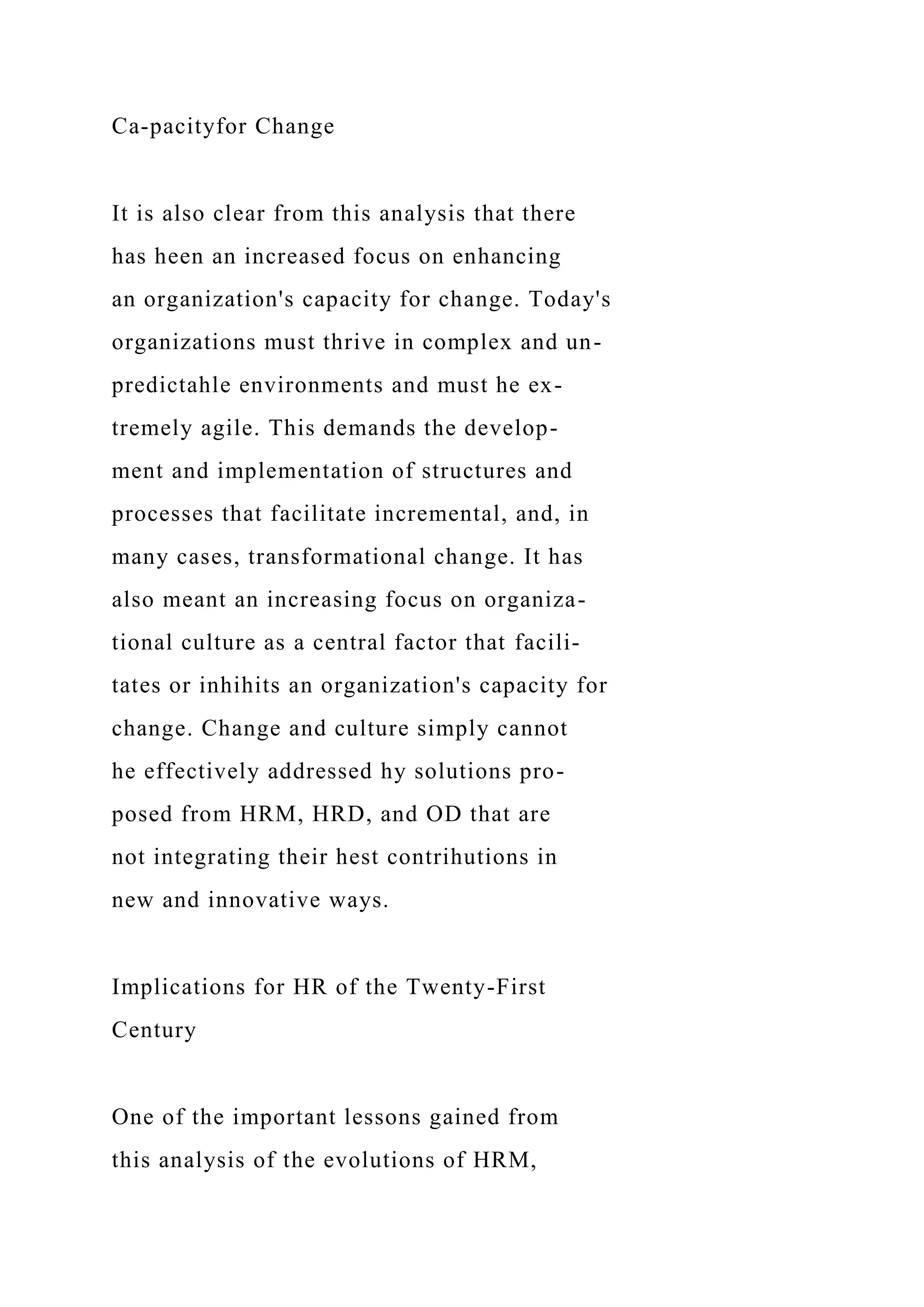
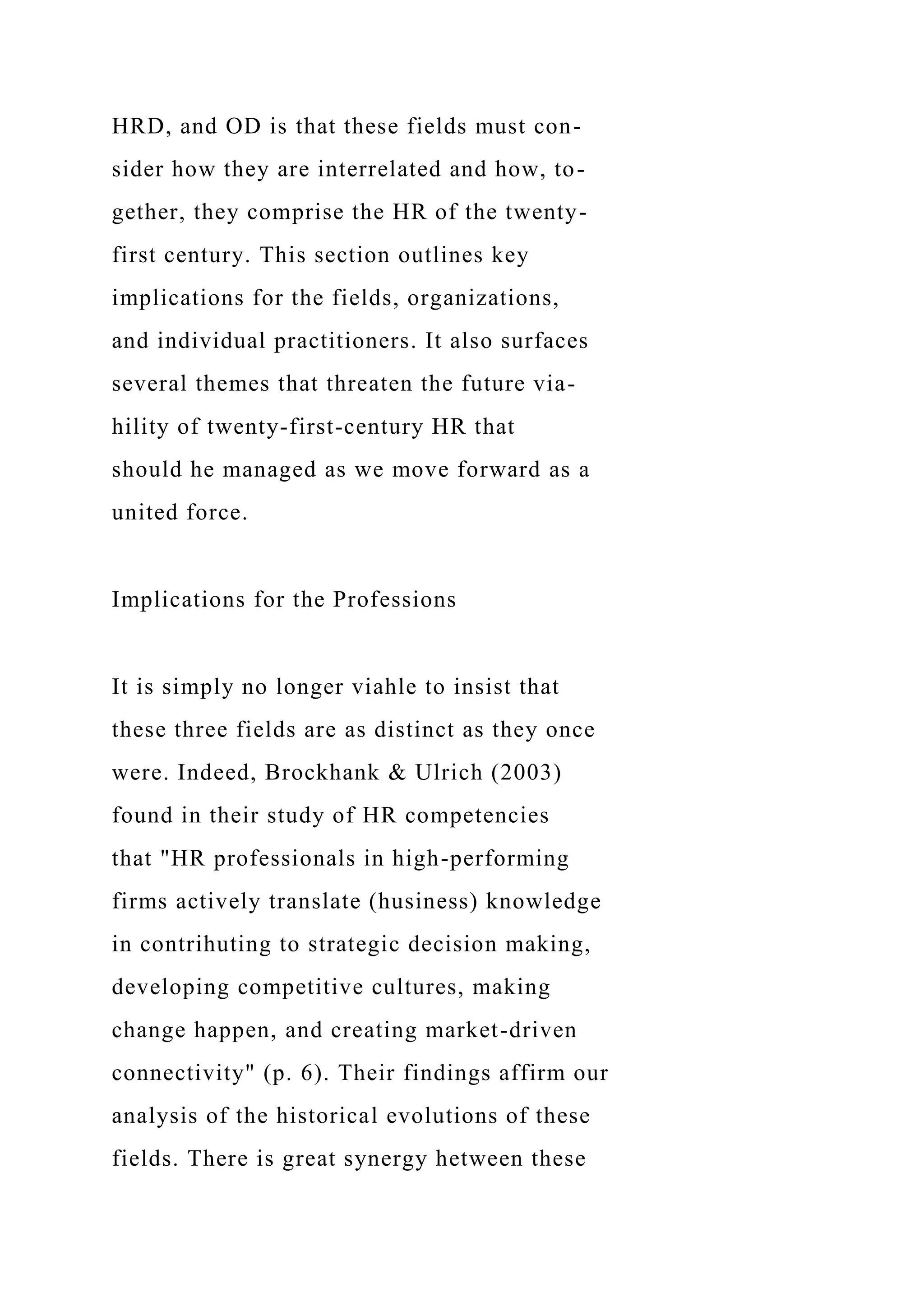
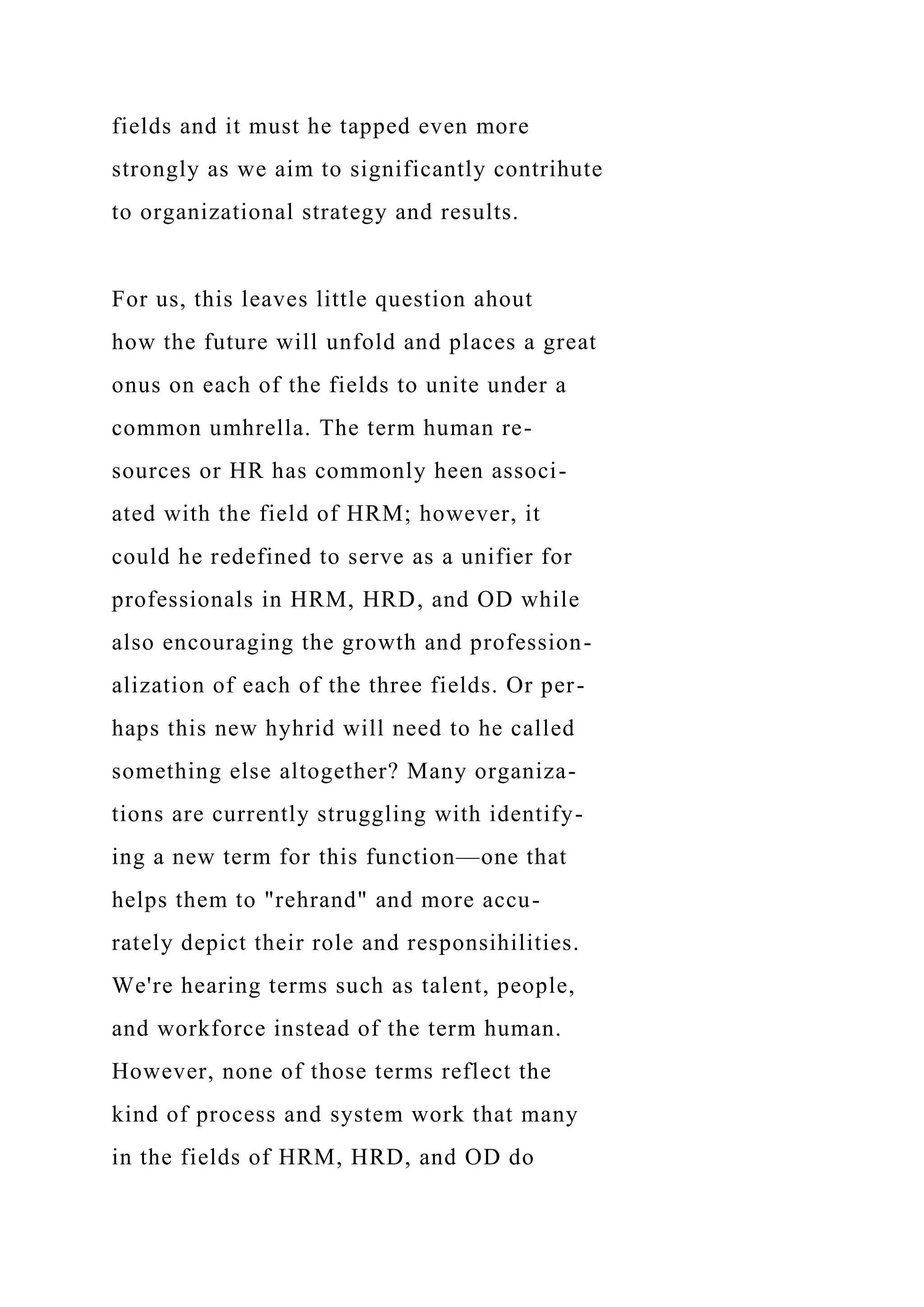
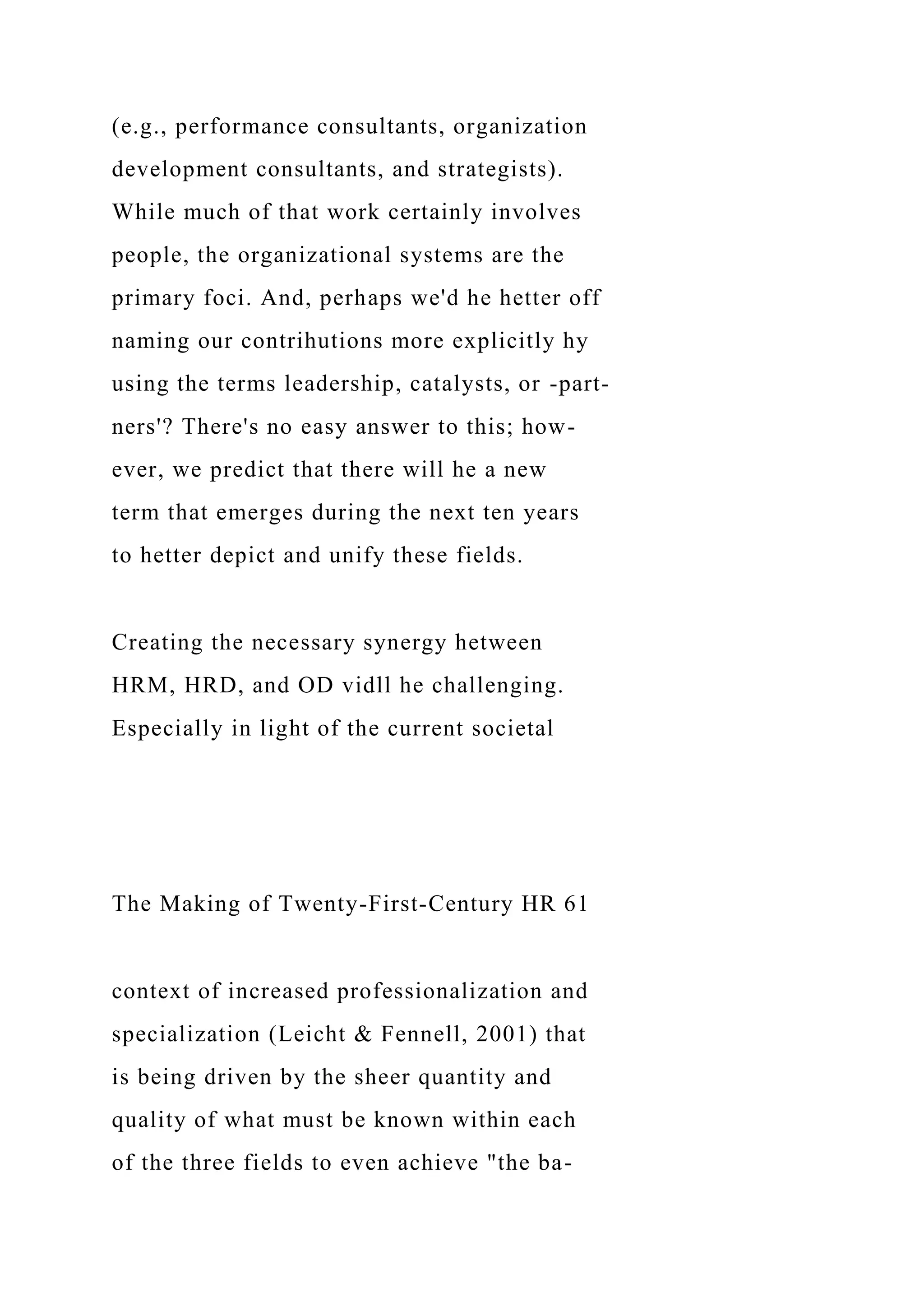
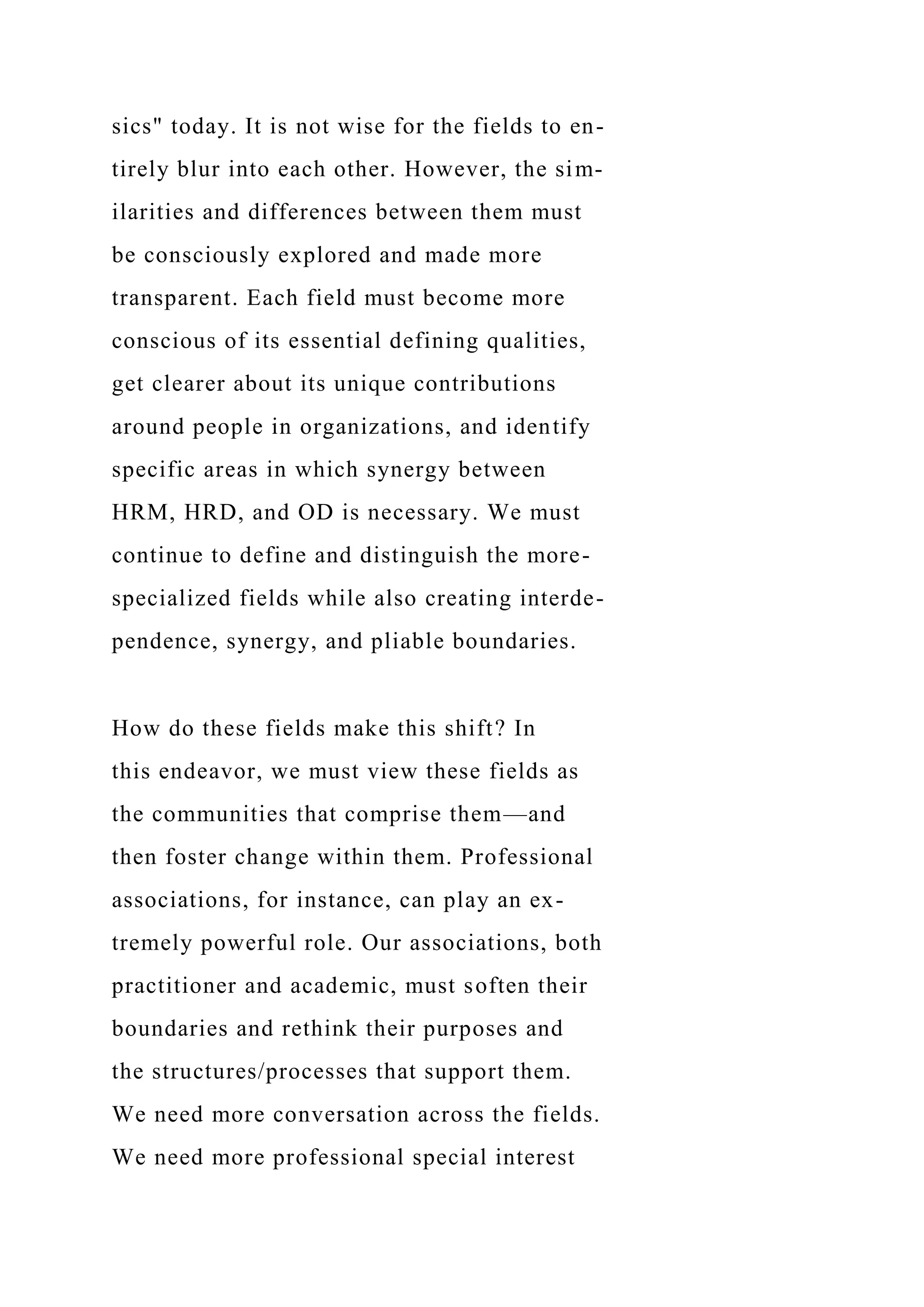
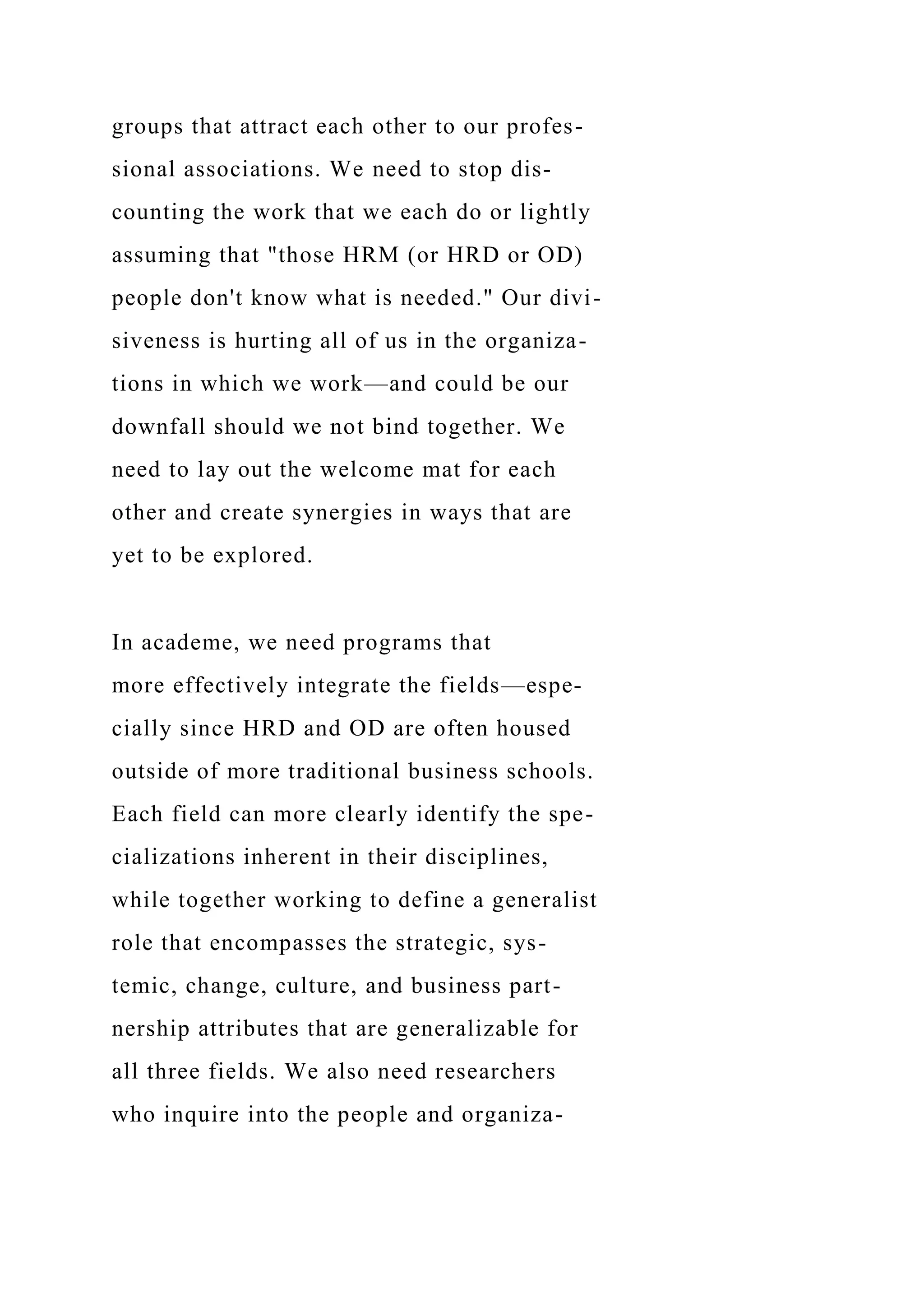
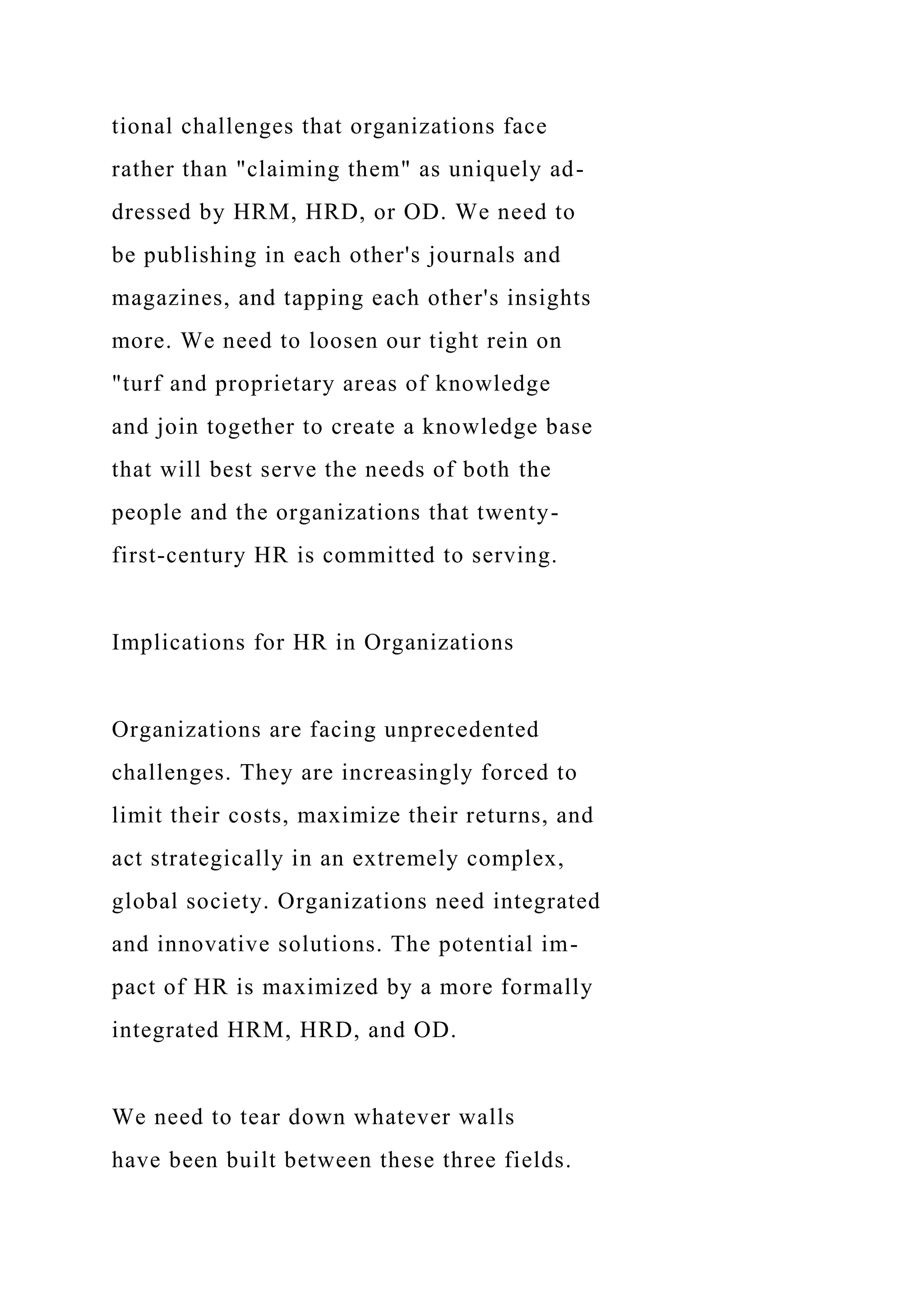

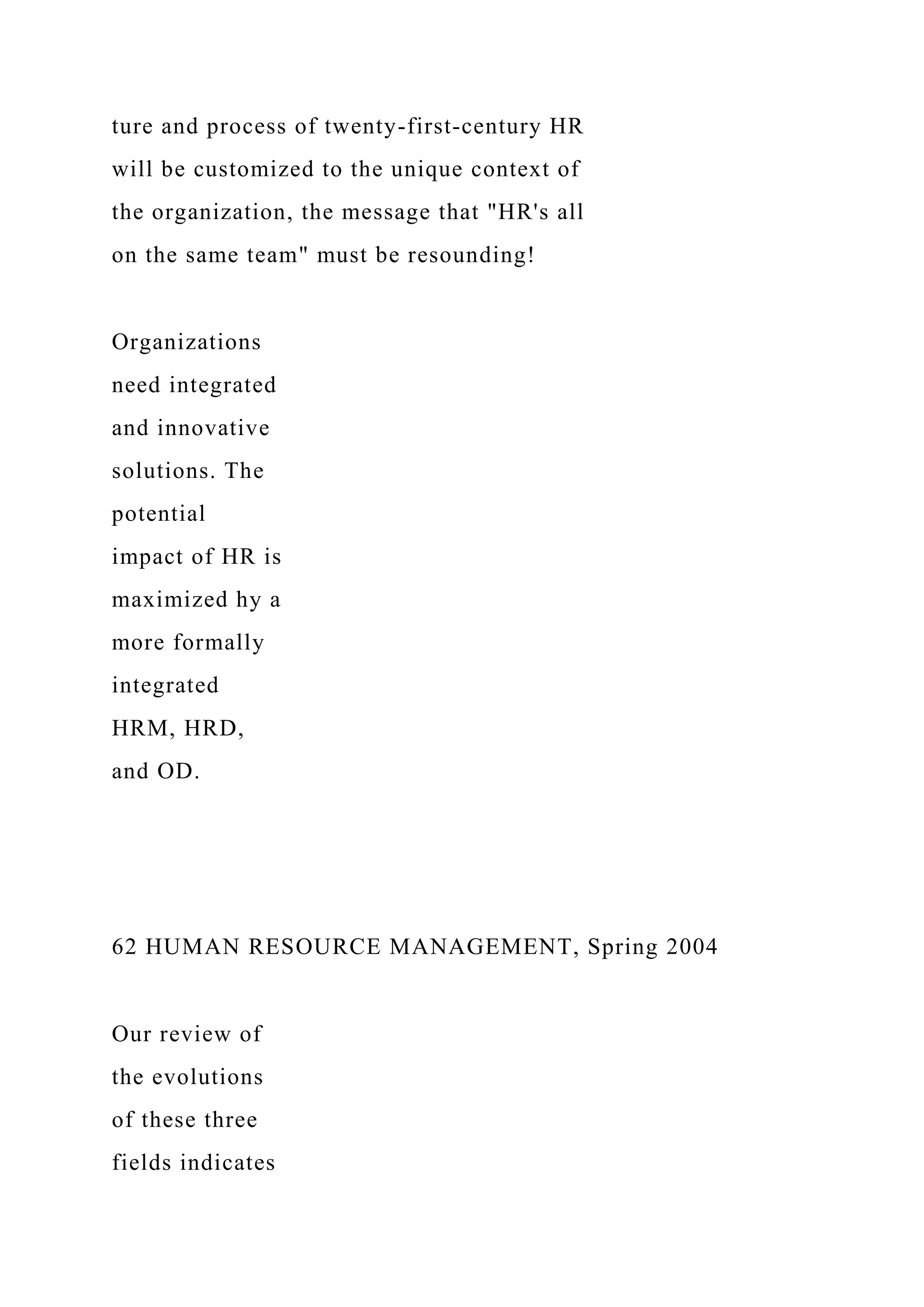
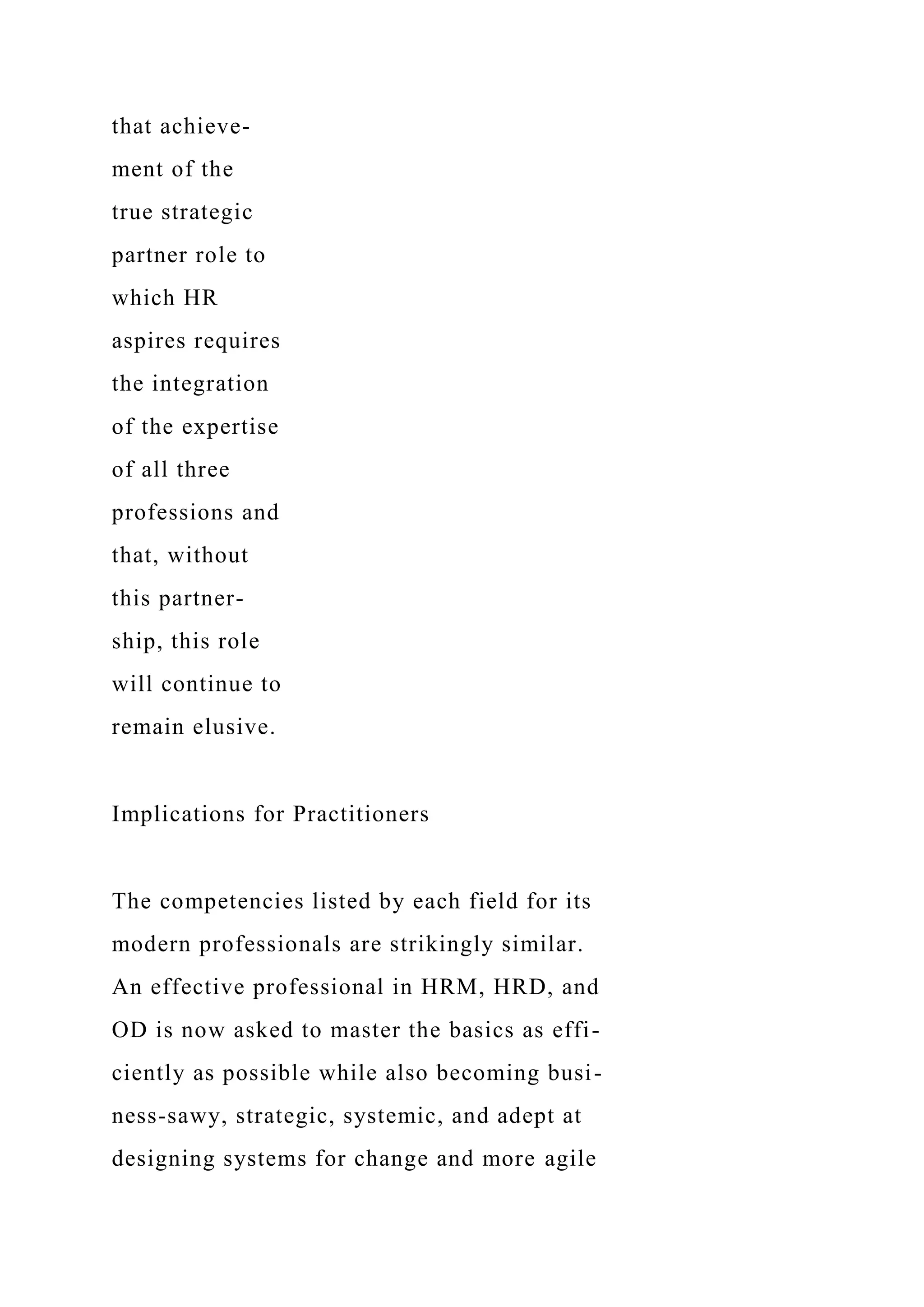
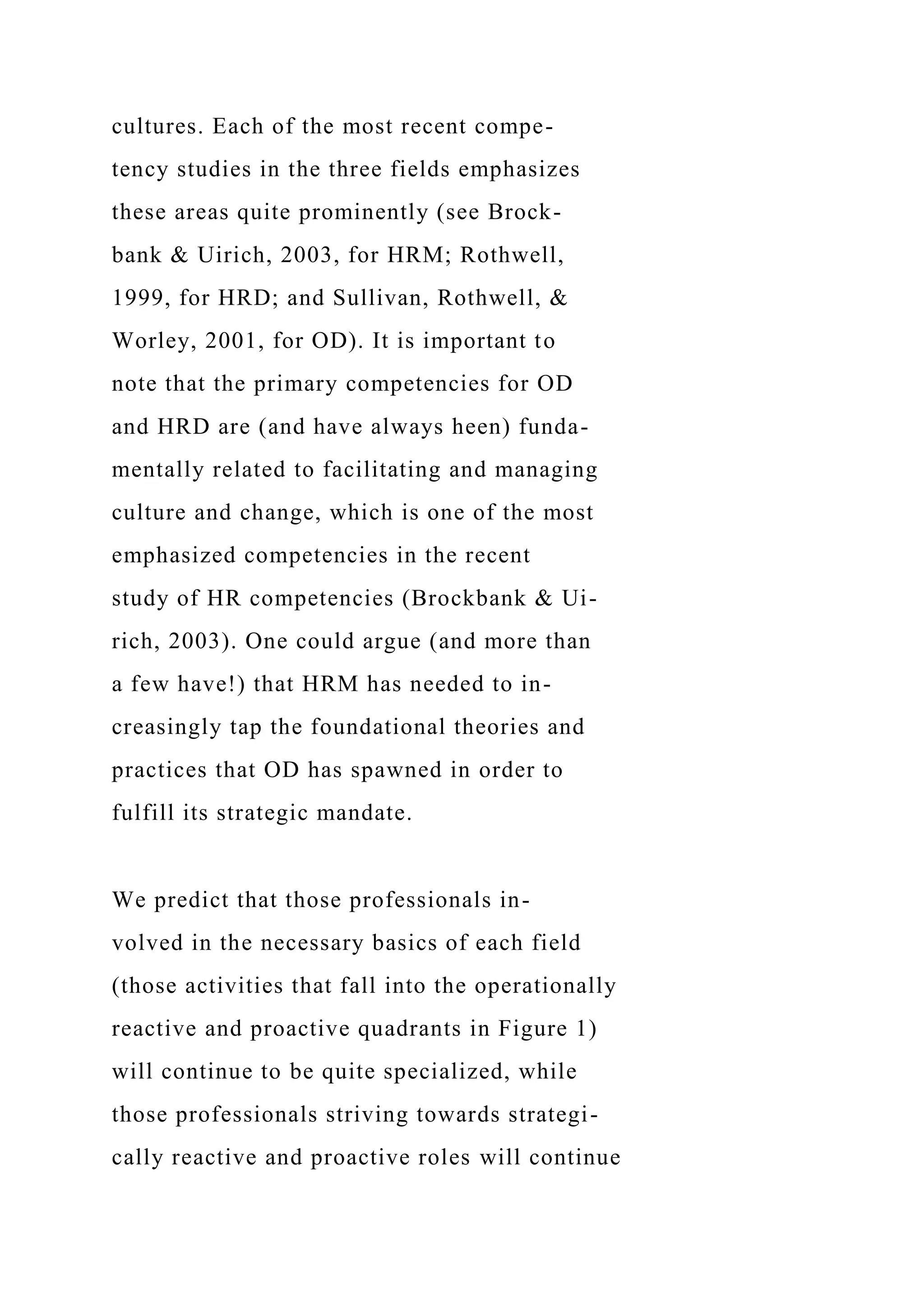
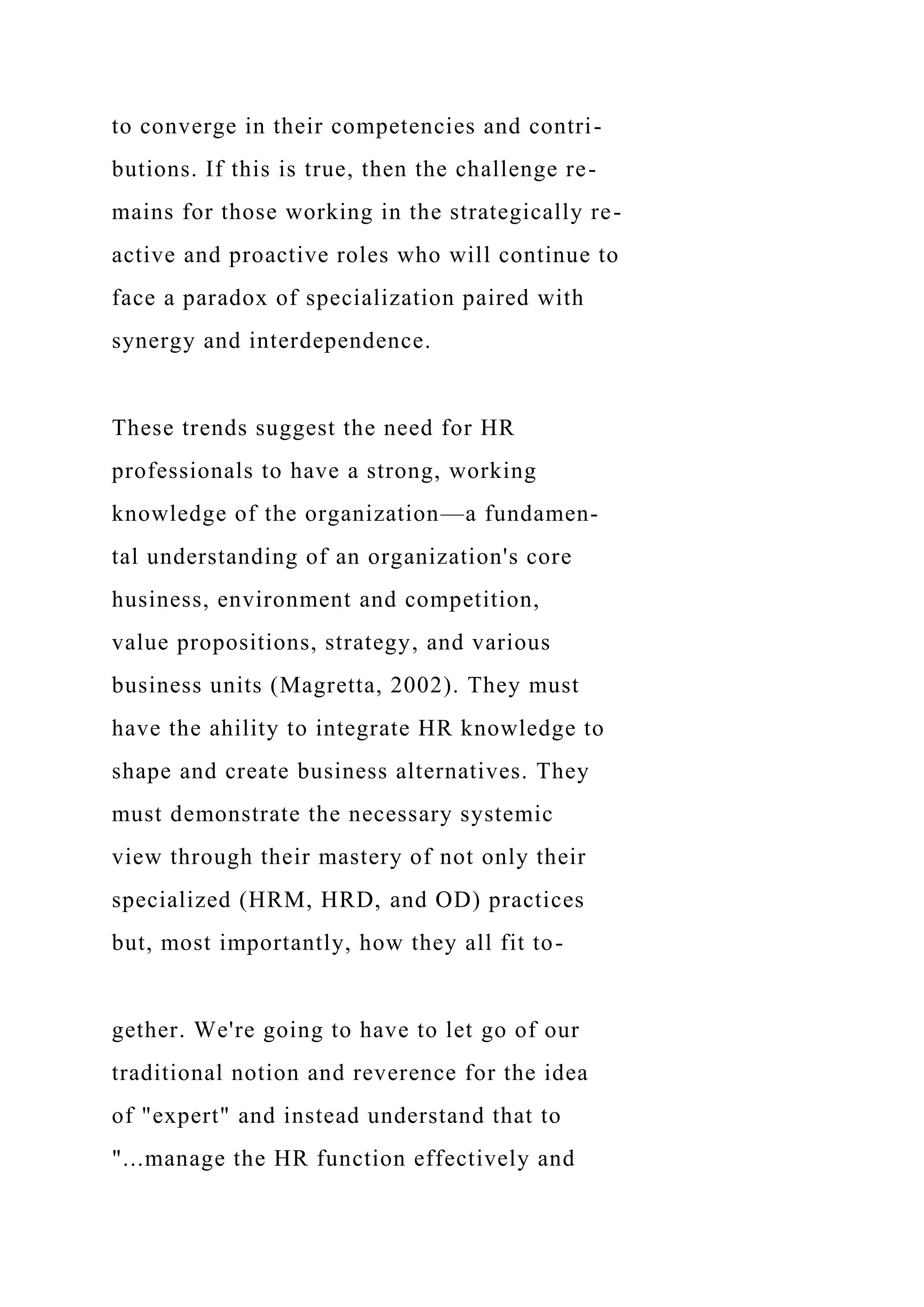
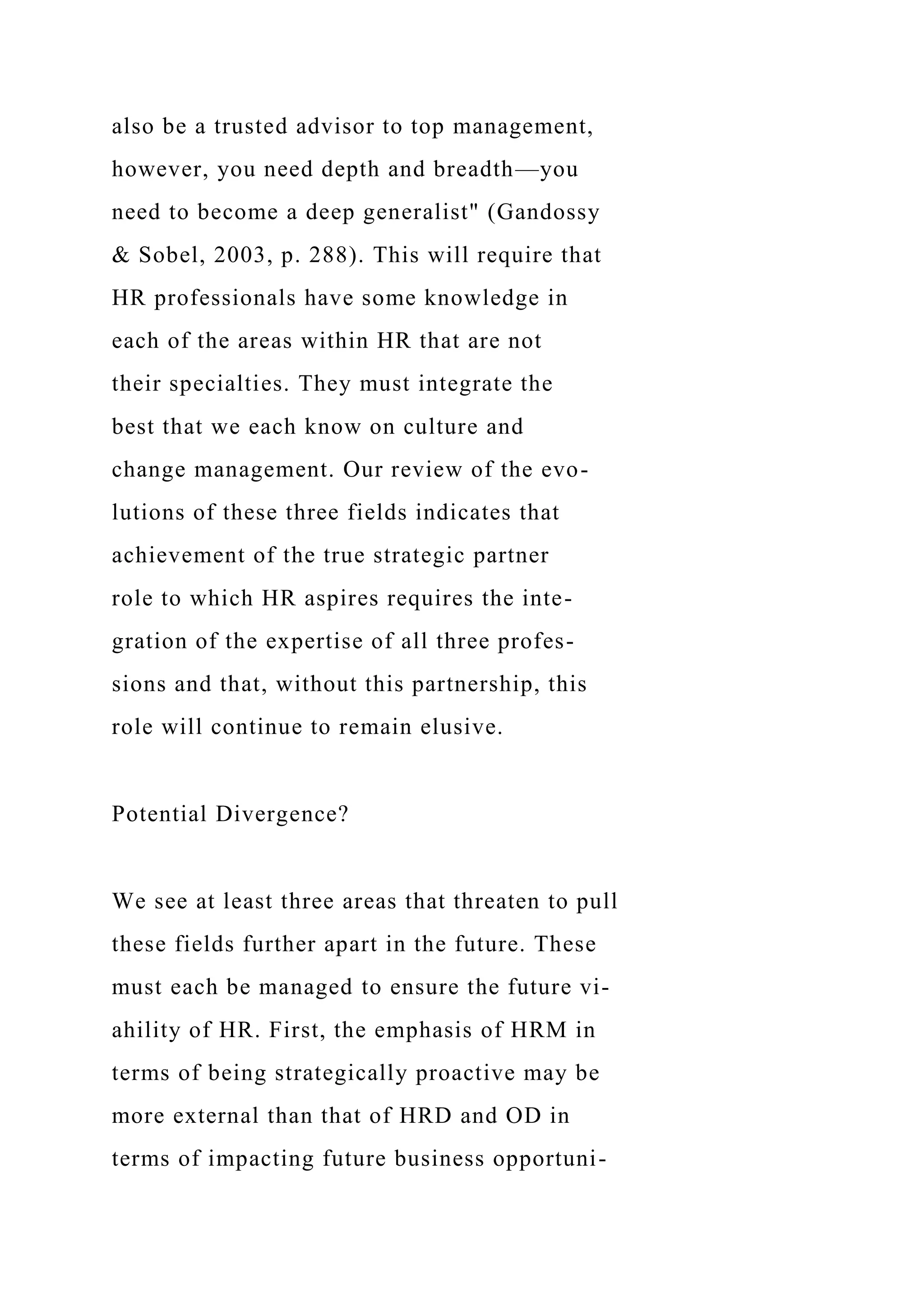

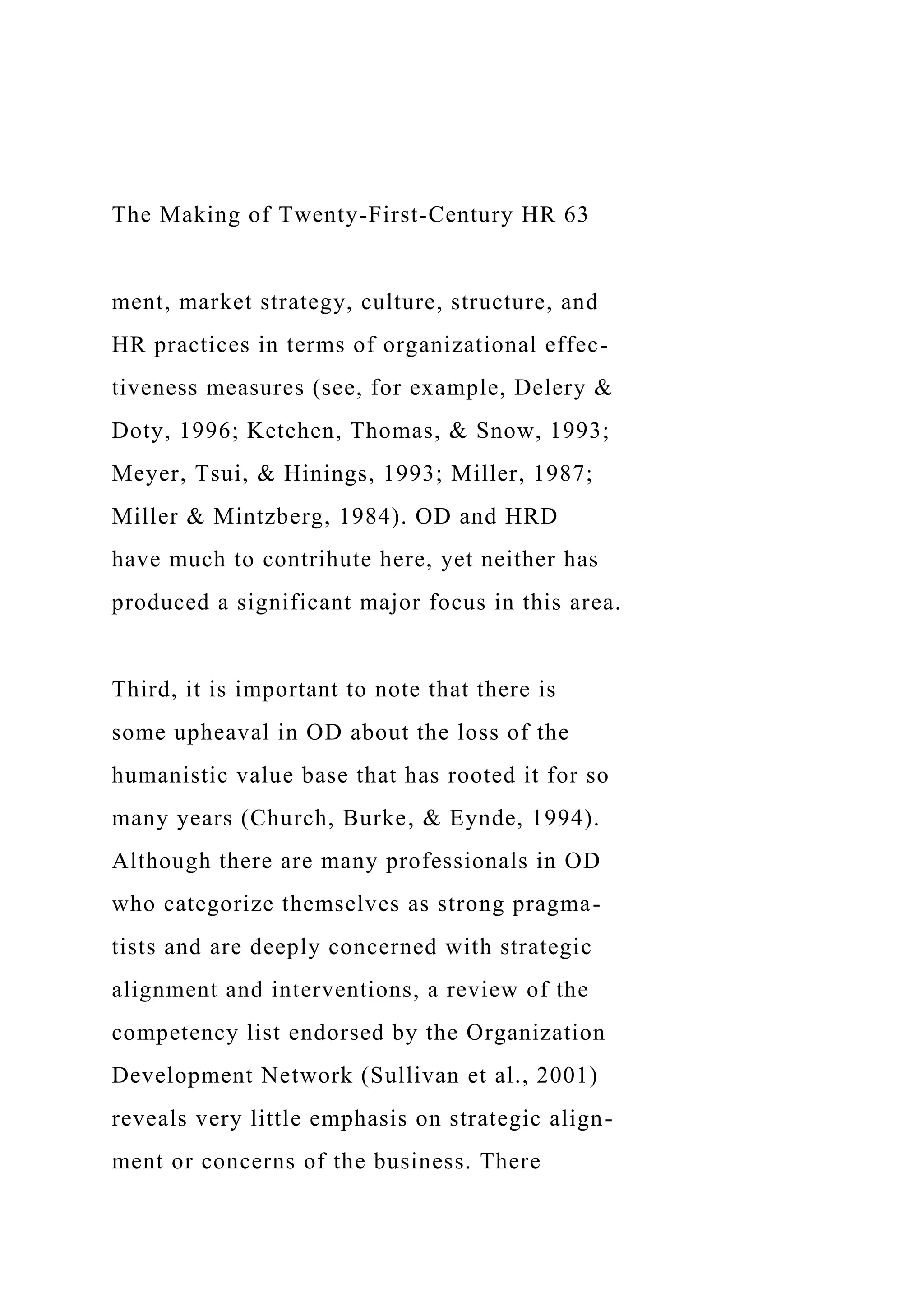

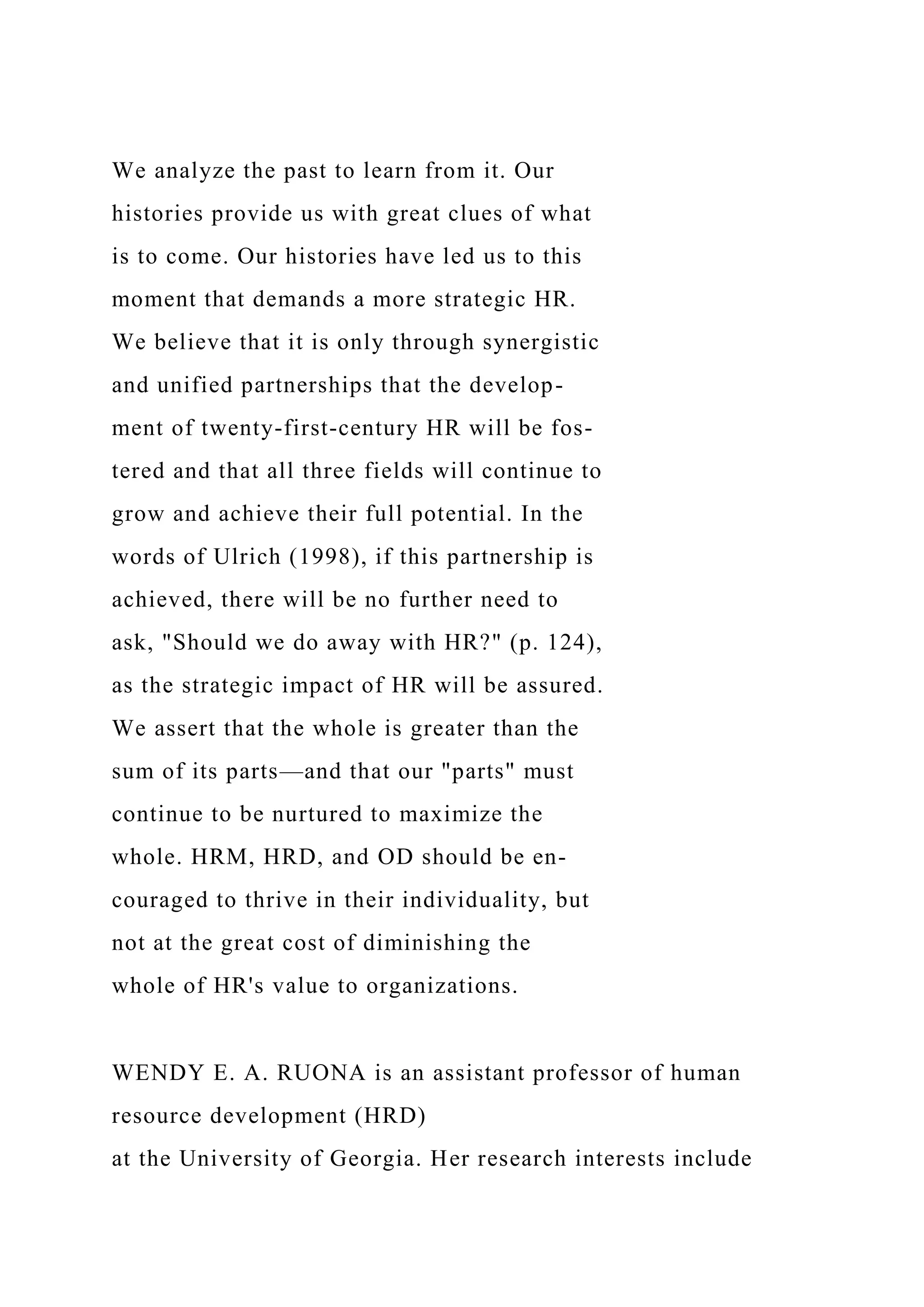
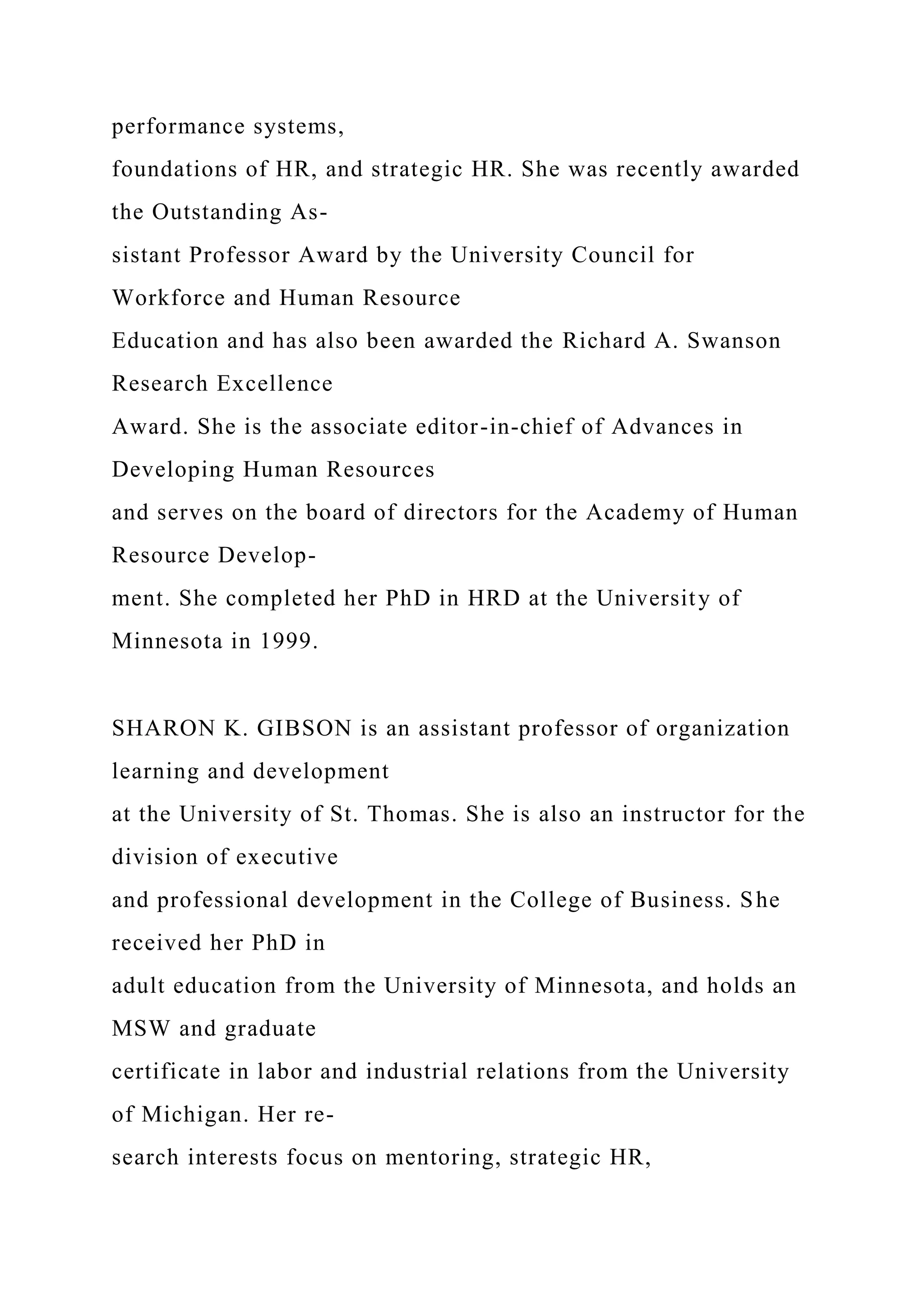

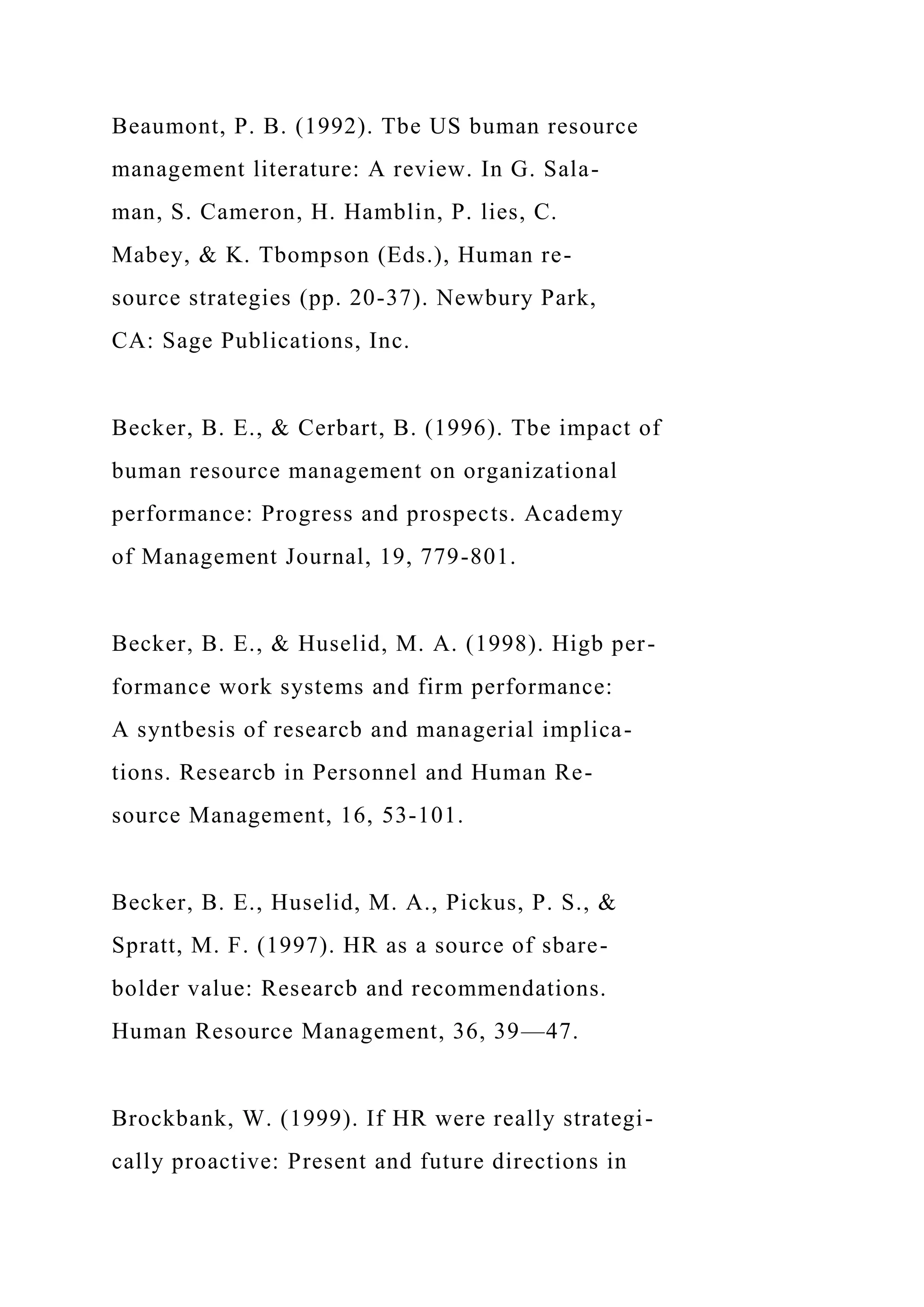
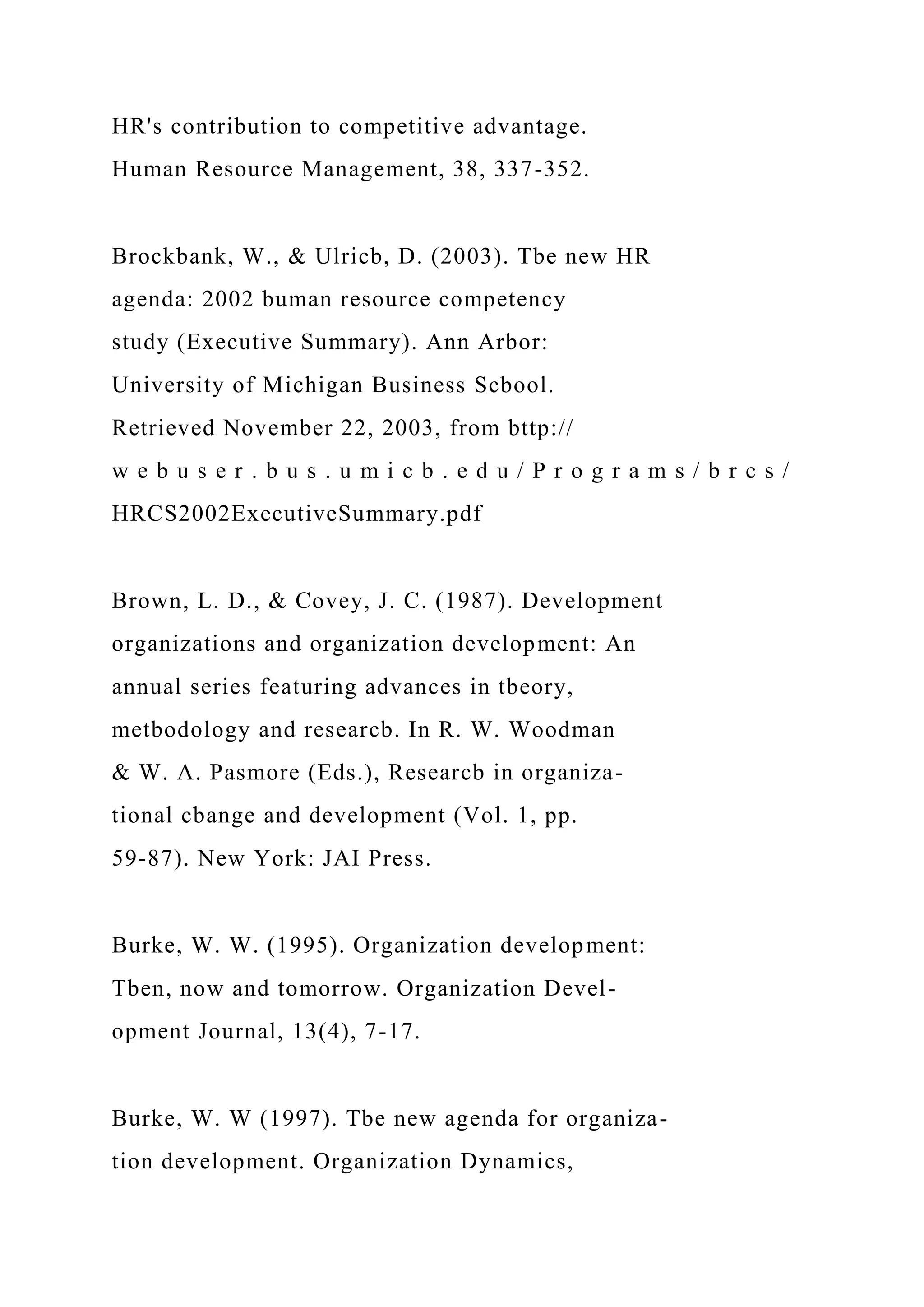
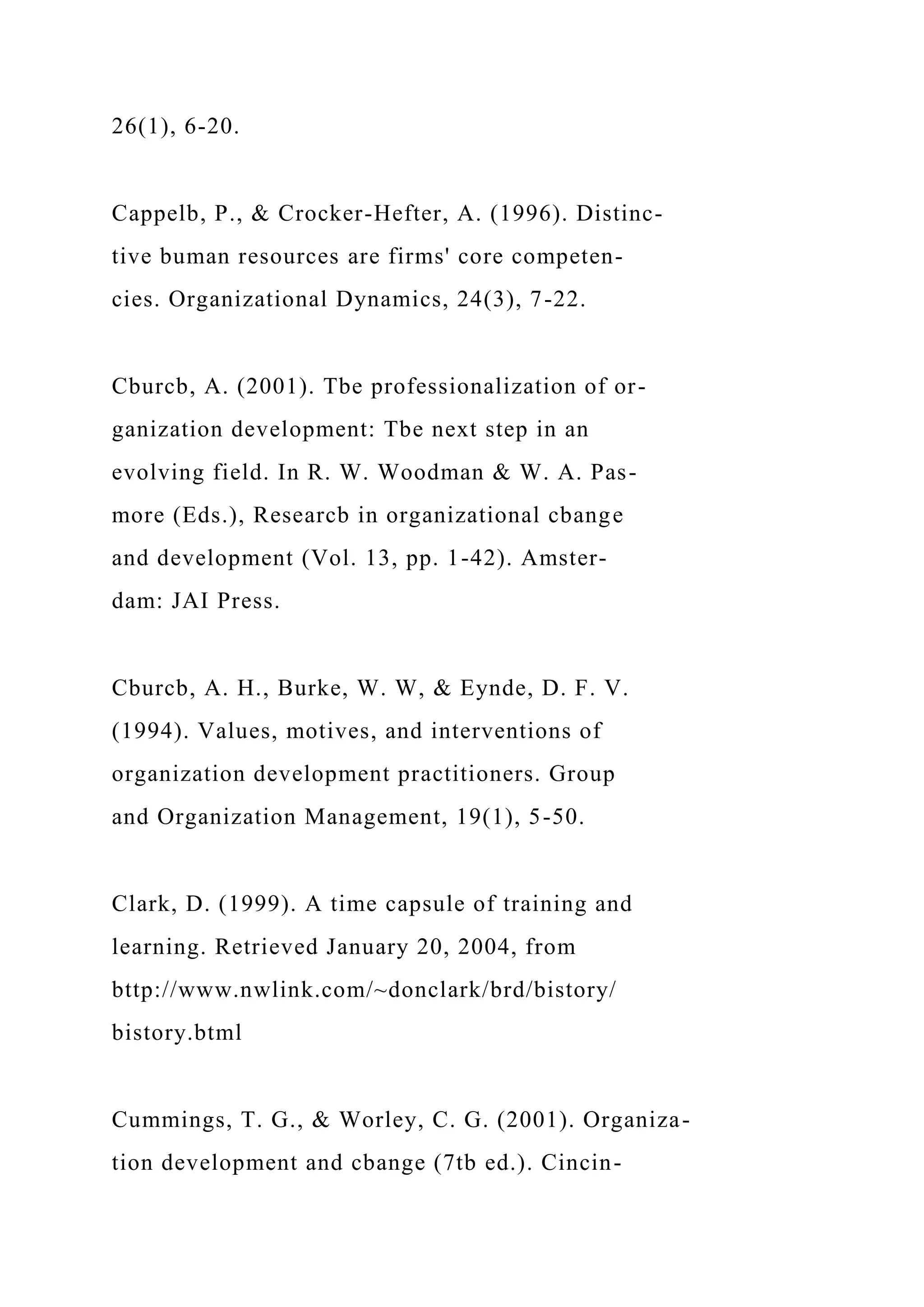

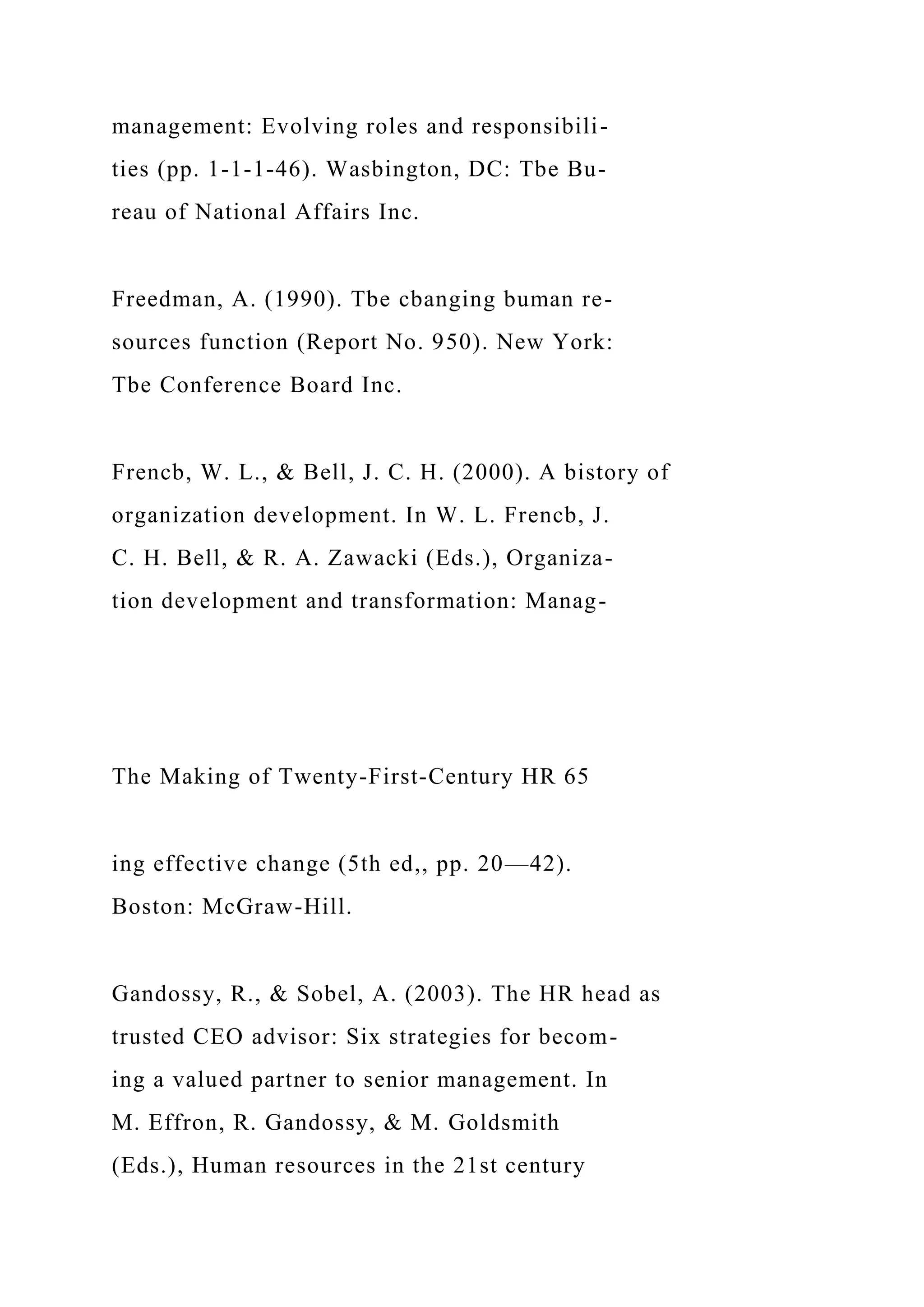
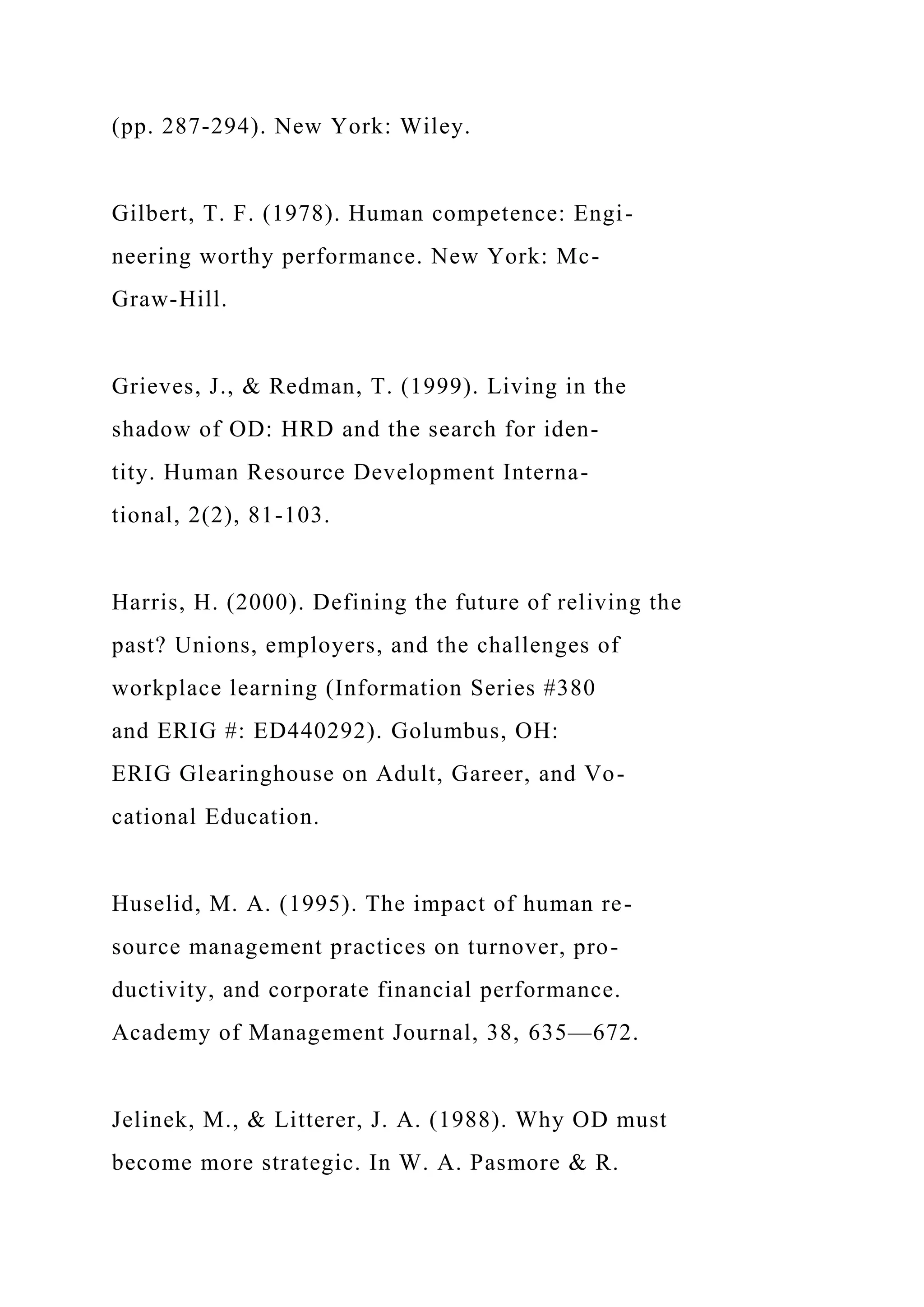
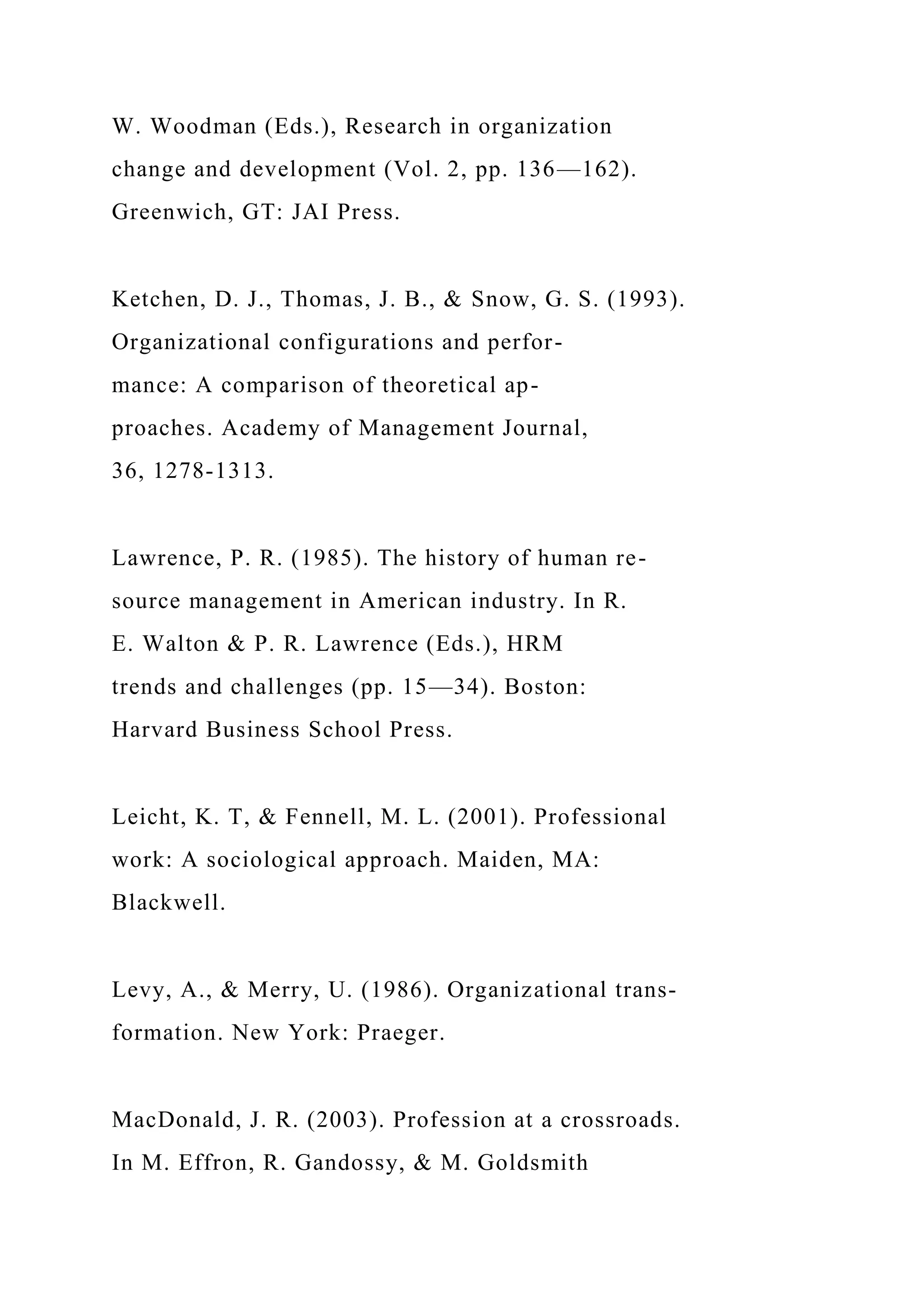

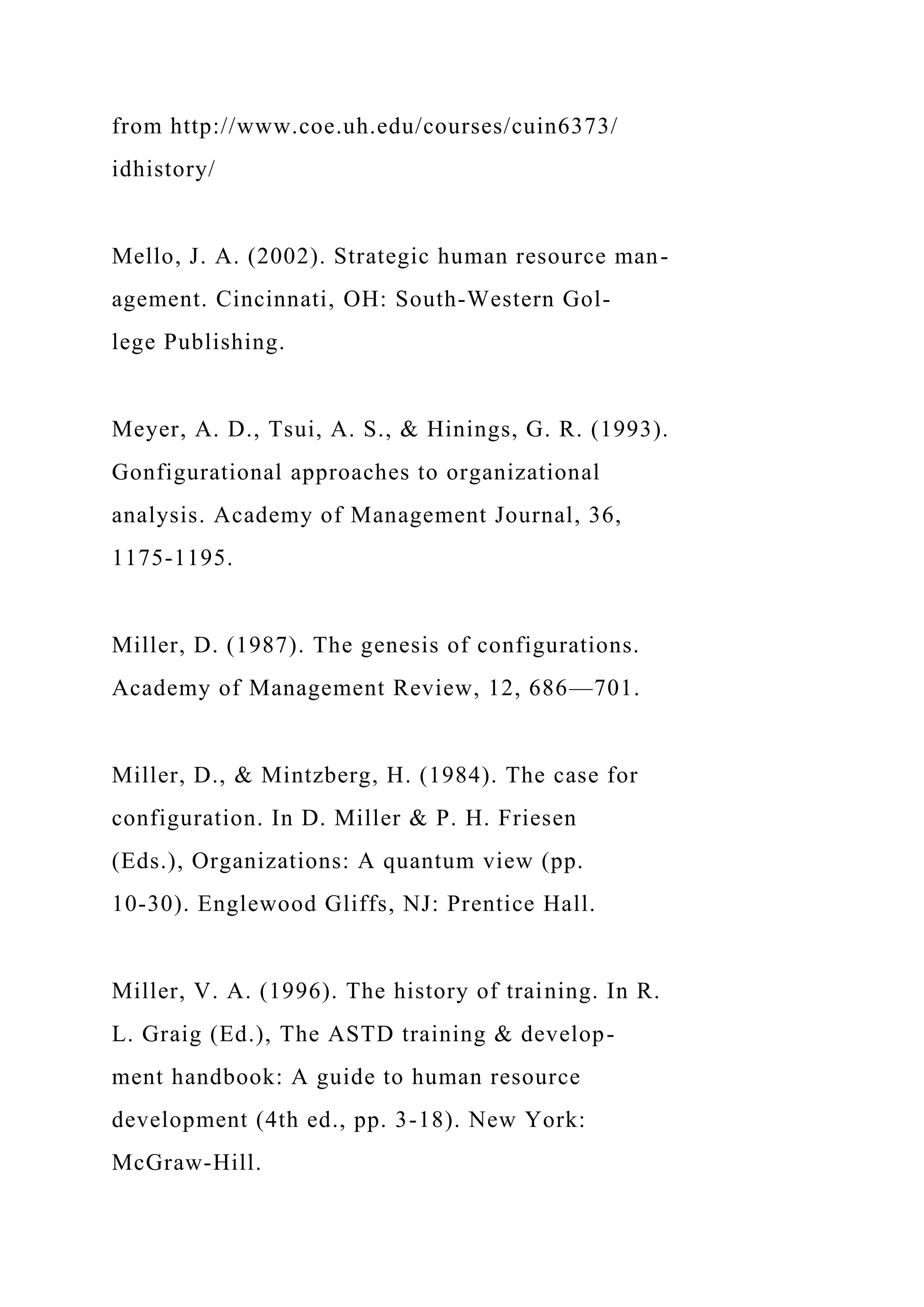
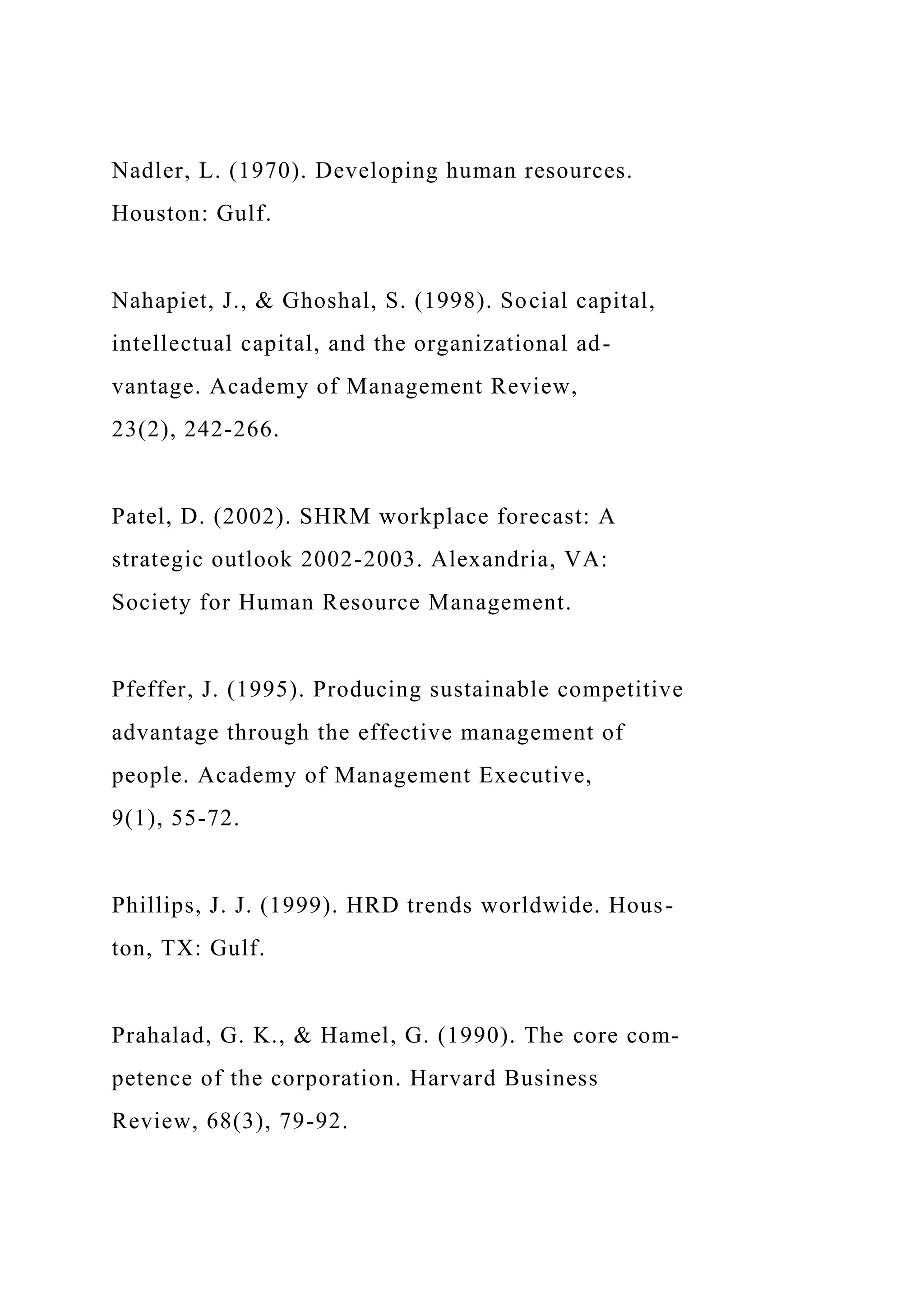
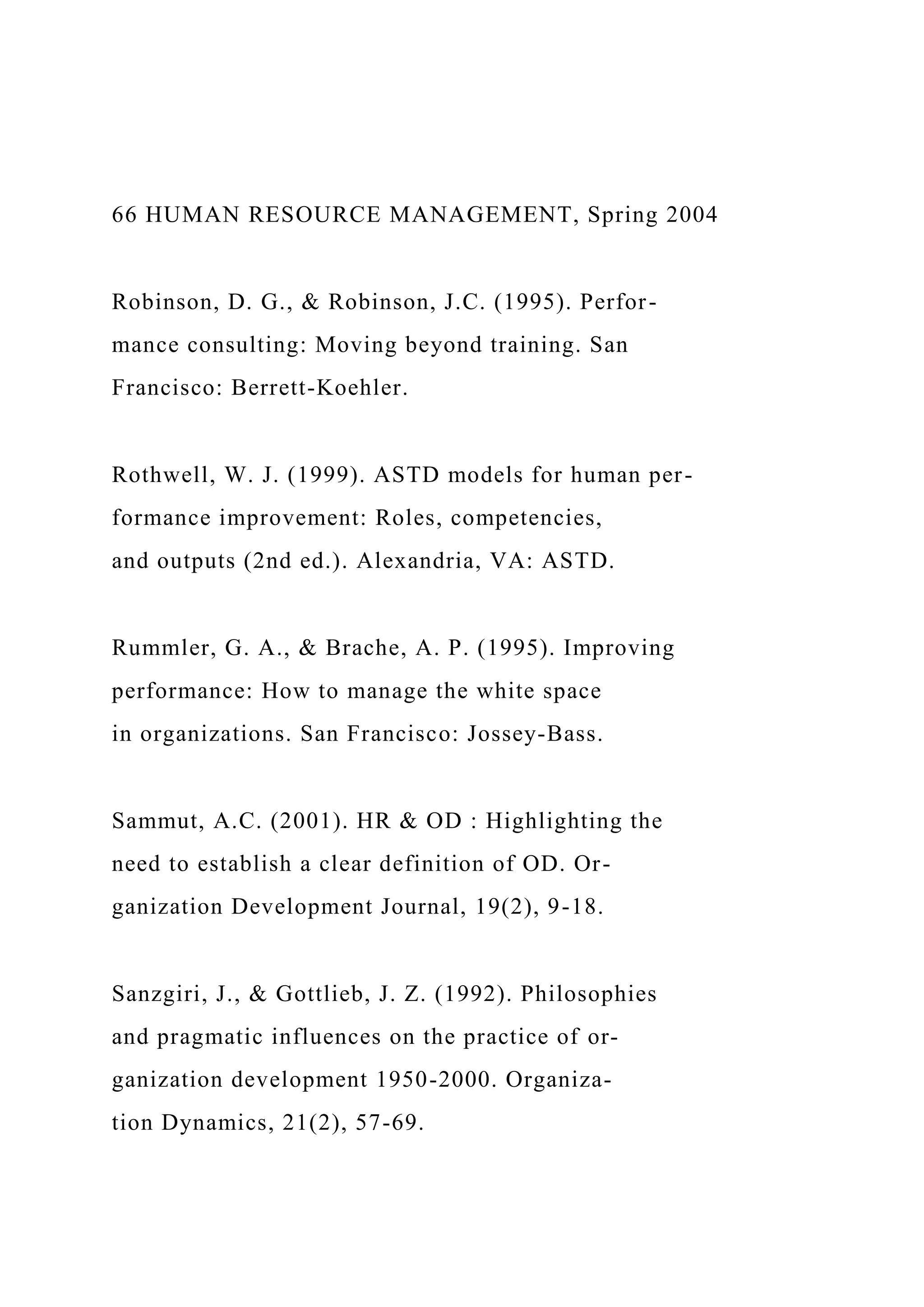
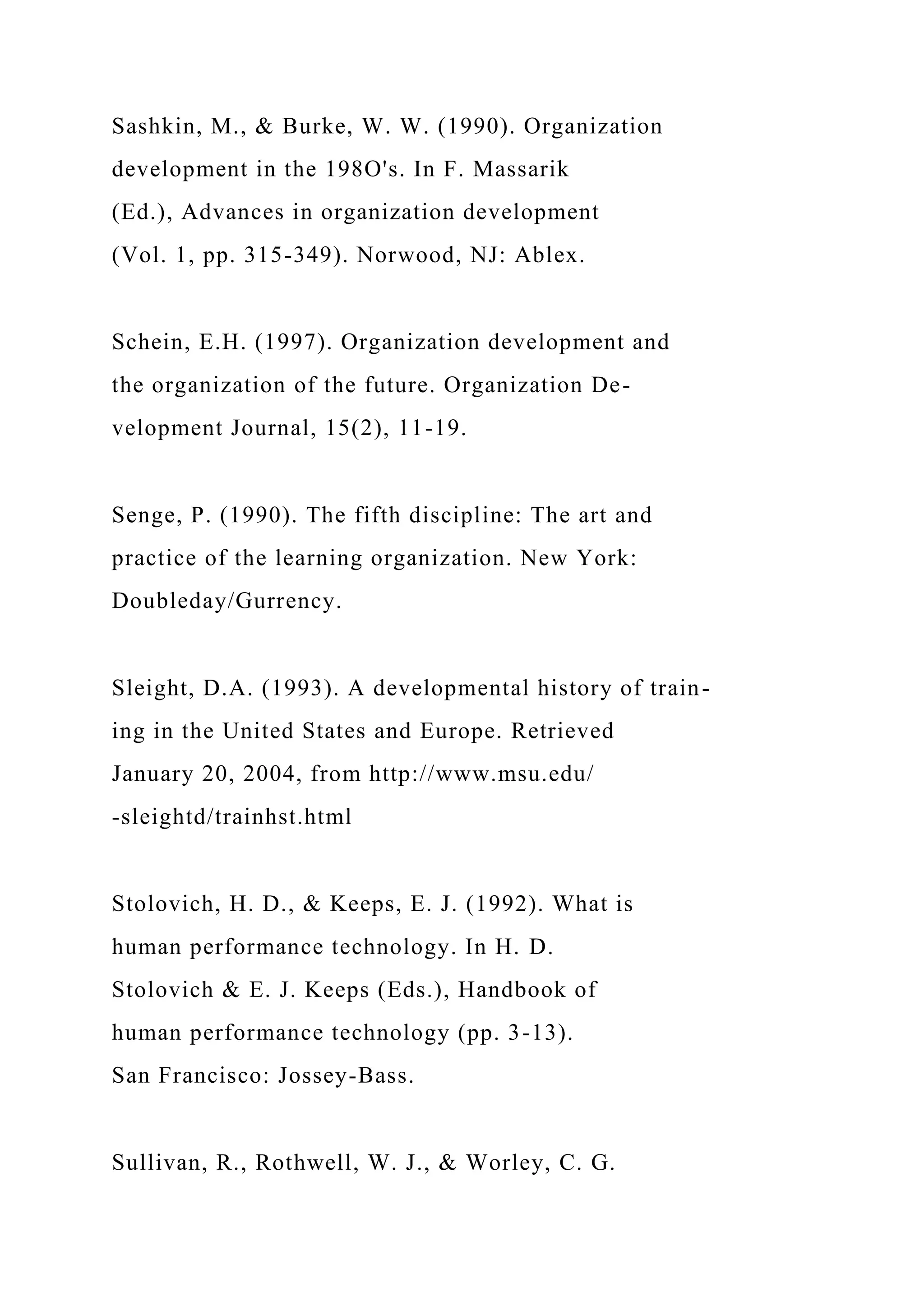
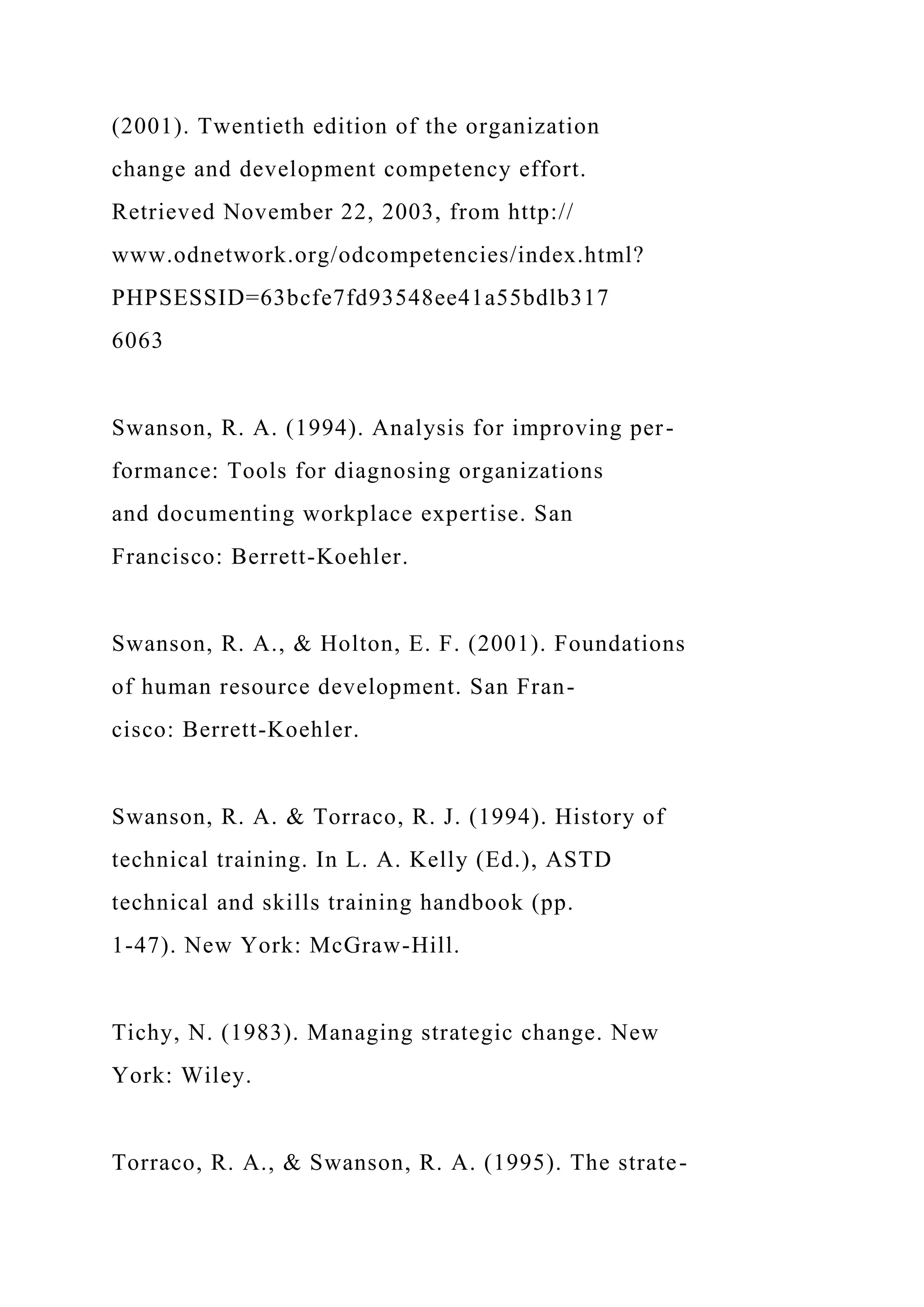

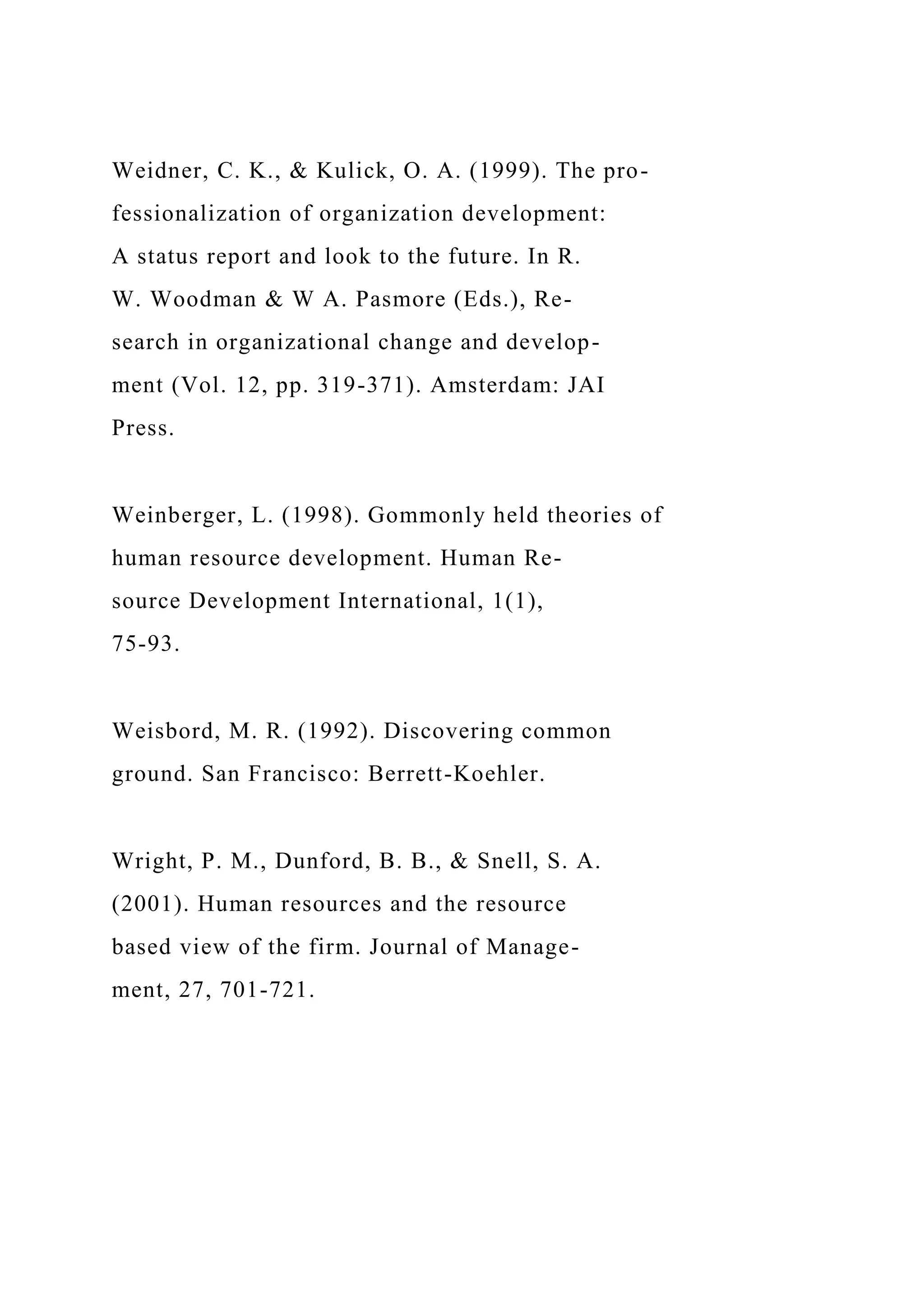
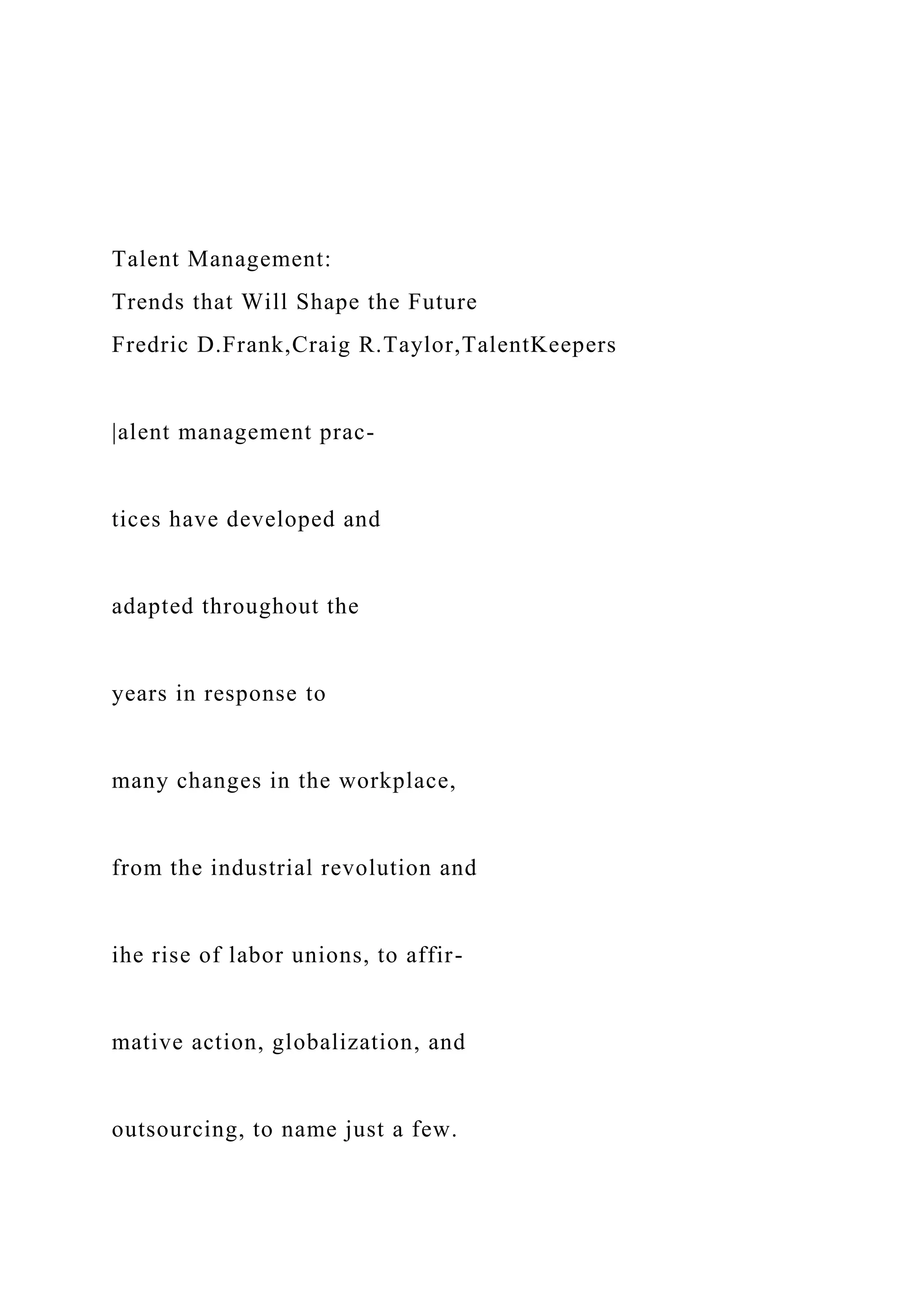
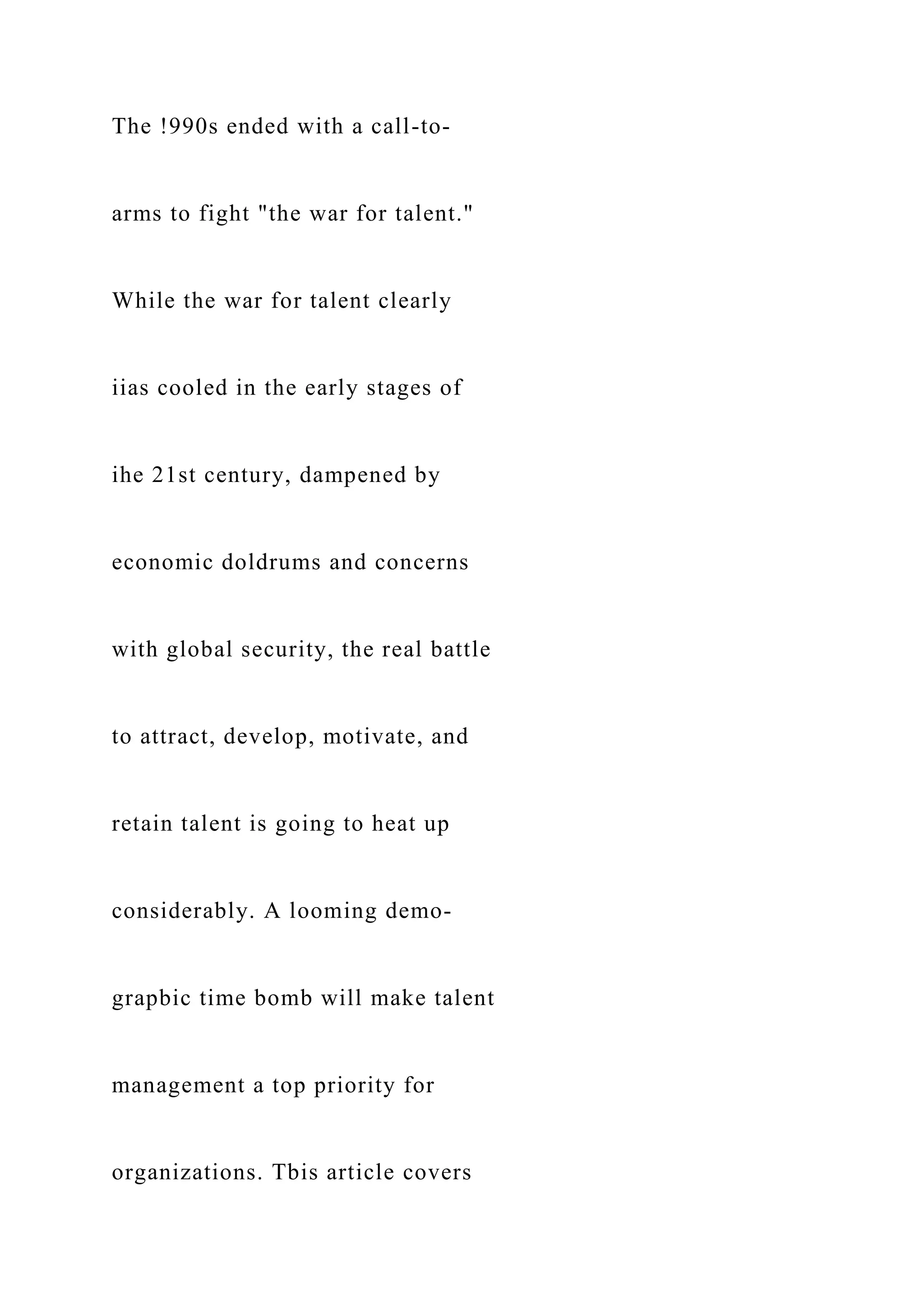
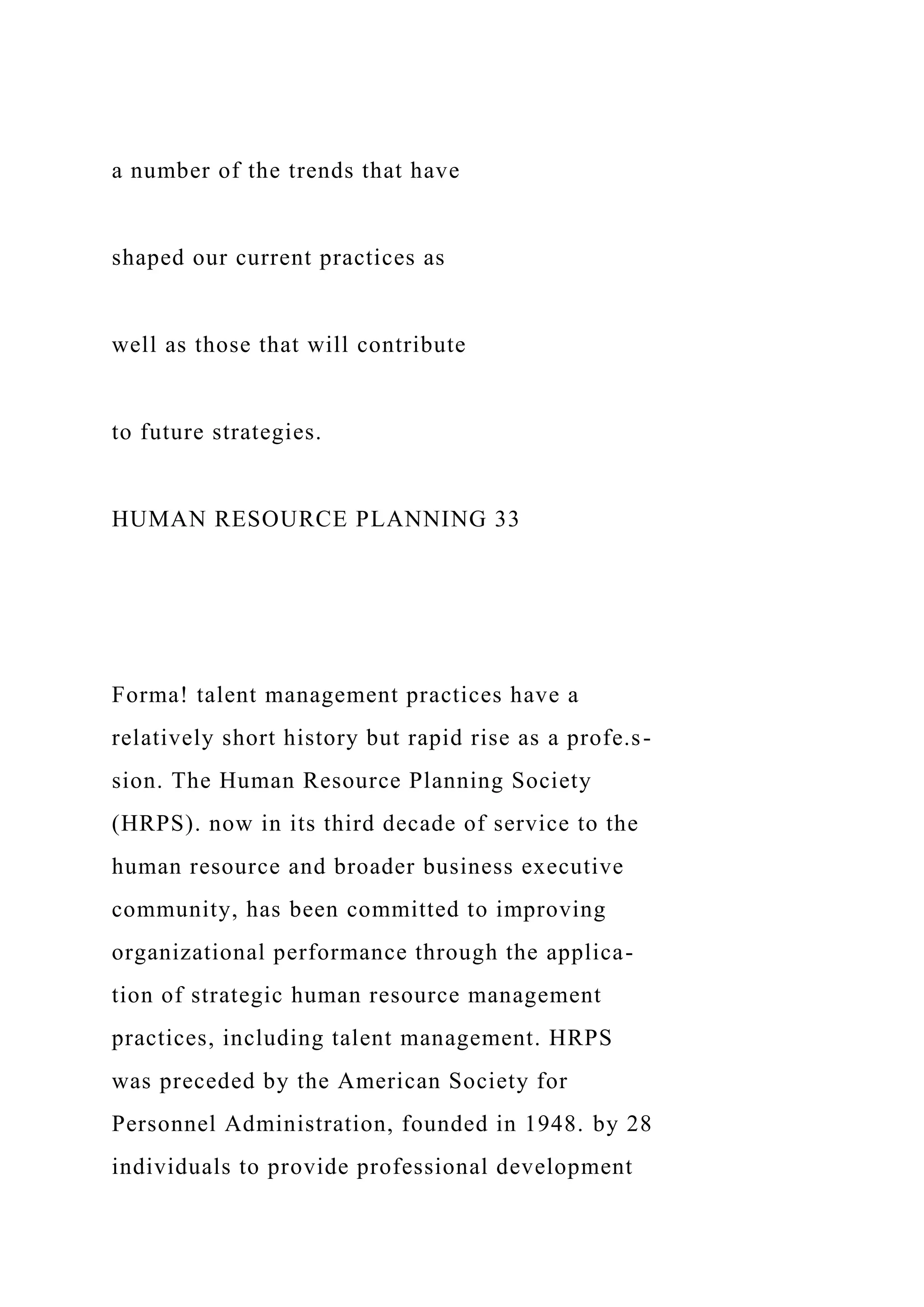

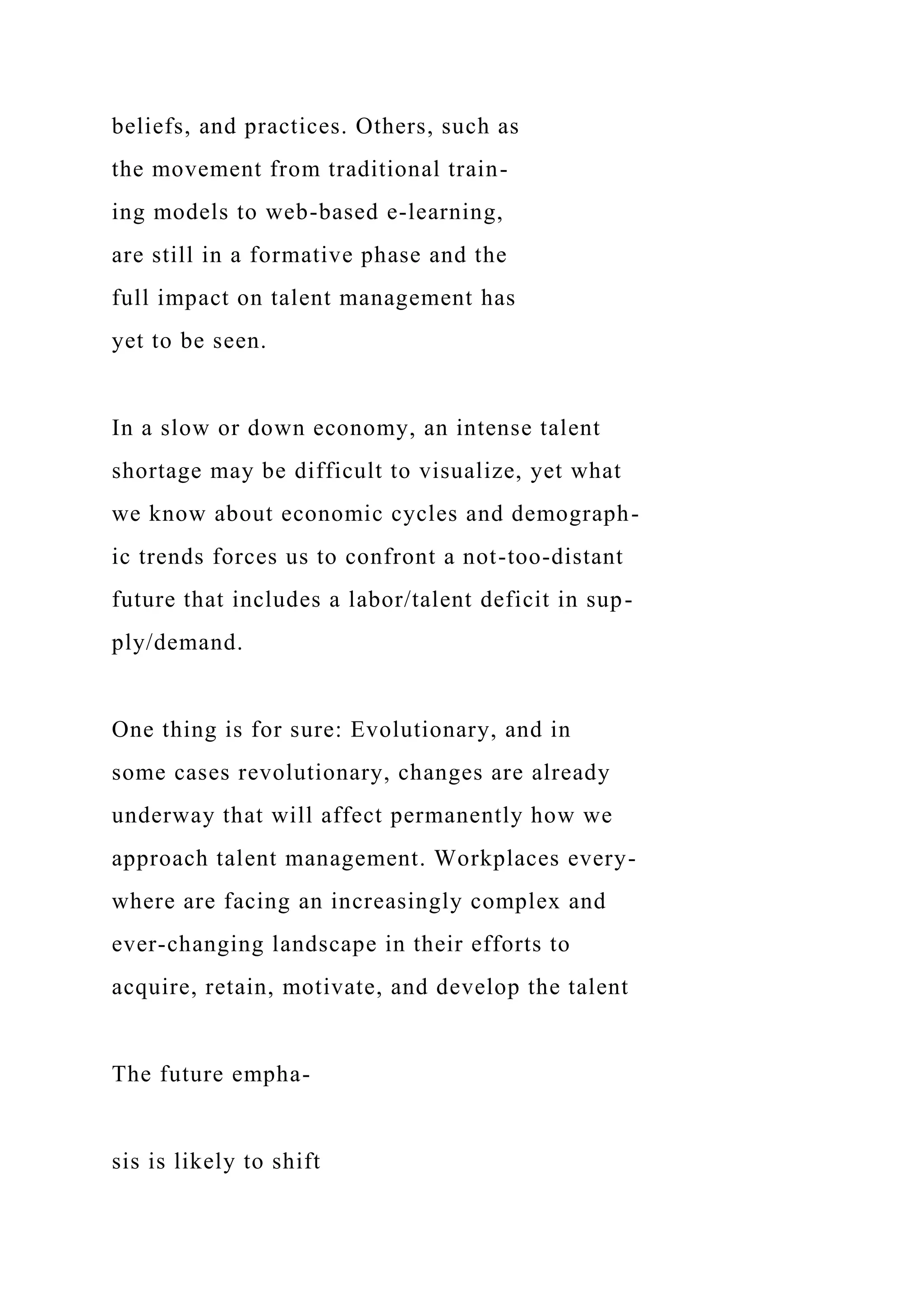
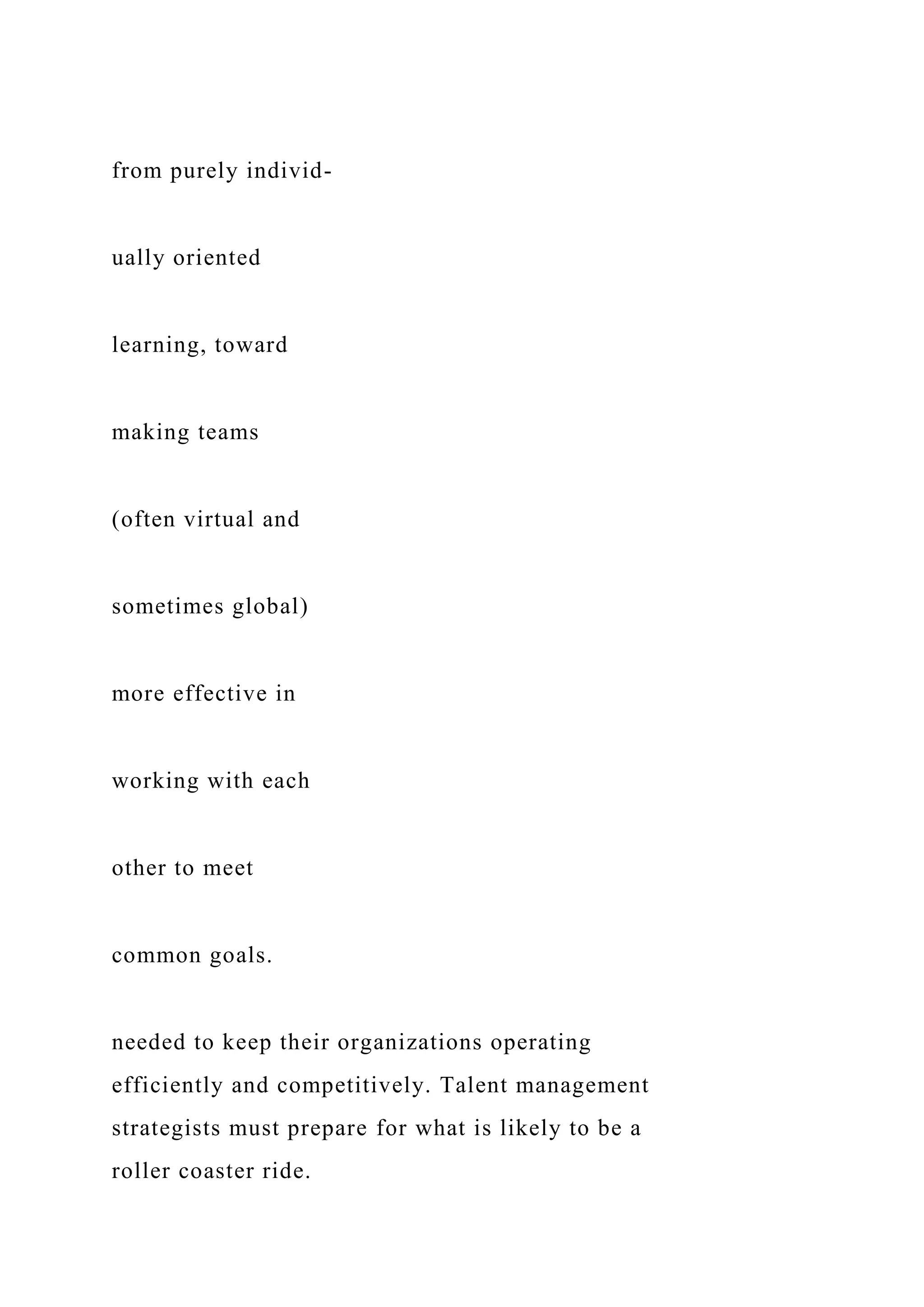
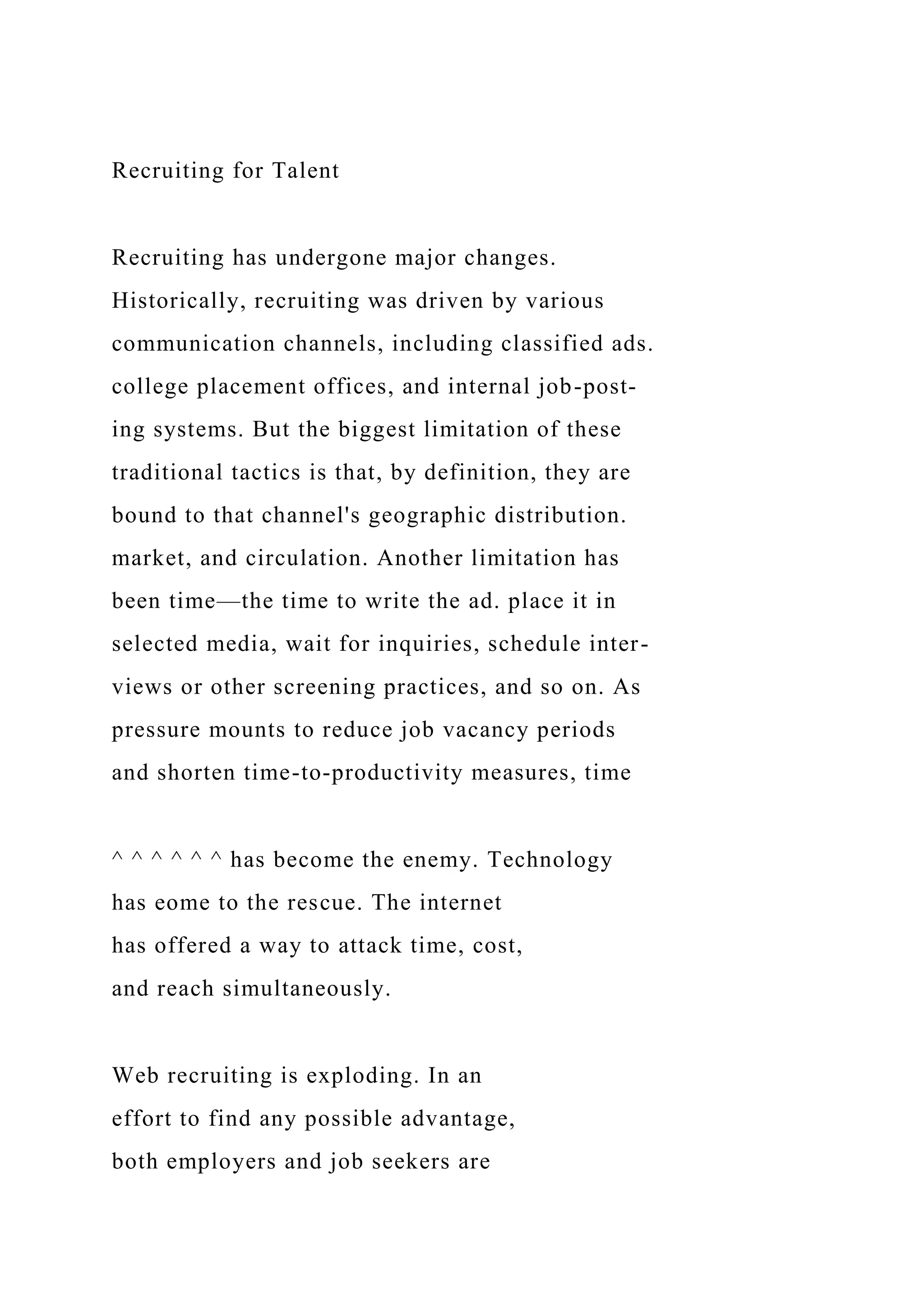

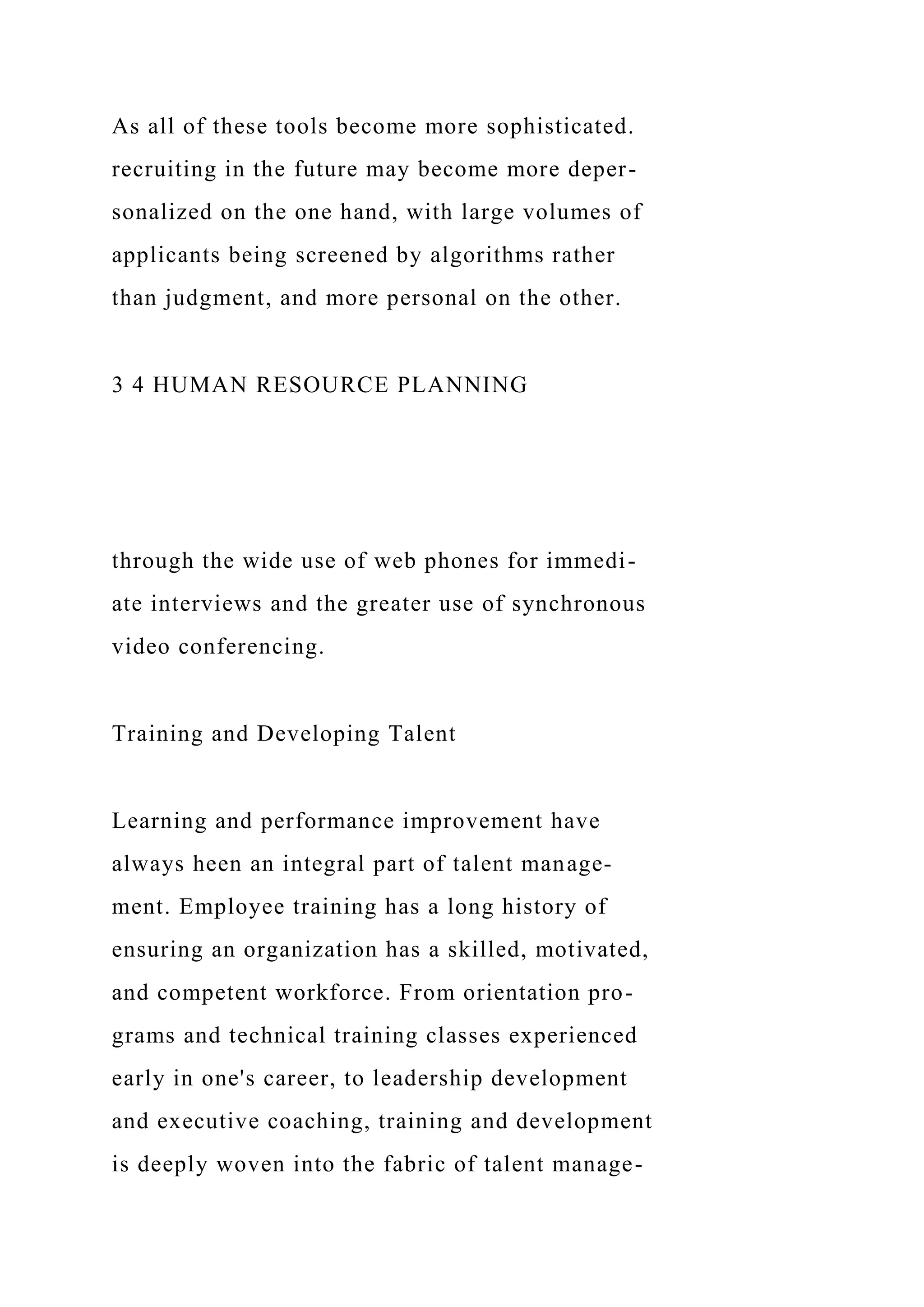
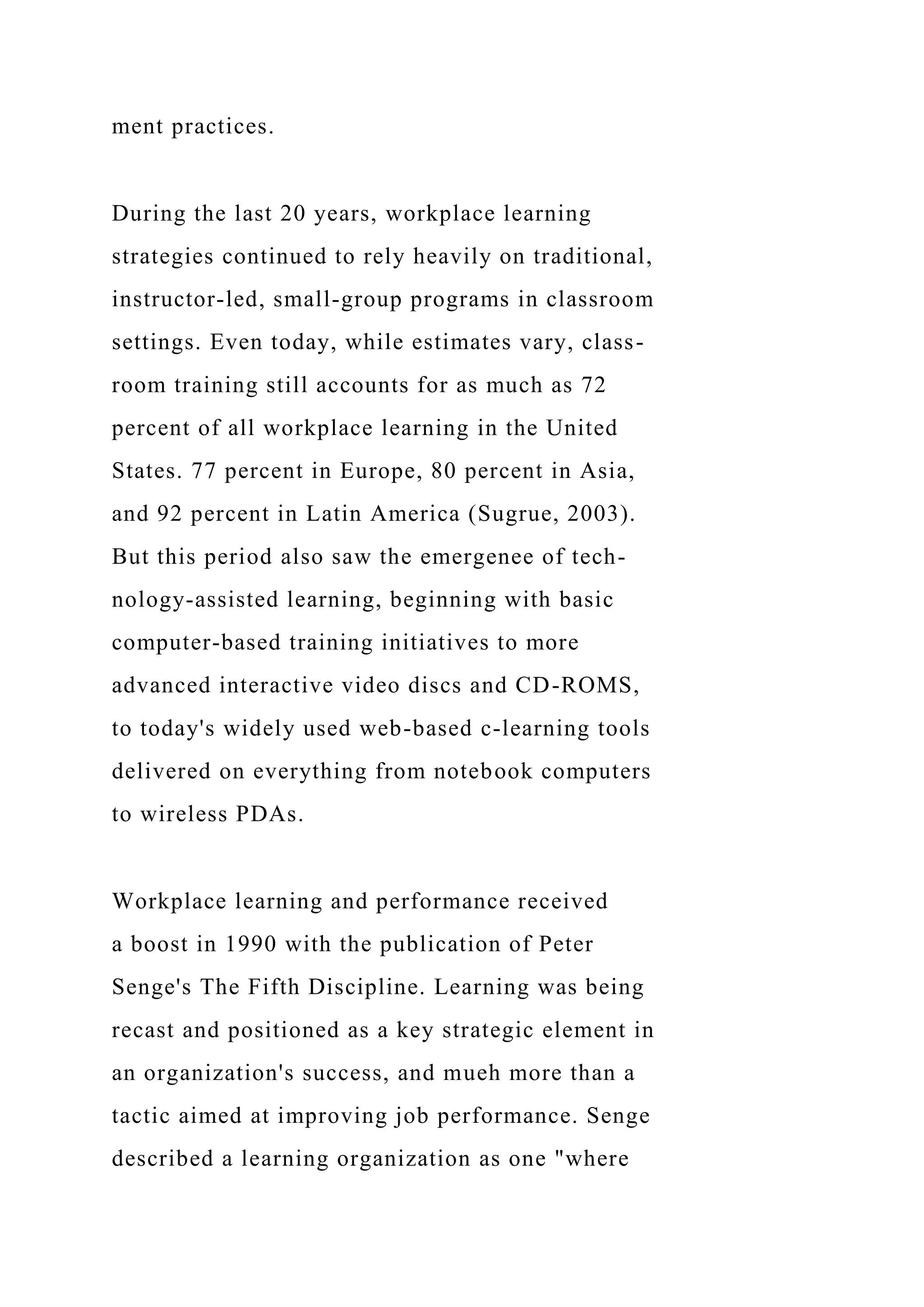
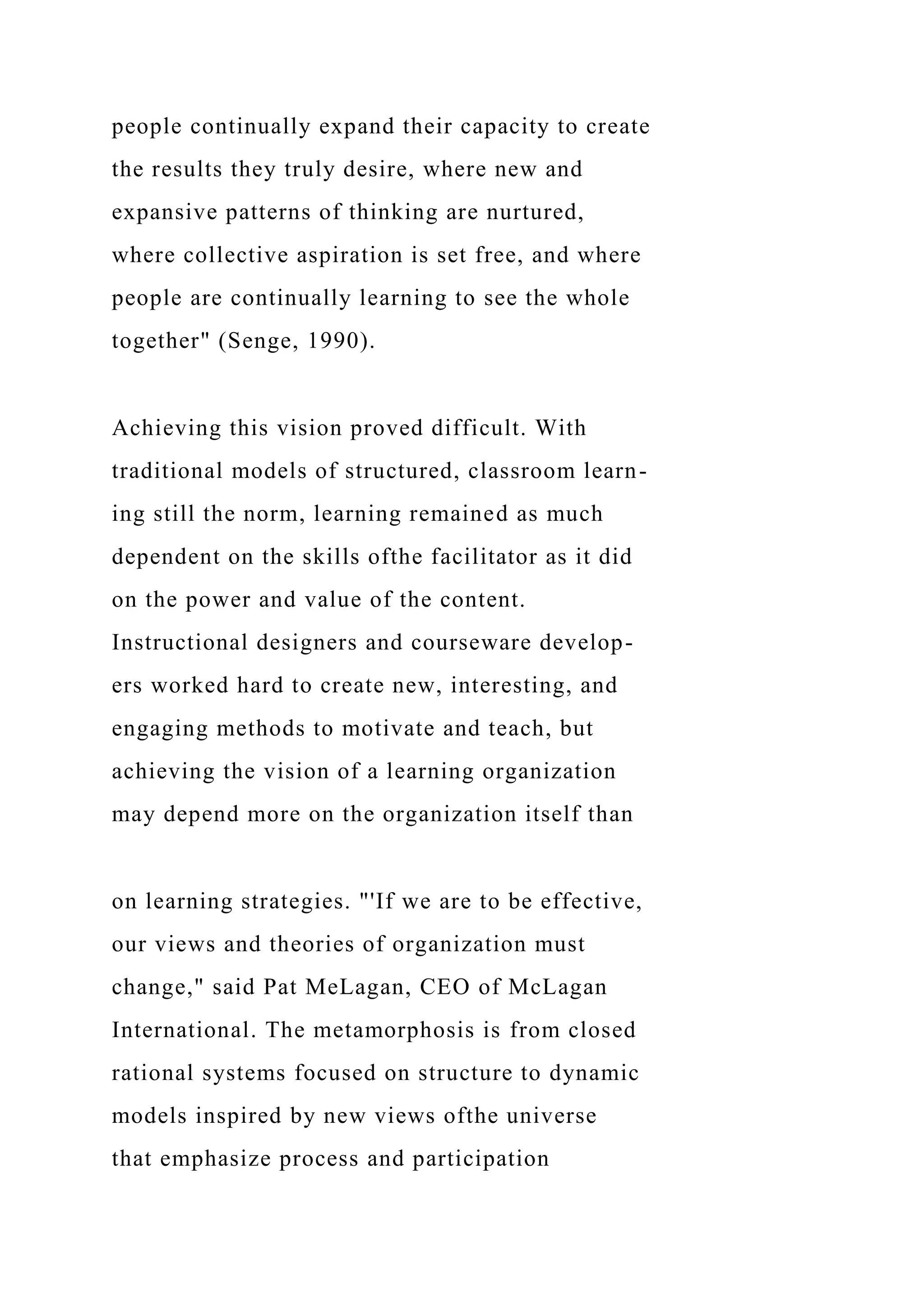
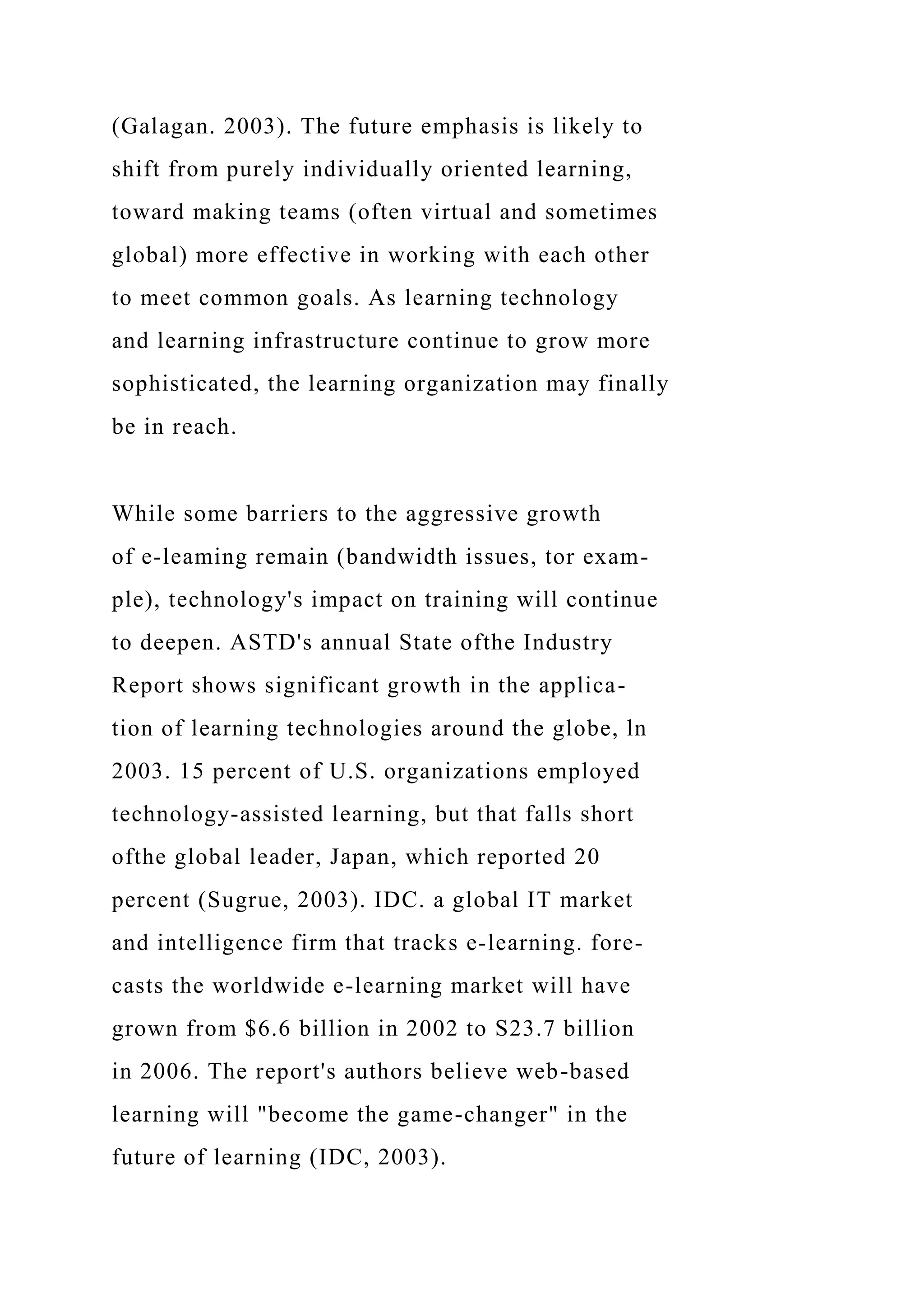
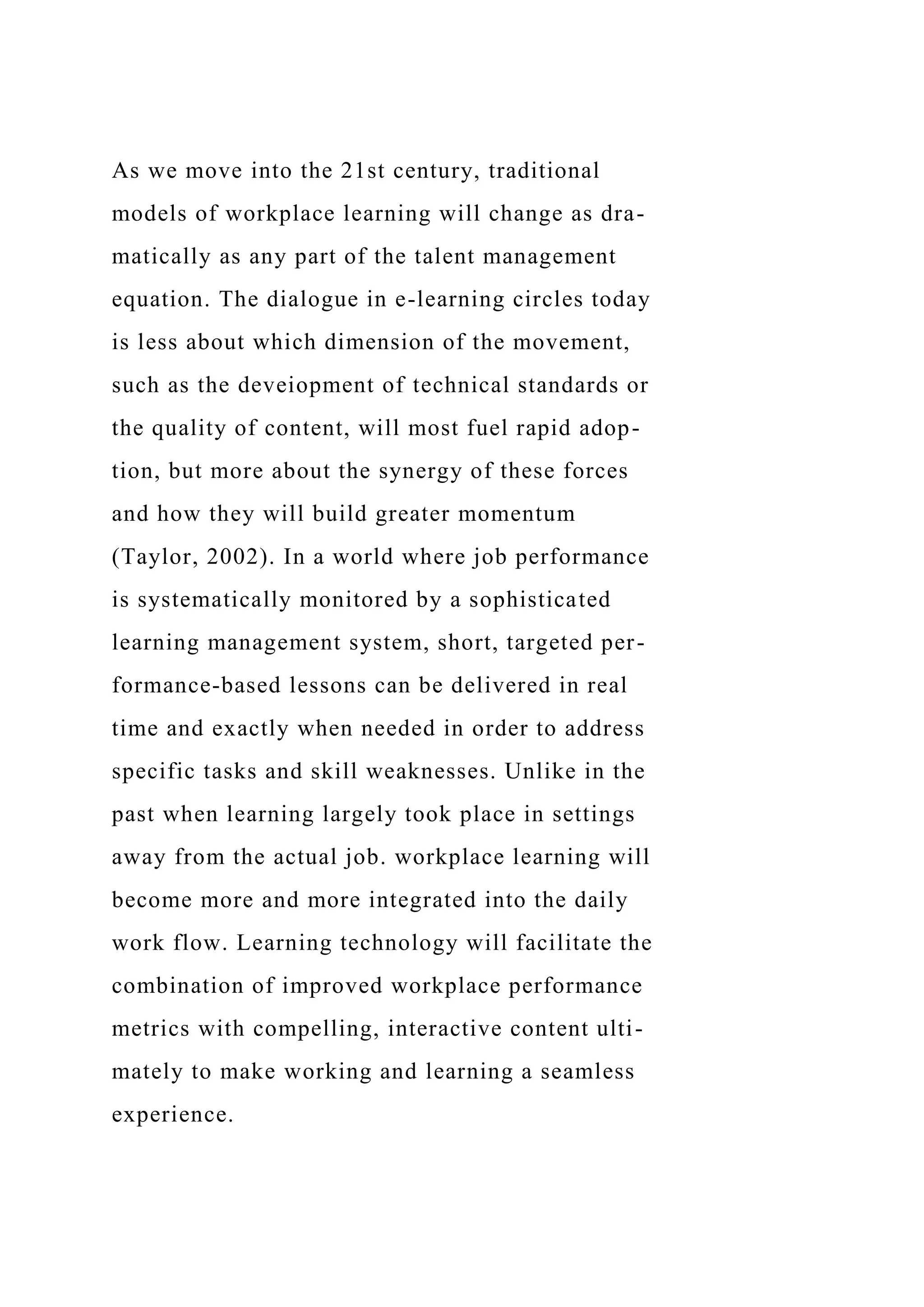

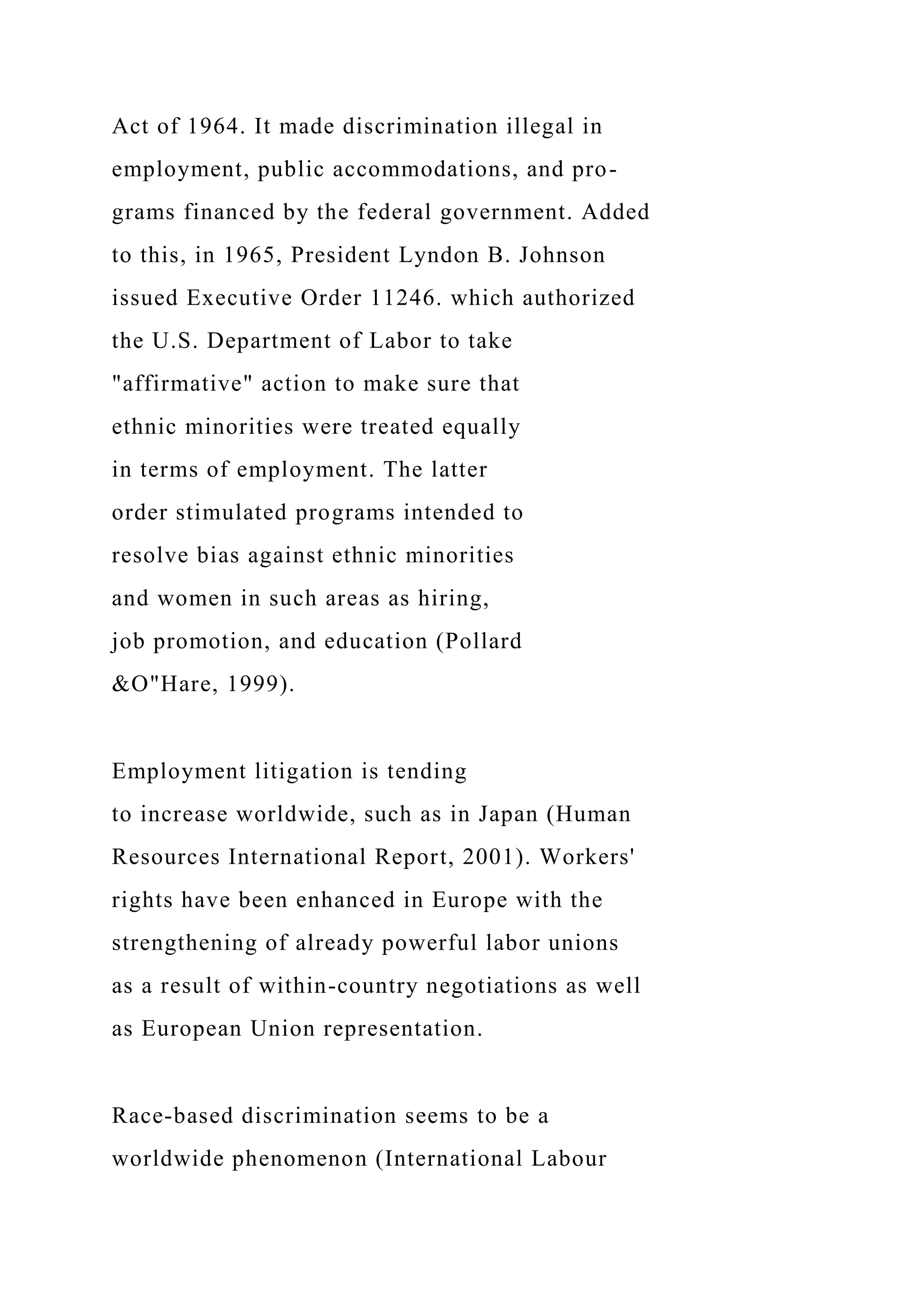
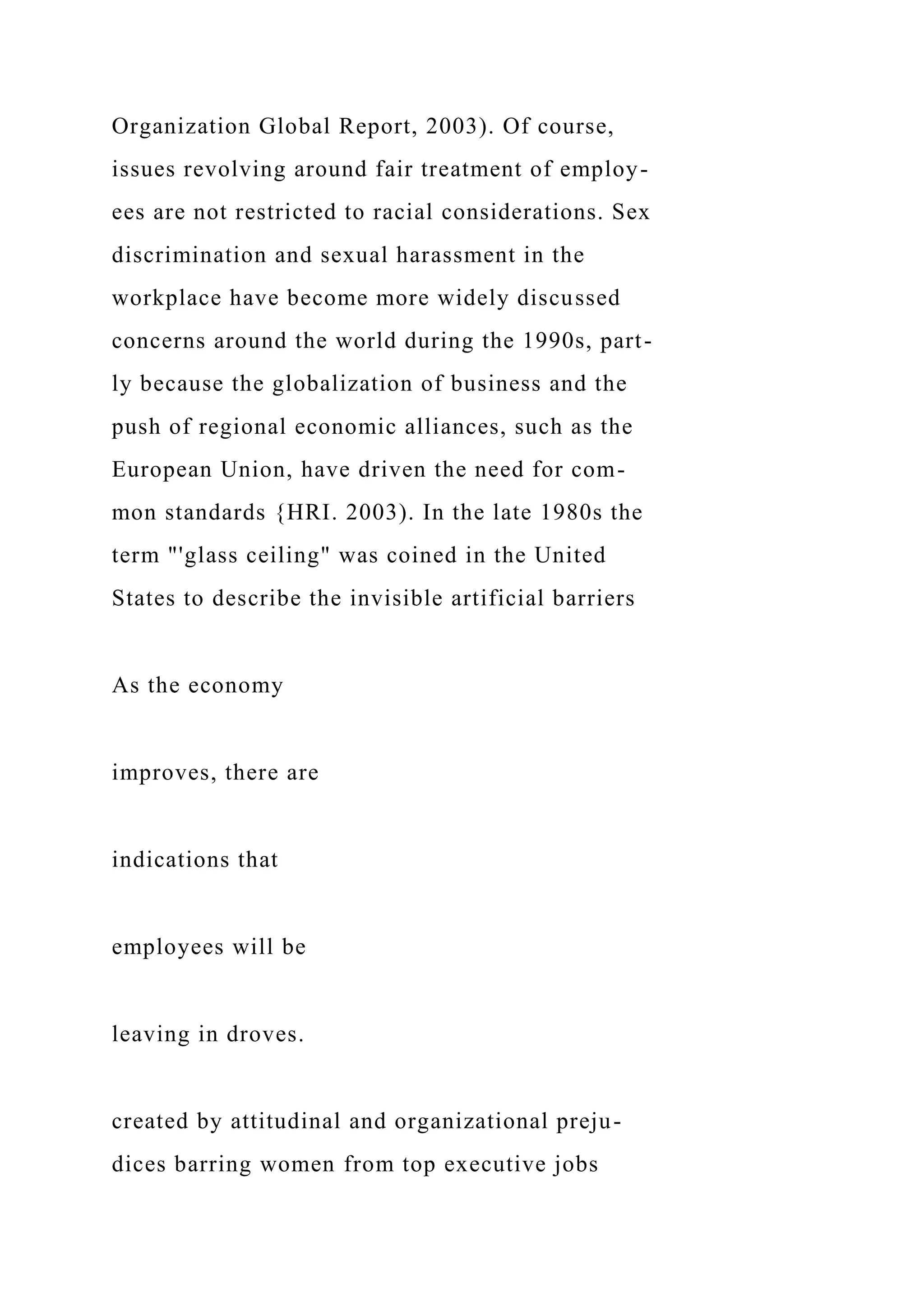
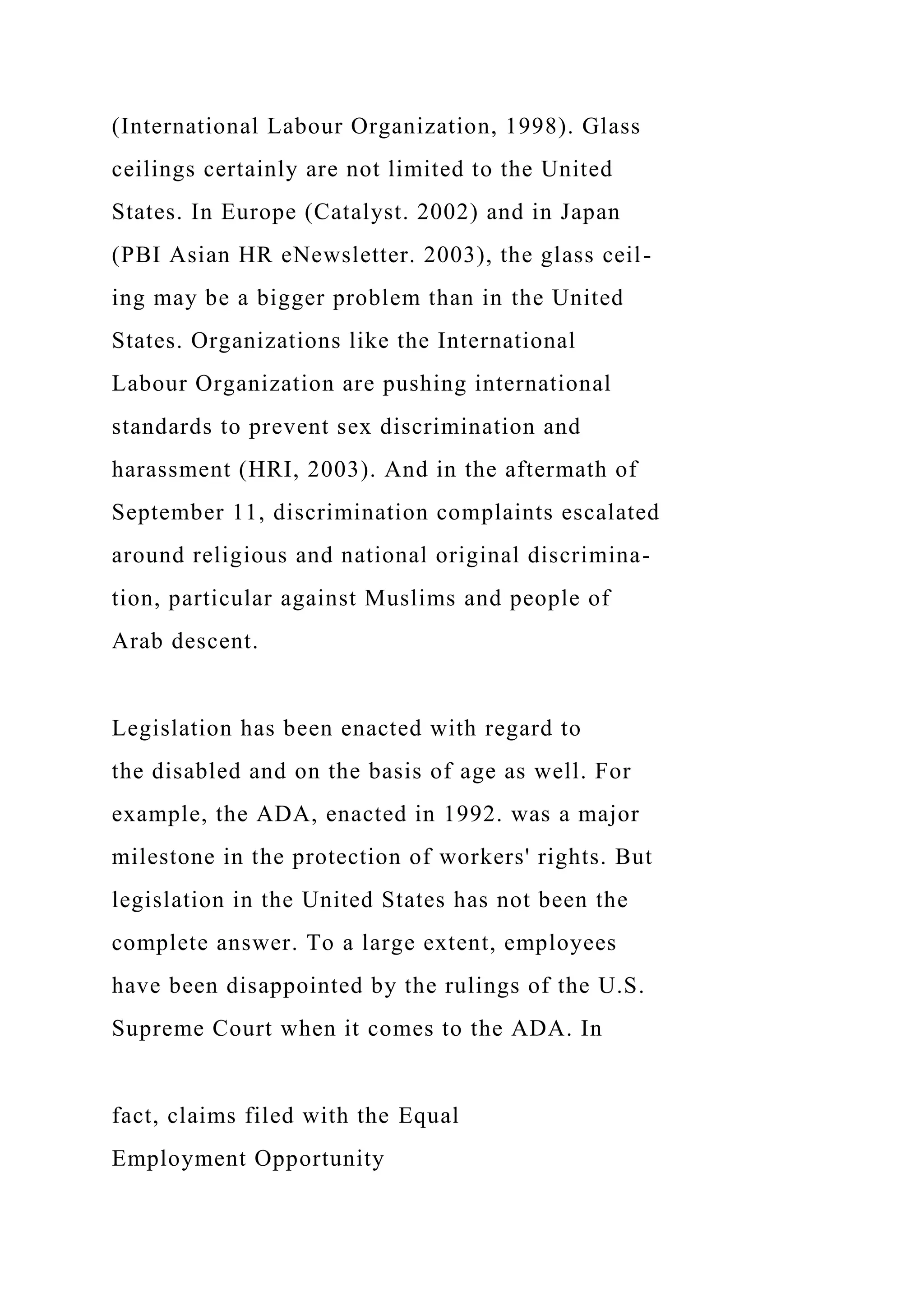
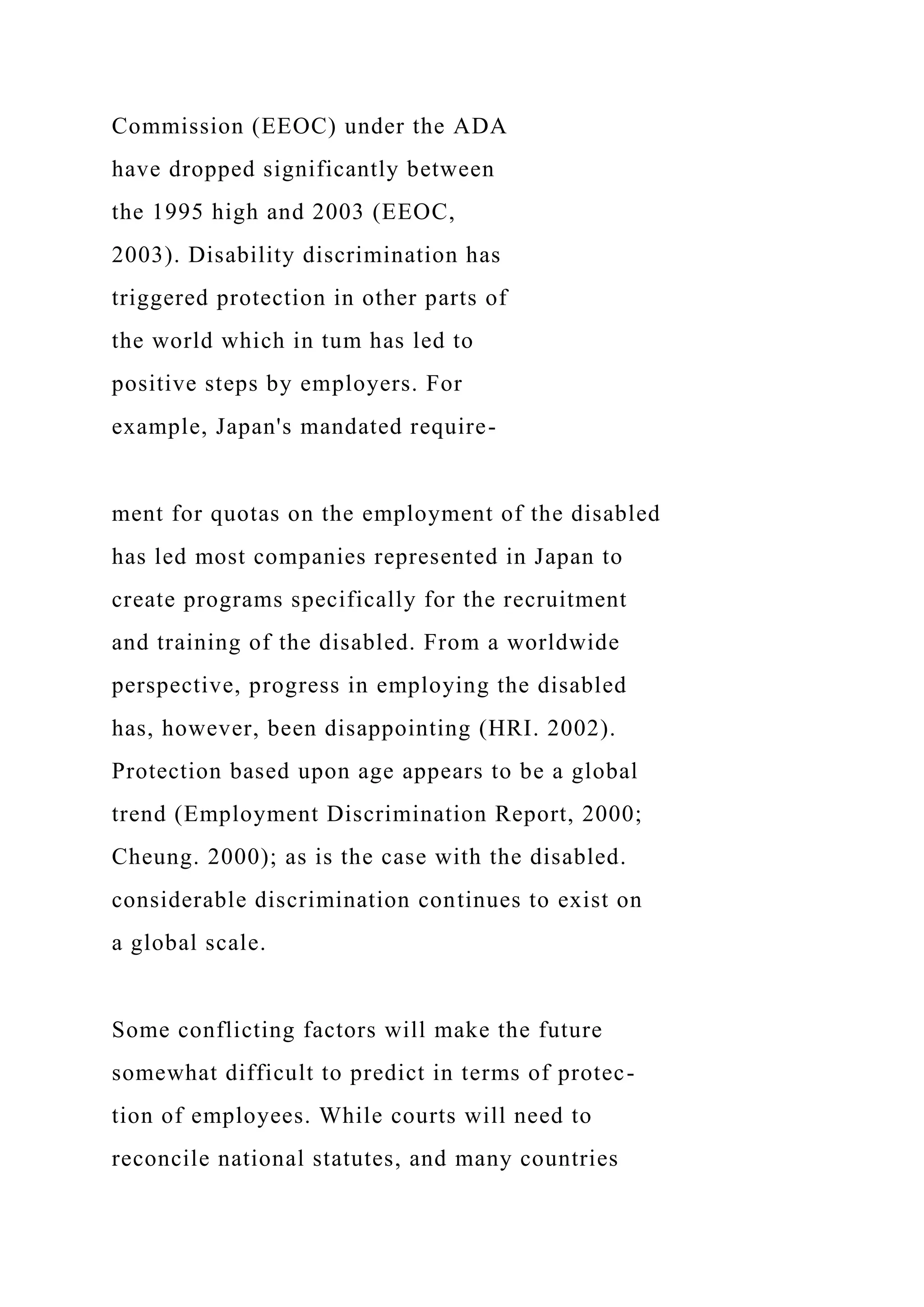

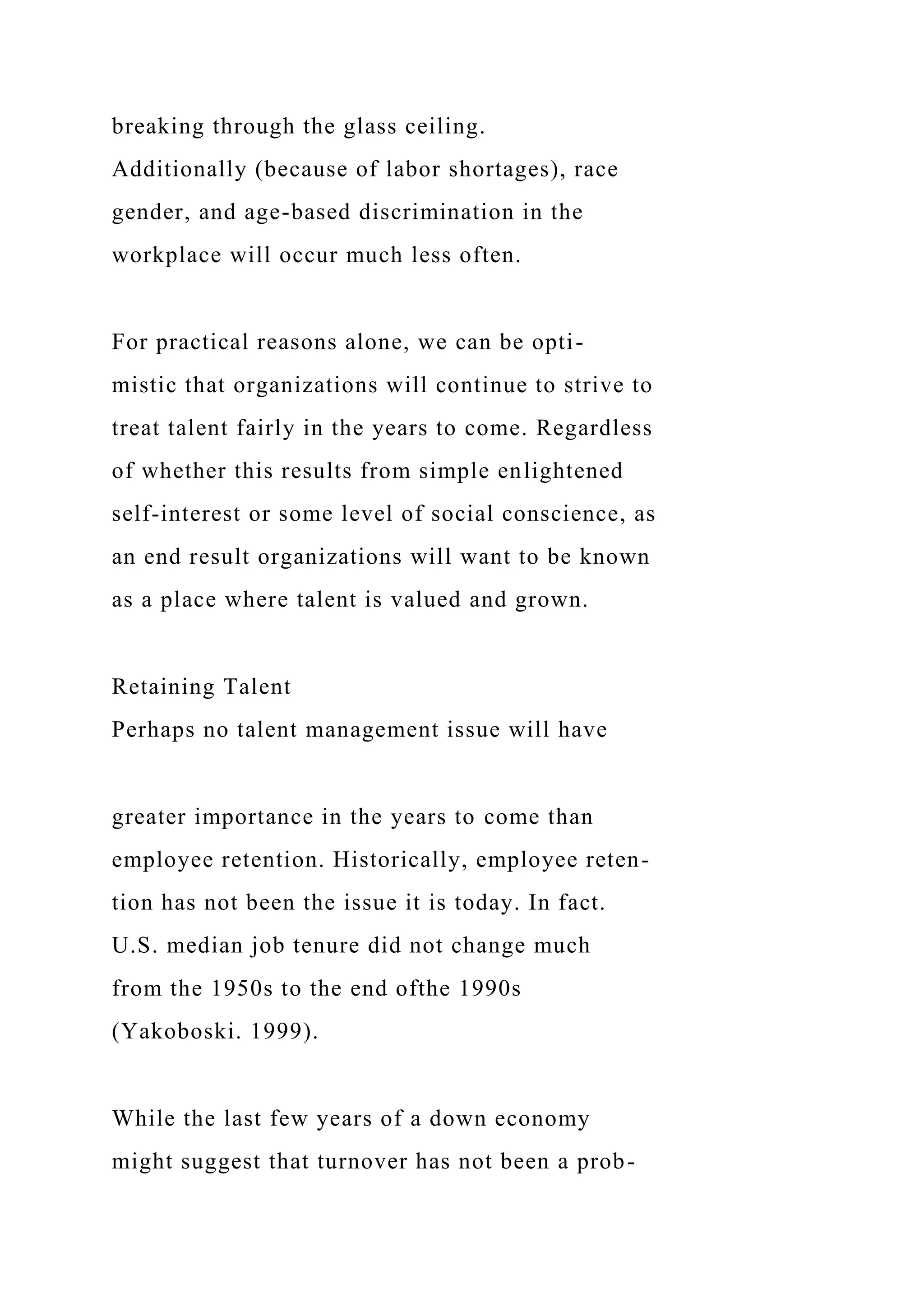
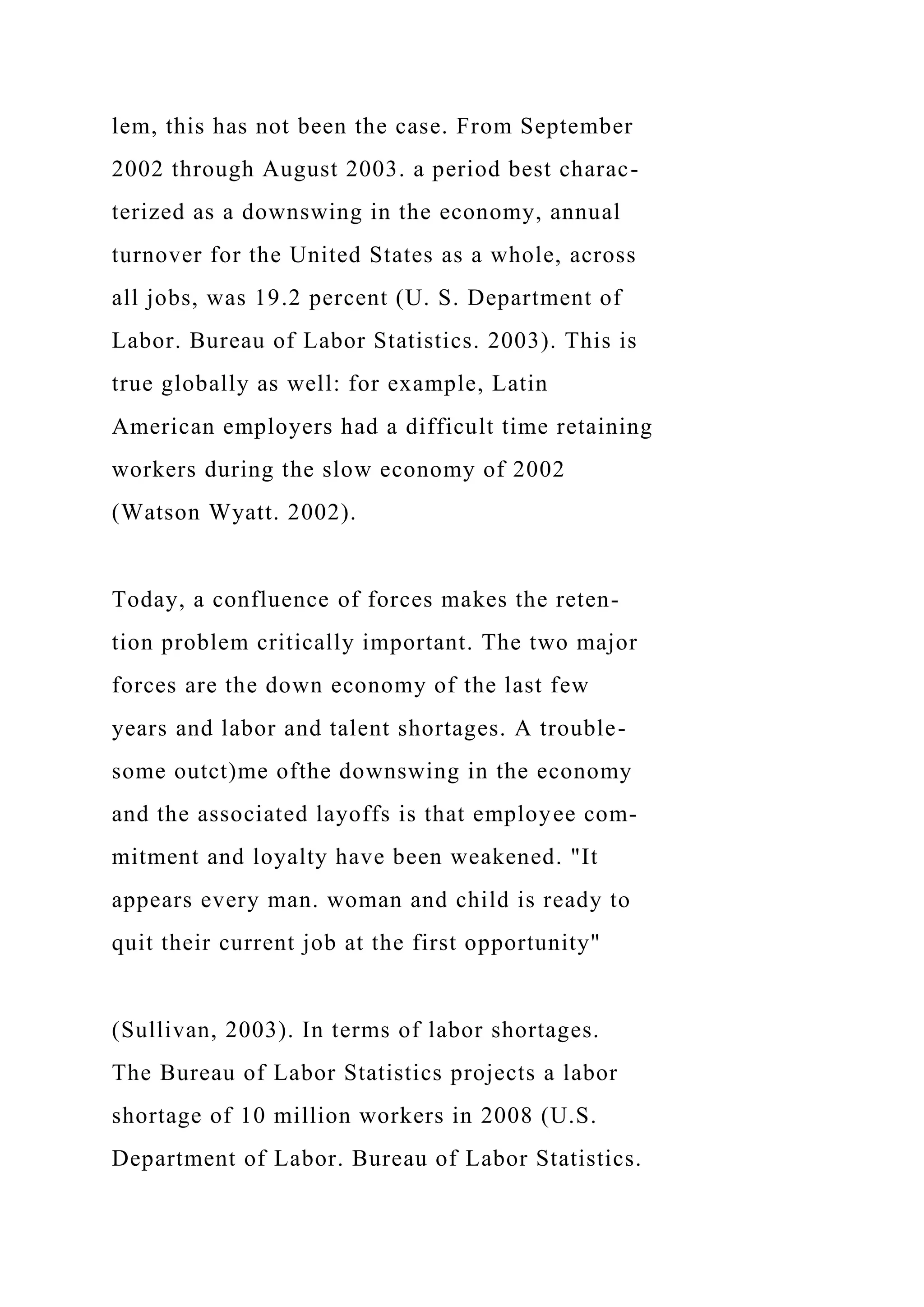
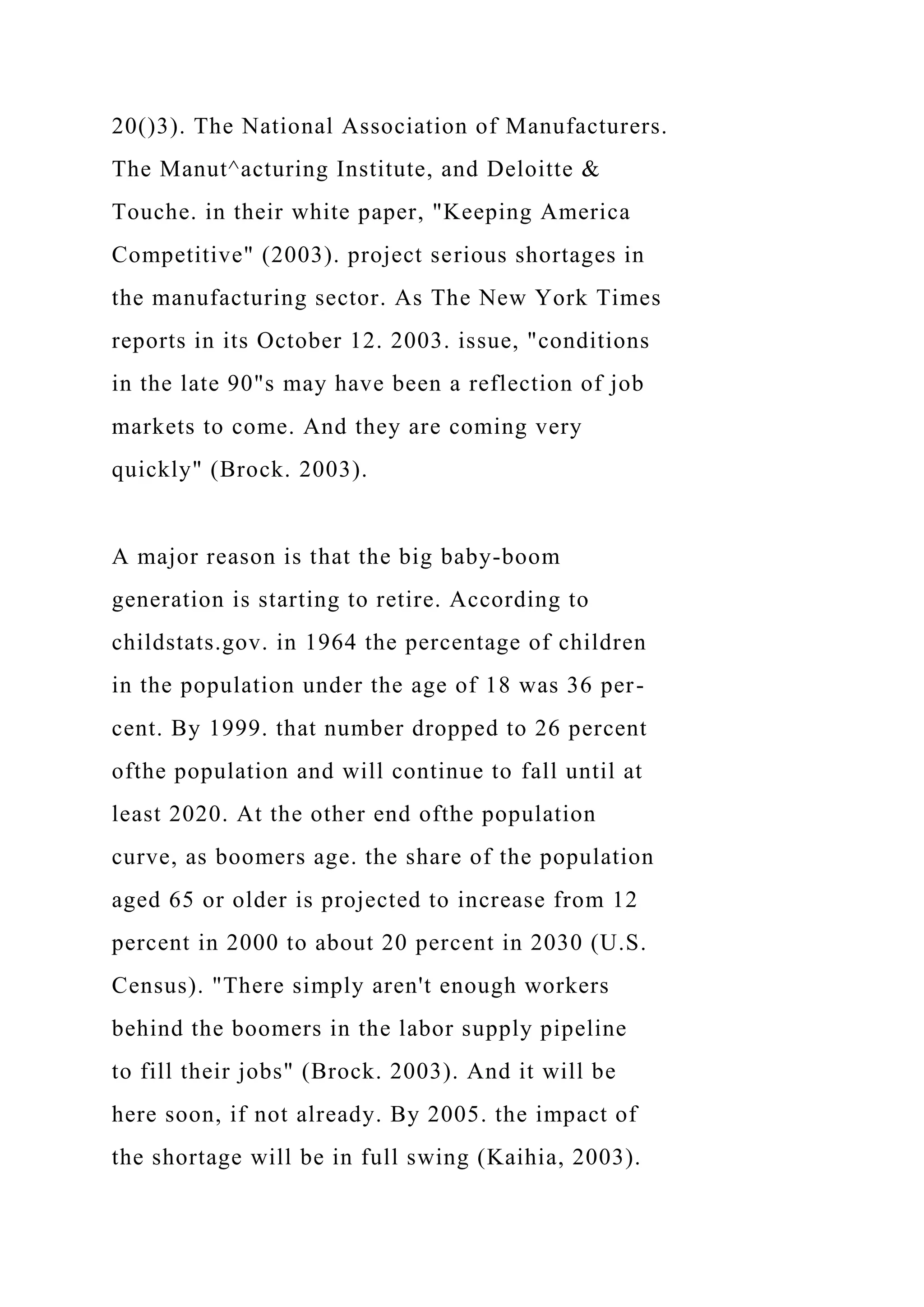
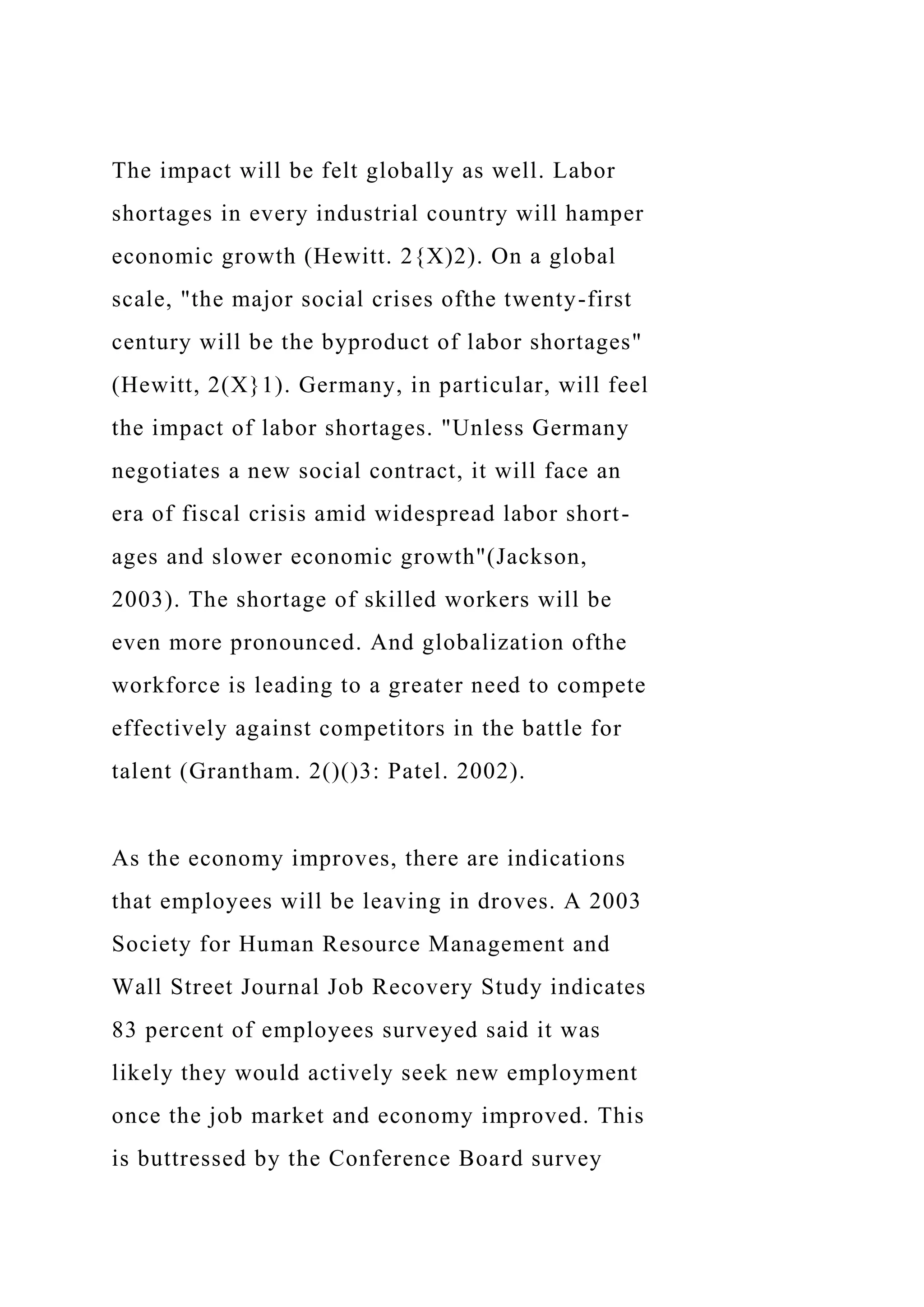
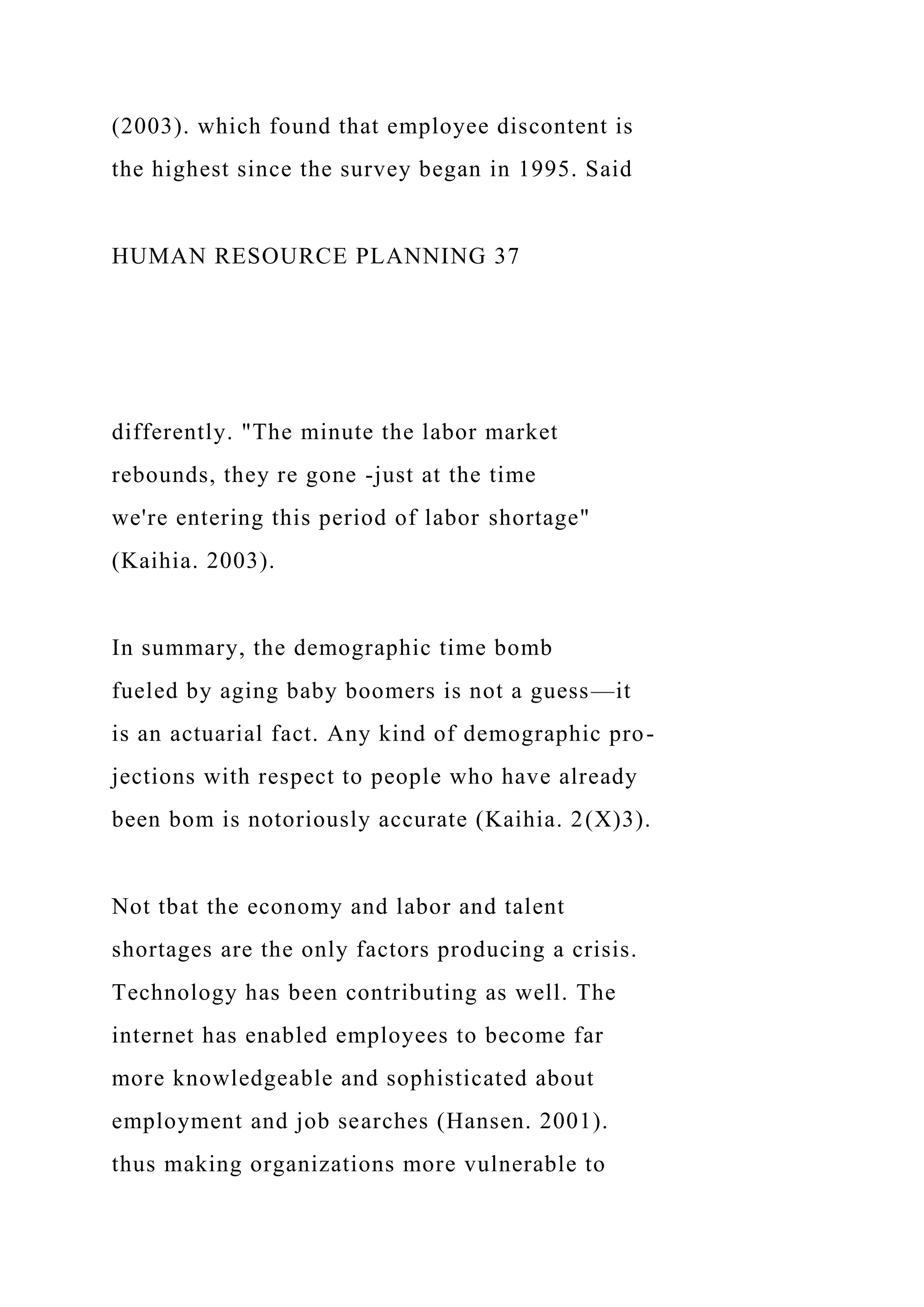
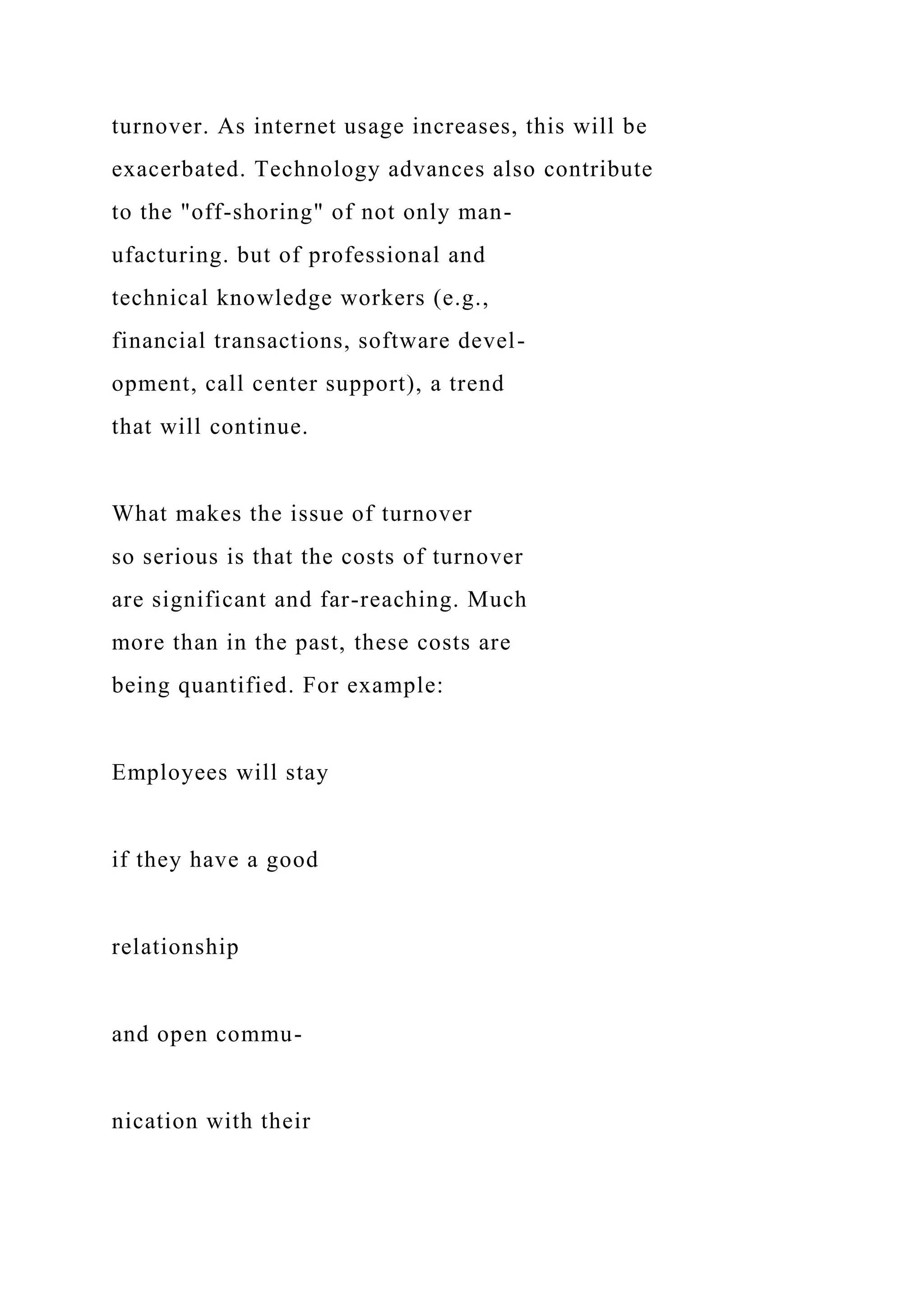
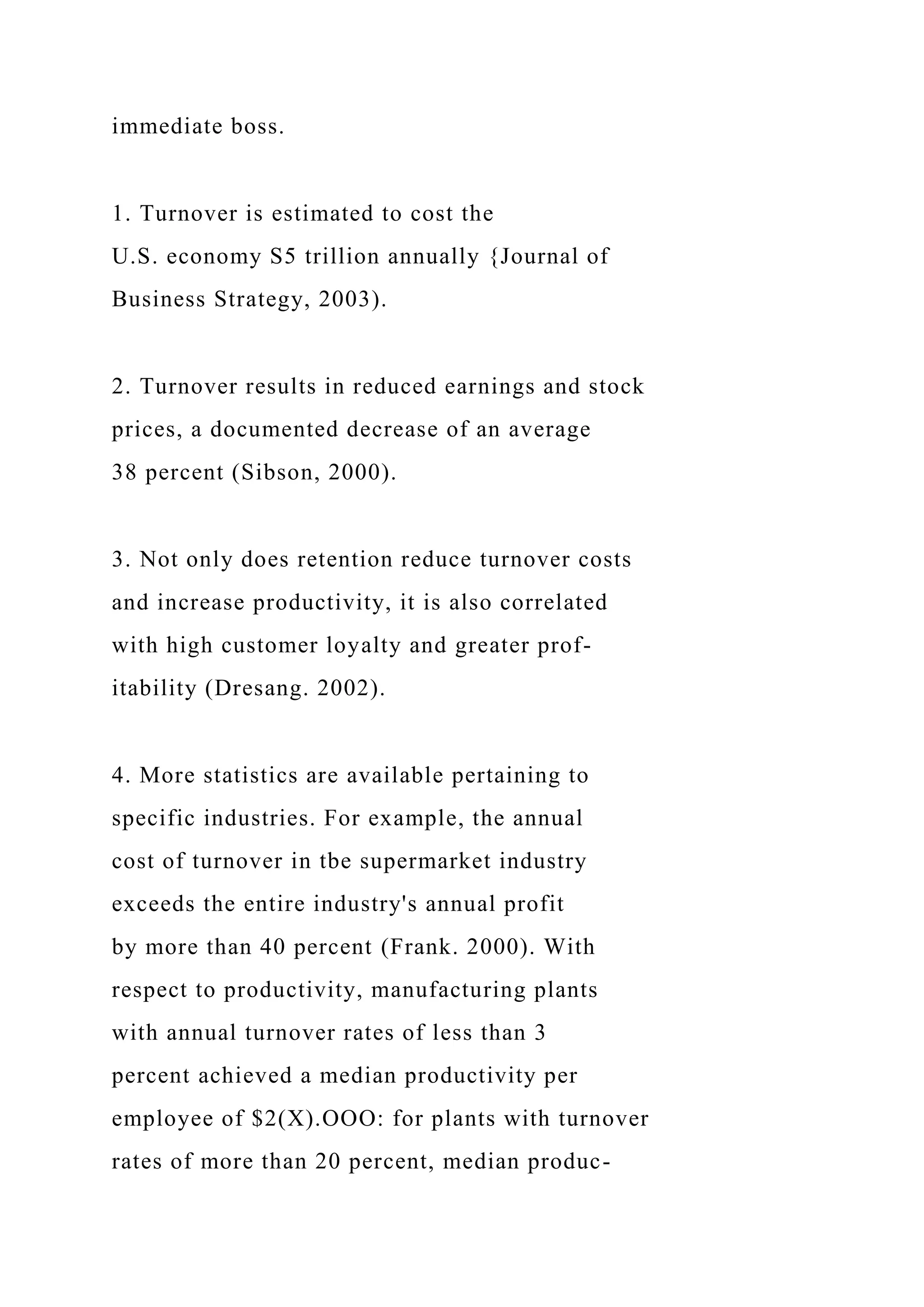
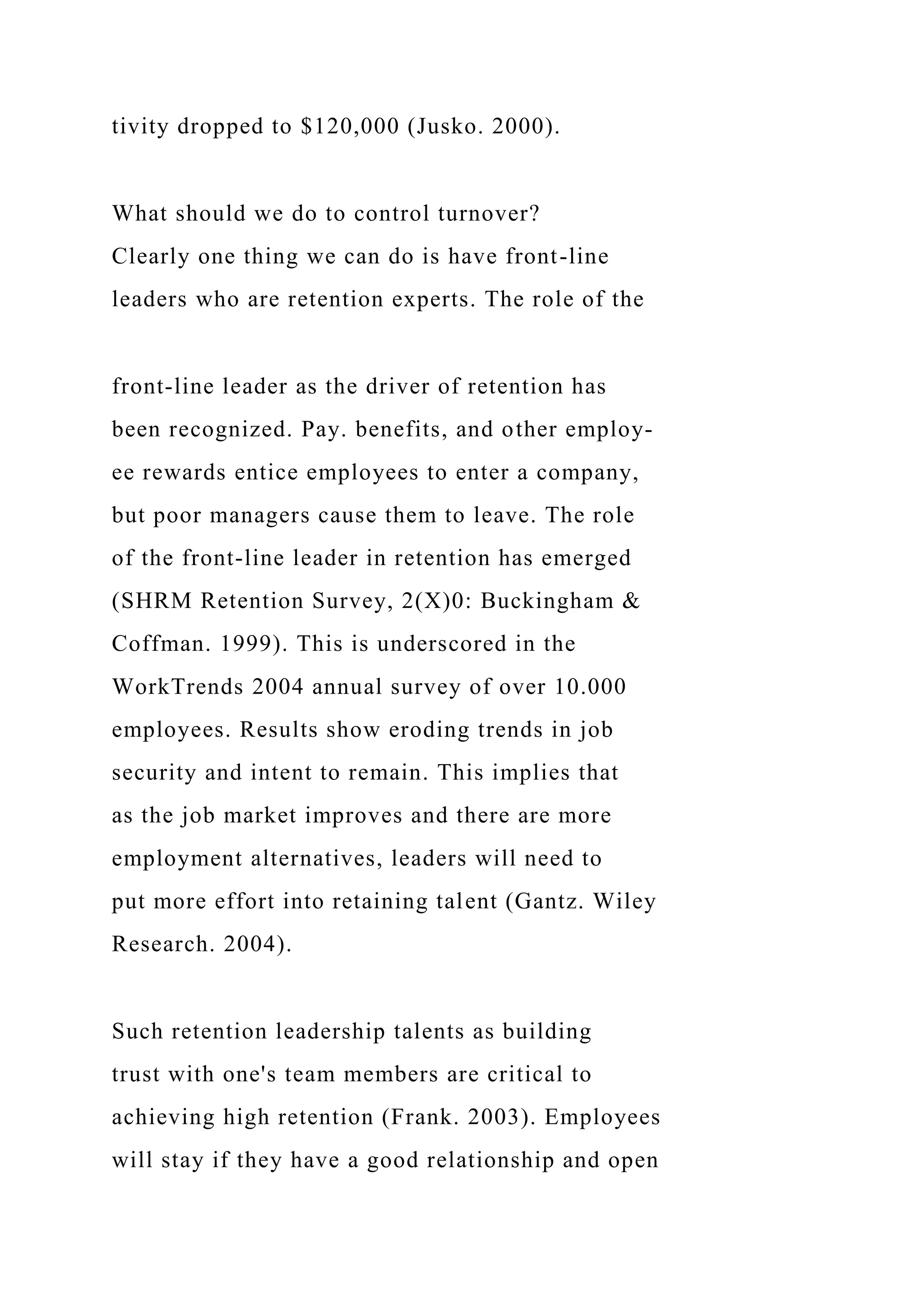
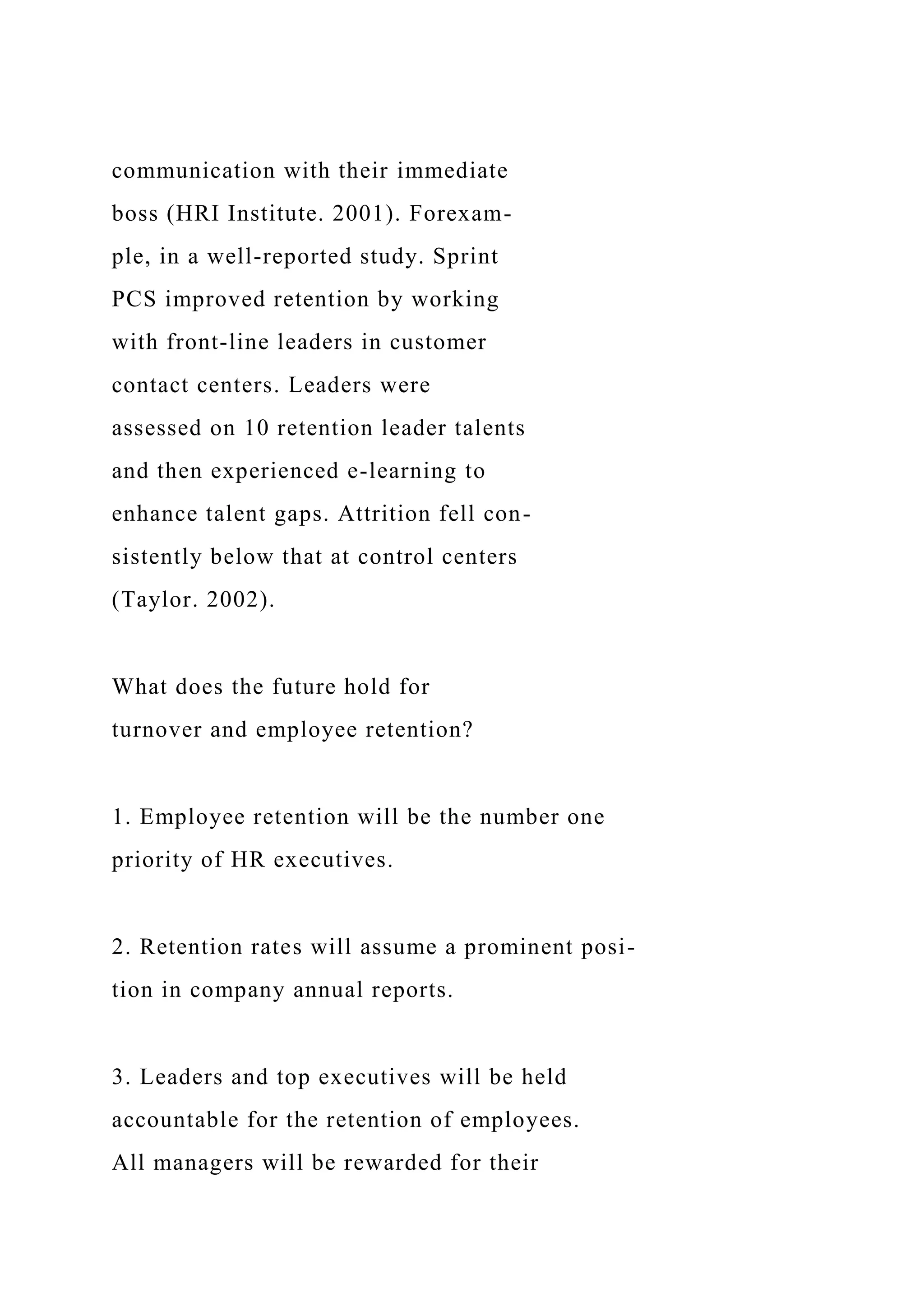
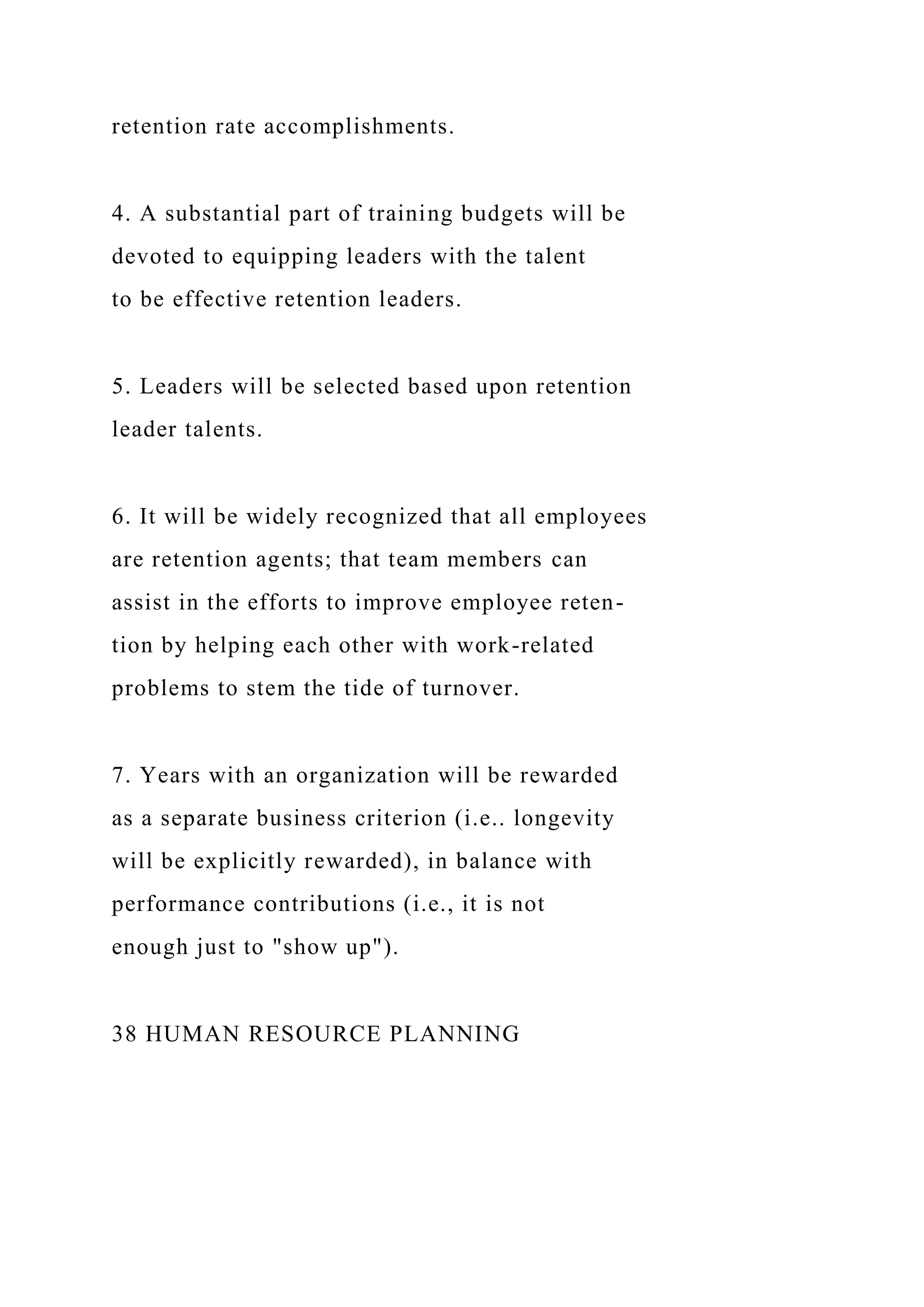
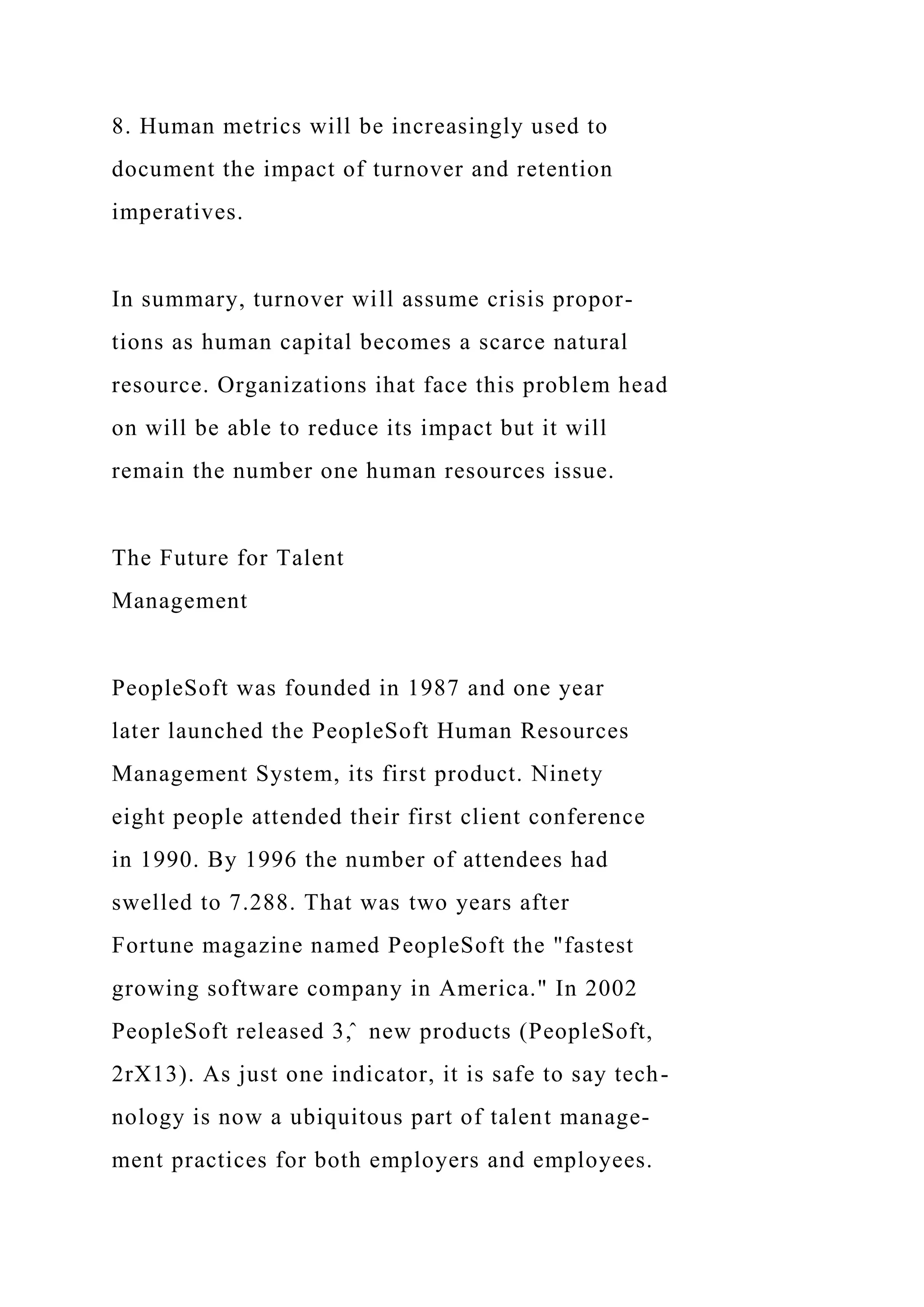

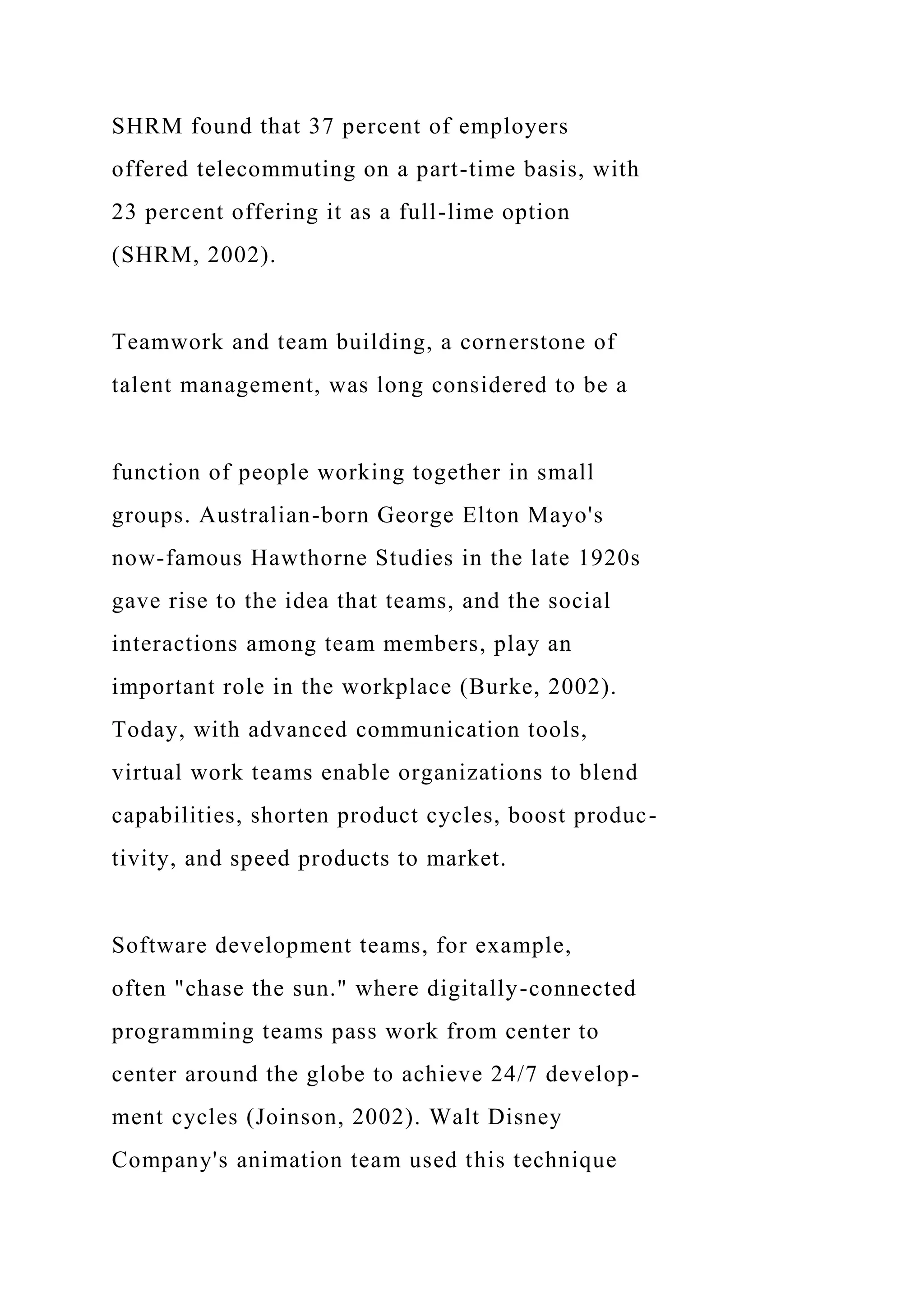
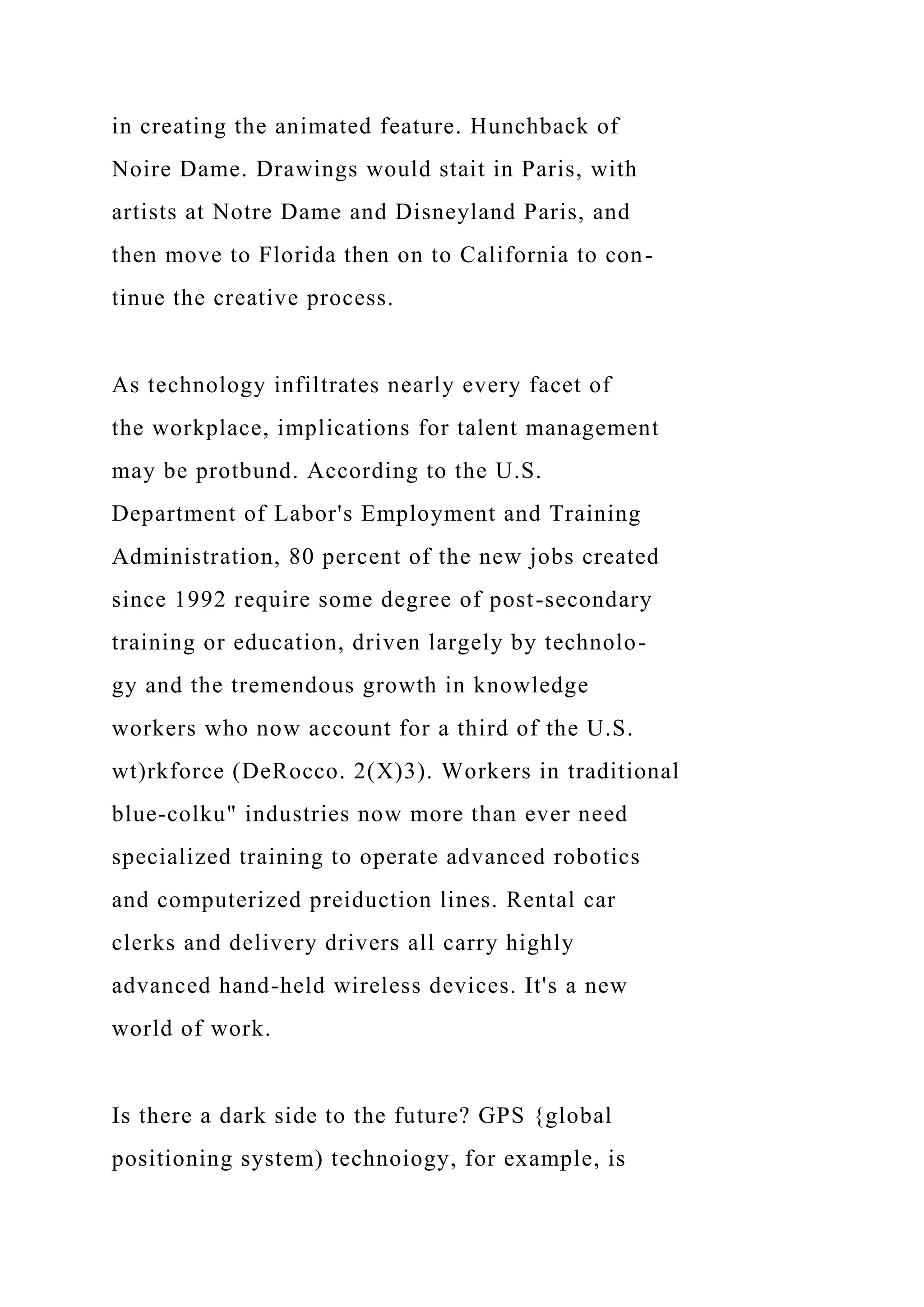
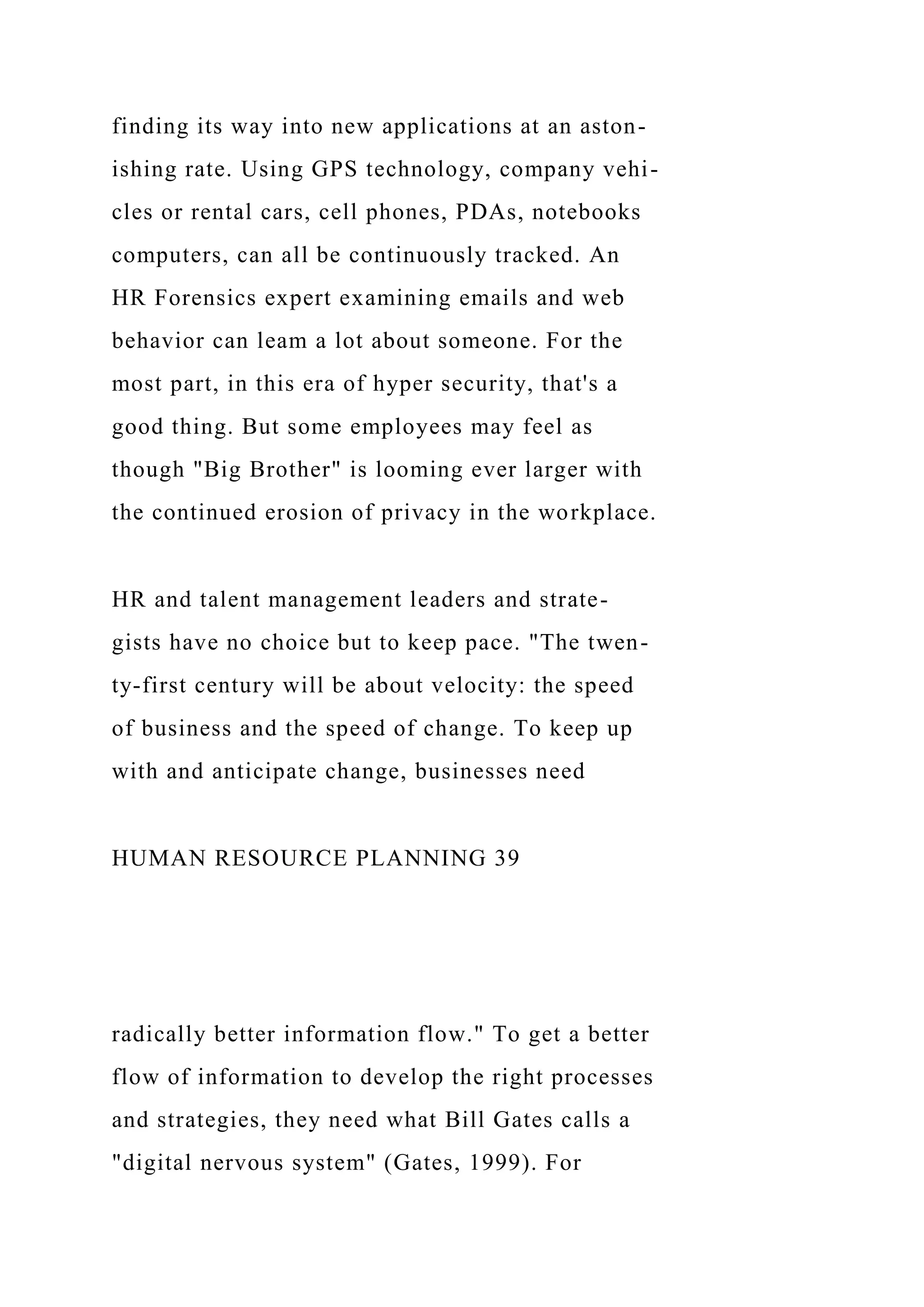

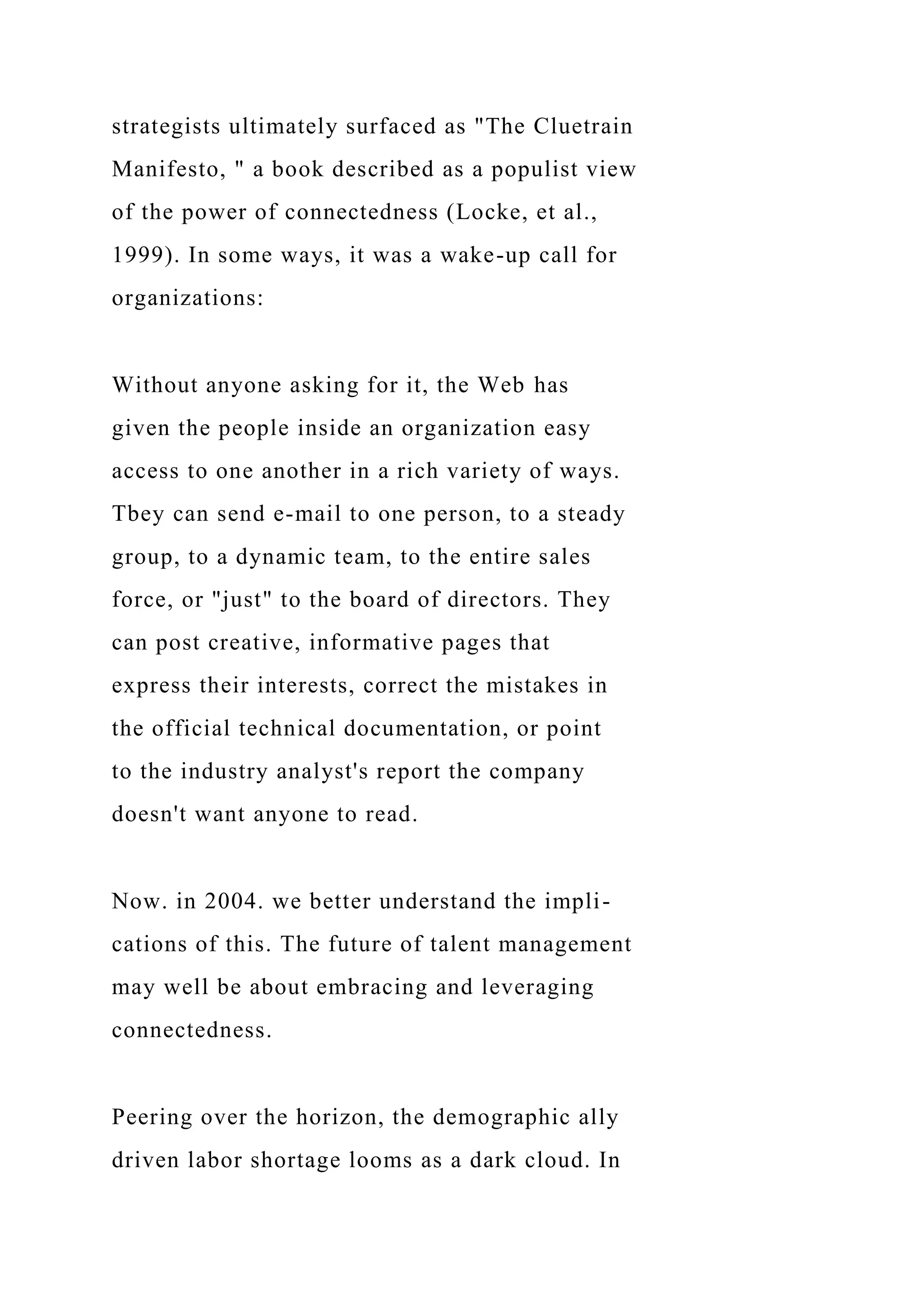
![the next battle for talent there will be winners and
there will be losers. Attracting, motivating, and
retaining talent will take all of the energy and cre-
ativity we can muster.
Biographical Sketches
Fredric I). Frank. PhD. is chief executive officer
of Talent Keepers, the award-winning employee
retention firm. Fred has had over 30 years of
experience in the human resources indu.stry
consultin}' with a large number of private and
public sector organizations In the area of talent
management. Fred is on the Human Resource
Flannint^ Society's (HRFS) editorial review board
for its Human Resource P]mmmg journal, and the
associate articles editor responsible for the talent
management knowledge area. In addition to
TalentKeepers. he has founded two other compa-
nies in the human resources area, both of which
were acquired. Subsequent to the acquisition of
his second company by the Thomson Company.
Fred was head of acquisitions for a division of
Thomson. Fred has a BA from Michigan State
University, and MS and PhD degrees in industrial
organizational psychology from Wayne State](https://image.slidesharecdn.com/reflectionpaper1reflectionpaper2reflectionpaper-221031054129-dcabb3bf/75/Reflection-Paper-1Reflection-Paper-2Reflection-Paper-docx-113-2048.jpg)
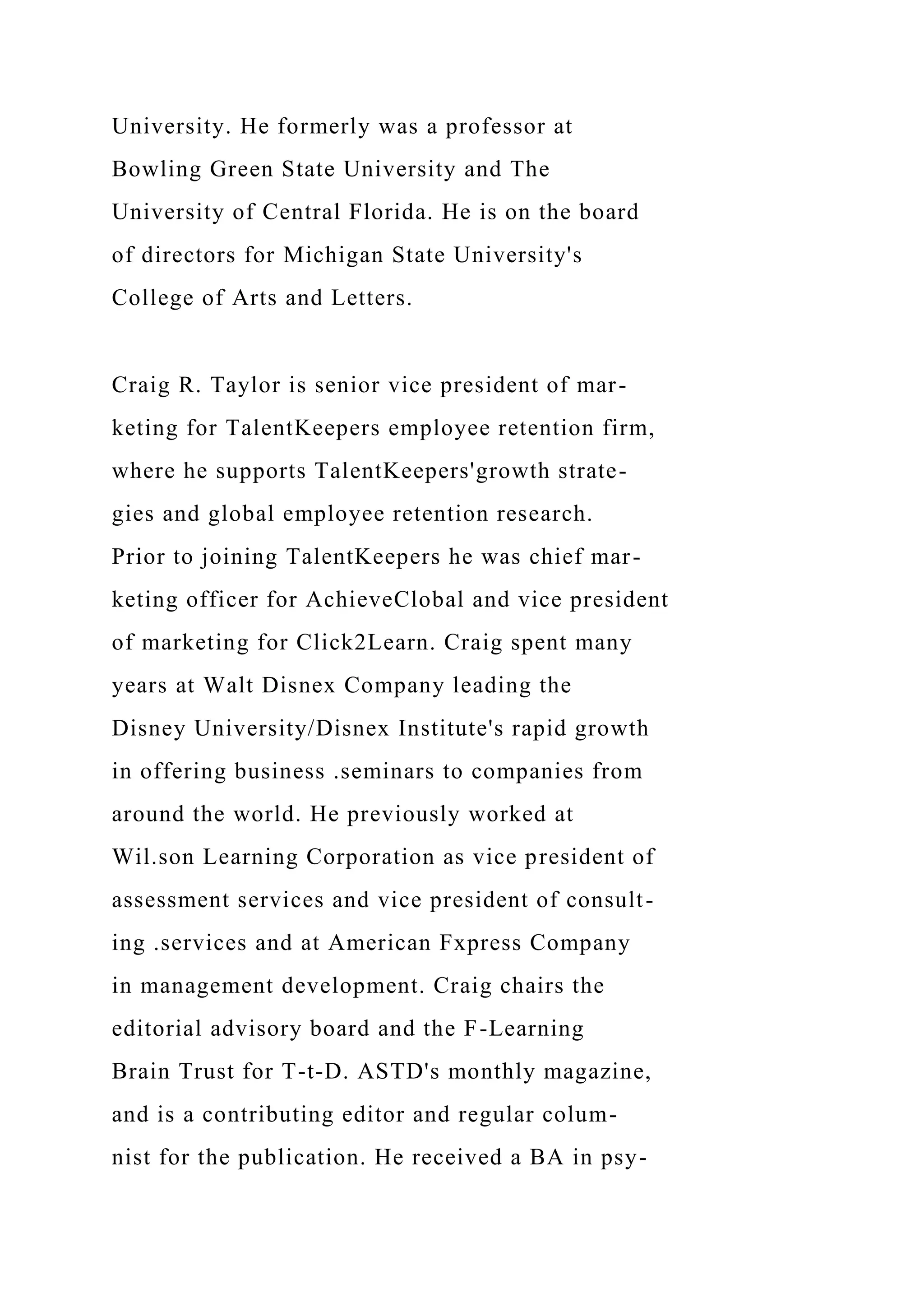
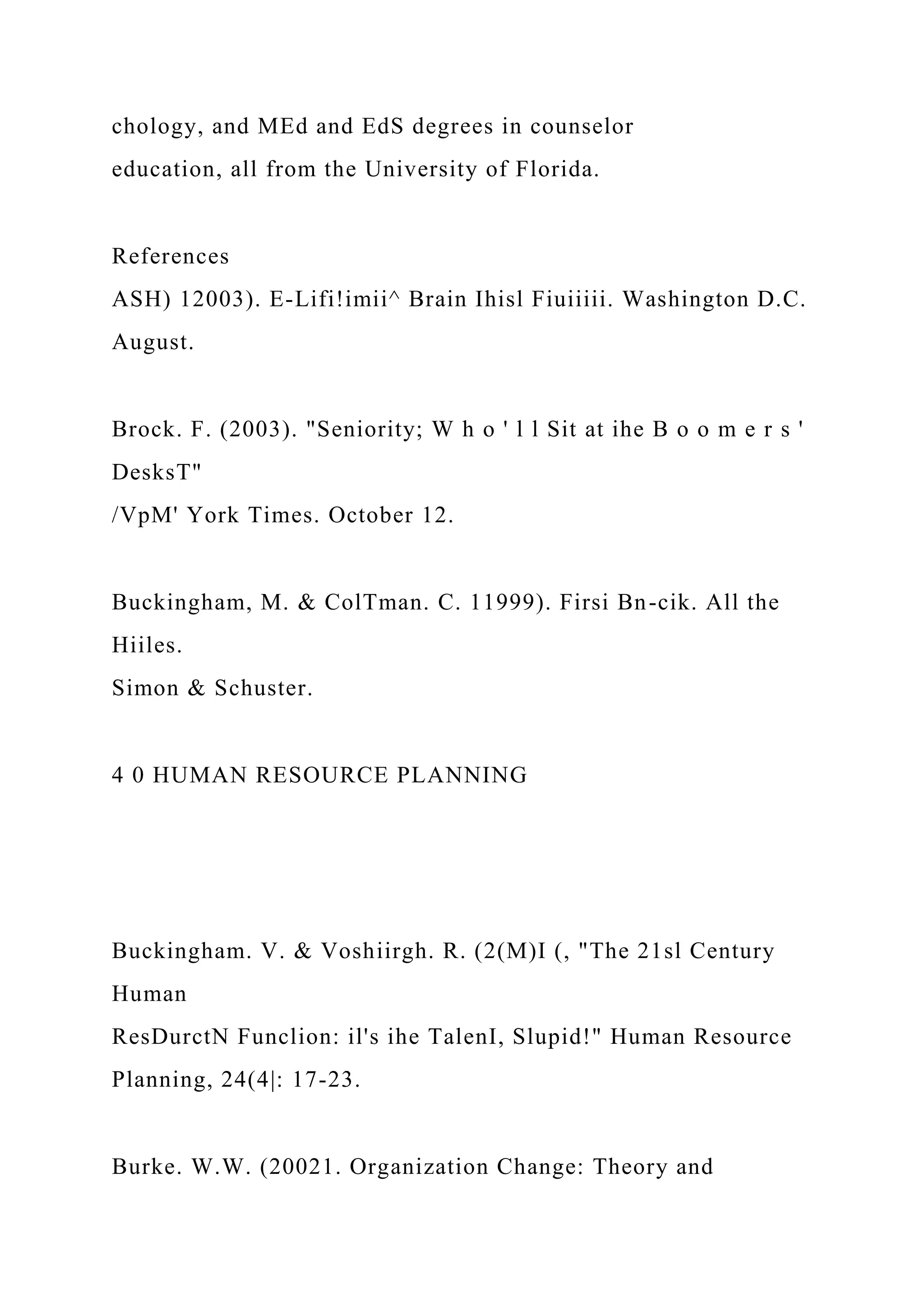
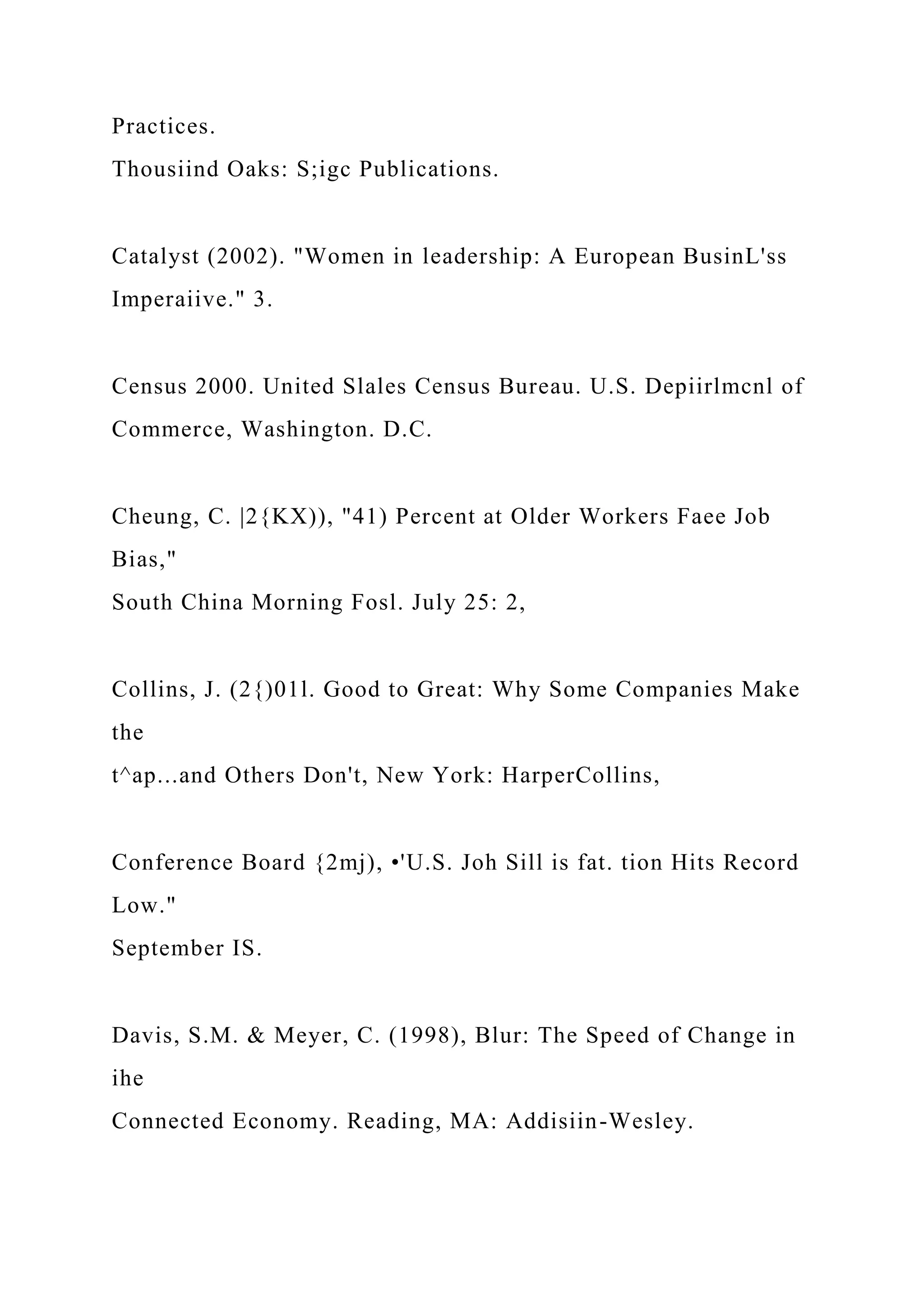
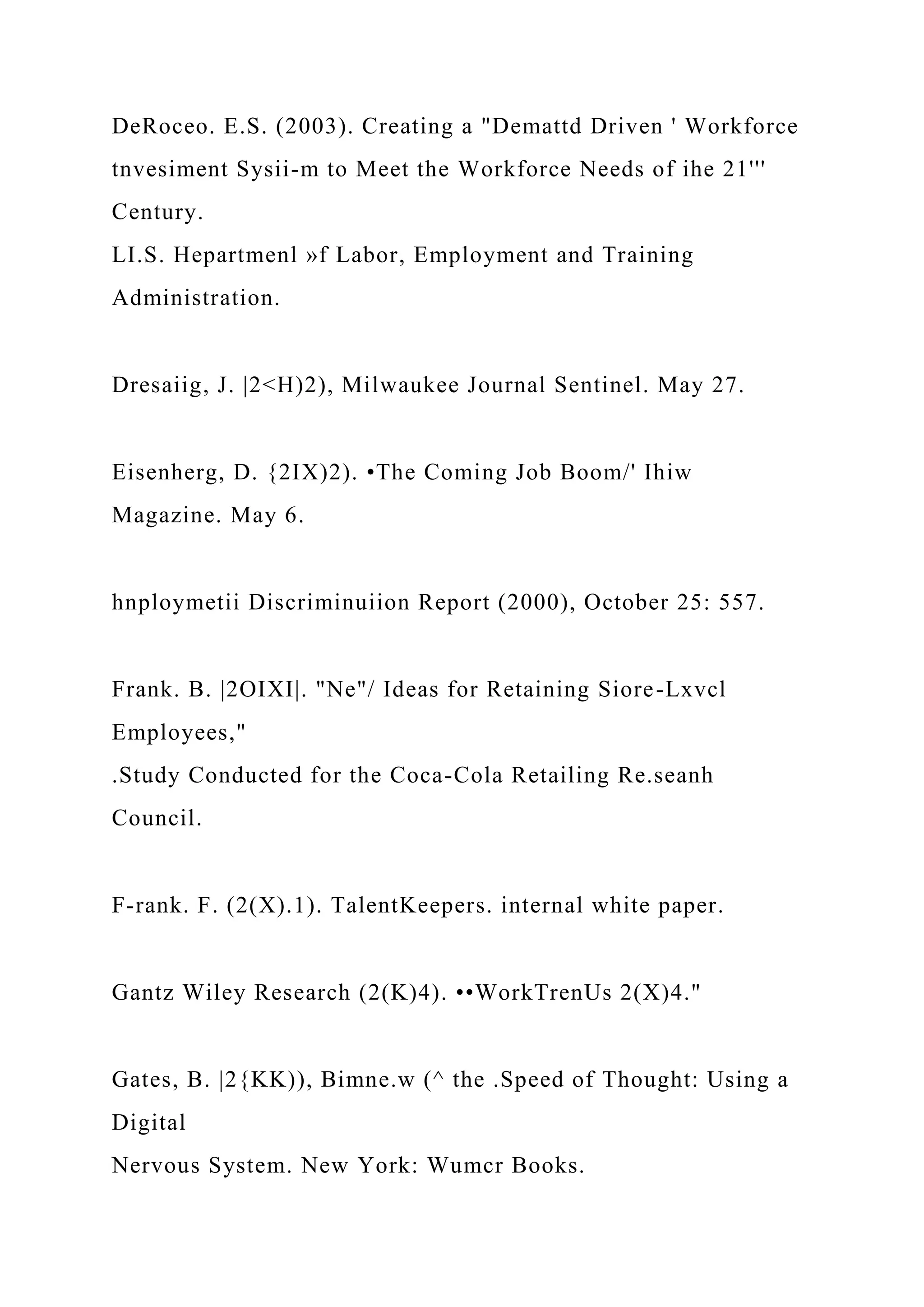
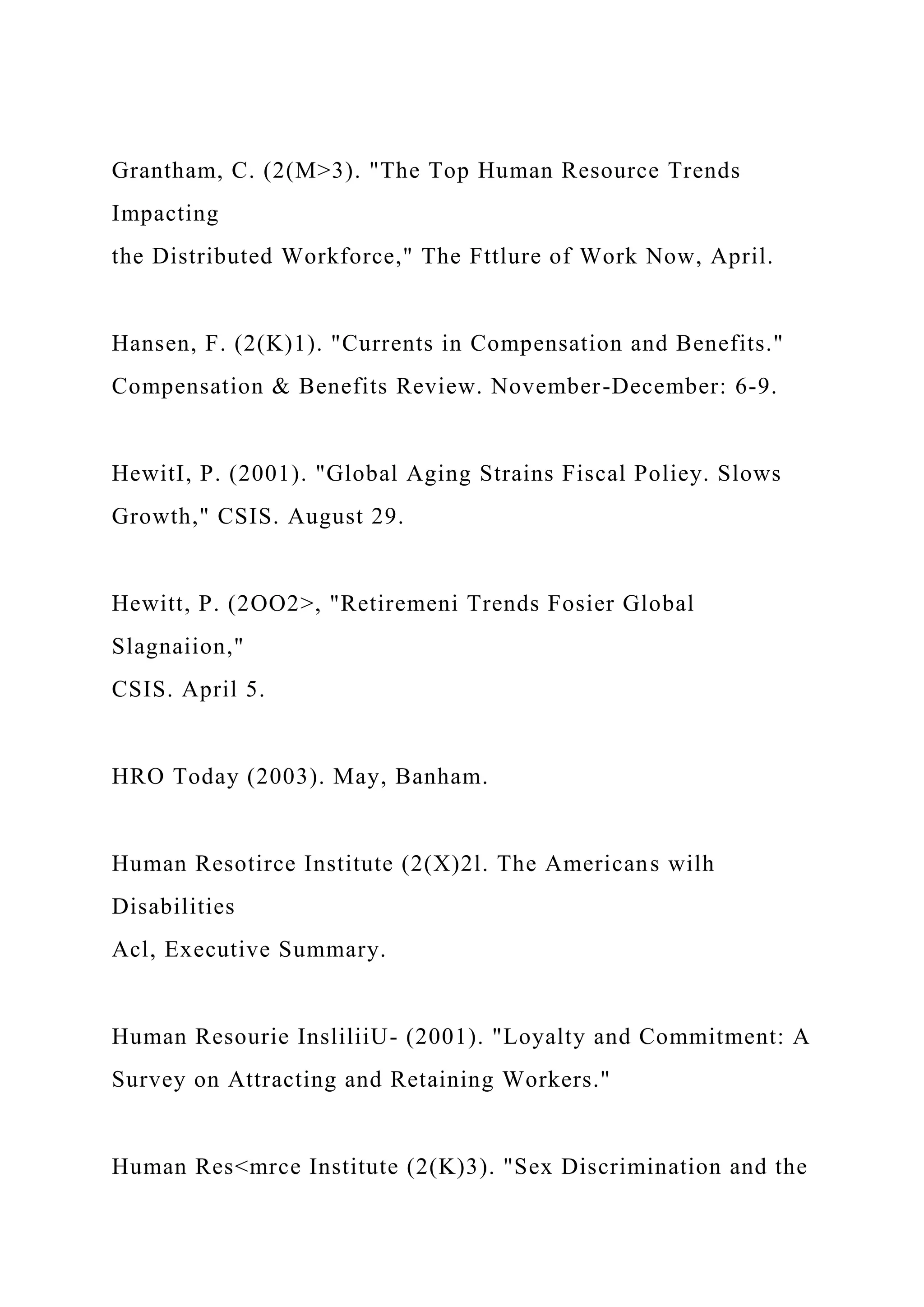
![Workplace, Global Perspective."
Hiinum Resources International Report {IW)]). Inicrnet, April
13,
IDC (2(H)3). Begin Acl II: Worldwide and IJ,.S. Corporate
eleaniing
Foreca.ti 2002 - 2006 (Report #28679). January,
International Uihour Organization (2003). Global Repoa, "Time
for
Equality at Work,"
International Utbimr Organizulion (1998). "Will the Glass
Ceiling
Ever be Broken.' Women in Management: It's Sidl Lonely at the
Top," February.
Jackson. R. |2()()3), "Germany and the Challenge ol Global
Aging,"
CSIS. March 5,
Jenkins, W, [ 1999). "Why We Must Retain Affimiiitive
Action," USA
Today. September: 60-62.](https://image.slidesharecdn.com/reflectionpaper1reflectionpaper2reflectionpaper-221031054129-dcabb3bf/75/Reflection-Paper-1Reflection-Paper-2Reflection-Paper-docx-119-2048.jpg)
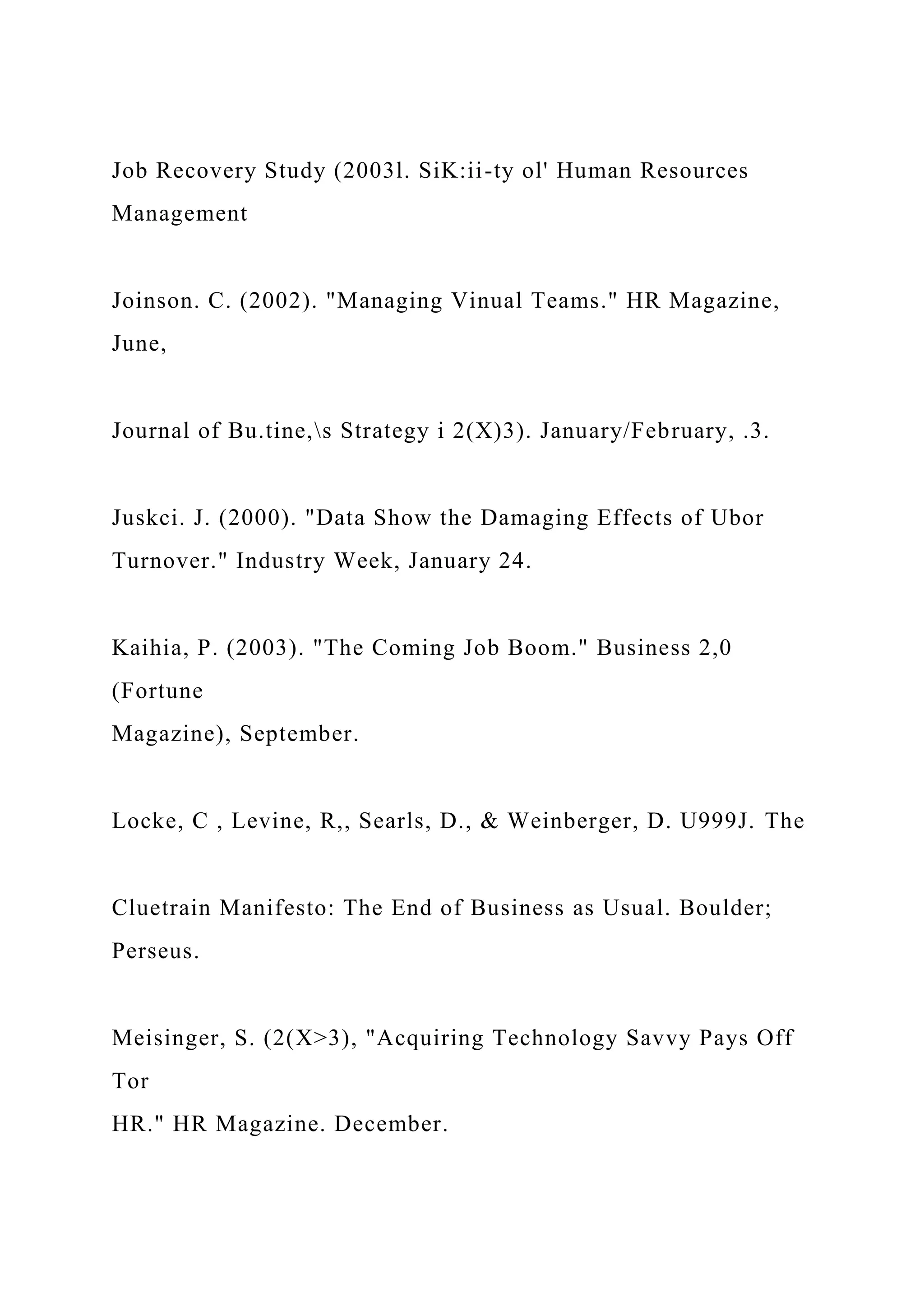
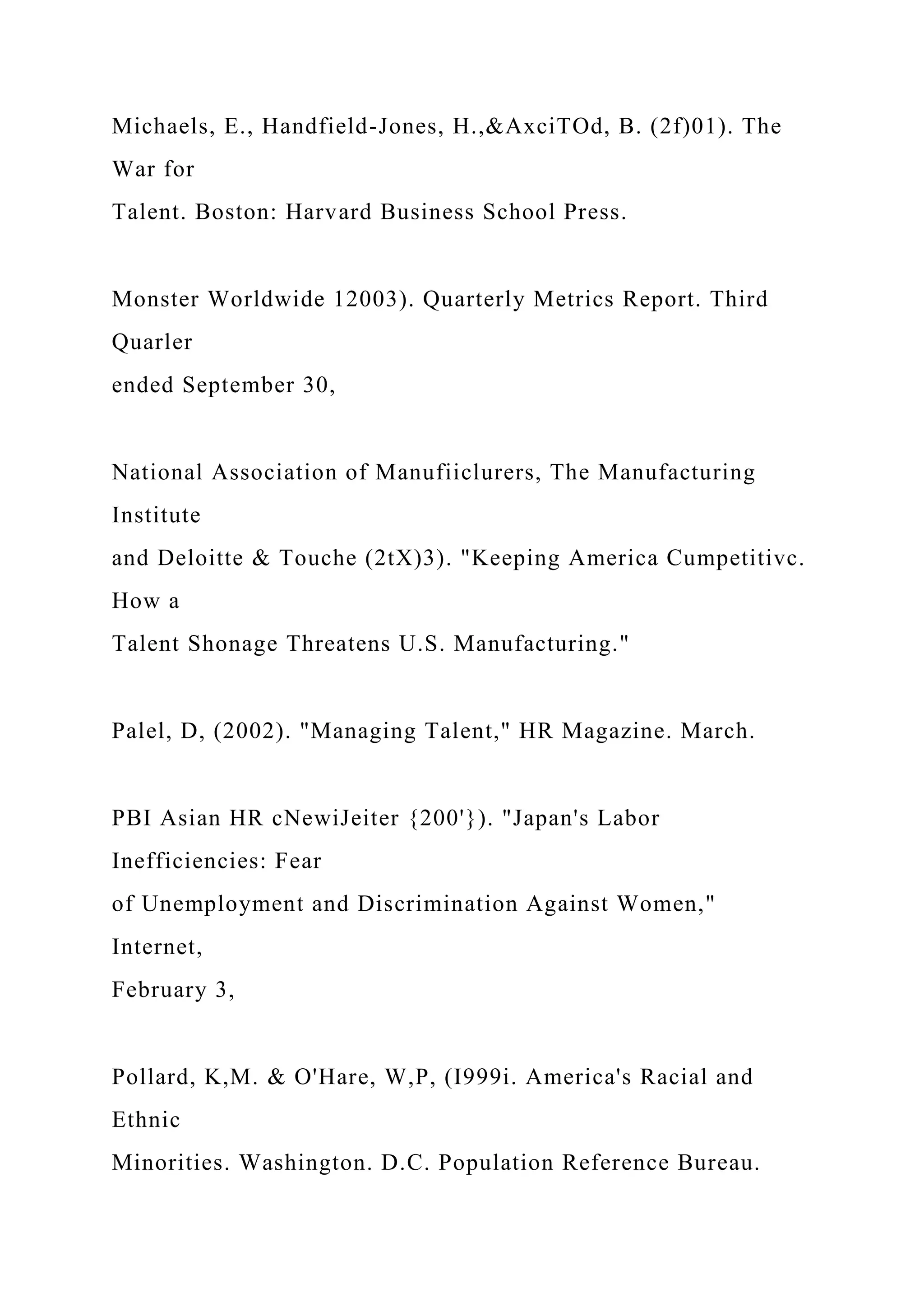
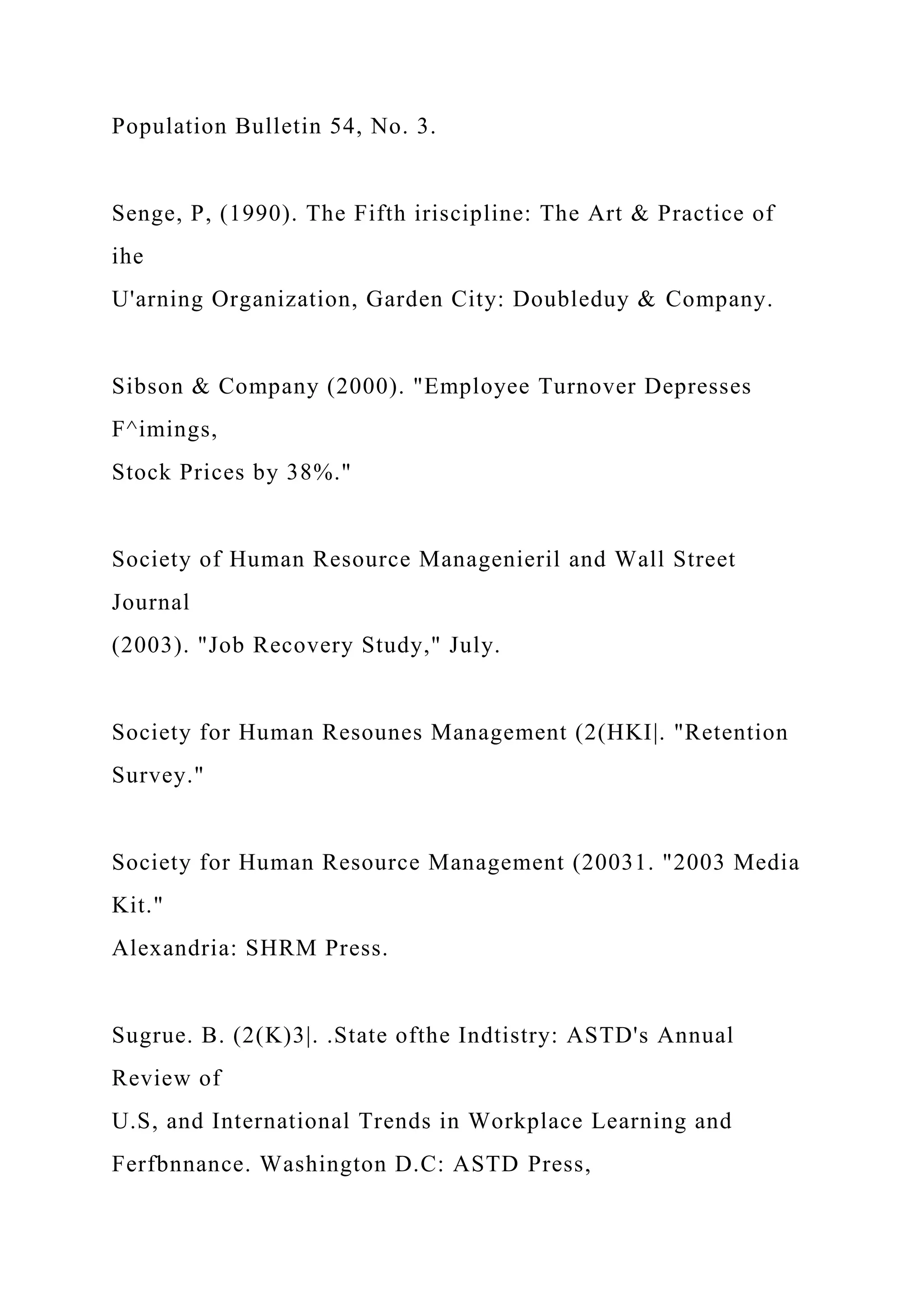
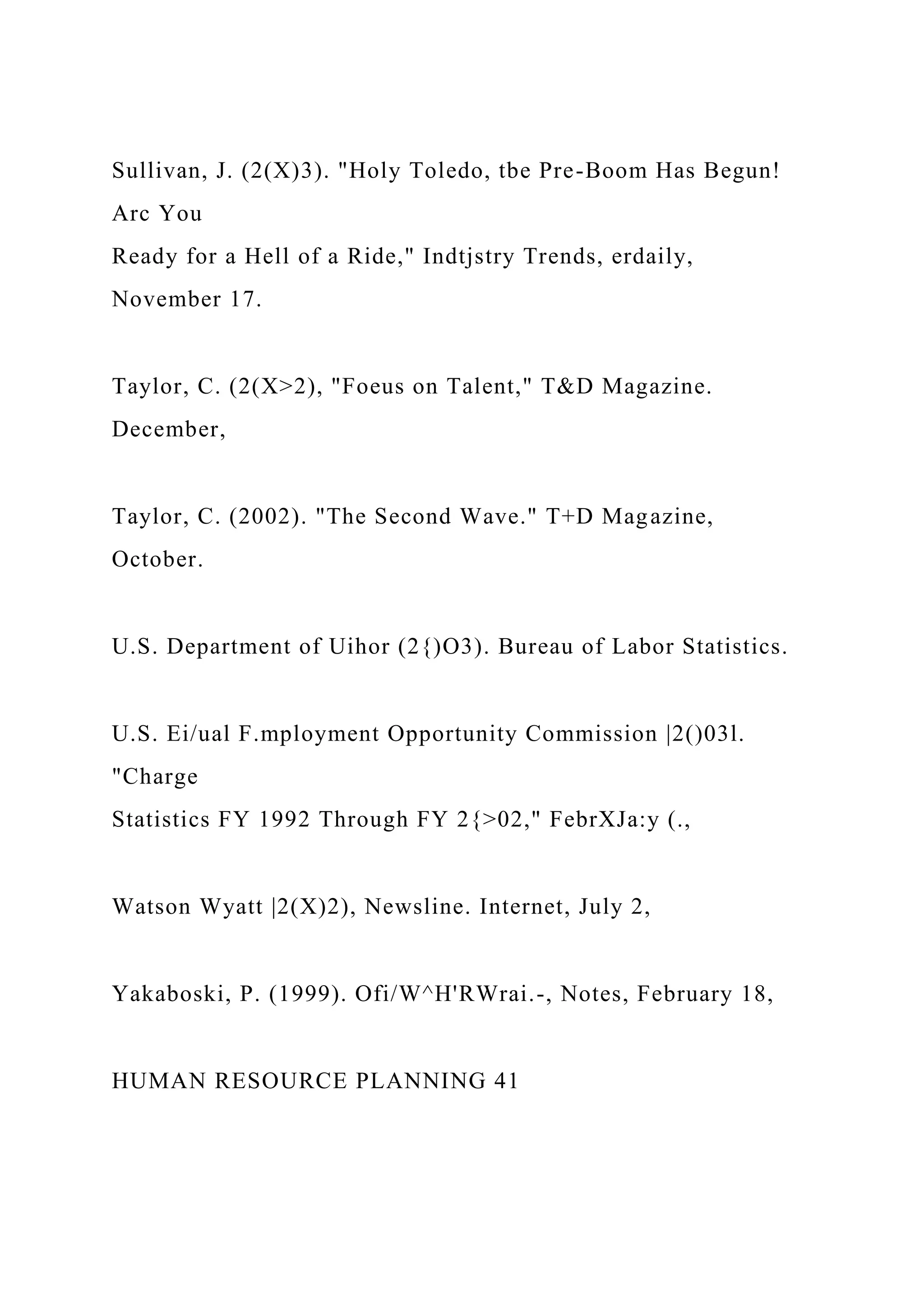
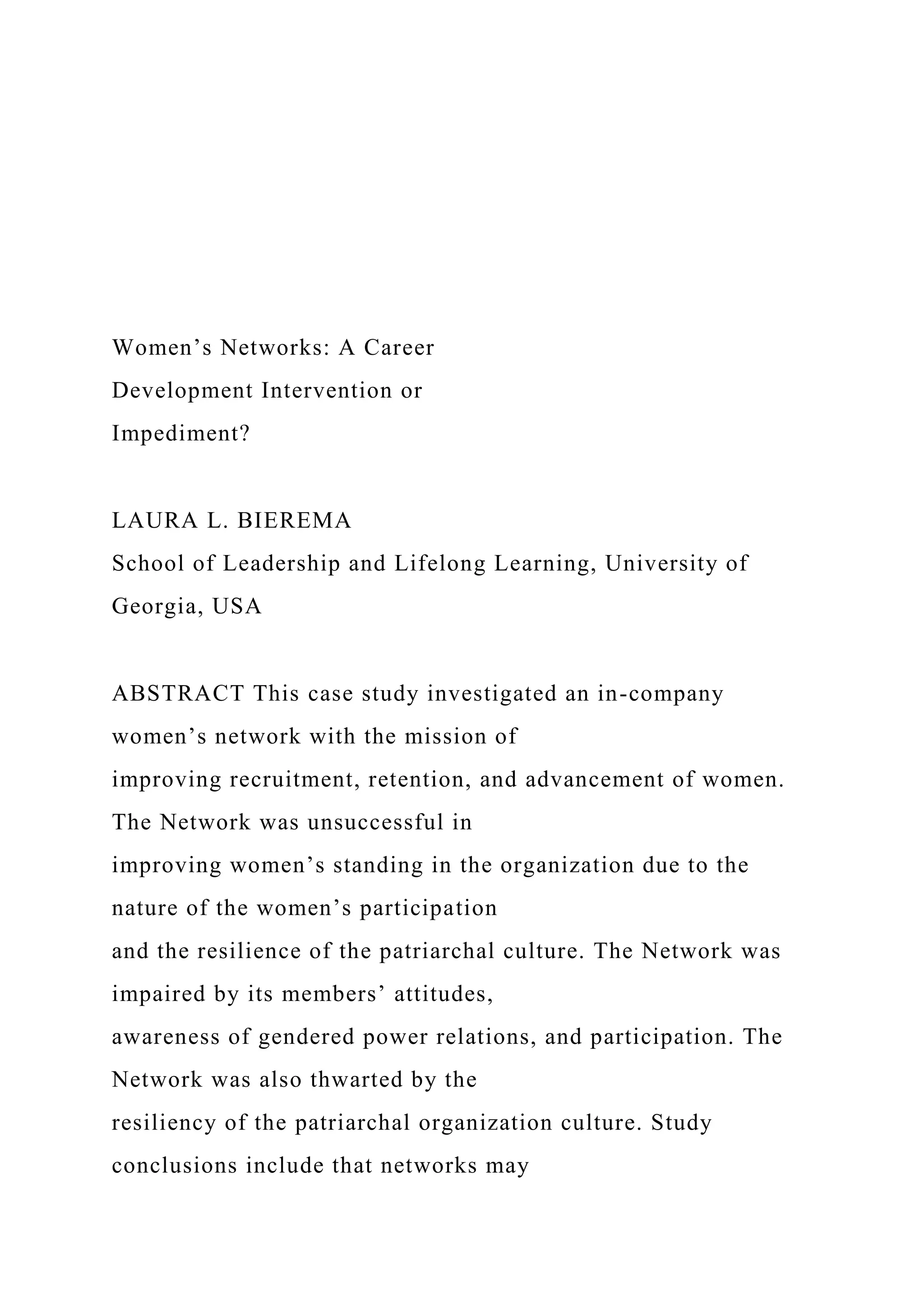
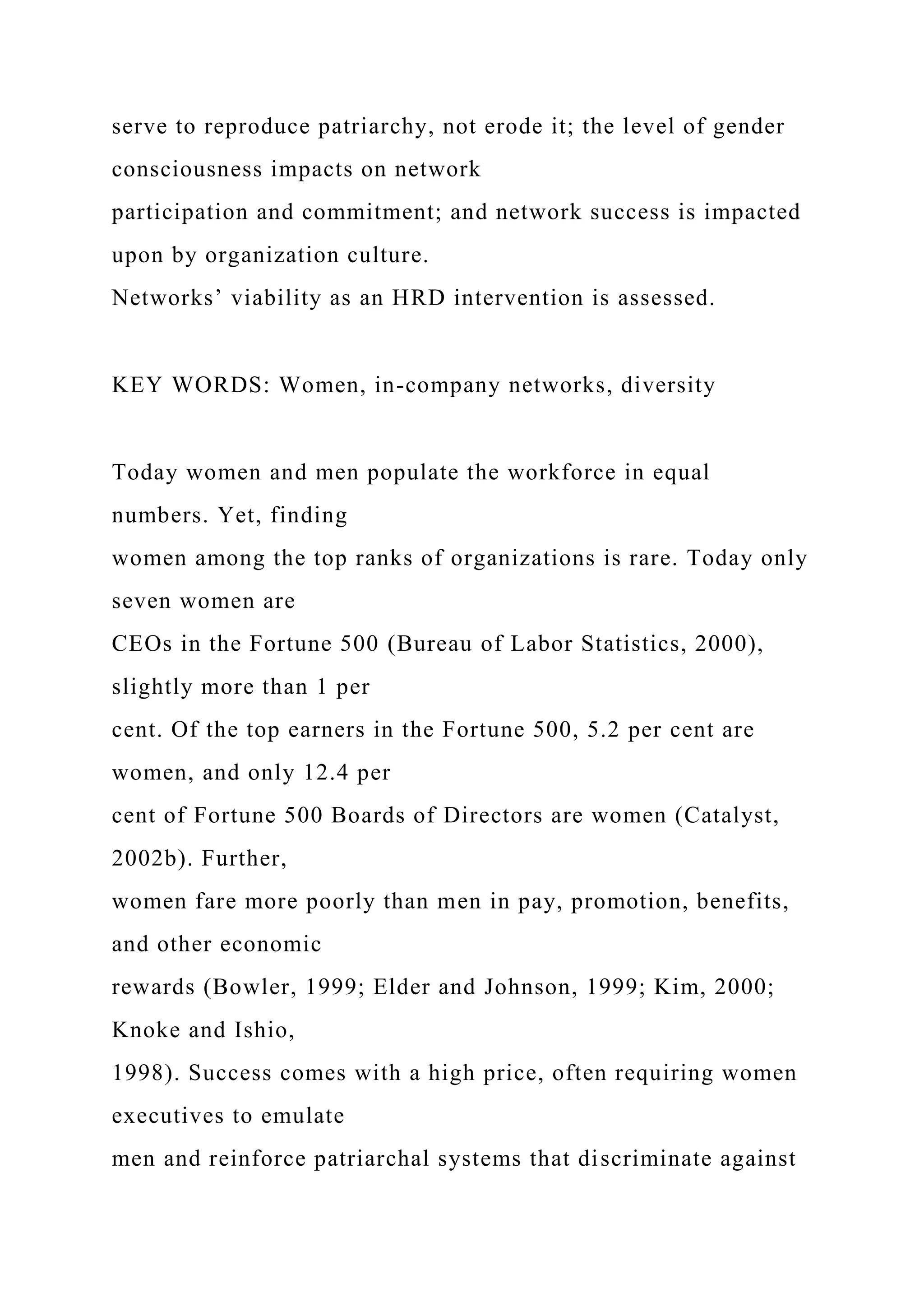
![women and people
of color (Bierema, 2003) and to work long hours, sacrificing
health, family, and
leisure. It is also well documented that women must work
harder than men to
advance (Ragins et al., 1998).
The workplace reflects a white-male controlled entity
(Ruderman et al., 1995;
Sharpe, 1994) where advancement often involves adopting
masculine behaviors such
as competitiveness and aggressiveness (Diekman and Eagly,
2000; Fagenson, 1990;
Correspondence Address: Laura L. Bierema, Associate
Professor, 850 College Station Road, 405 River’s
Crossing, University of Georgia, Athens, GA 30605, USA. Tel:
+ 706 542 6174. Fax: + 706 542 4024.
Email: [email protected]
Human Resource Development International,
Vol. 8, No. 2, 207 – 224, June 2005
ISSN 1367-8868 Print/1469-8374 Online/05/020207-18 ª 2005](https://image.slidesharecdn.com/reflectionpaper1reflectionpaper2reflectionpaper-221031054129-dcabb3bf/75/Reflection-Paper-1Reflection-Paper-2Reflection-Paper-docx-126-2048.jpg)
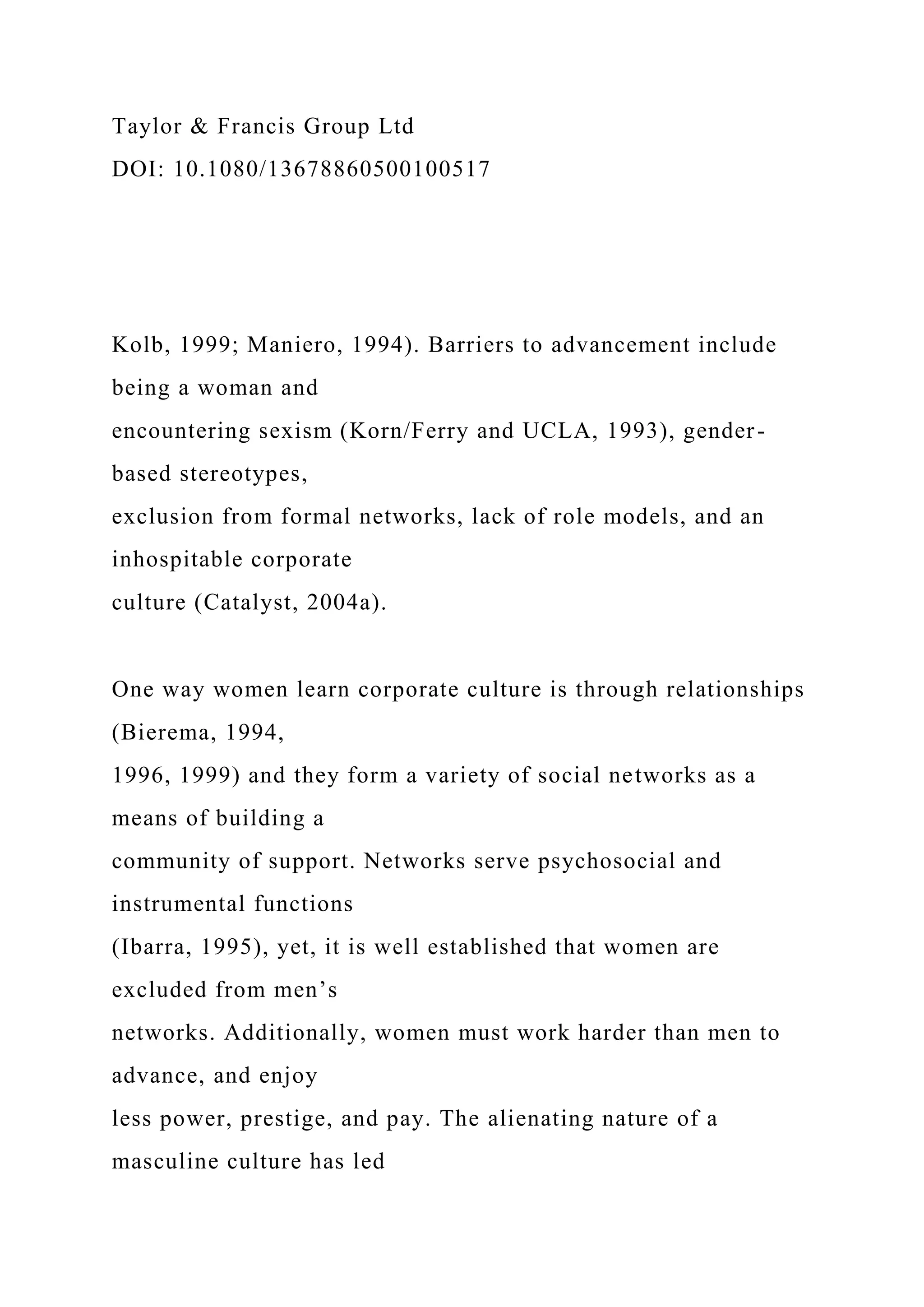

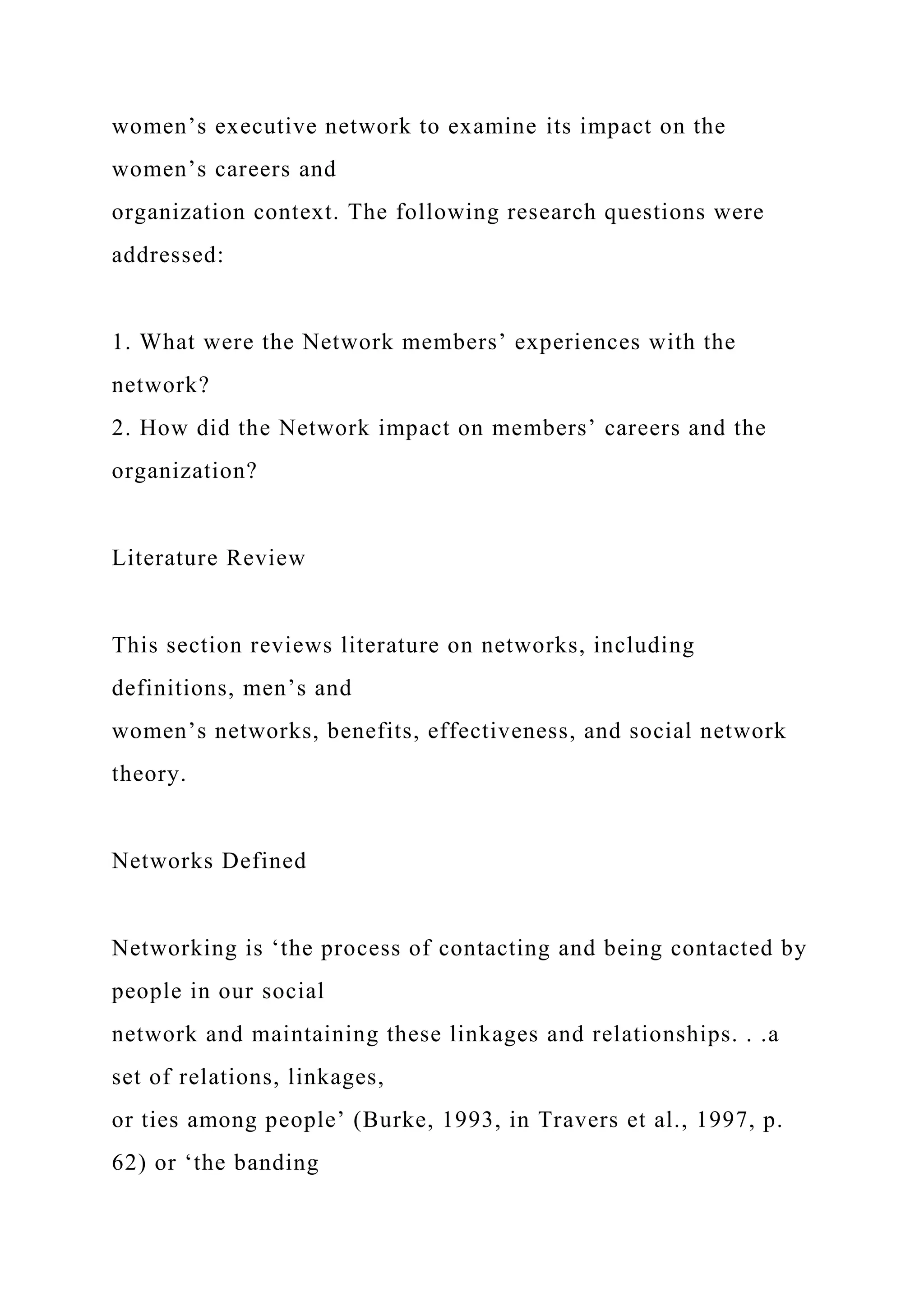



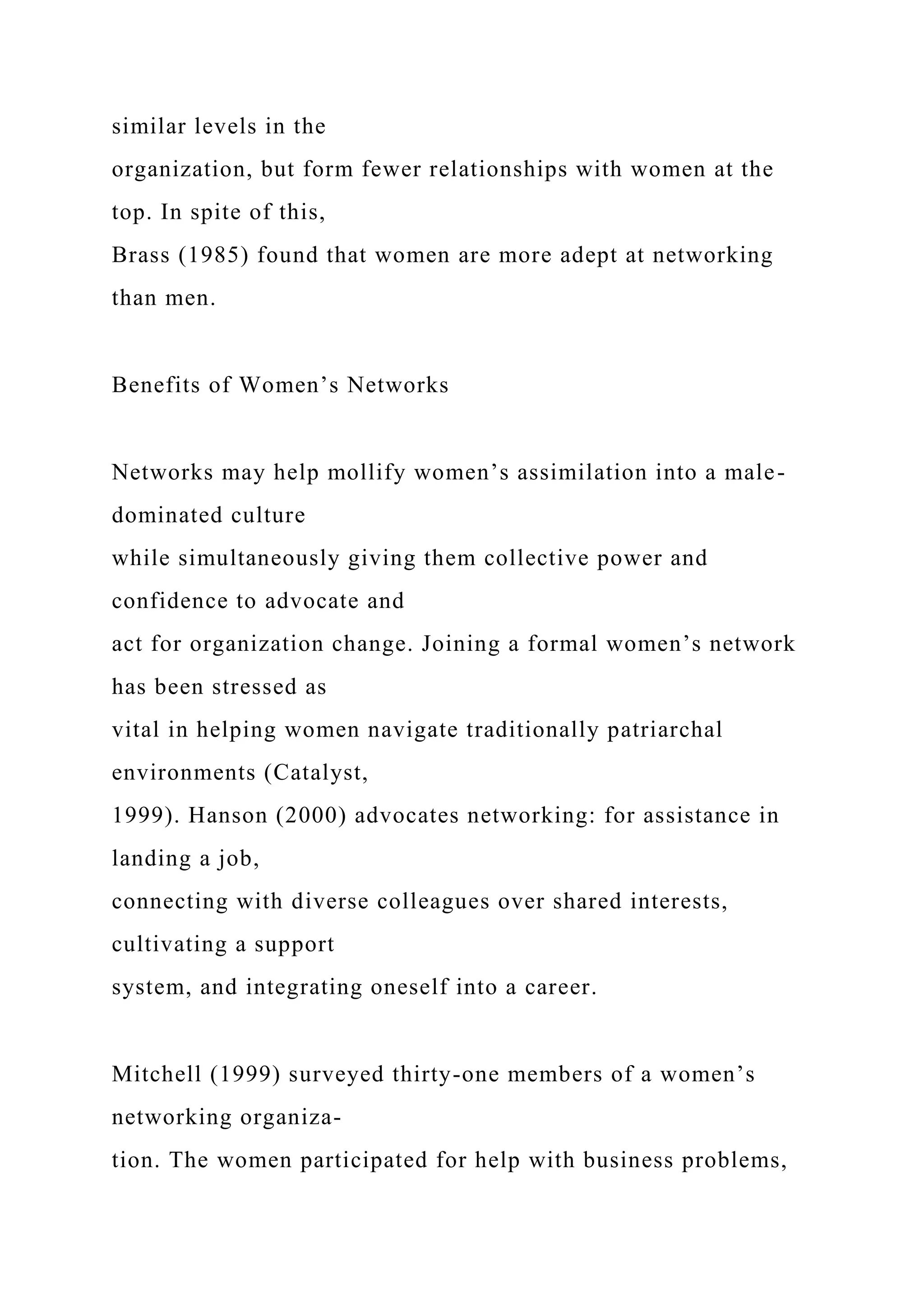
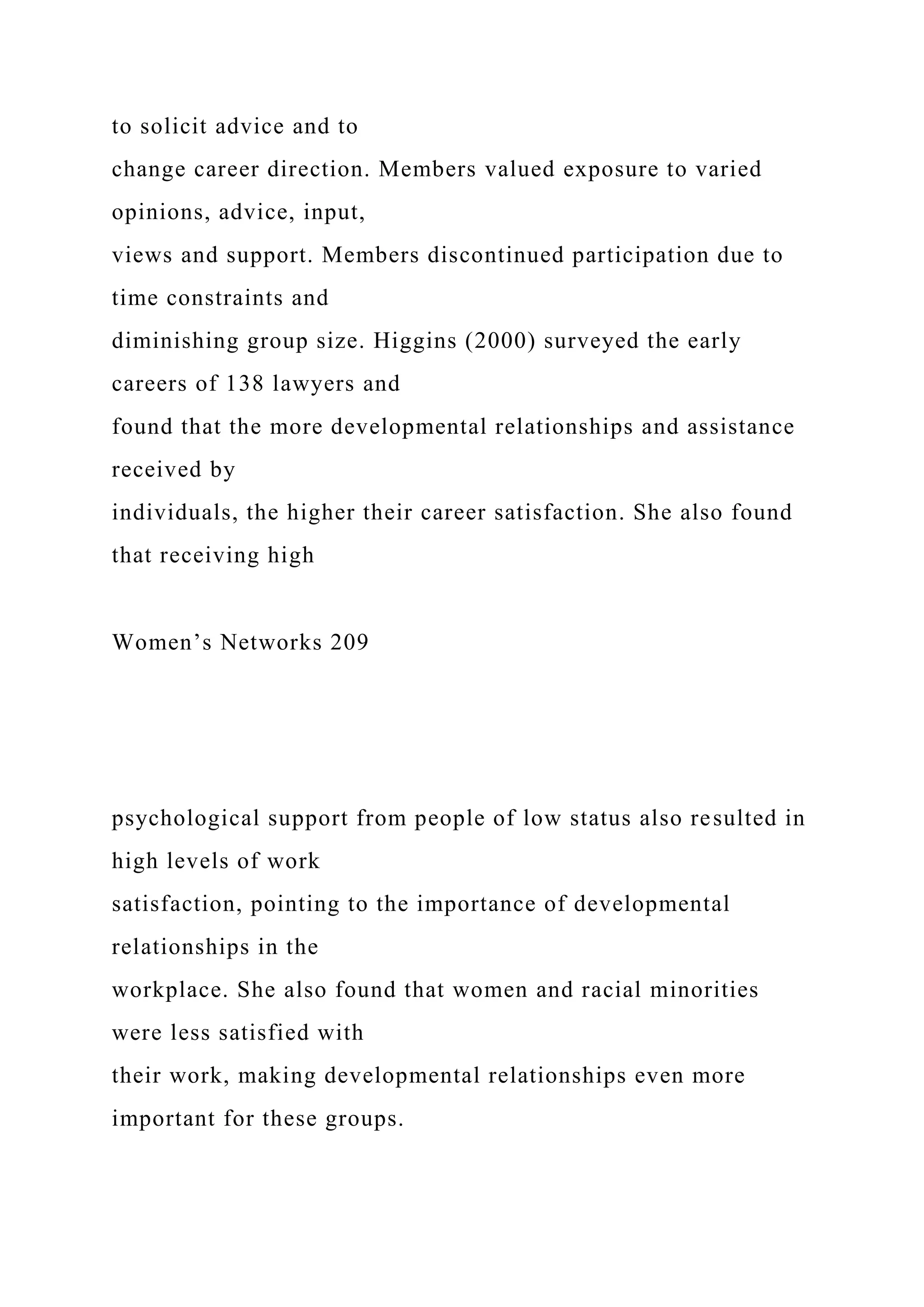
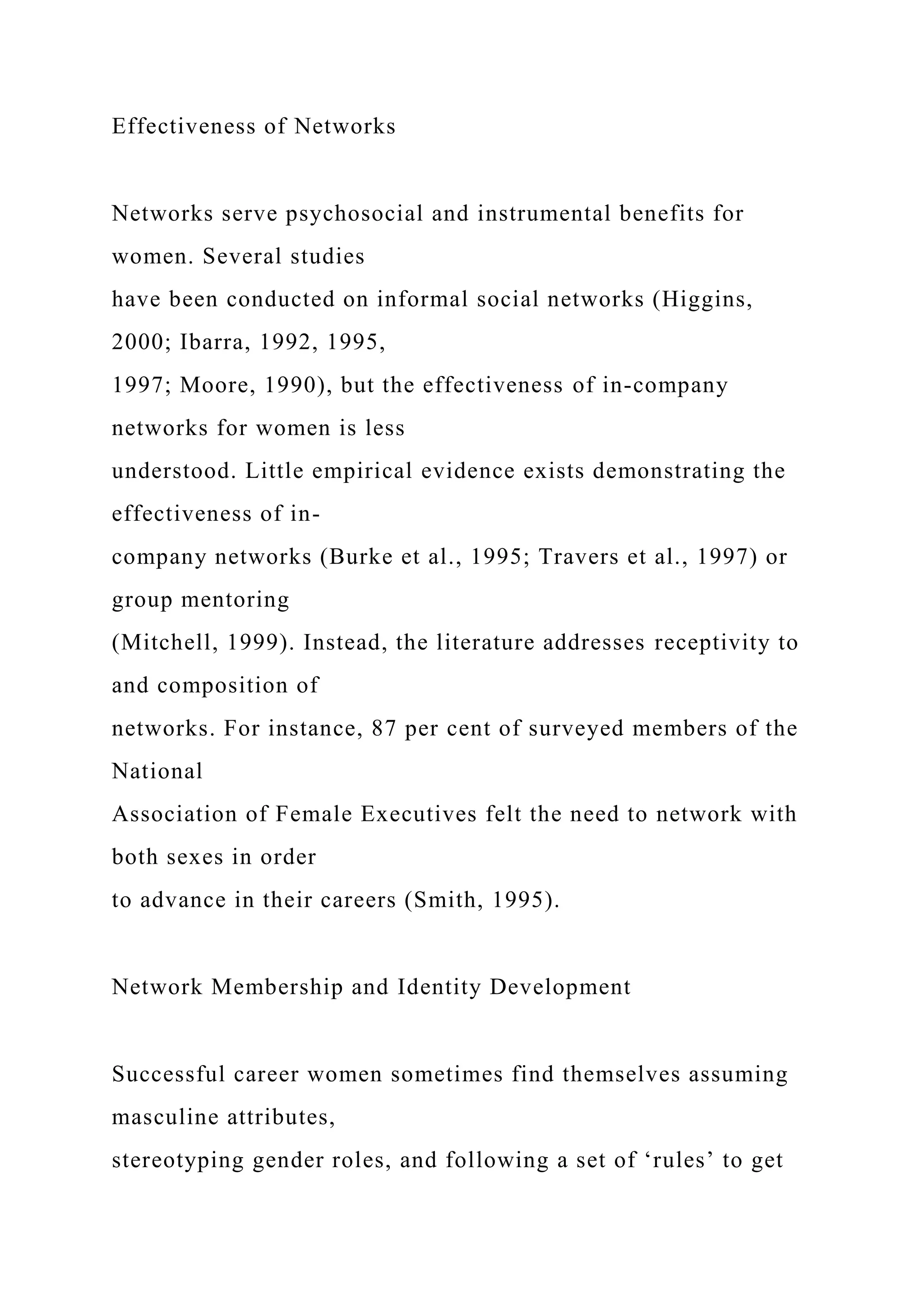
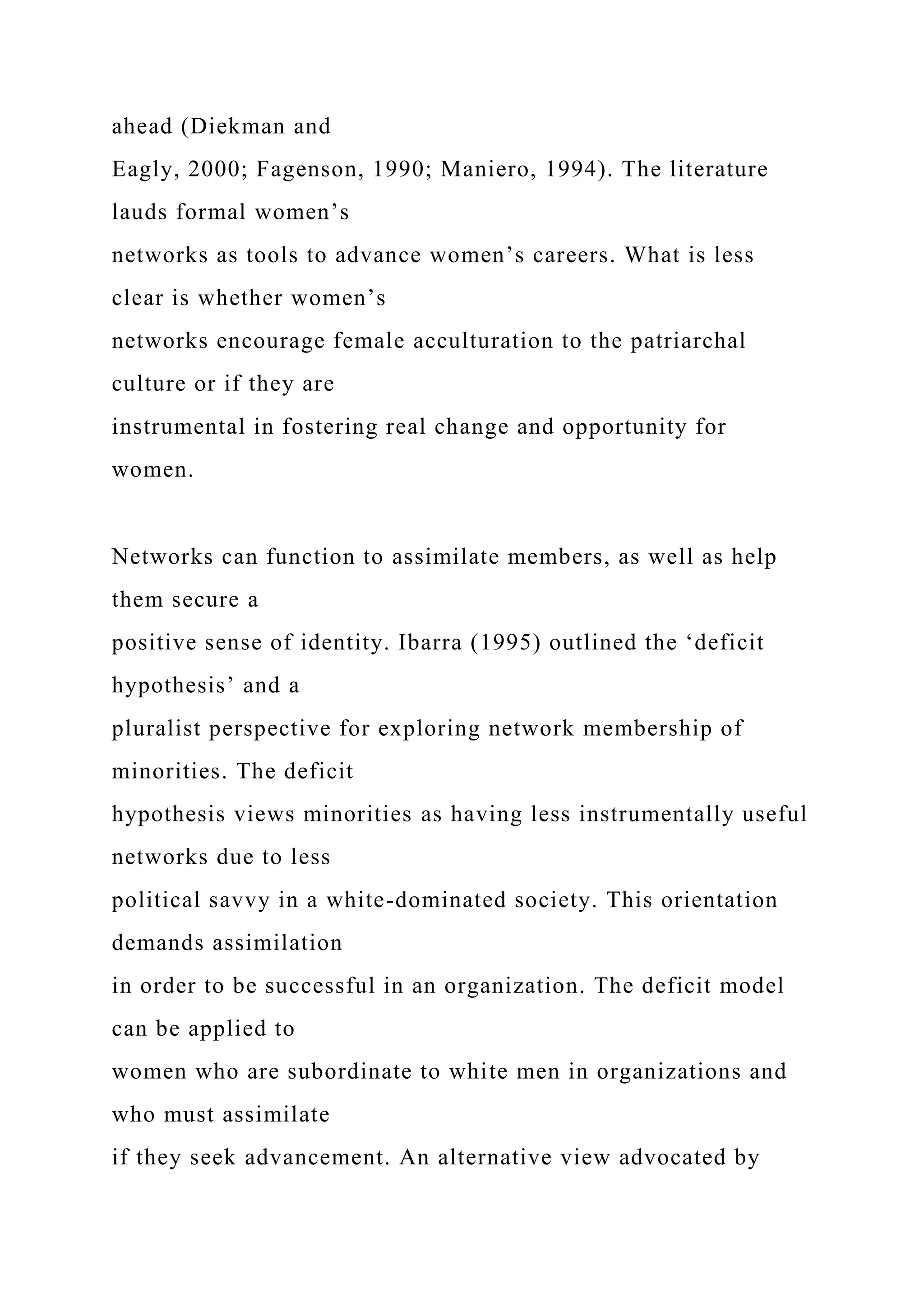
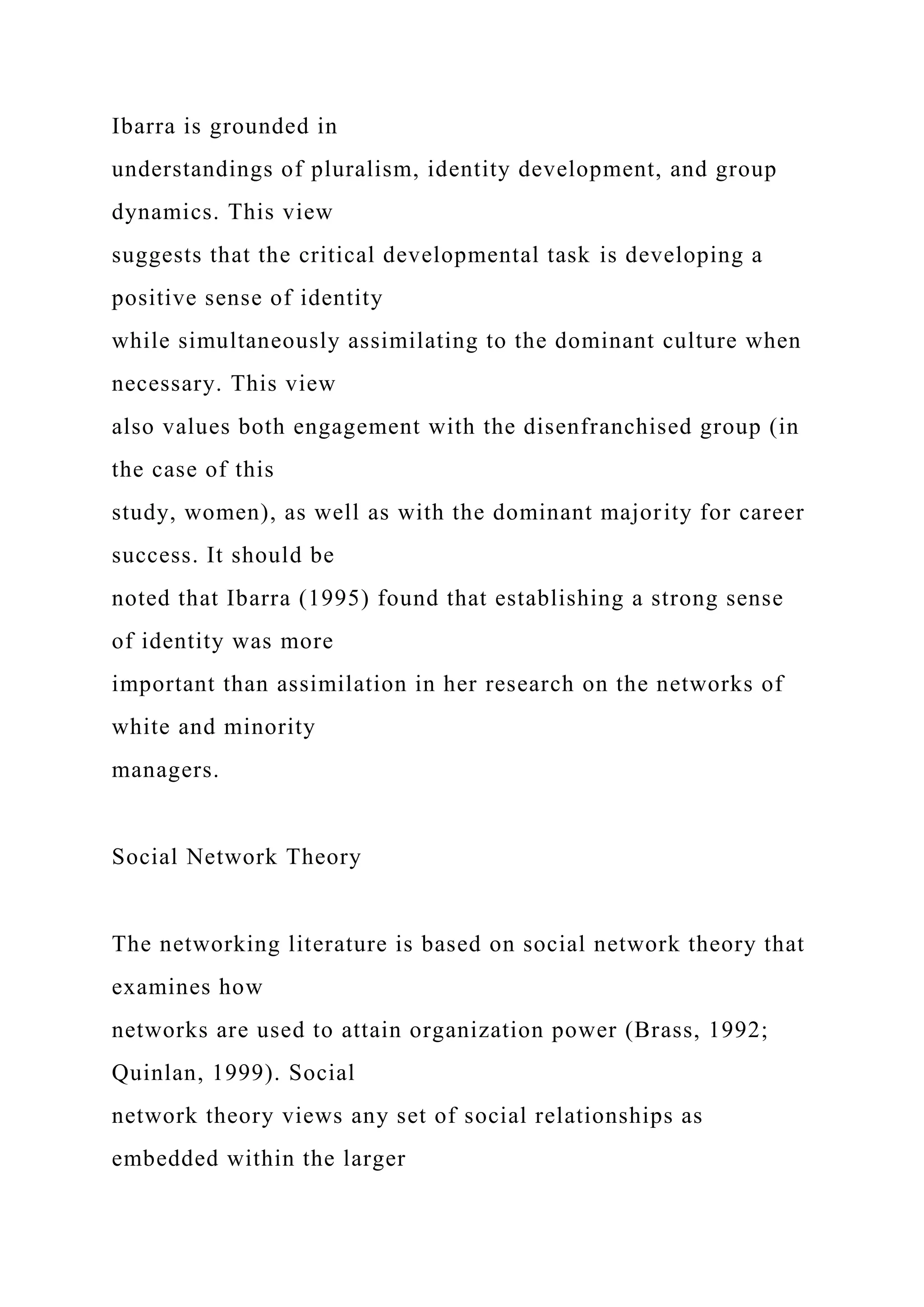
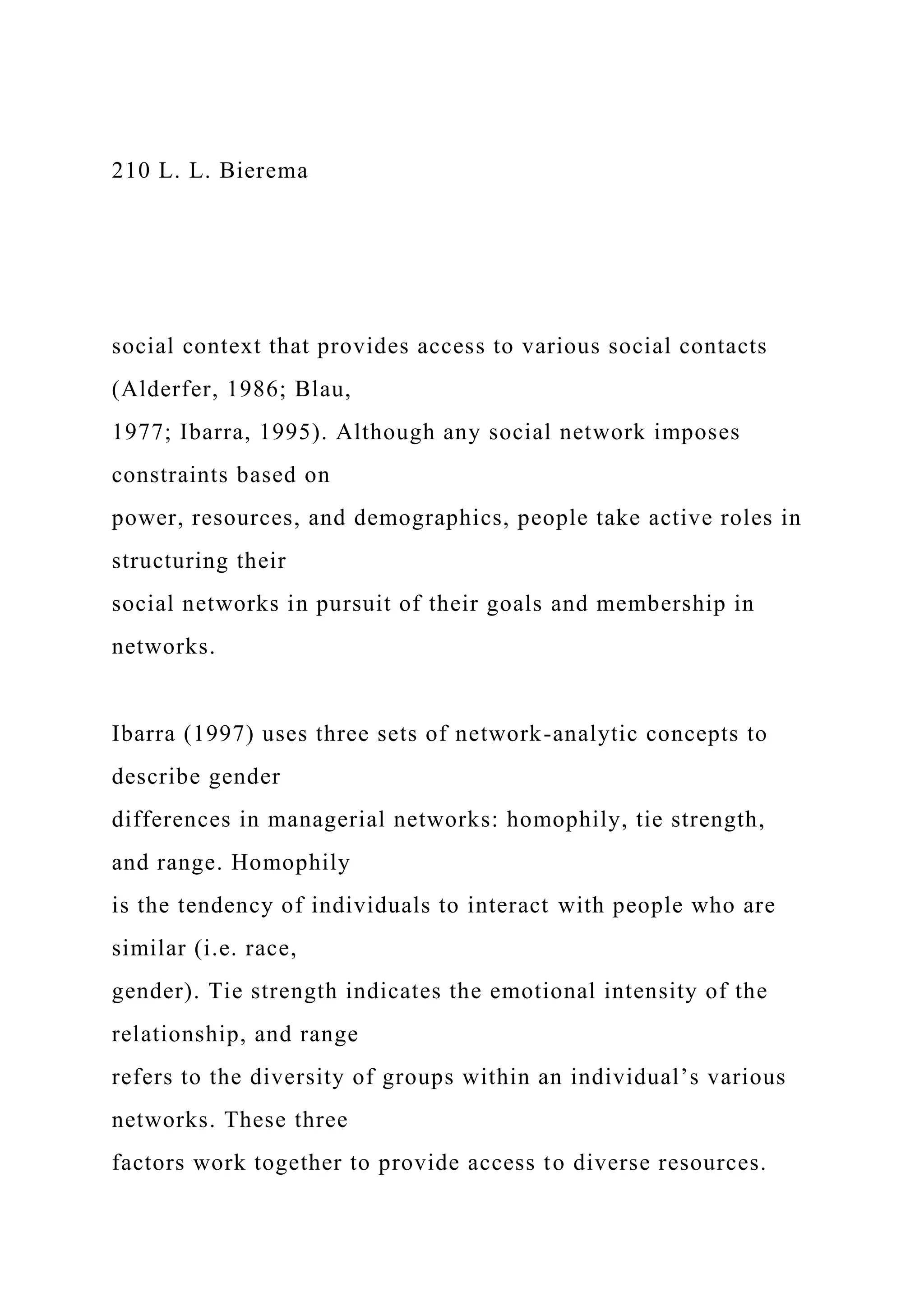
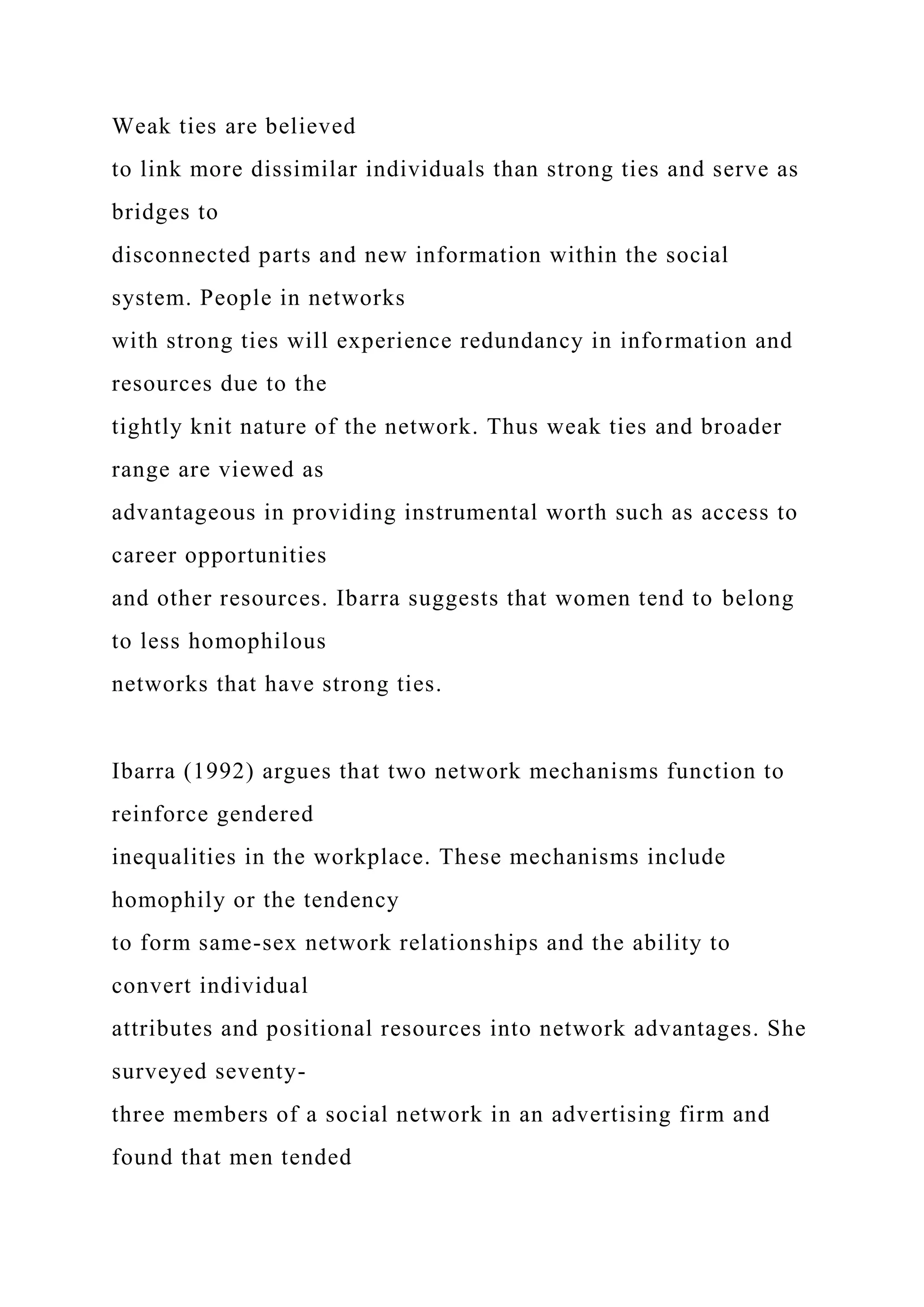
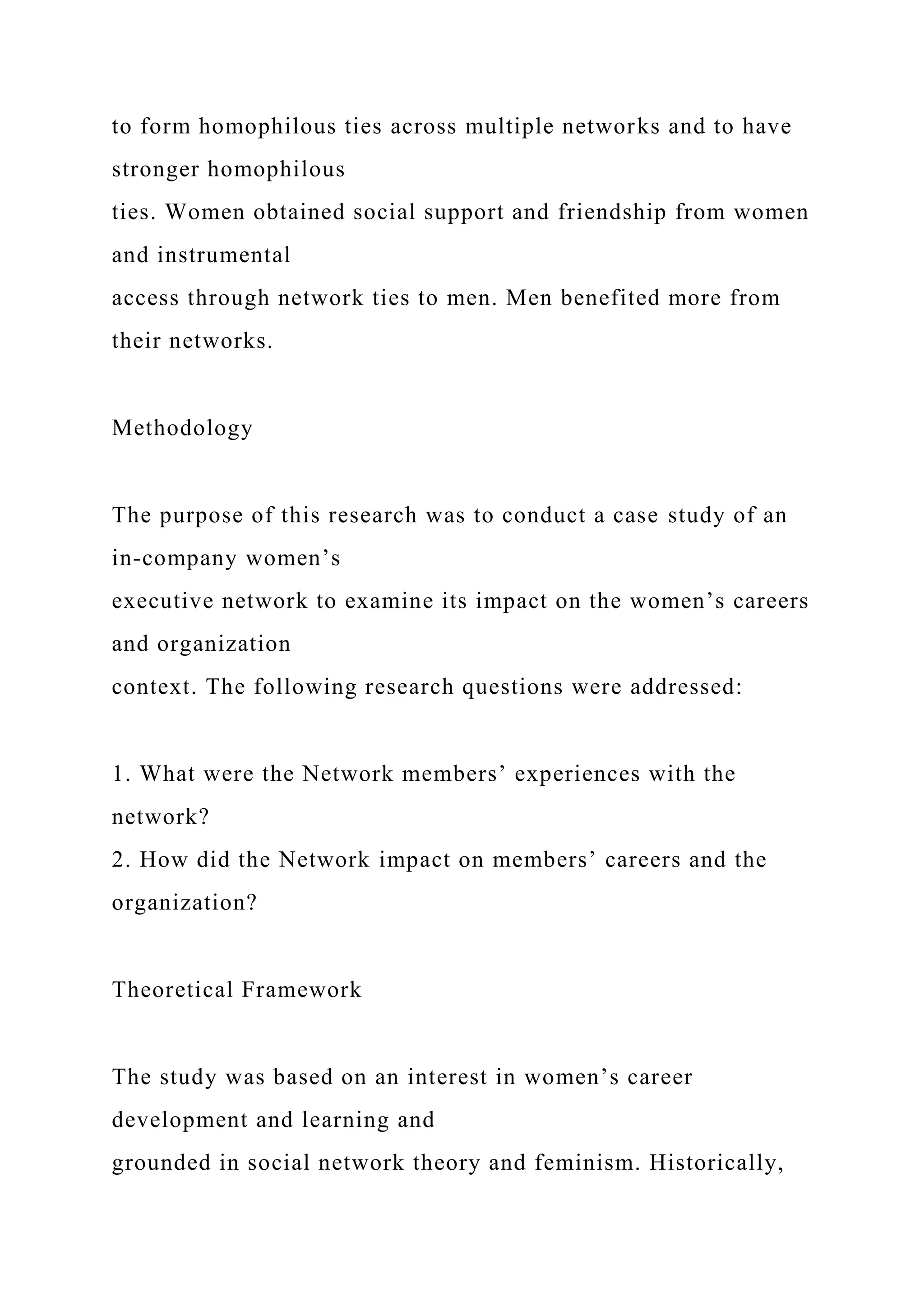
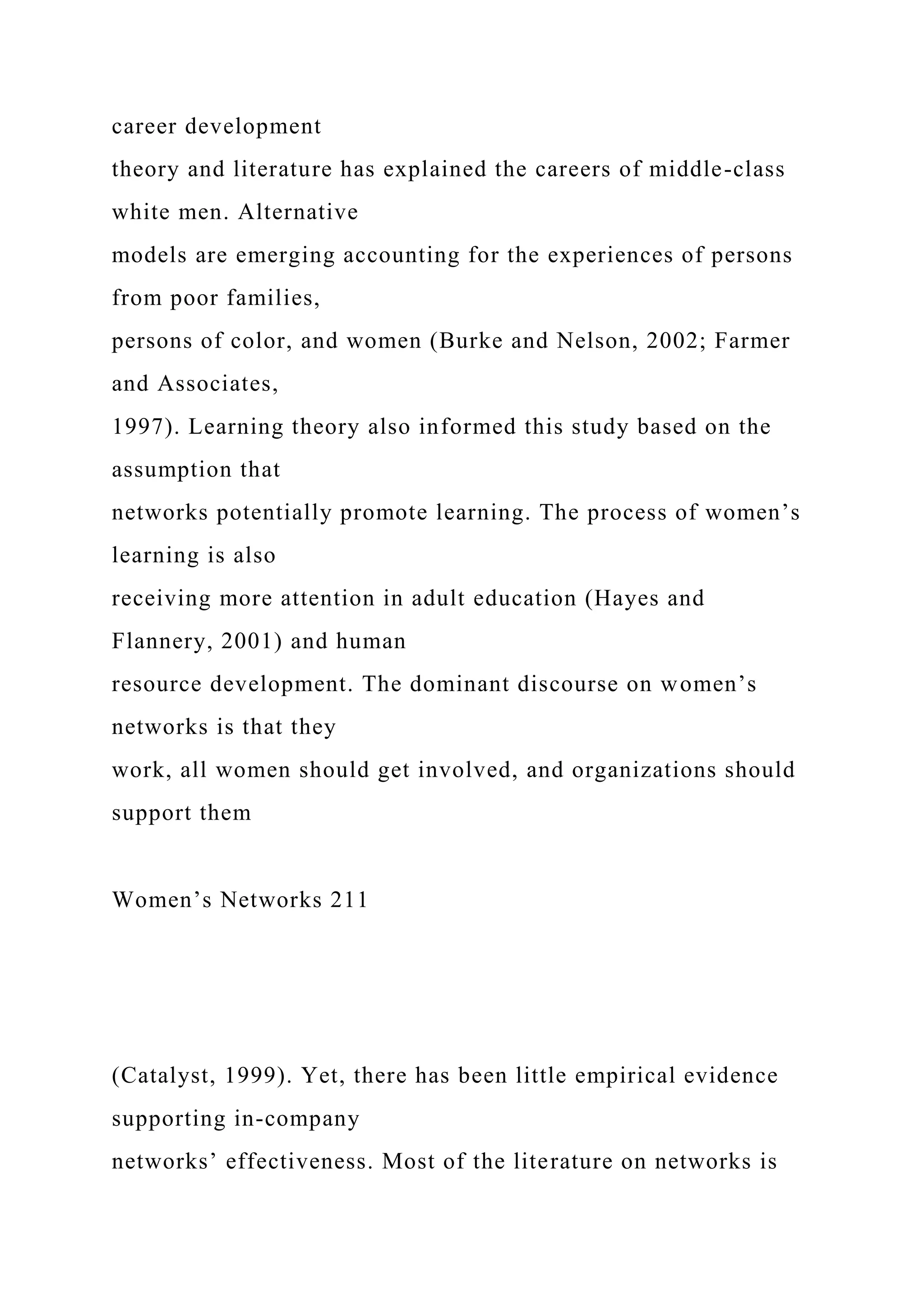
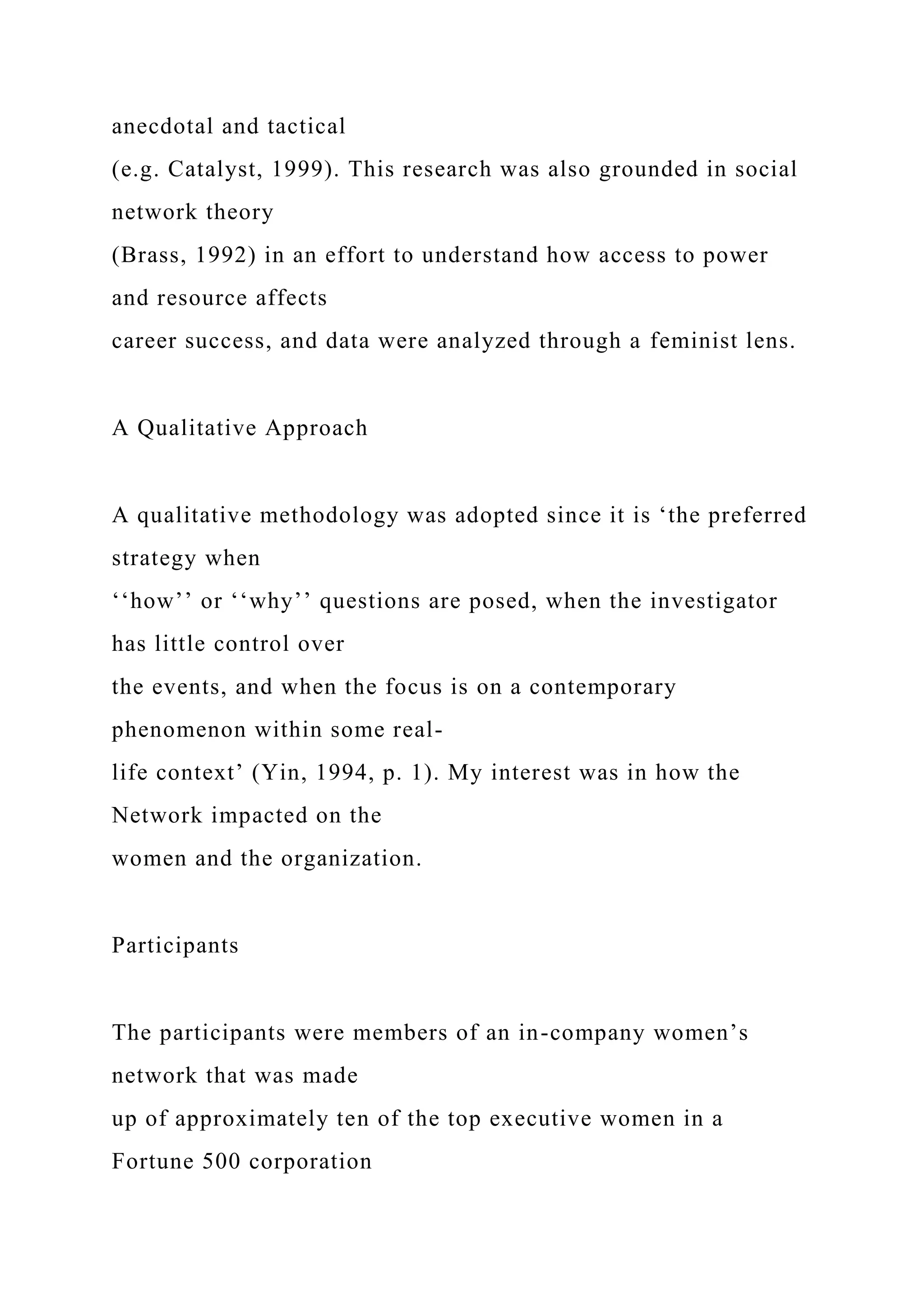
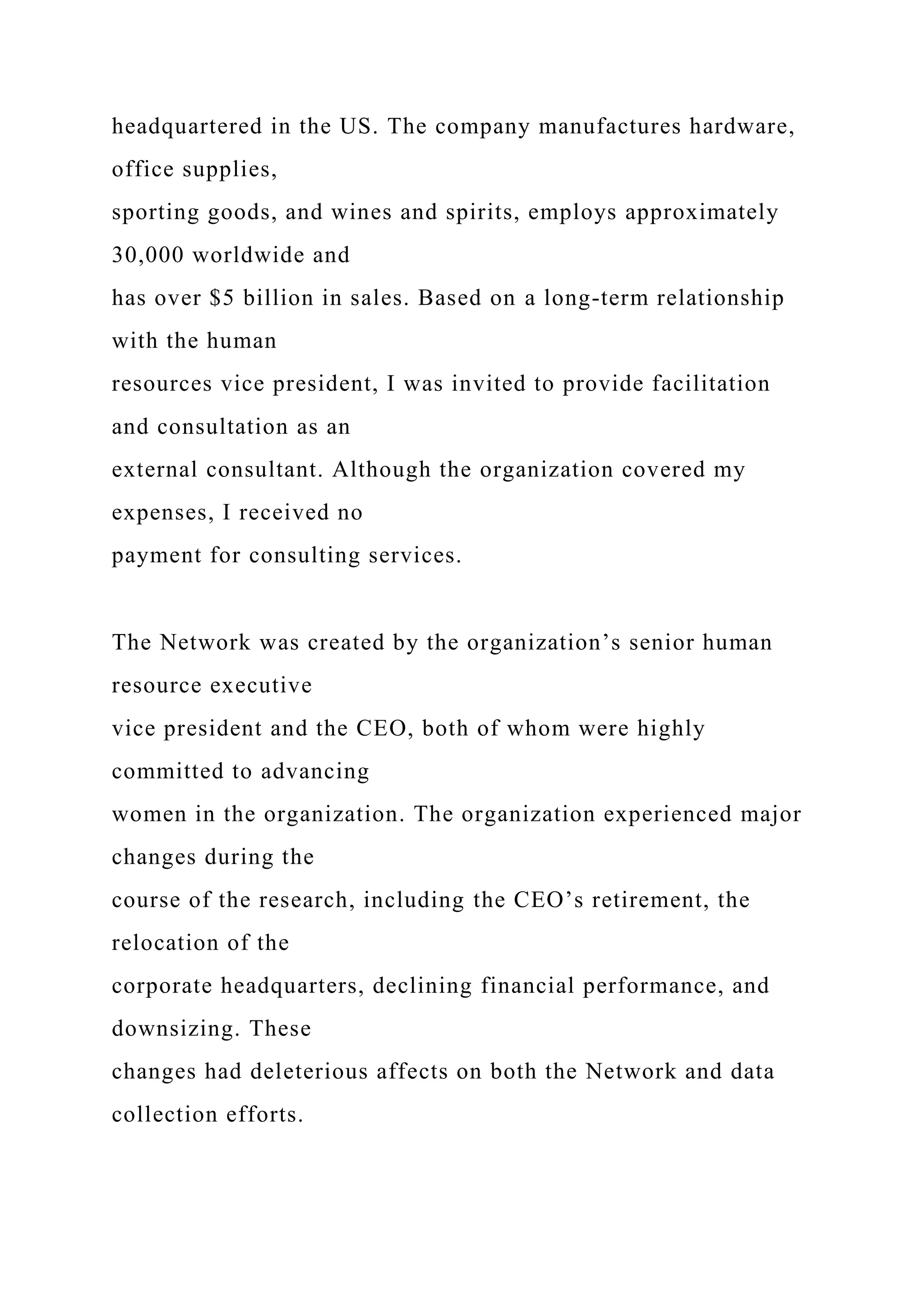
![The Network was formed when all members were invited to
attend an event
focused on women in business. During the course of the
meeting, a focus group was
held and the Network established. The Network developed a
mission to ‘[p]rovide a
focus for ongoing leadership, advocacy, and support for the
development of women
and minorities and to ensure workplace equality remains a vital
part of the [company]
corporate strategic plan’ (meeting notes 17 June 1998). The
Network existed over
approximately a four-year period and held a meeting
approximately twice annually.
Data Collection and Analysis
Data were initially gathered via focus groups, the results of
which are published
elsewhere (Bierema, in press). After the Network had been
operational for over one
year, interviews were held with nine members. Interviews were
tape-recorded and
transcribed verbatim when permitted. However, the subject of
the Network caused a](https://image.slidesharecdn.com/reflectionpaper1reflectionpaper2reflectionpaper-221031054129-dcabb3bf/75/Reflection-Paper-1Reflection-Paper-2Reflection-Paper-docx-144-2048.jpg)
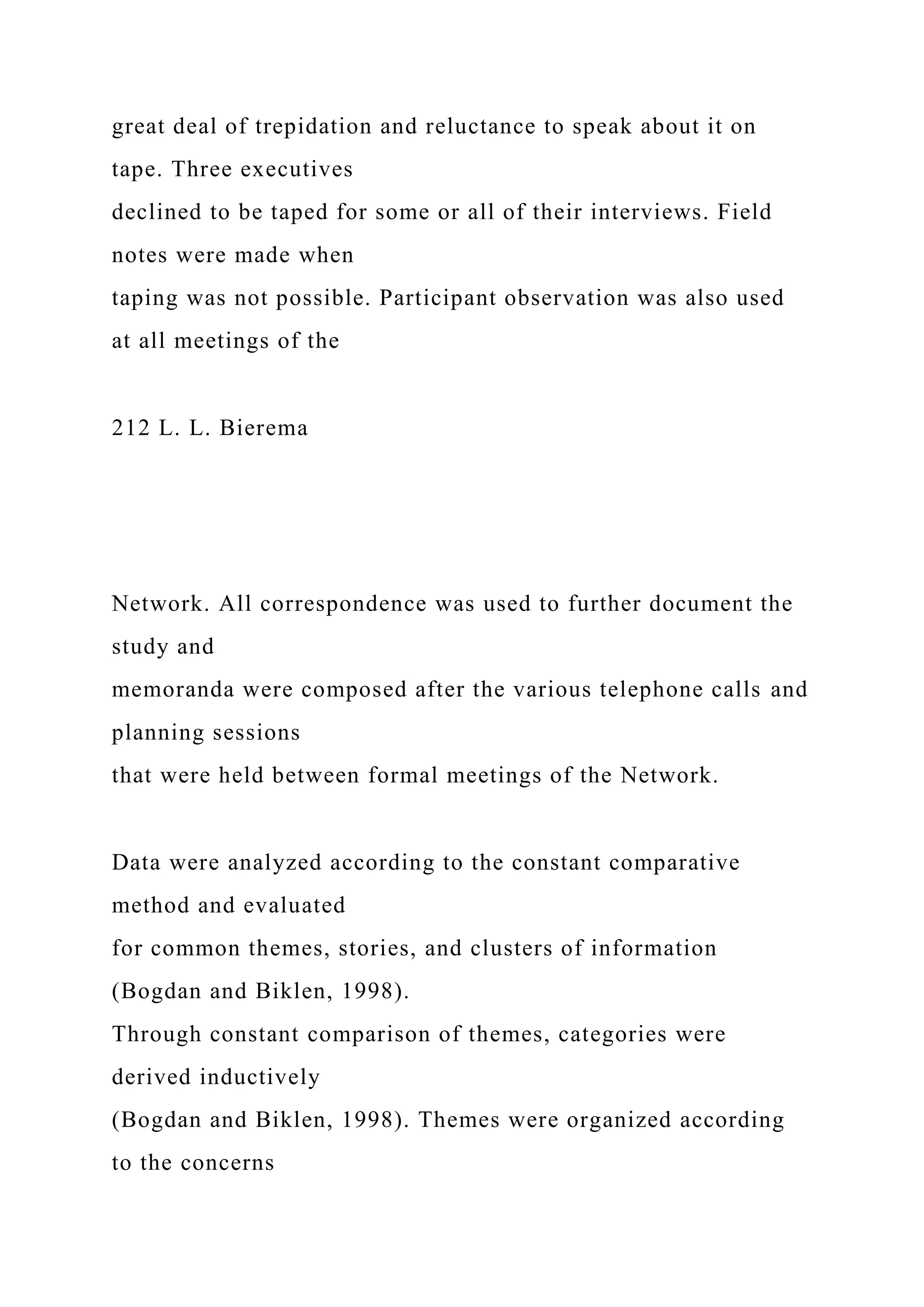

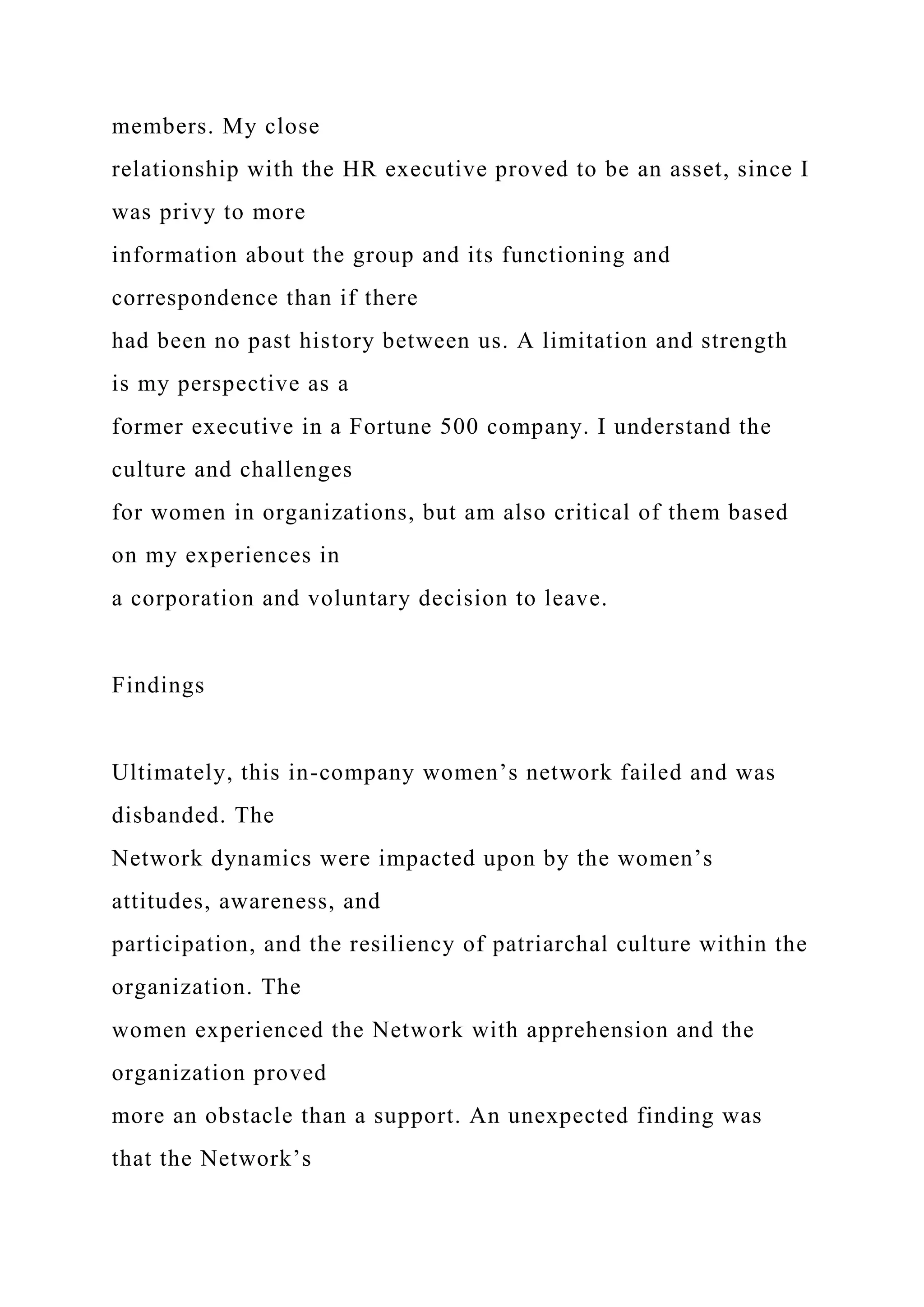
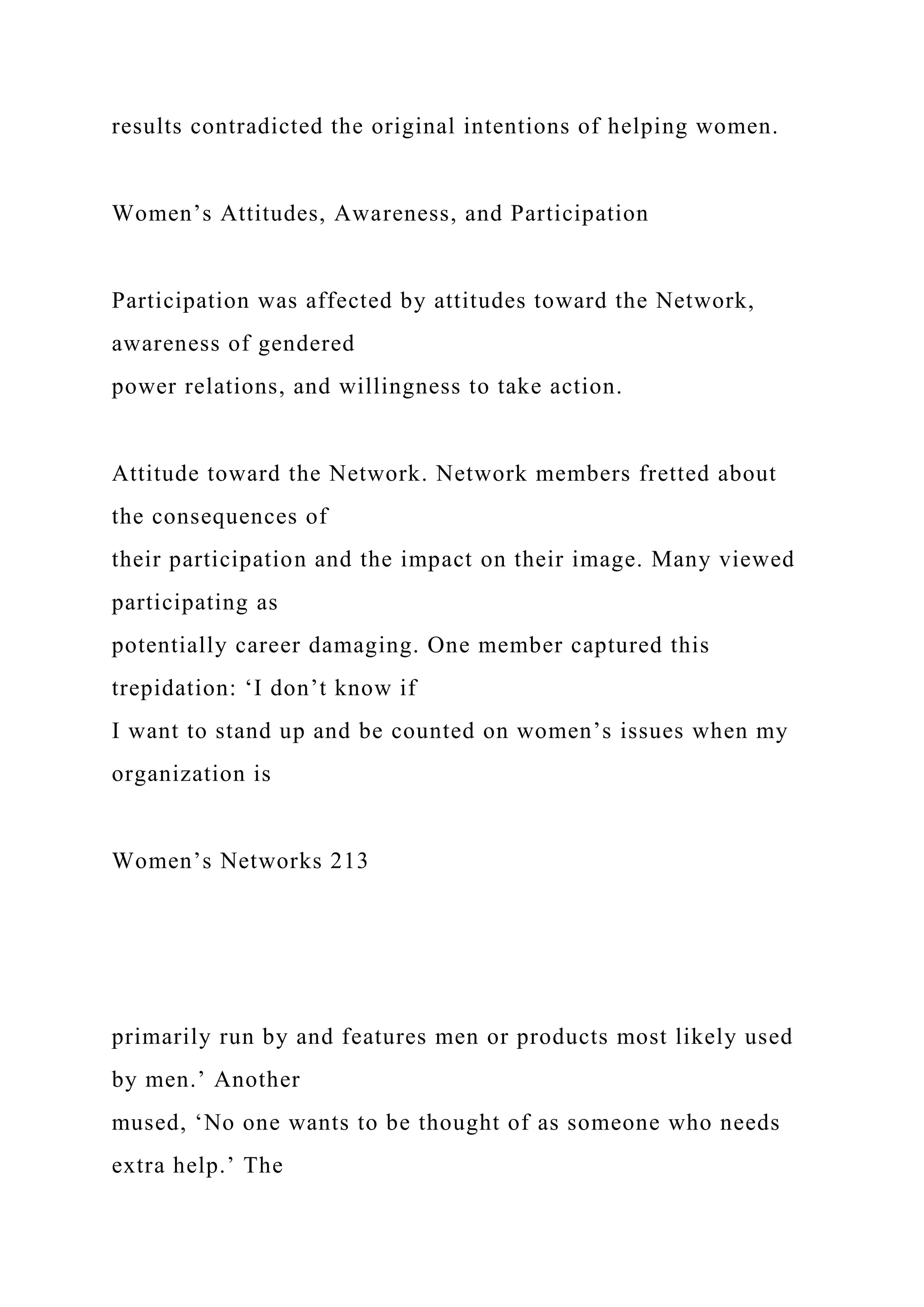
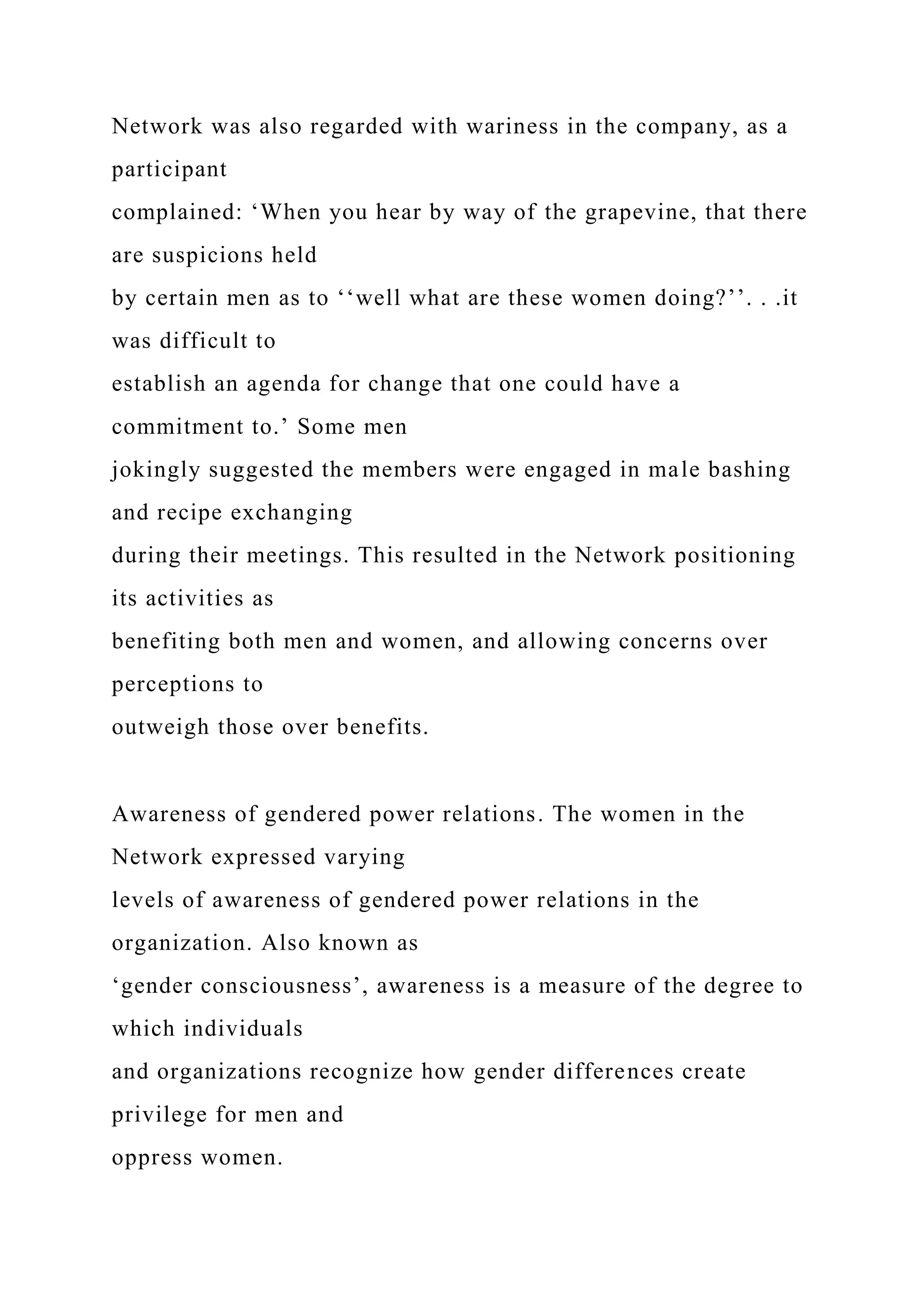
![The Network purpose was clear about helping women advance
in the organization
and keeping that goal in the strategic plan, yet some comments
during meetings and
interviews contradicted stated objectives and appeared ‘gender
unconscious’. For
instance, some of the members did not view gender as impacting
on their careers,
exclaiming, ‘Oh we don’t have a problem at all around gender
issues or any diversity
issues’ or ‘I really don’t think [being a woman] has [helped me]
at all. I never have.
And I’m very used to being the only woman in the room.
Definitely doesn’t hurt me.
And I don’t really think it’s helped me either.’ In spite of such
declarations in the
context of full group meetings, several of the Network members
confided in the
privacy of interviews that gender was indeed an issue.
Although all the women described themselves as women’s
advocates and pioneers,
only one identified herself as a feminist. Some of the members
recognized inequities](https://image.slidesharecdn.com/reflectionpaper1reflectionpaper2reflectionpaper-221031054129-dcabb3bf/75/Reflection-Paper-1Reflection-Paper-2Reflection-Paper-docx-150-2048.jpg)
![based on gender and were strong advocates of equal treatment –
but not special –
treatment for women. One participant noted that, although the
Network seemed the
‘right thing to do’, and that she would ‘like to see women
advance’, she would ‘also
like to see qualified men be advanced’. The women also
uncritically modified their
behavior and tolerated inequitable treatment, as noted by this
executive reflecting on
her felt need to tone down her enthusiasm as it might be
perceived as ‘flighty’ around
men: ‘I’m not really happy about that kind of thing, but that
seems to be what’s
needed. You do it.’
Some of the Network members questioned gendered inequities,
but most of these
conversations happened in the privacy of a one-on-one
interview. One participant
explained during an interview, ‘Well to be perfectly frank. .
.[gender discrimination]
is certainly an issue here. Women are not viewed in the same
way. . ..You’re very
conscious of it.’ Although aware of gendered power relations,](https://image.slidesharecdn.com/reflectionpaper1reflectionpaper2reflectionpaper-221031054129-dcabb3bf/75/Reflection-Paper-1Reflection-Paper-2Reflection-Paper-docx-151-2048.jpg)
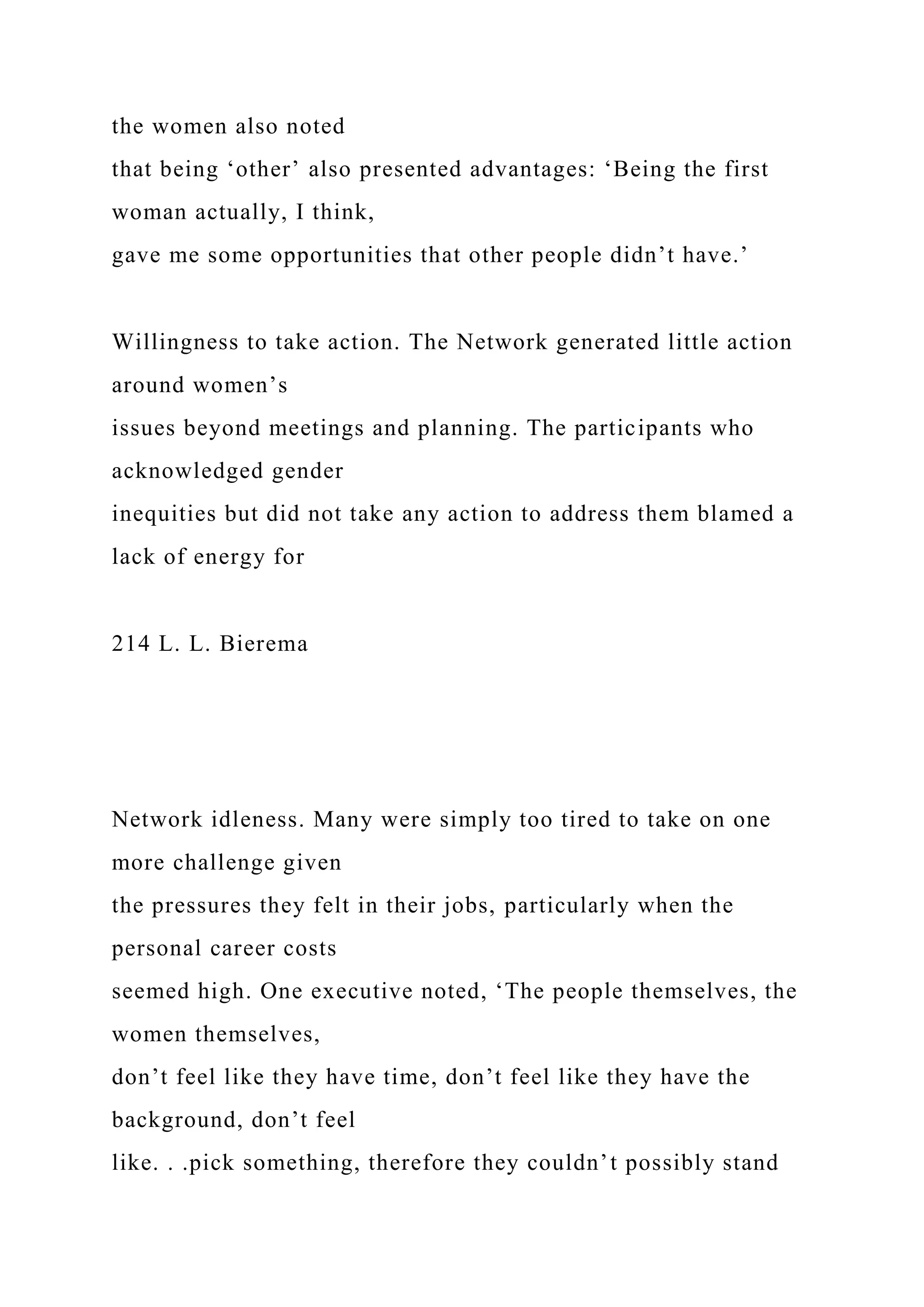
![up and be counted on
this.’
The members who expressed an awareness of gendered power
relations and
regularly challenged the culture were few. They were outwardly
focused, concerned
with helping others negotiate the organizational culture. Their
actions involved
advocacy of other women and engagement in public discussions
about improving the
culture for women in the organization. The woman executive
who created the
Network explained her rationale: ‘I started [the Network] for a
couple different
reasons, so I guess I’ve been the leader.’ She further noted,
‘The workplace is
providing people an opportunity to take leadership roles, and I
was kind of hoping
that somebody would step in the forefront, but no one has.’
Resiliency of Patriarchal Culture
Every participant in this study cited the culture as a key barrier
to the Network](https://image.slidesharecdn.com/reflectionpaper1reflectionpaper2reflectionpaper-221031054129-dcabb3bf/75/Reflection-Paper-1Reflection-Paper-2Reflection-Paper-docx-153-2048.jpg)
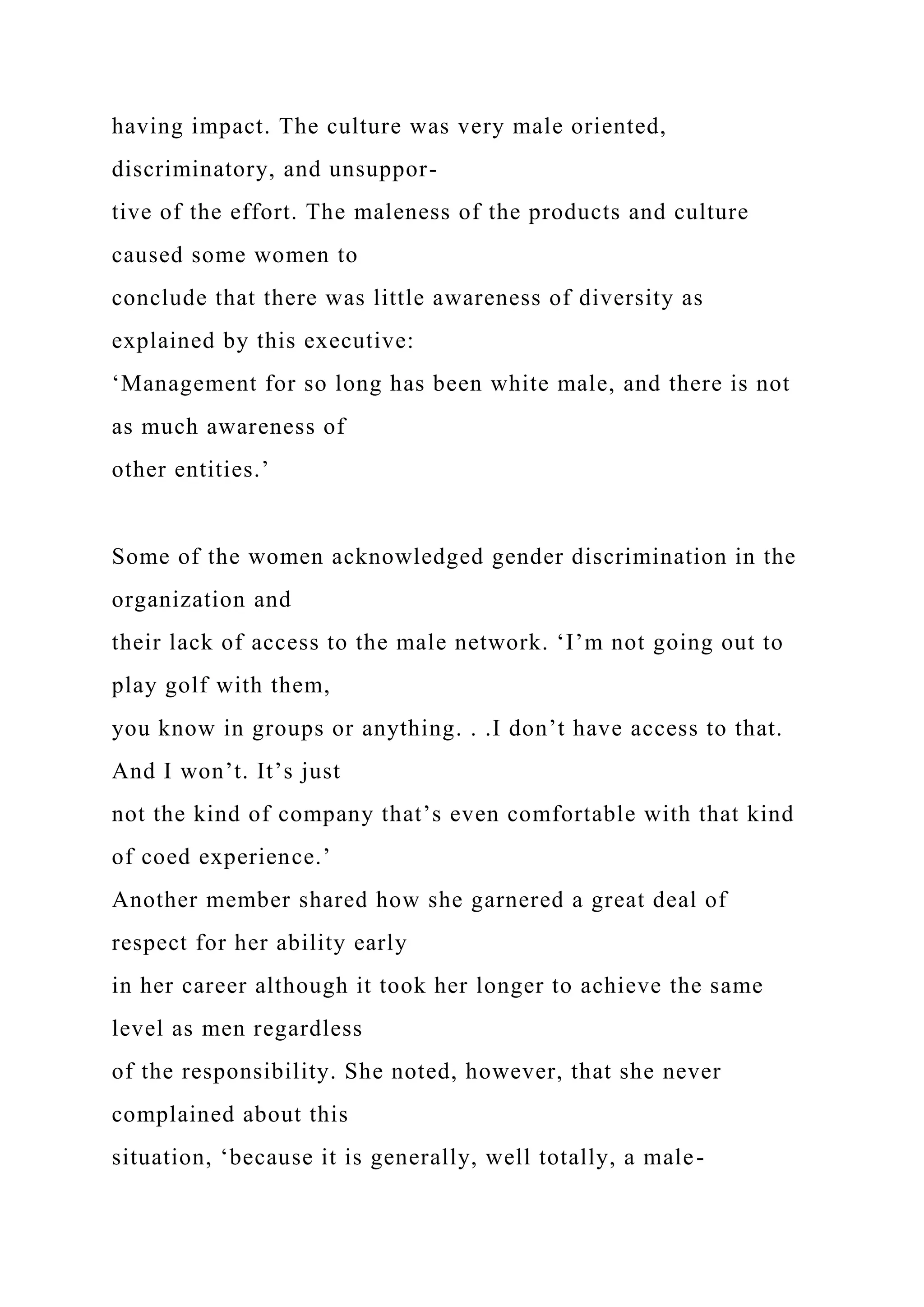
![dominated place, there wasn’t
very many places you could go to take that issue. ‘Cause that
would be a woman just
complaining.’ There was also a sense that the some of the
women had so fully
acclimated themselves to the male culture that they did not see
the value of a
women’s network. The women also questioned the sincerity of
the company’s
support, even though the Network was endorsed by the CEO. ‘I
don’t really know
where the support is or what it’s perceived to be doing any
more.’ Another noted, ‘I
don’t want to be the only one beating the drum [for women’s
issues]’. During the
course of the study, the CEO retired and a new one took the
helm. The Network was
unsure if this new CEO would still value the network and this
dynamic contributed
to the inaction of it.
Contradictions
The creation and continuation of the in-company network bred
contradictions. The](https://image.slidesharecdn.com/reflectionpaper1reflectionpaper2reflectionpaper-221031054129-dcabb3bf/75/Reflection-Paper-1Reflection-Paper-2Reflection-Paper-docx-155-2048.jpg)
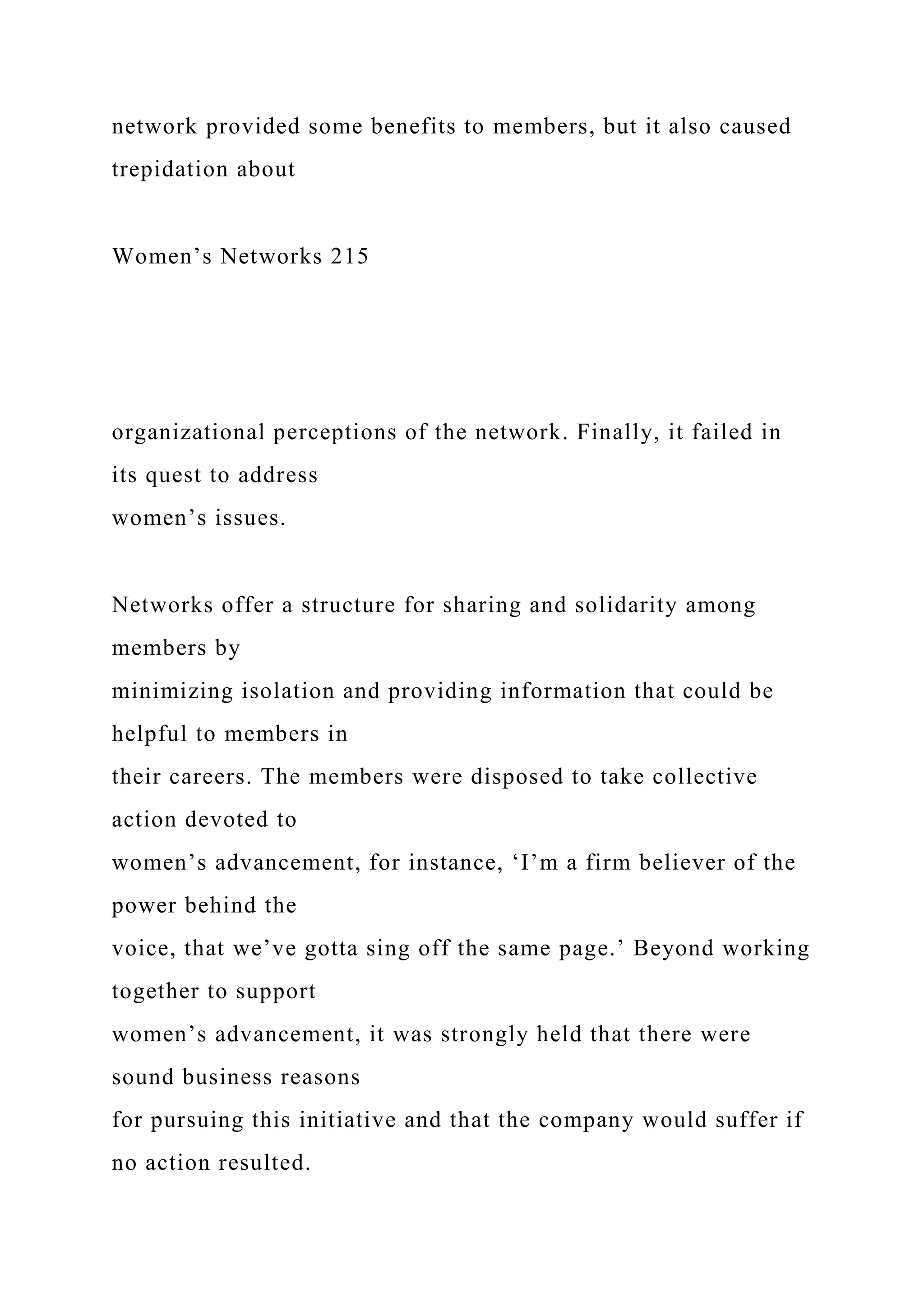
![The women also felt that they could convince the male
executives that this was
worthwhile by tapping into their competitive spirit: ‘So we’ve
got that political
mindset, and this is about power, [and] when it comes down to
it, men see things
competitively.’ Another observed, ‘It’s all around power, and
power’s a relational
concept, and I love it, I want it, and it makes good things.’
There was general
agreement that this process could only be powerful, however, if
the women worked
in concert.
The network members showed a ground-breaking spirit as role
models for the
future. They regularly referred to themselves as ‘pioneers’ when
they were speaking
about their roles as executive women in the company. One
woman reflected, ‘If
women were to come [here], I think that they would have to like
to be the pioneer,
and if they didn’t like that, then it’s really not the place for
them. Being a pioneer is
not easy.’](https://image.slidesharecdn.com/reflectionpaper1reflectionpaper2reflectionpaper-221031054129-dcabb3bf/75/Reflection-Paper-1Reflection-Paper-2Reflection-Paper-docx-157-2048.jpg)
![Although the Network provided support and inspiration, it also
created waves of
concern. In theory, these women valued the Network. In
practice, however, they
expressed fear about their participation in the Network and
publicly working to
advance women in the company. They were anxious about being
perceived as ‘recipe
swapping male-bashers’ or appearing to ‘need help’. This
thought captures the
sentiment: ‘I had a. . .concern that. . .we’ve all participated in
these kinds of things
before, and [someone’s] specific experience had been that
they’re either recipe swaps
or male bashing.’ This woman further noted how pleased she
was with the process
and that ‘what we had here is clearly showing our level in
business thinking, our
sophistication as business people, and our understanding what
the real issue is.’
Another woman shared:
[My boss is] gonna ask me. . . ‘what did they say, what did they
do?. . .tell me](https://image.slidesharecdn.com/reflectionpaper1reflectionpaper2reflectionpaper-221031054129-dcabb3bf/75/Reflection-Paper-1Reflection-Paper-2Reflection-Paper-docx-158-2048.jpg)
![everything.’ Not because he’s suspicious, but he just has to
have his hands in
everything. I really was sort of expecting this to be, not
necessarily a male
bashing thing, but when I left the other day and [my boss] said,
‘have fun, what
do you think they’re gonna do?’ I said, ‘I don’t know, we’ll sit
around and say
‘‘chicks rule’’,’ but I really thought it was gonna be. . .less of a
constructive
thing, and I’m so impressed. . .you know some of you I work
with, but others I
have never met before, and you all are just so articulate, and so
you know, just
so incredibly impressive, so I’m so glad to be included in your
little group.
The dominant Network discourse was skewed toward company
performance, not
the individual women’s benefit. One participant noted at the end
of the focus group,
‘I think it’s another example that shows how when women are
given an opportunity,
216 L. L. Bierema](https://image.slidesharecdn.com/reflectionpaper1reflectionpaper2reflectionpaper-221031054129-dcabb3bf/75/Reflection-Paper-1Reflection-Paper-2Reflection-Paper-docx-159-2048.jpg)
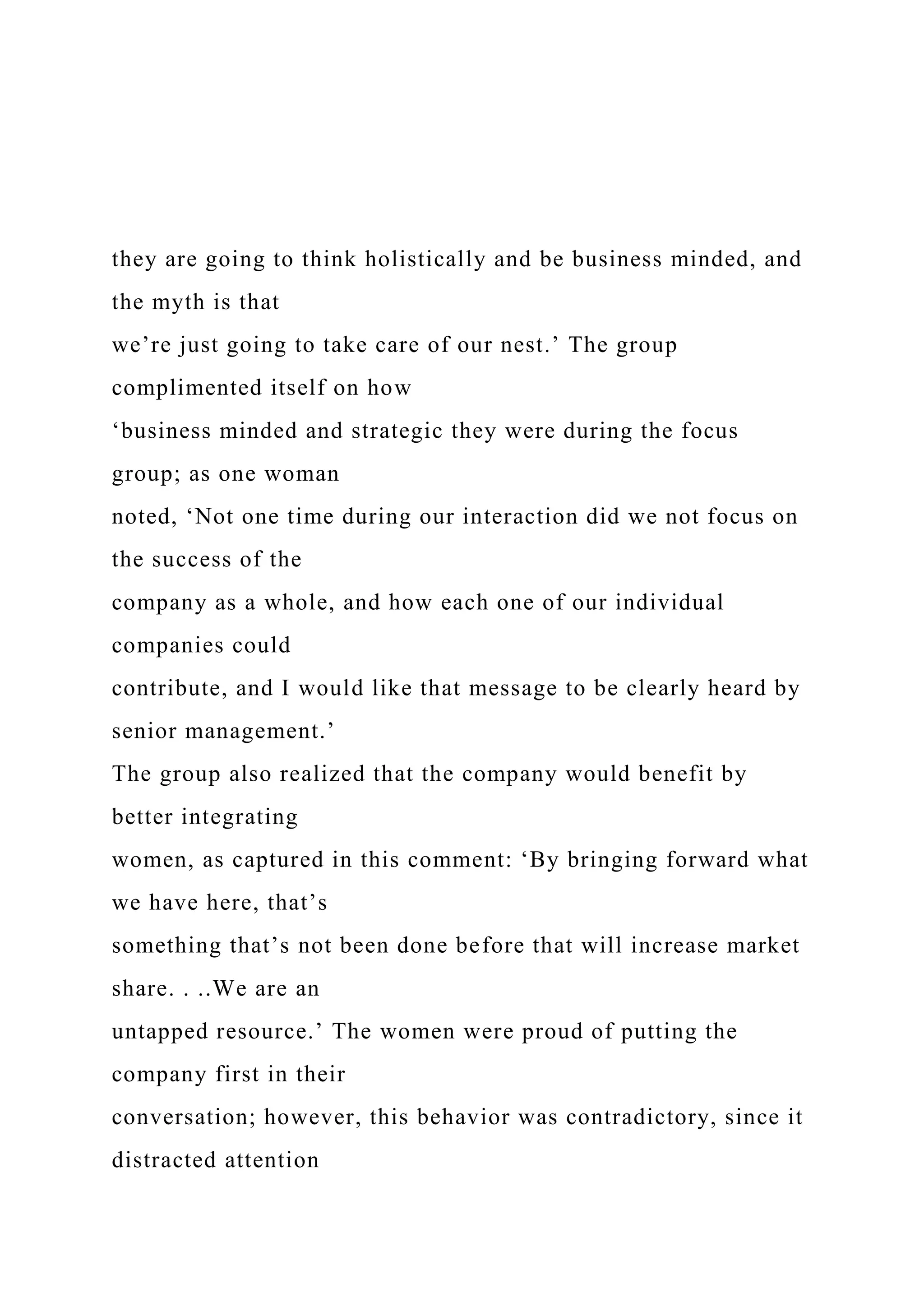
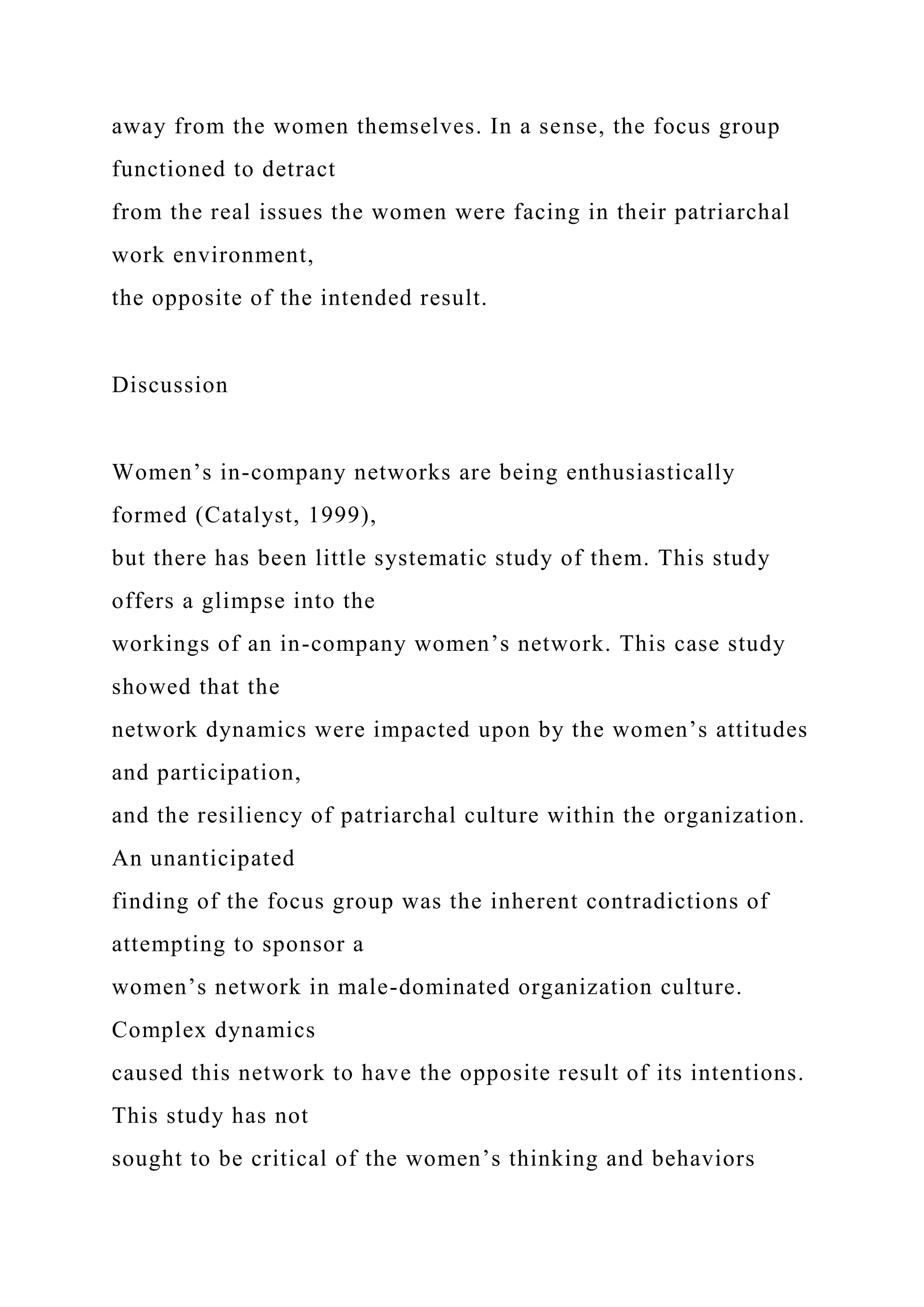


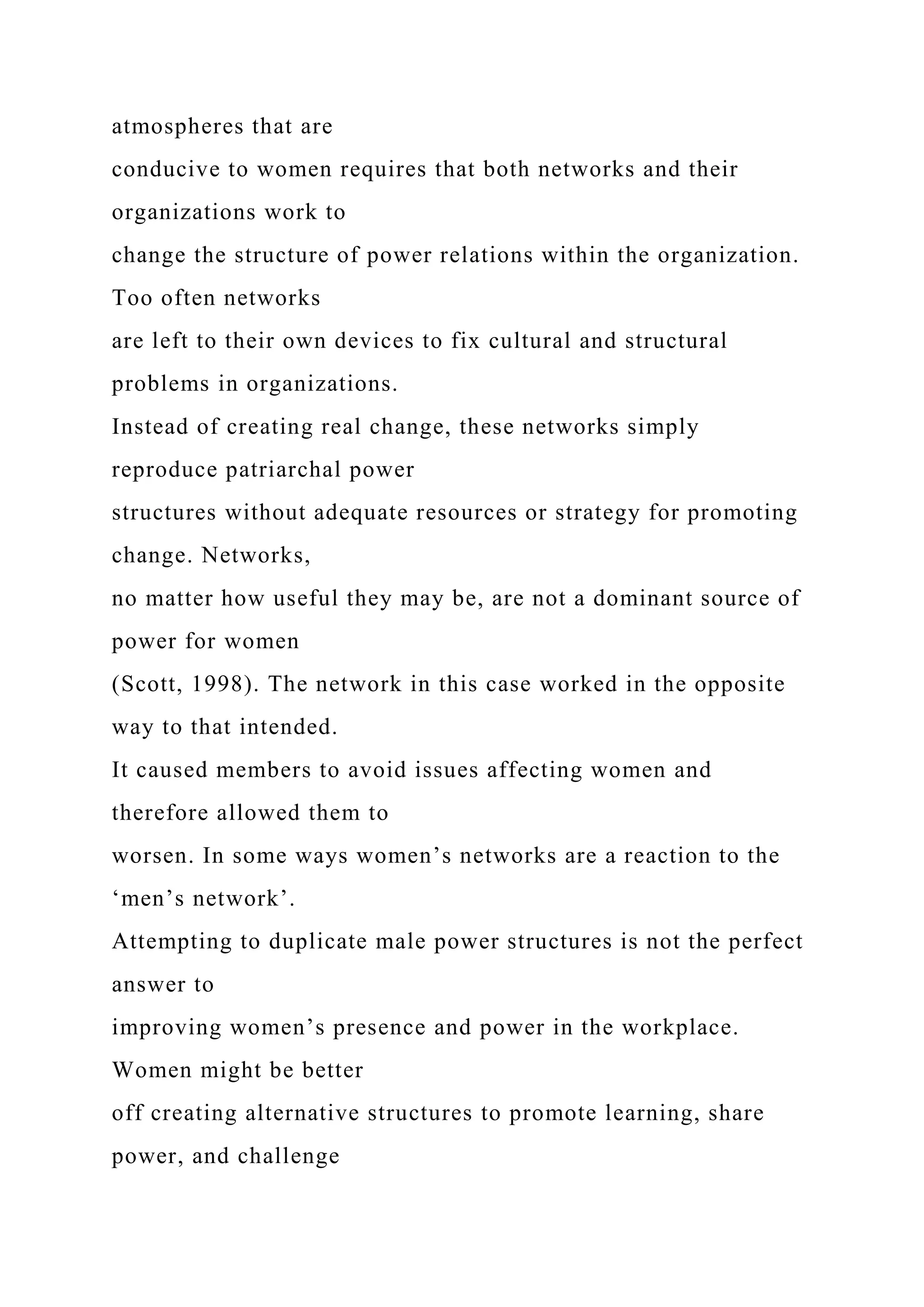
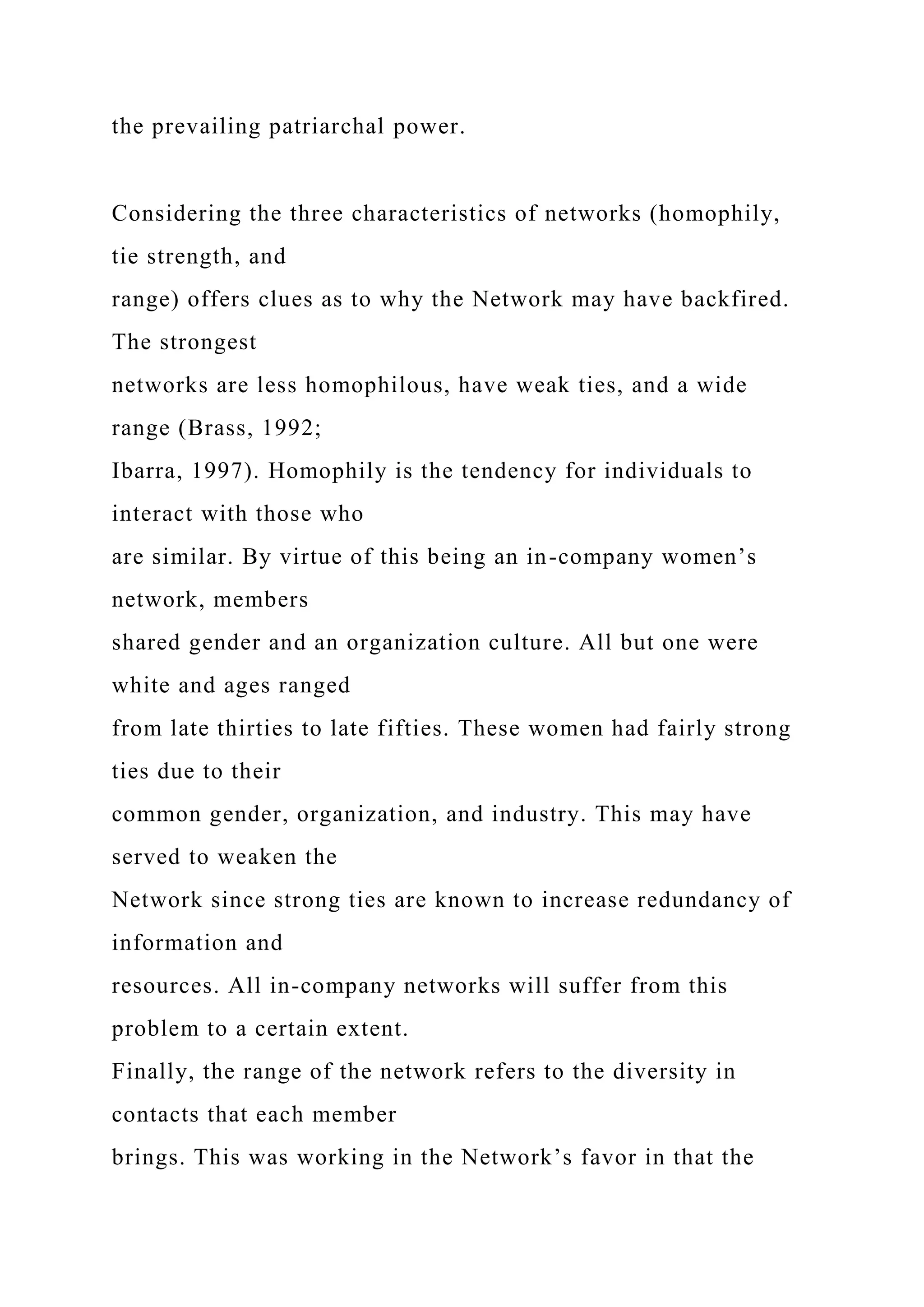
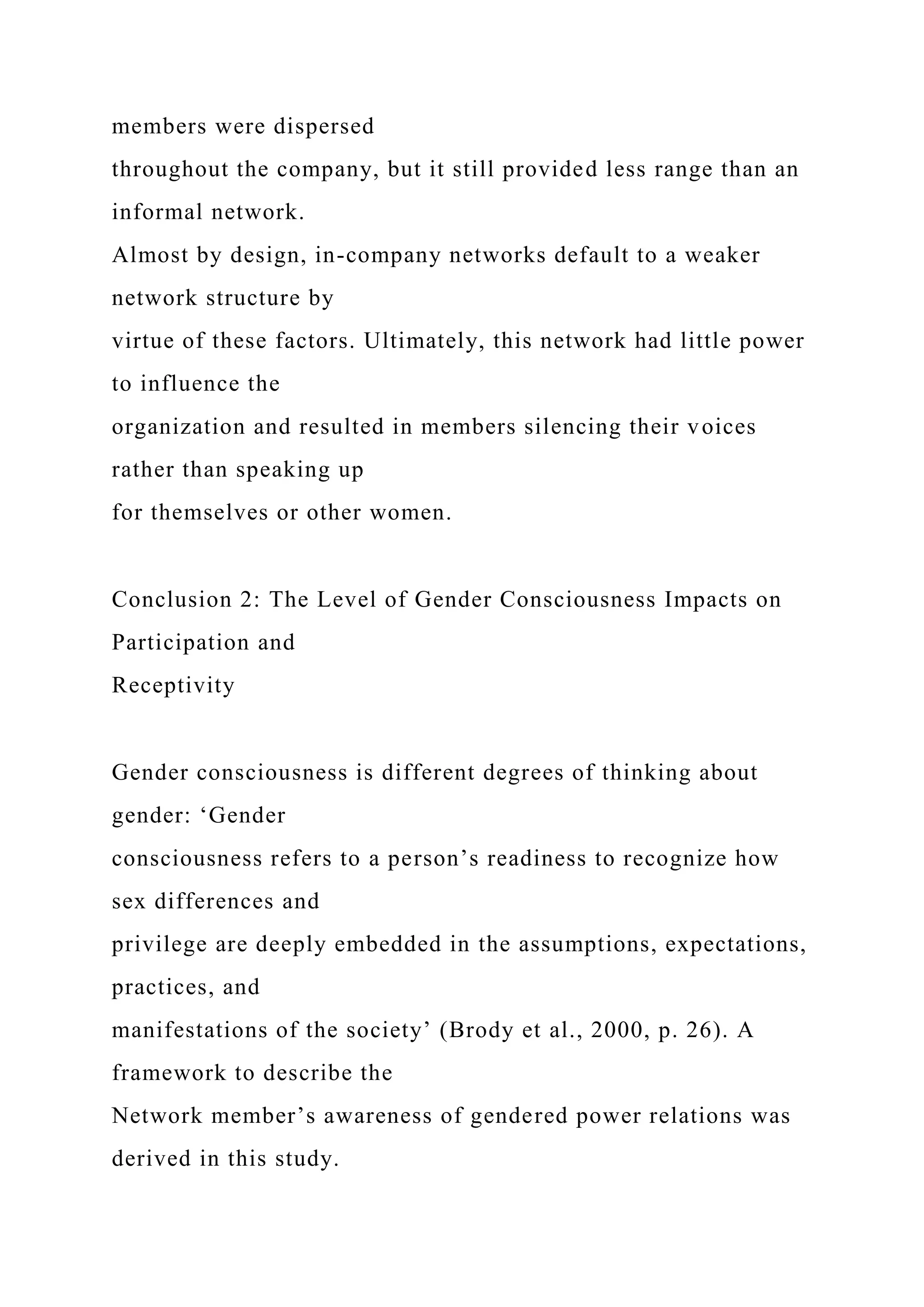

![unconsciousness] and
unidentified and unspoken assumptions about male privilege’
(2000, p. 1). Their
study examined how collective consciousness permeates the
experiences of both
educators and students in both single sex and coed institutions.
The matrix devised
to analyze the findings of this study examines levels of gender
consciousness relevant
to organizational settings and in particular to the case of the
women’s network.
While some of the executives exhibited low levels of awareness
and therefore
action (quadrant 1), the majority fell into a category of
‘conscious unconsciousness’
(quadrant 3), that is, they were highly aware of gendered power
relations, but unable
or unwilling to take any action to change them. They
deliberately took a stance of
inaction on women’s issues. These Network members critiqued
power relations and
expressed understanding about how they were affected by these
dynamics in the
privacy of a one-on-one interview, sometimes without the tape-](https://image.slidesharecdn.com/reflectionpaper1reflectionpaper2reflectionpaper-221031054129-dcabb3bf/75/Reflection-Paper-1Reflection-Paper-2Reflection-Paper-docx-168-2048.jpg)

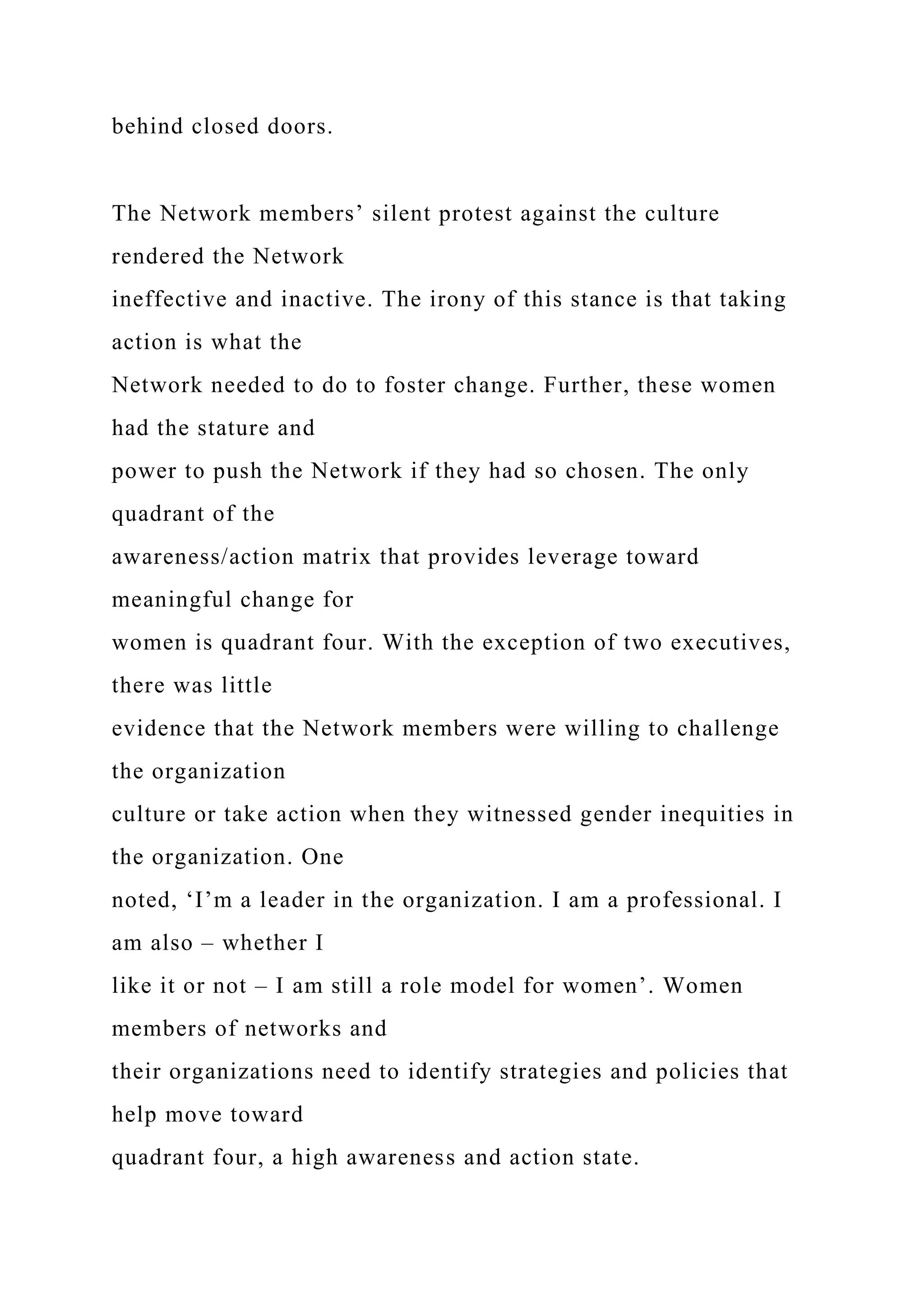
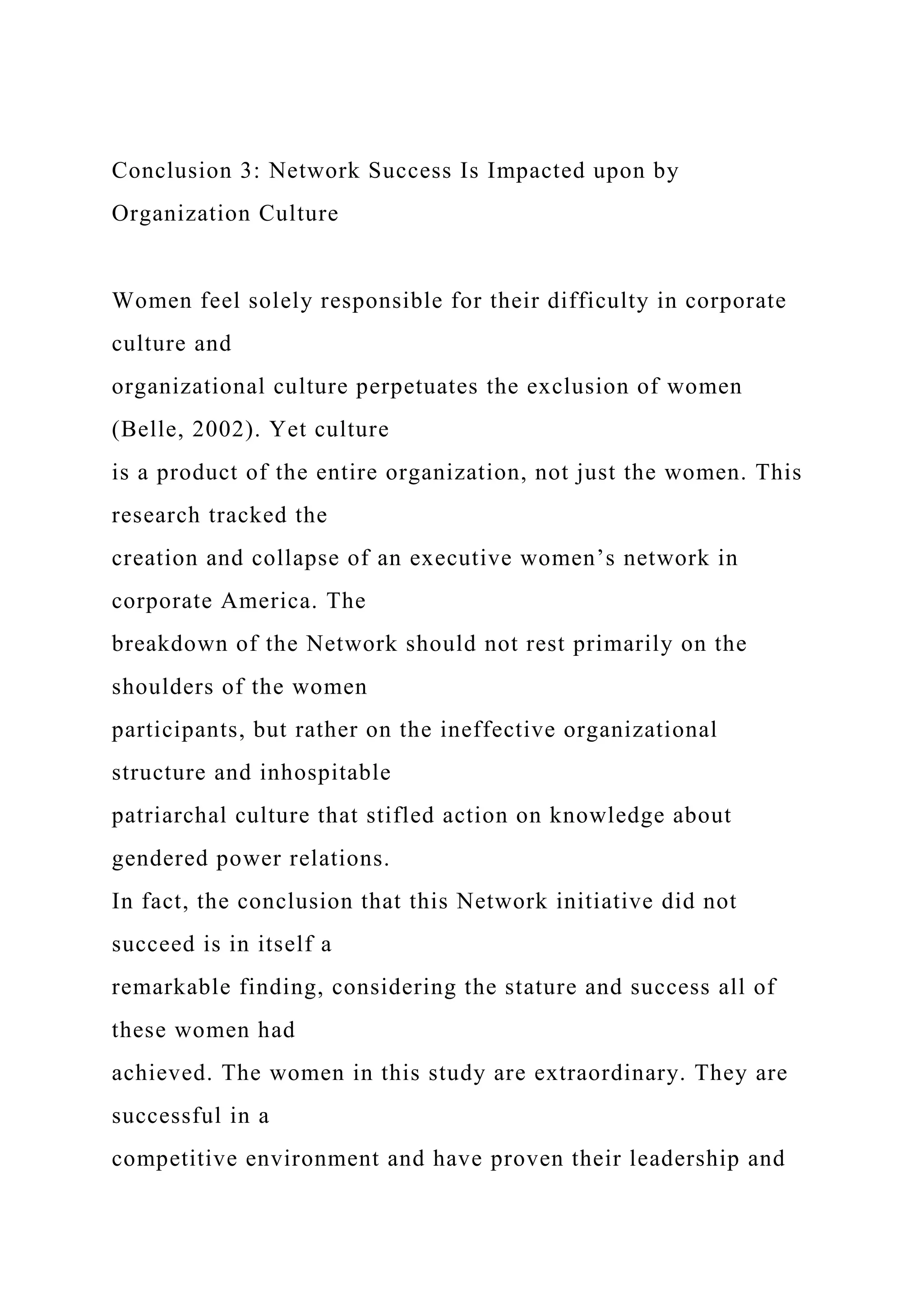
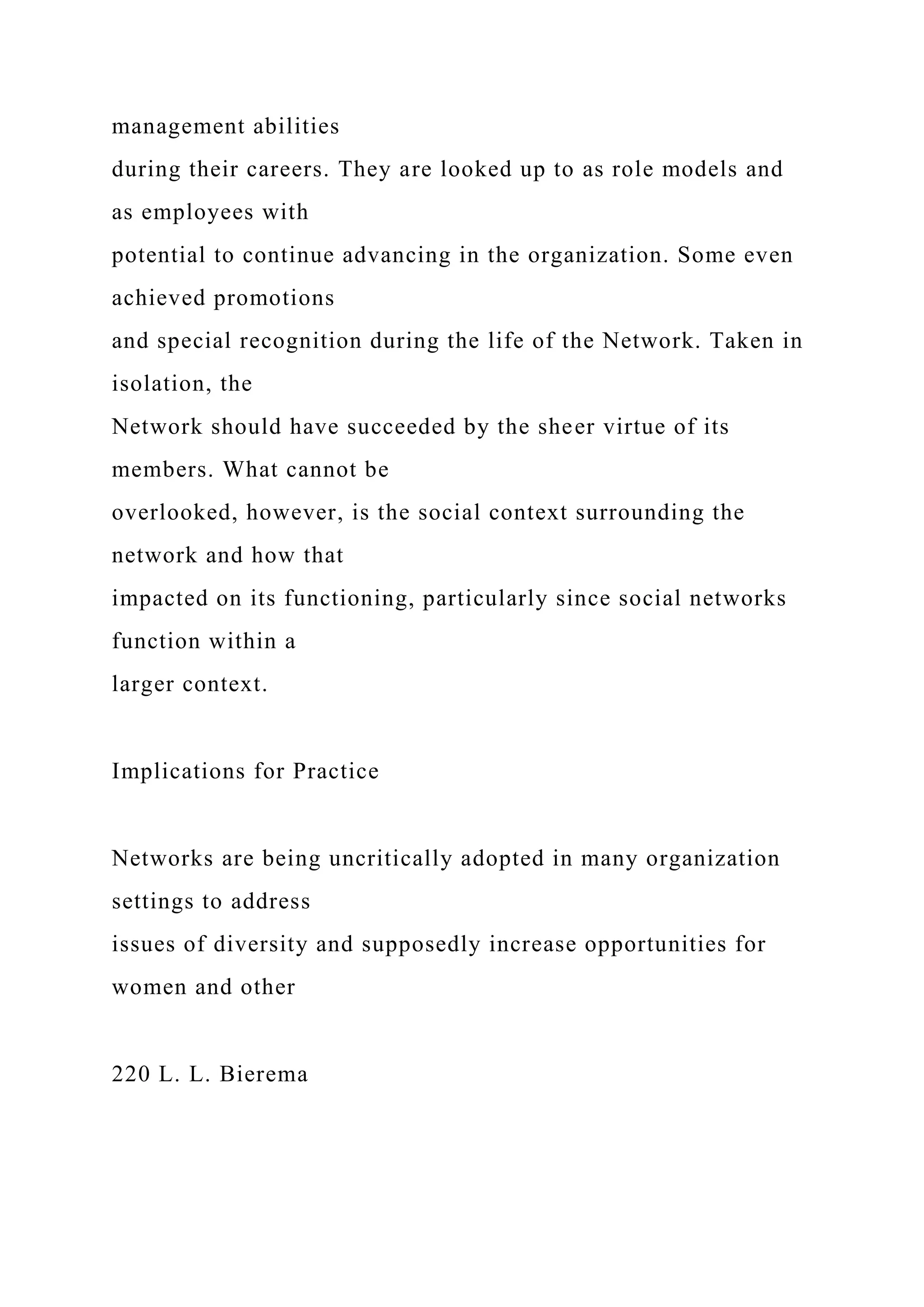
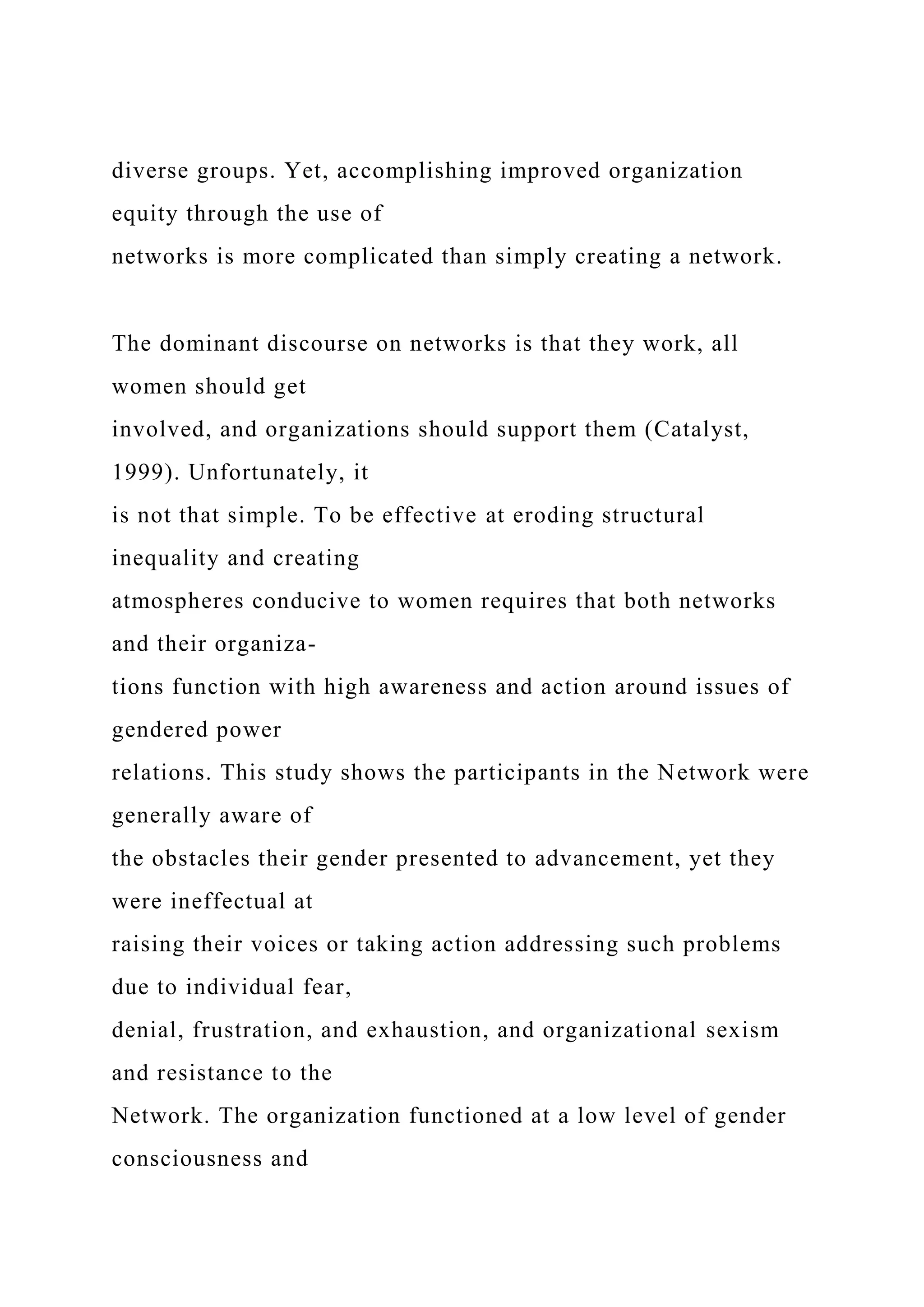
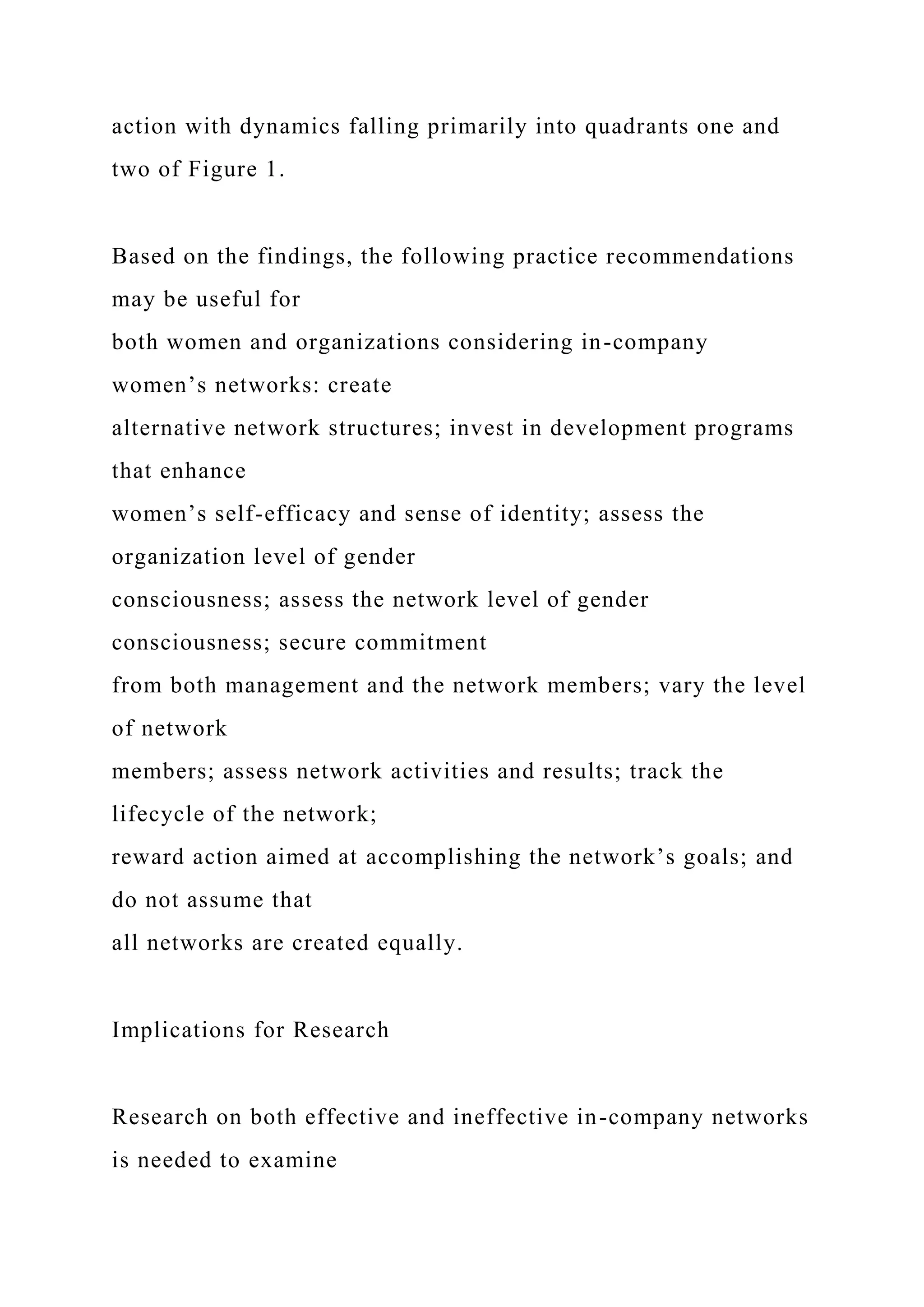
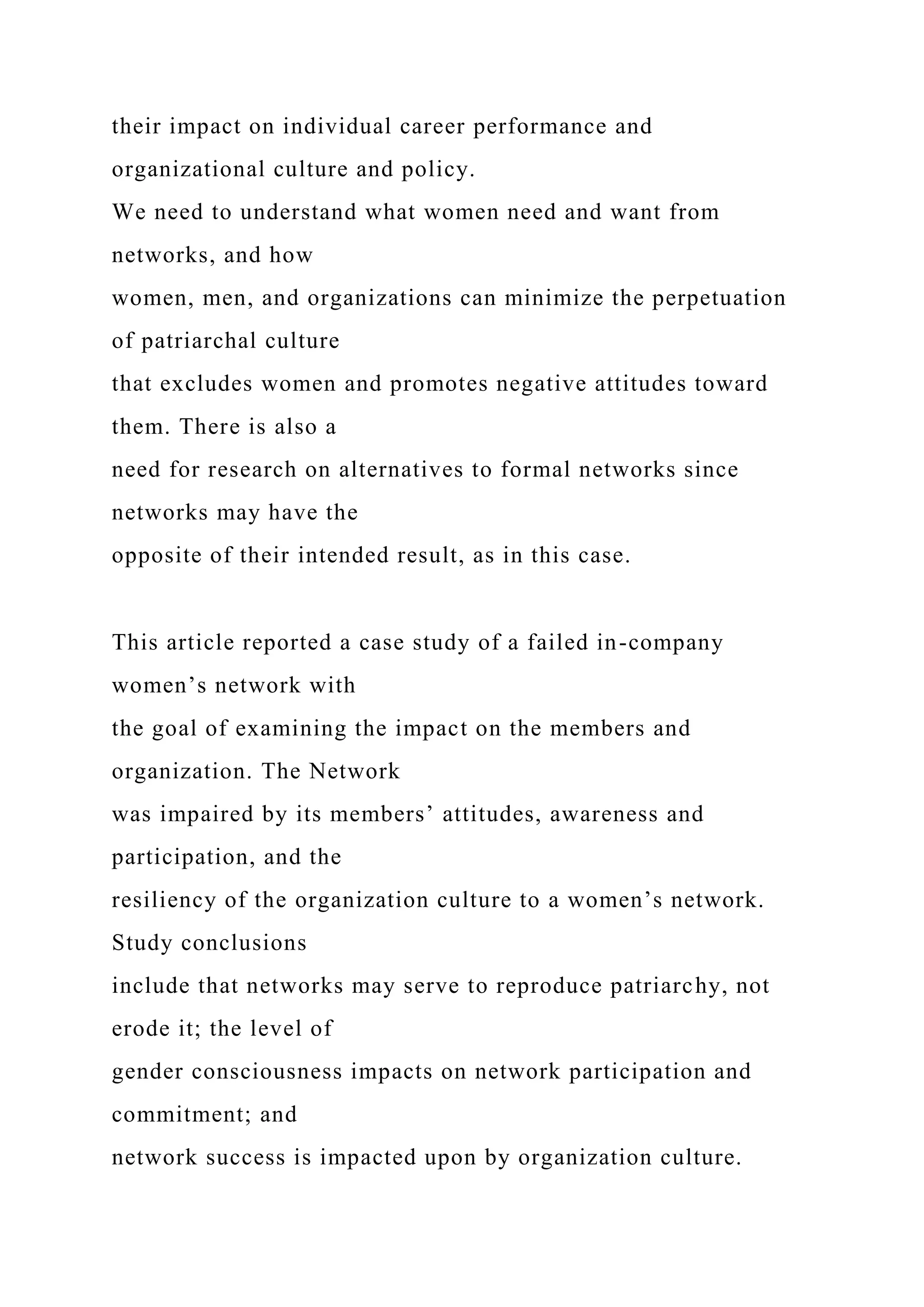

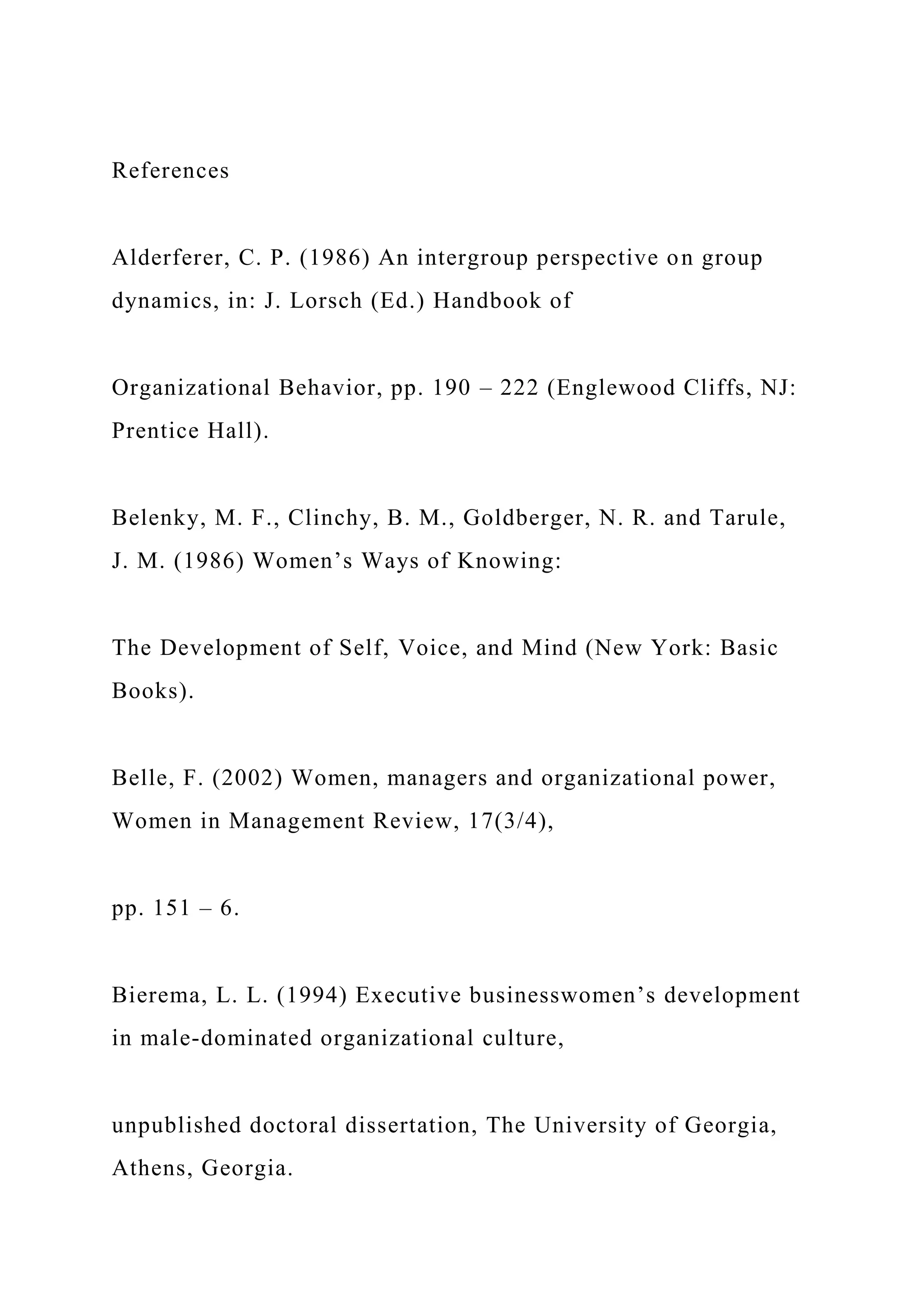
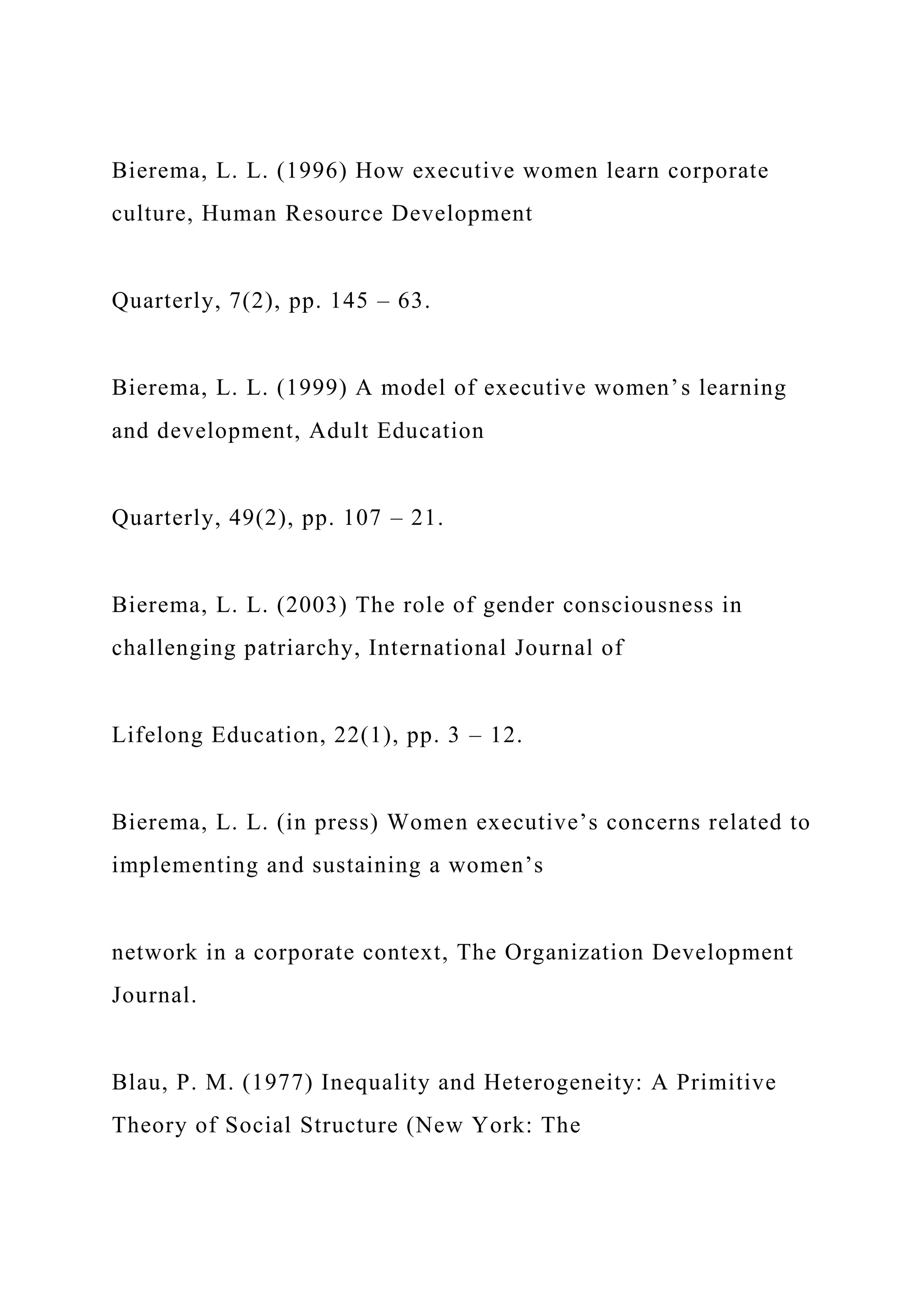
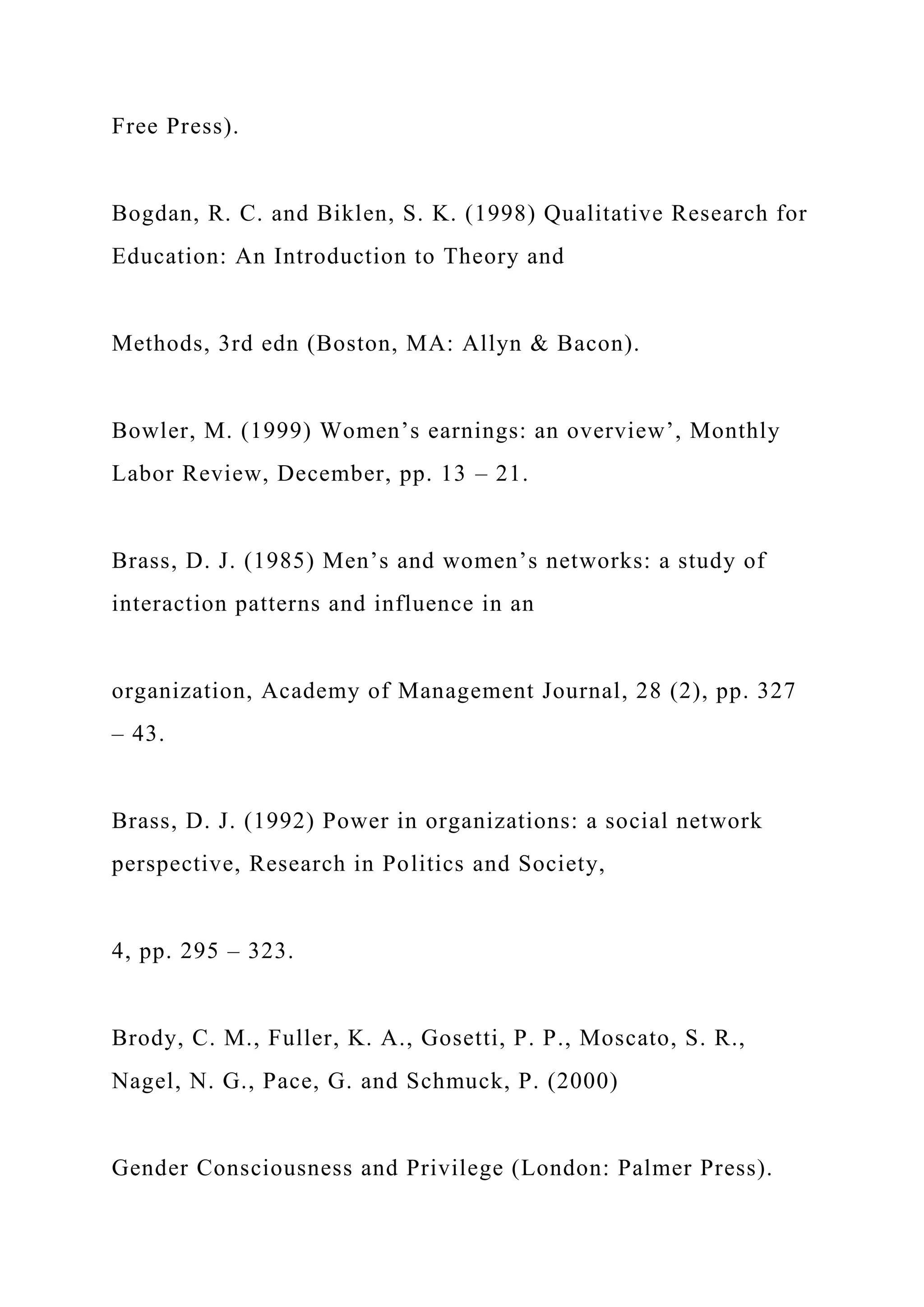

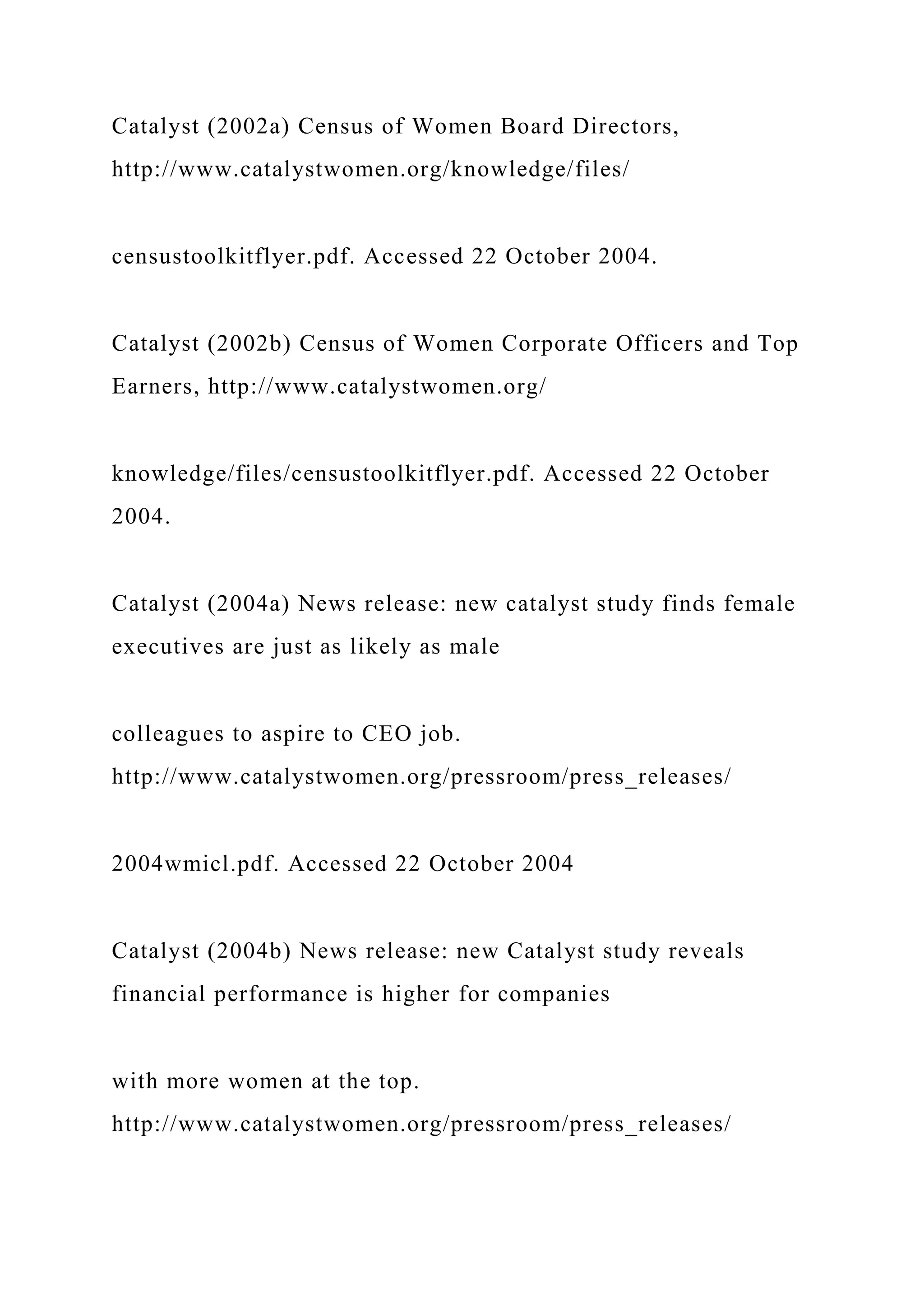
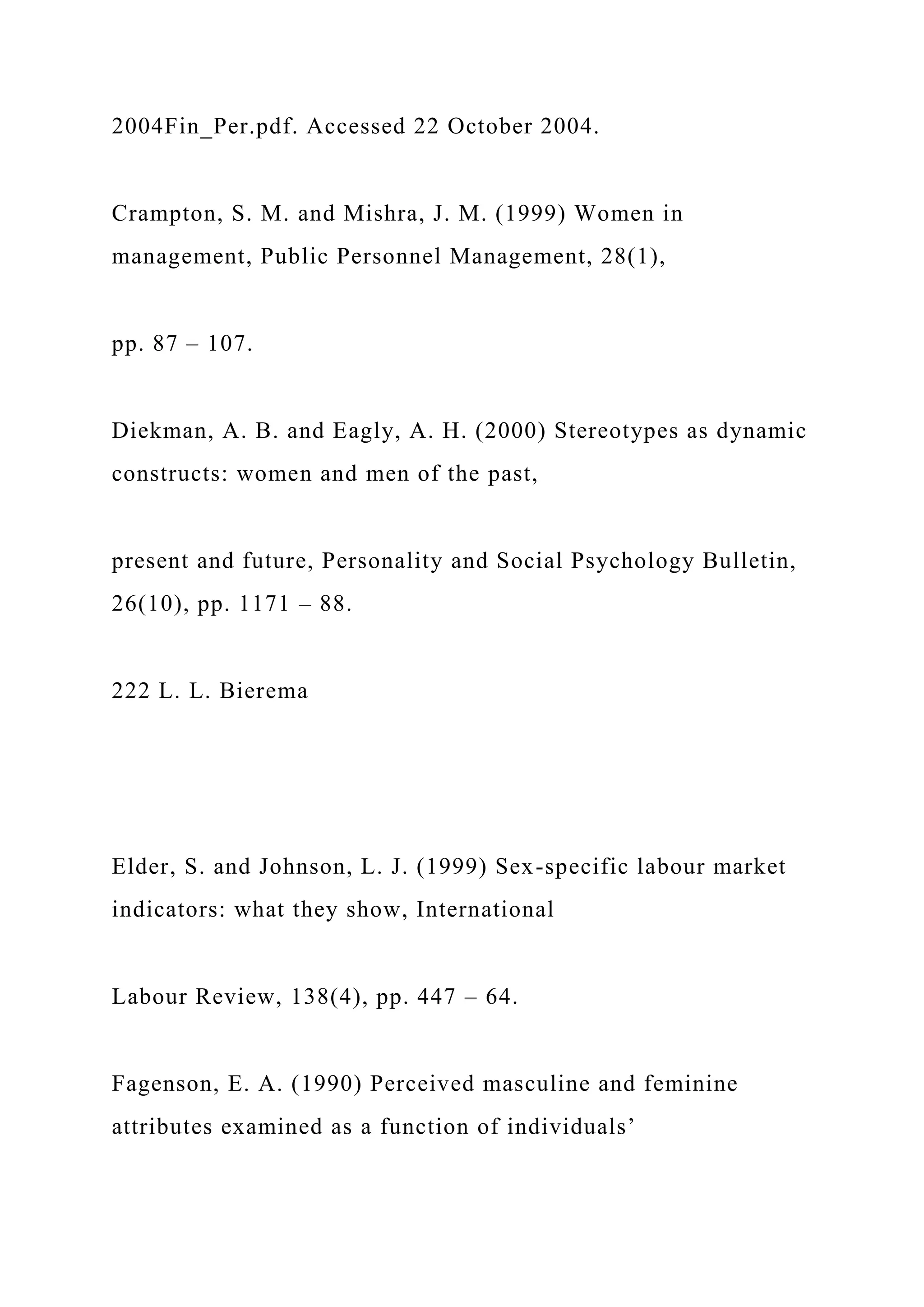

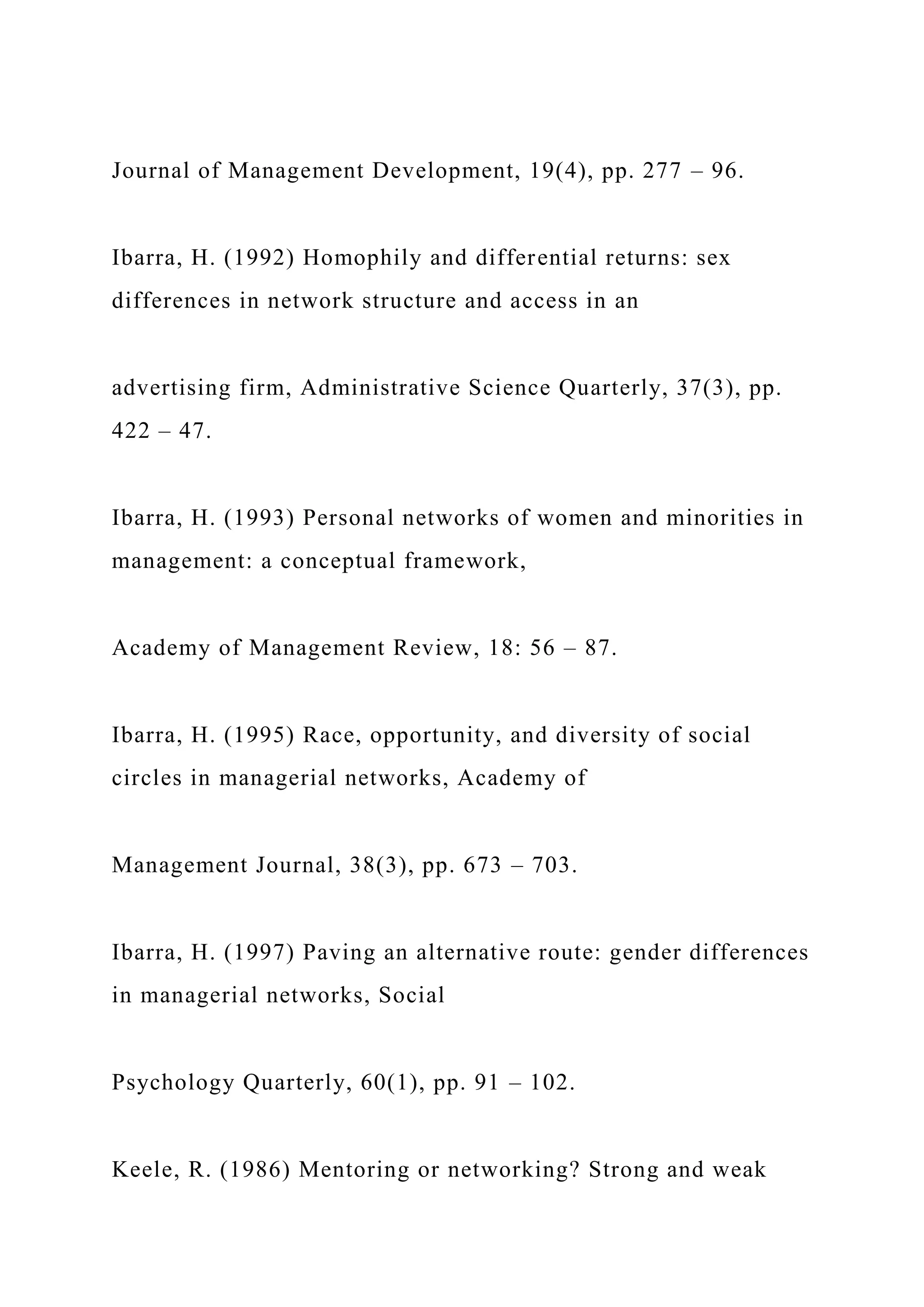
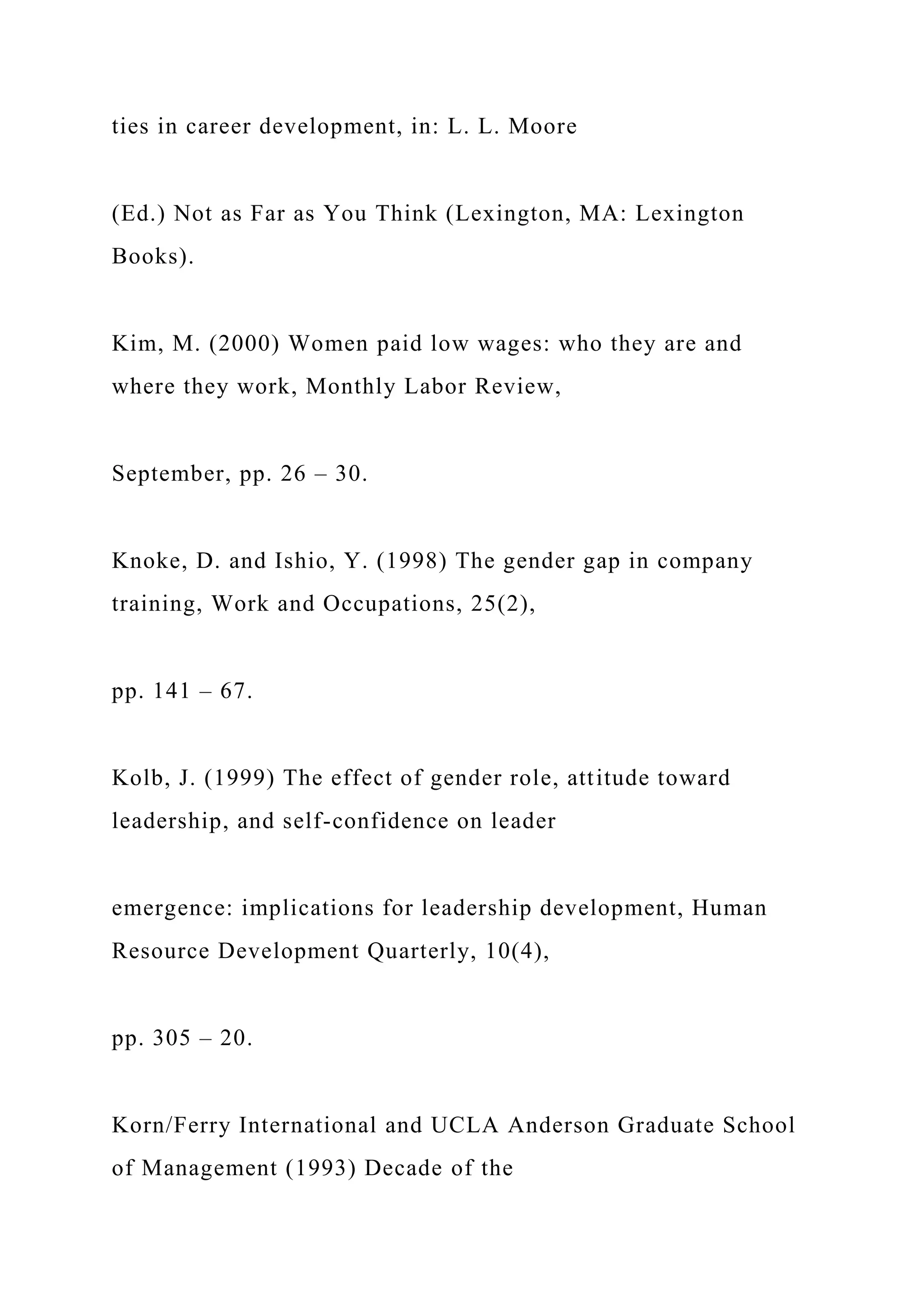
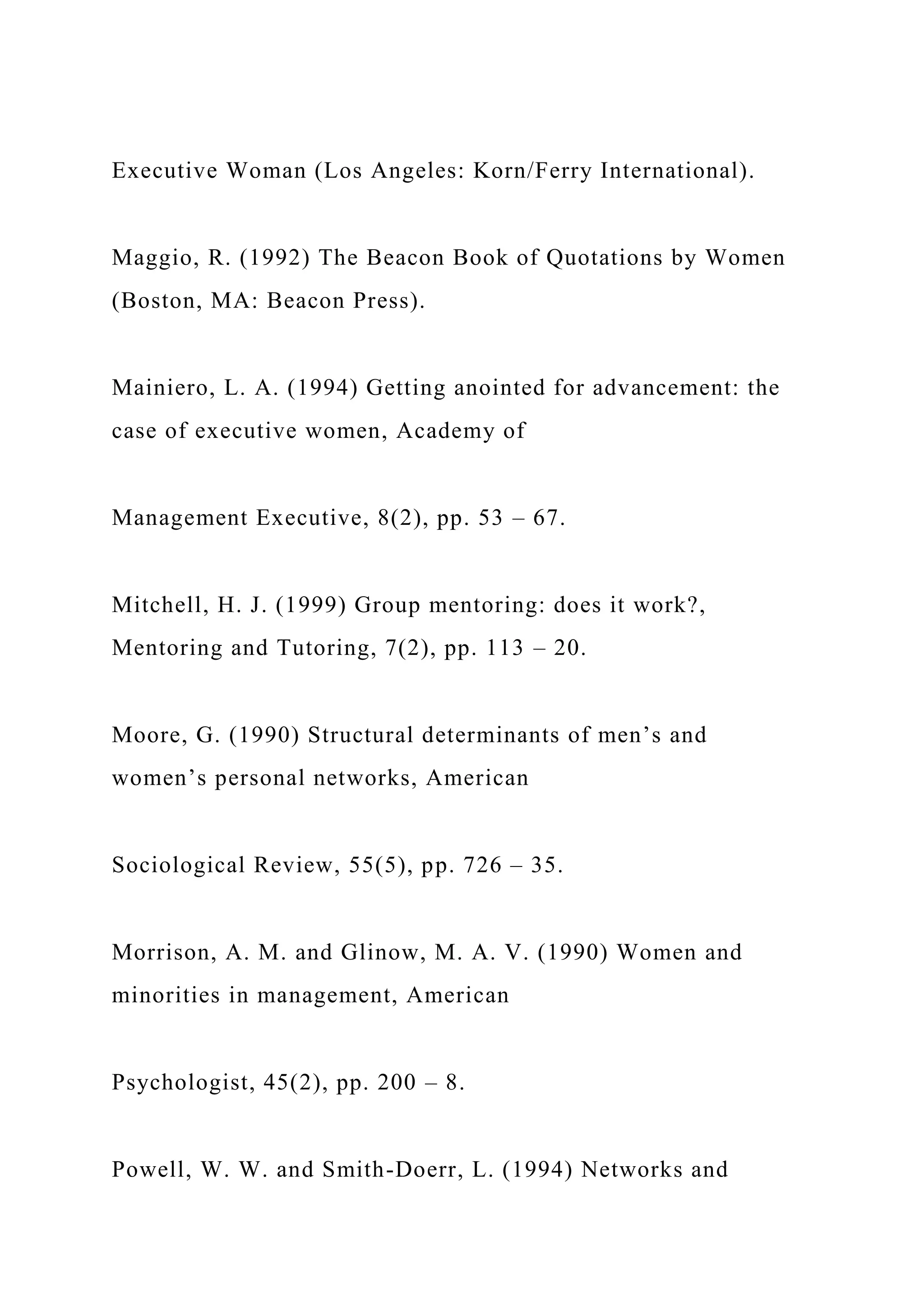
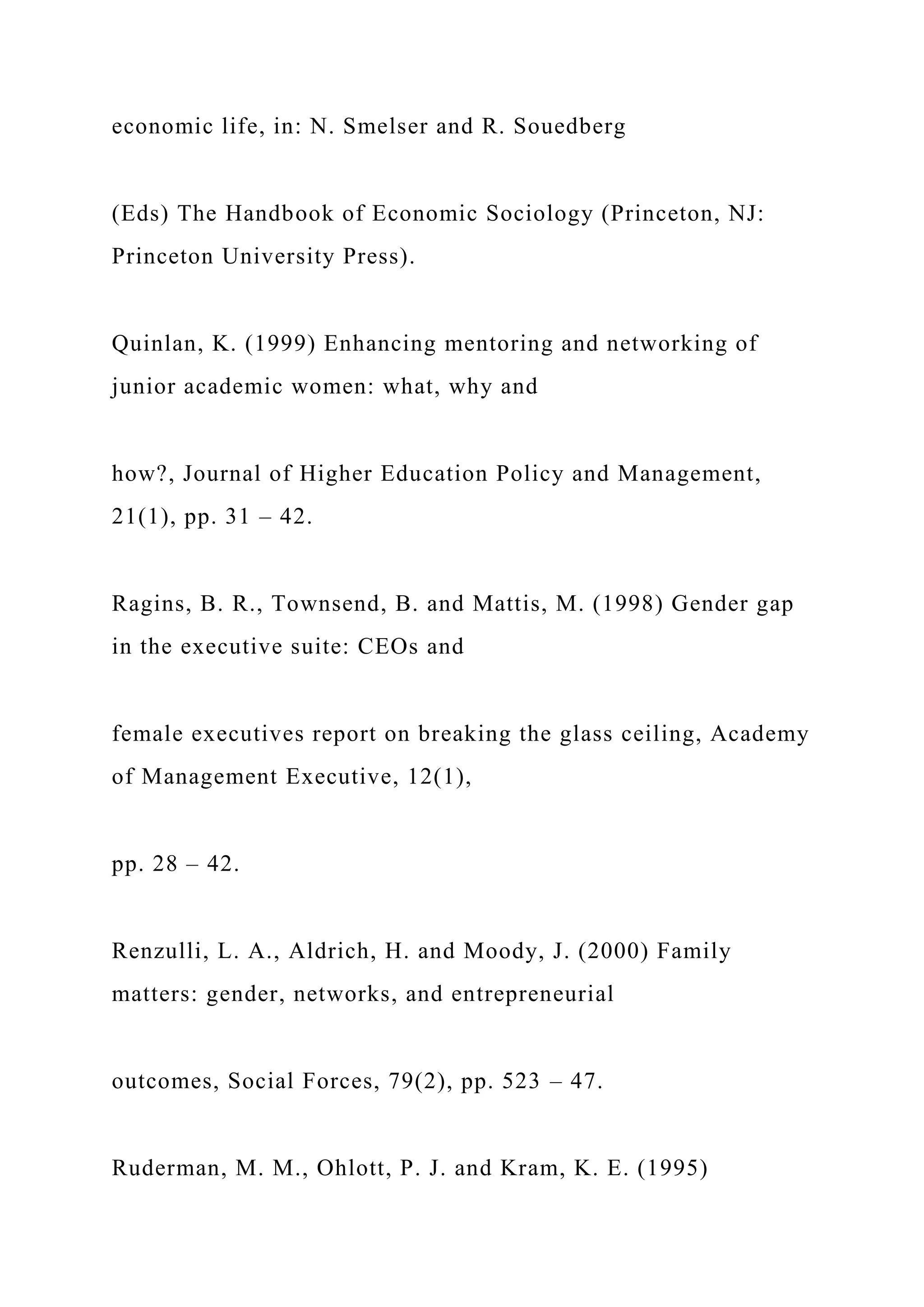
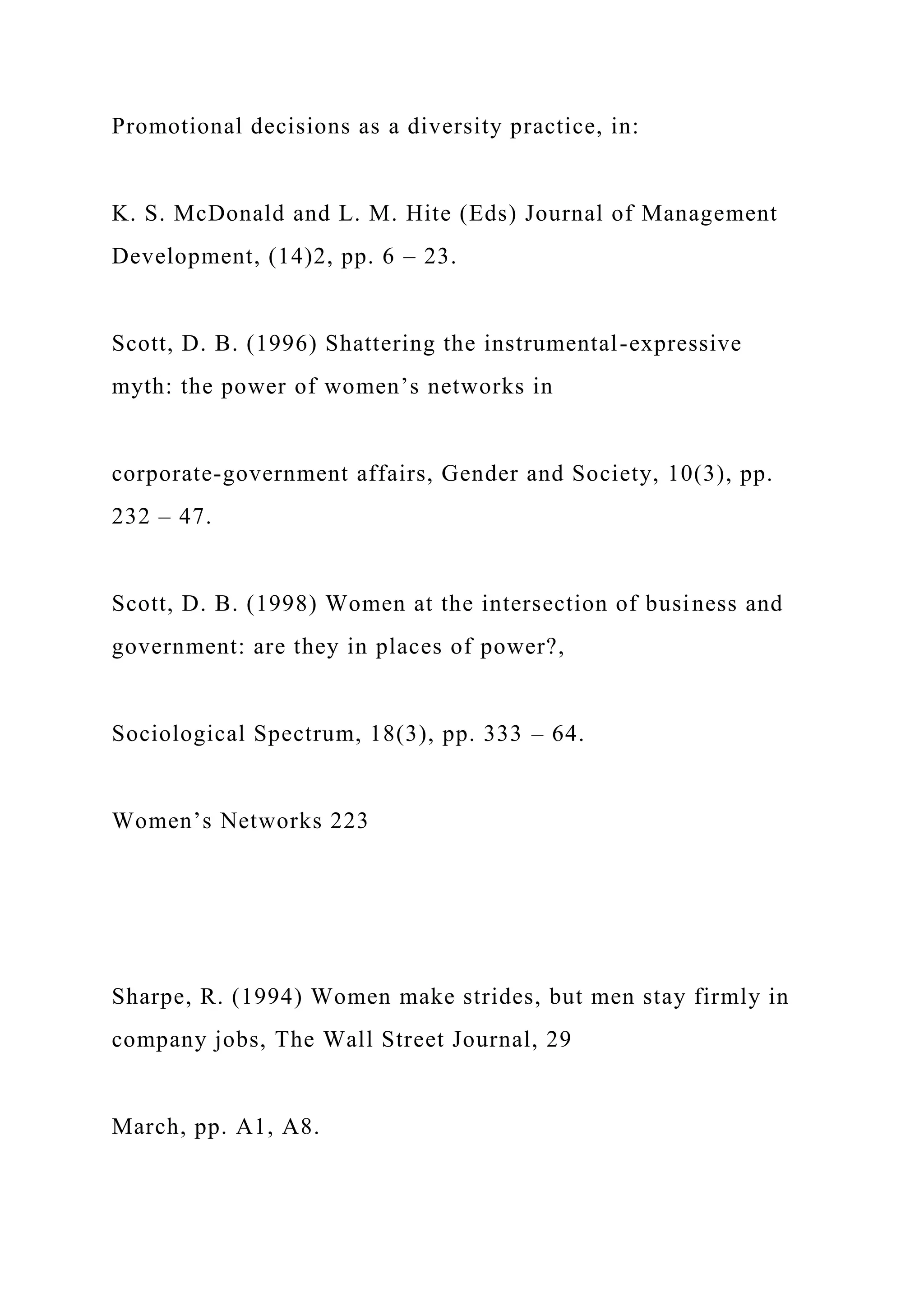
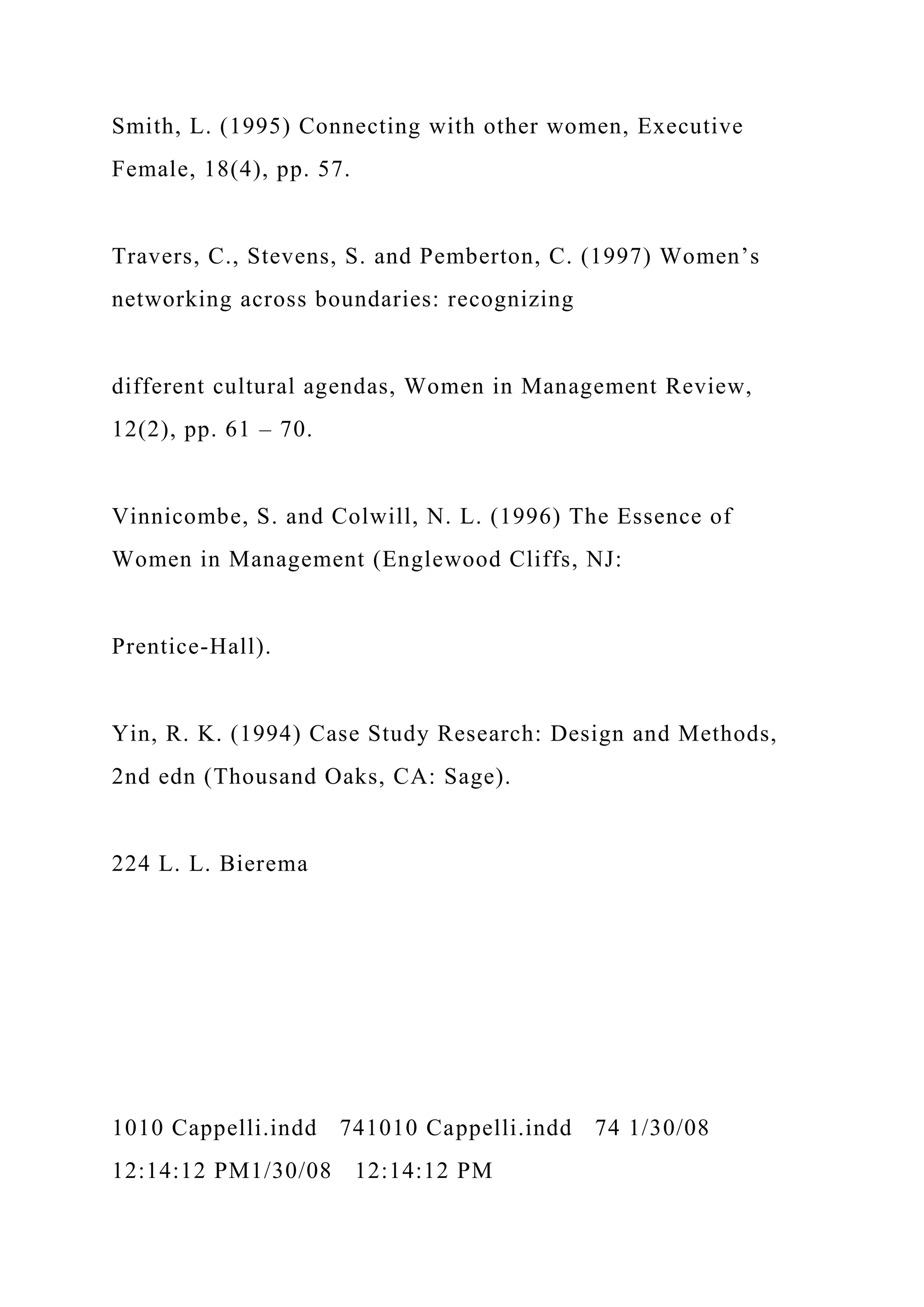

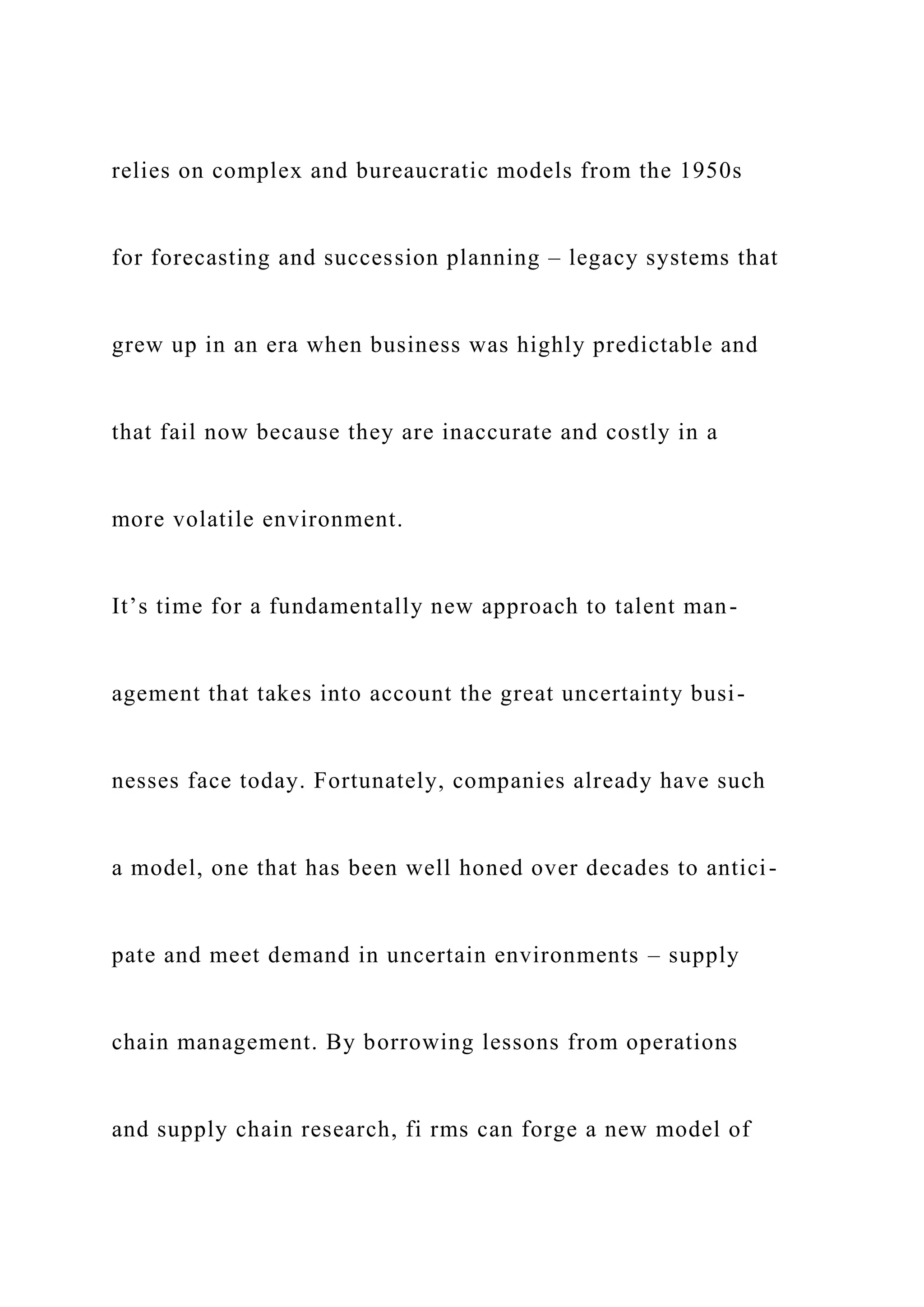


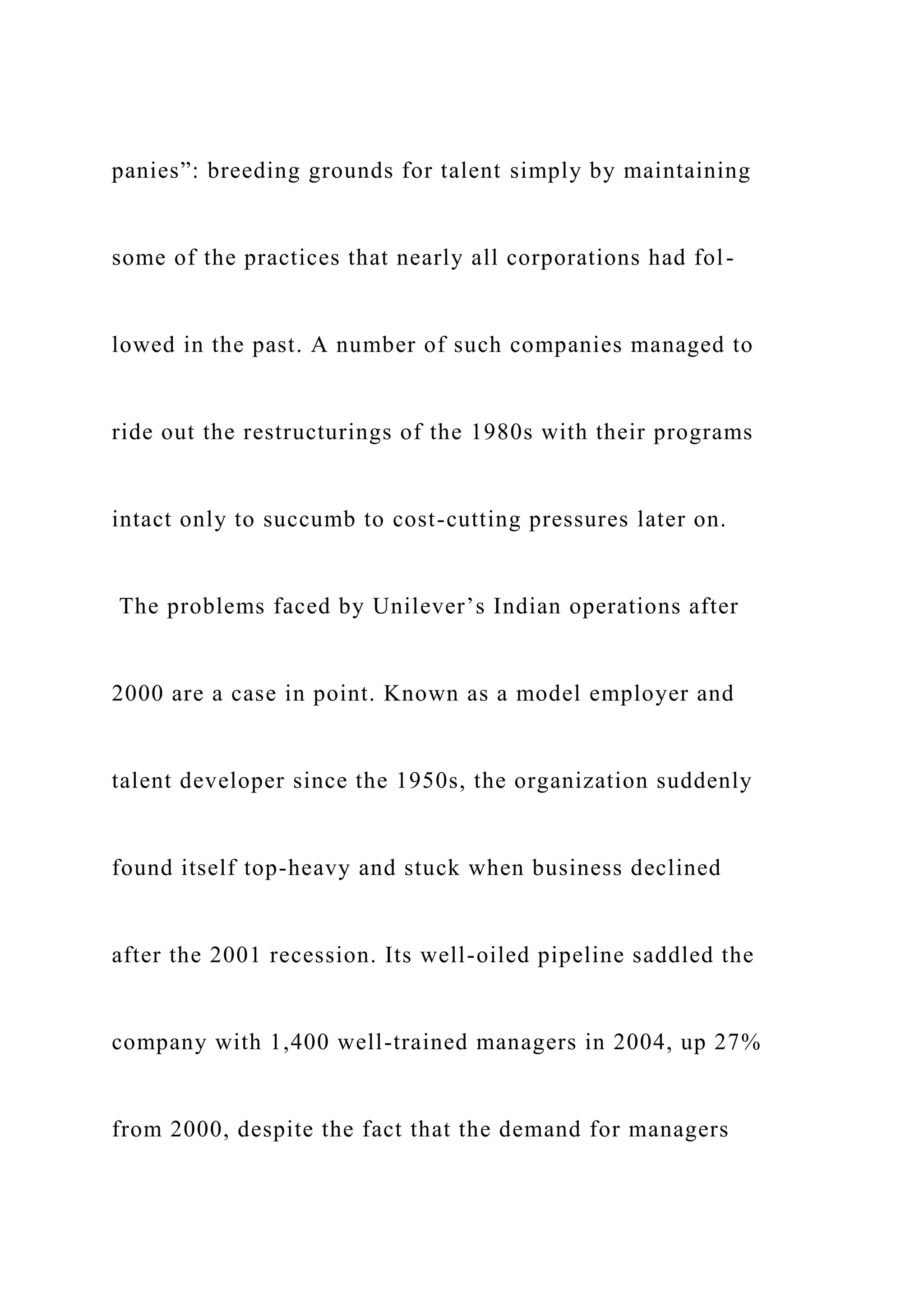
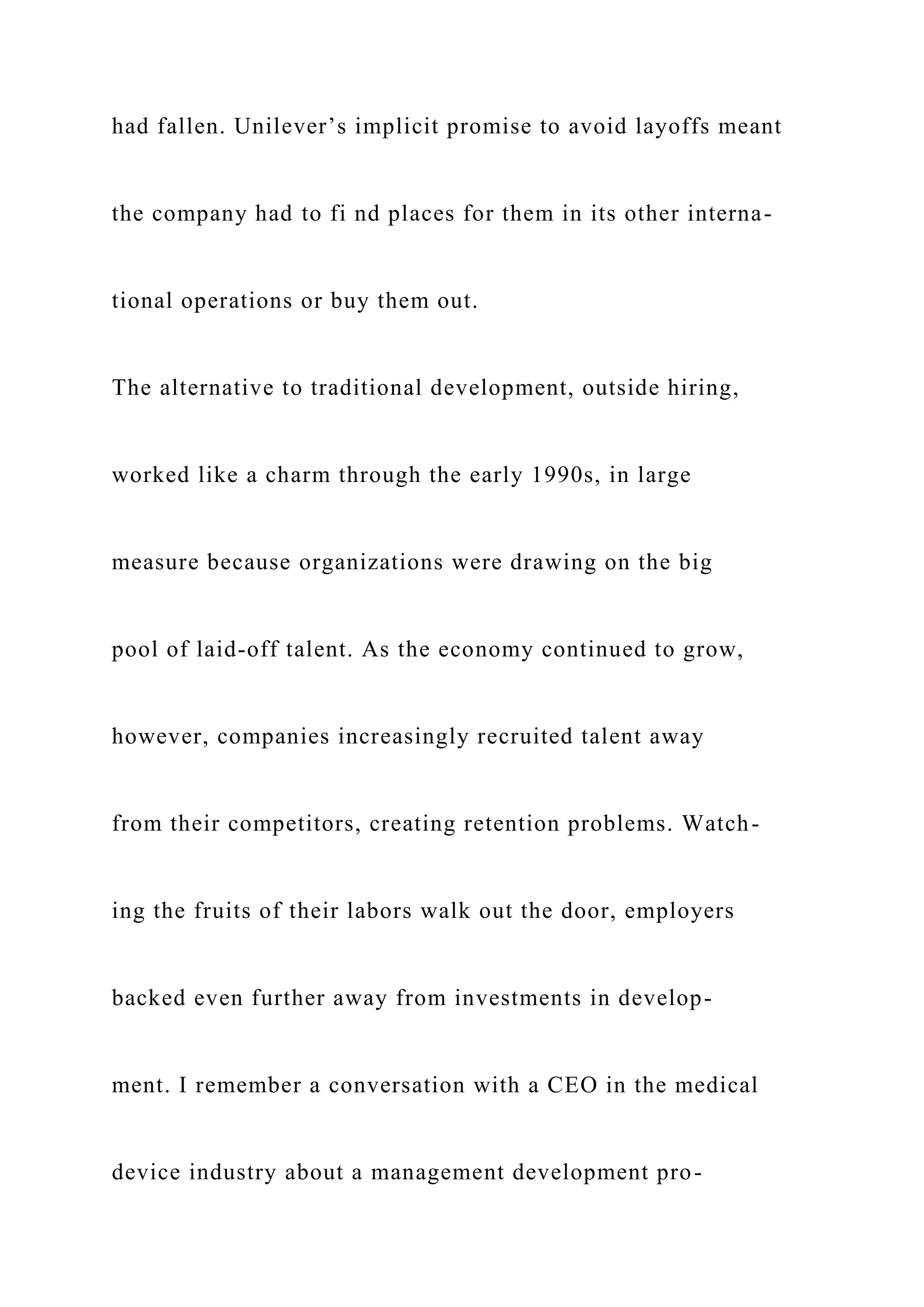
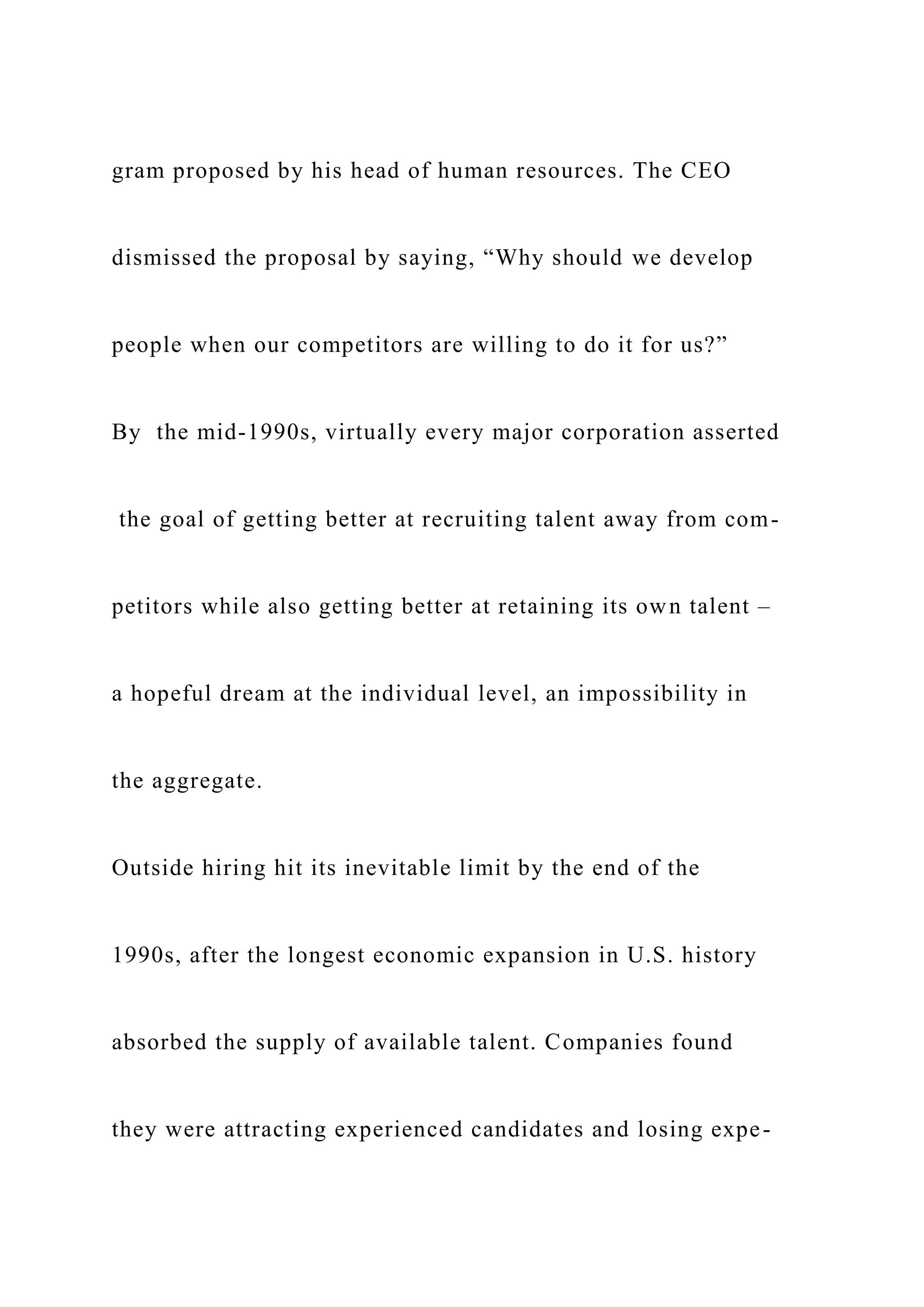
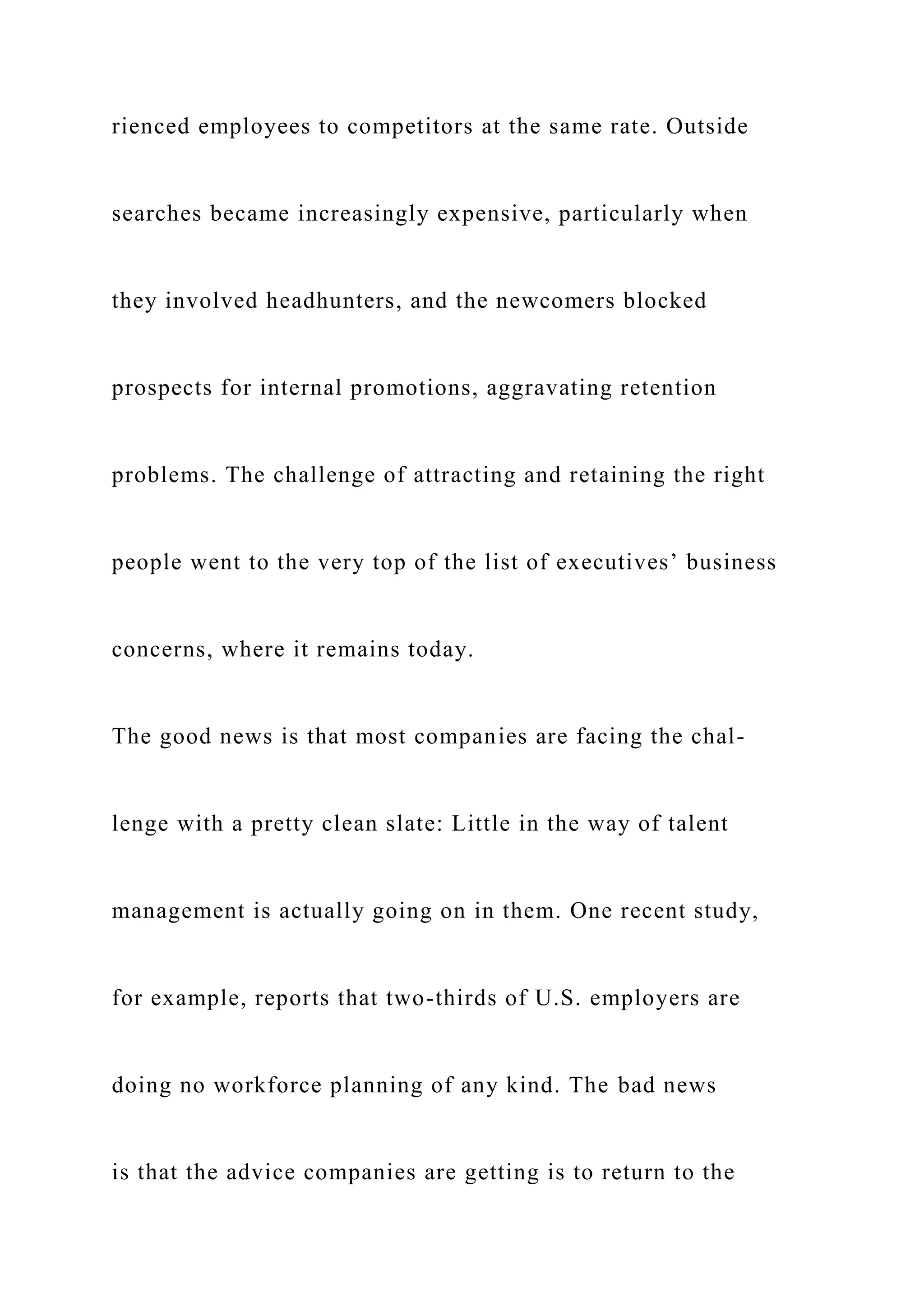
![practices of the 1950s and create long-term succession plans
that attempt to map out careers years into the future – even
Peter Cappelli ([email protected]) is the George W. Taylor
Professor of Management and the director of the Center for
Human
Resources at the University of Pennsylvania’s Wharton School
in Philadelphia. He is the author of several HBR articles and the
book Talent
on Demand, forthcoming from Harvard Business School Press,
which further develops the ideas presented in this article.
1010 Cappelli.indd 761010 Cappelli.indd 76 1/30/08
12:14:23 PM1/30/08 12:14:23 PM
hbr.org | March 2008 | Harvard Business Review 77
though the stable business environment and talent pipelines](https://image.slidesharecdn.com/reflectionpaper1reflectionpaper2reflectionpaper-221031054129-dcabb3bf/75/Reflection-Paper-1Reflection-Paper-2Reflection-Paper-docx-198-2048.jpg)
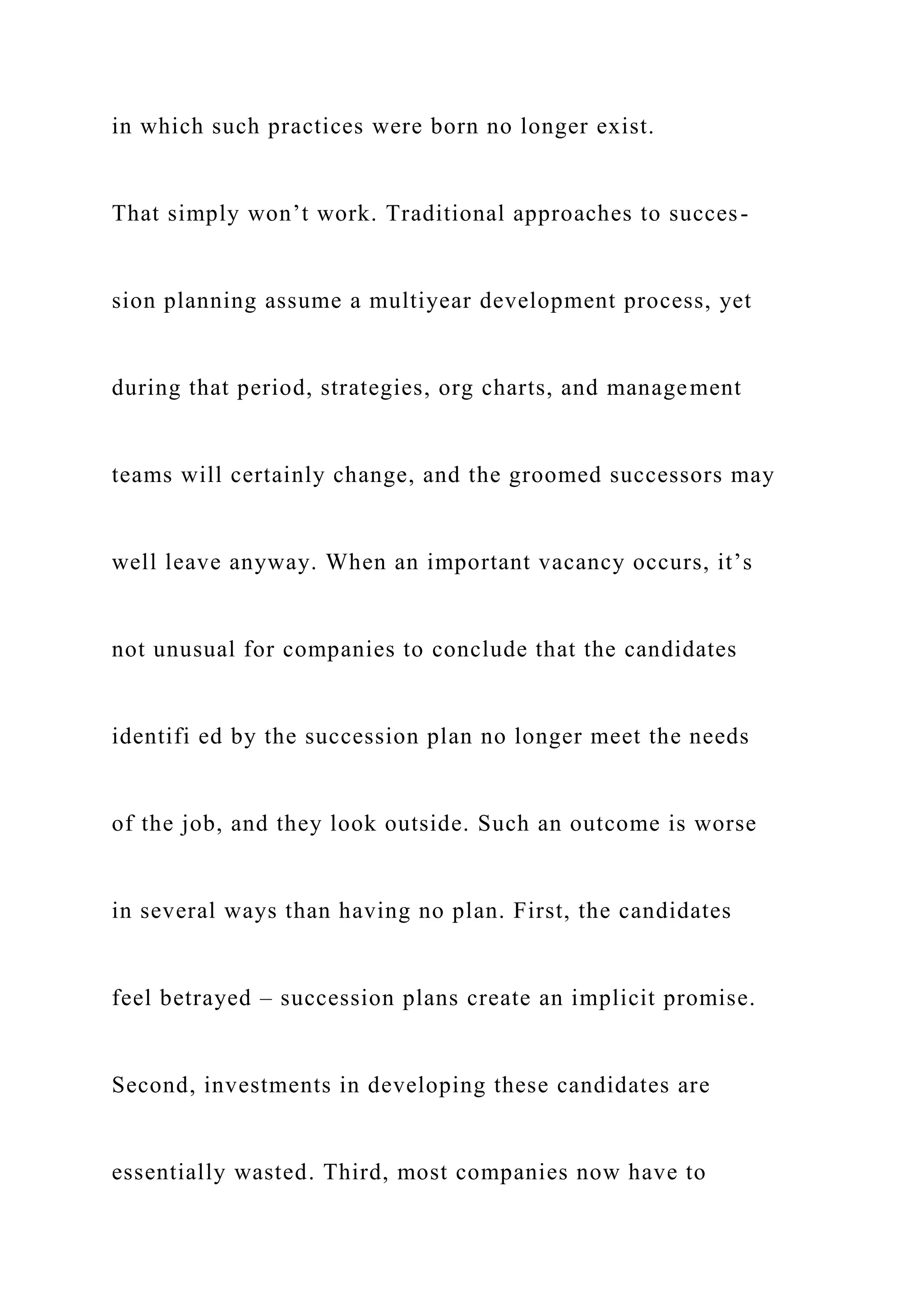
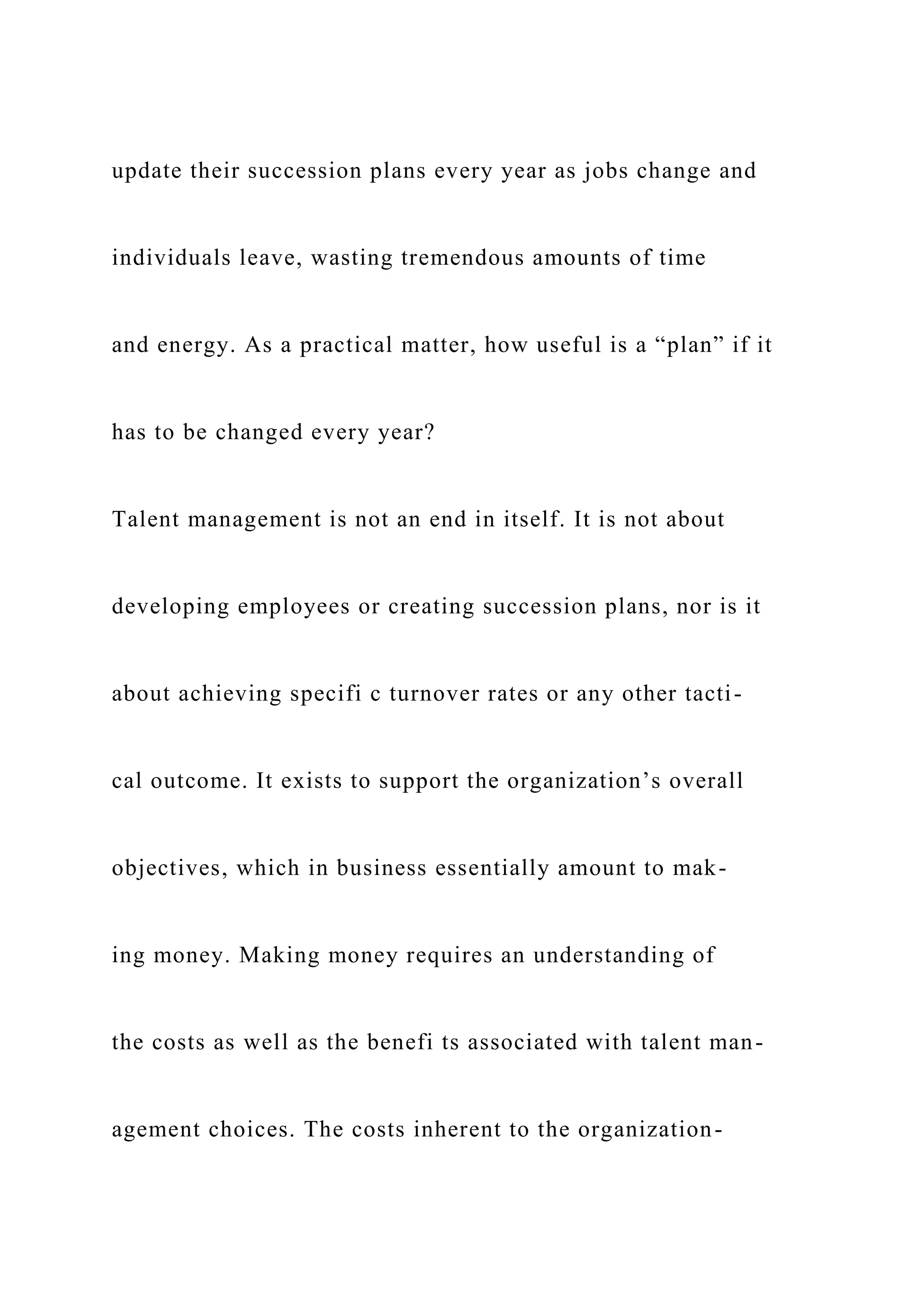
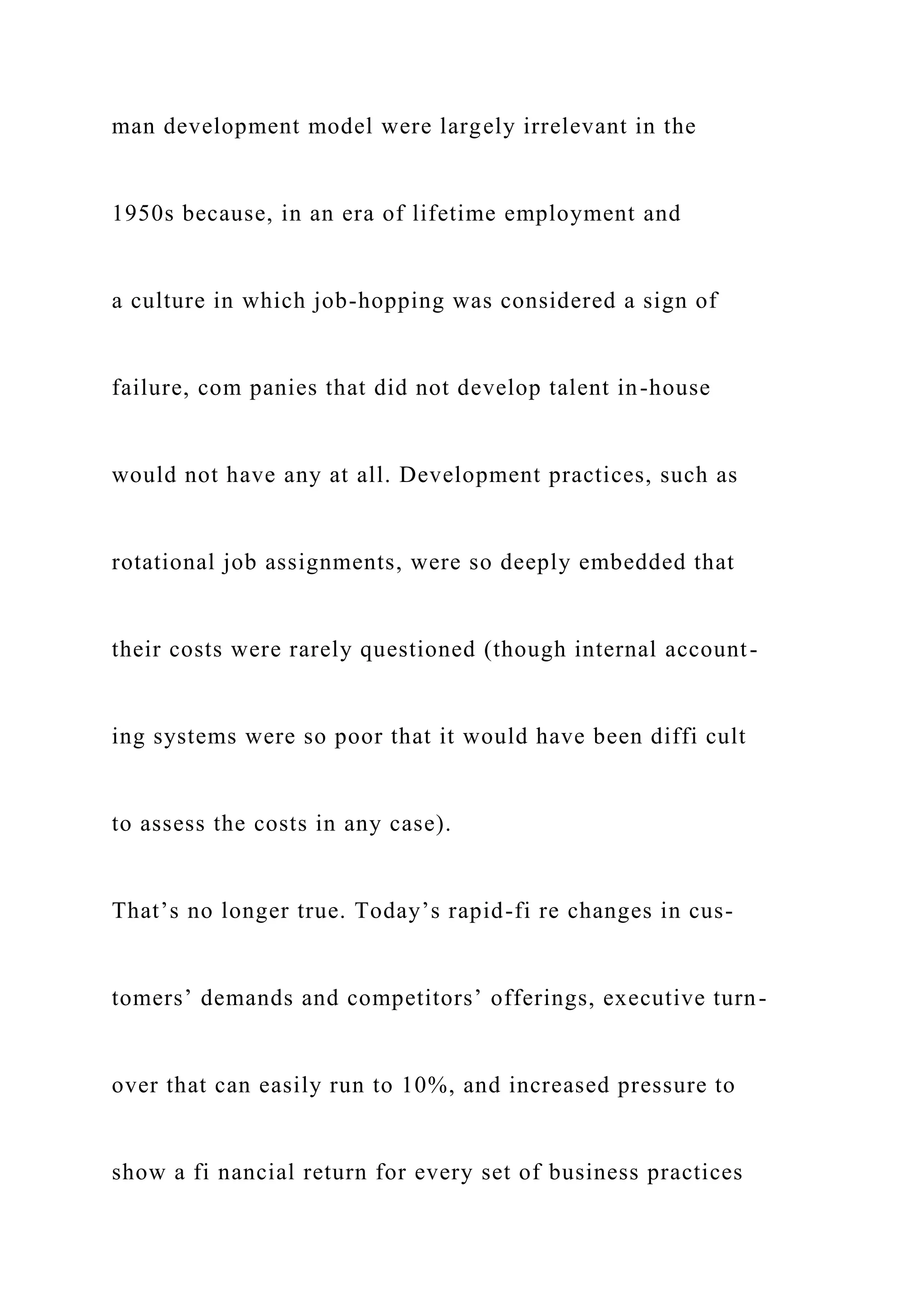


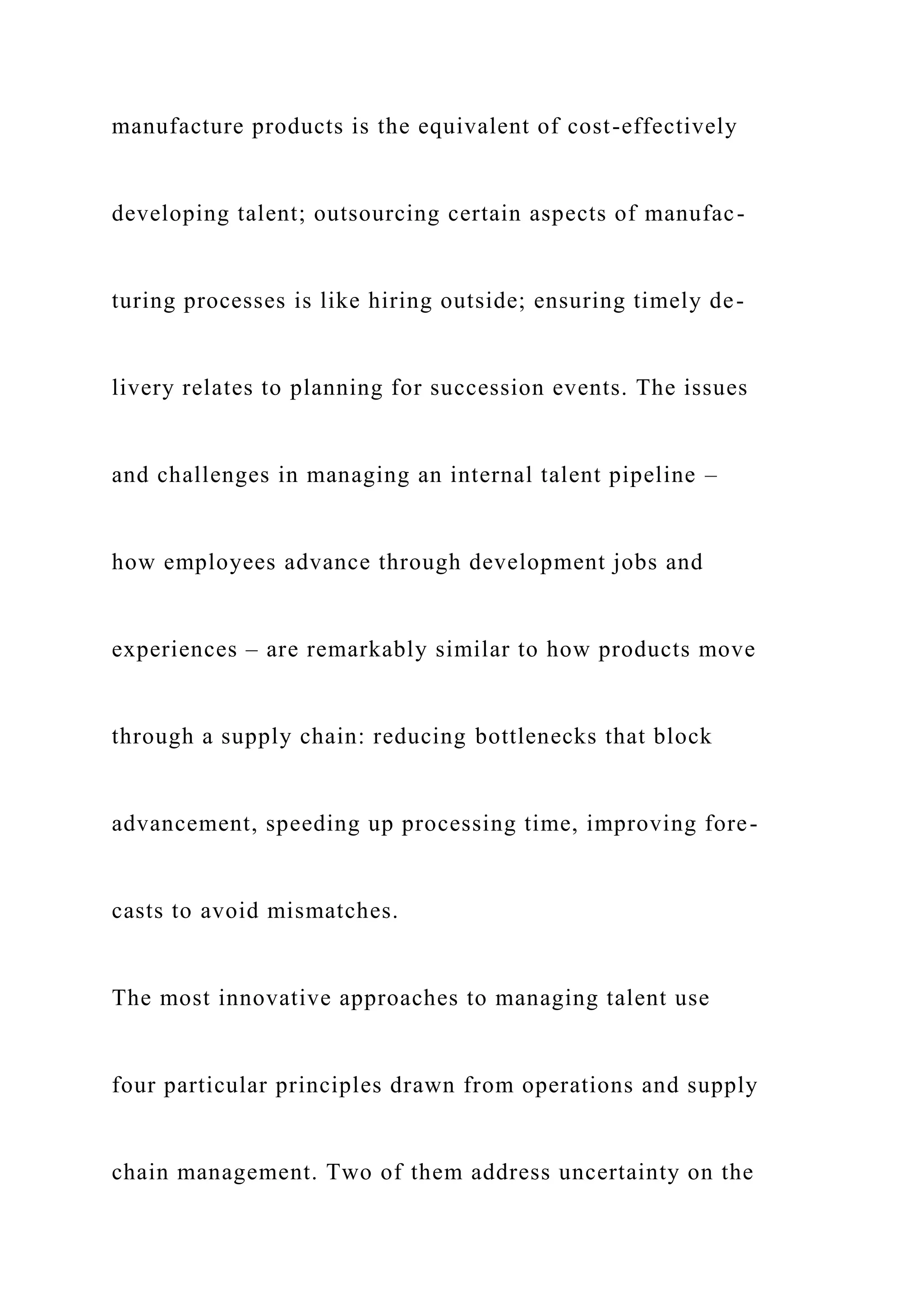




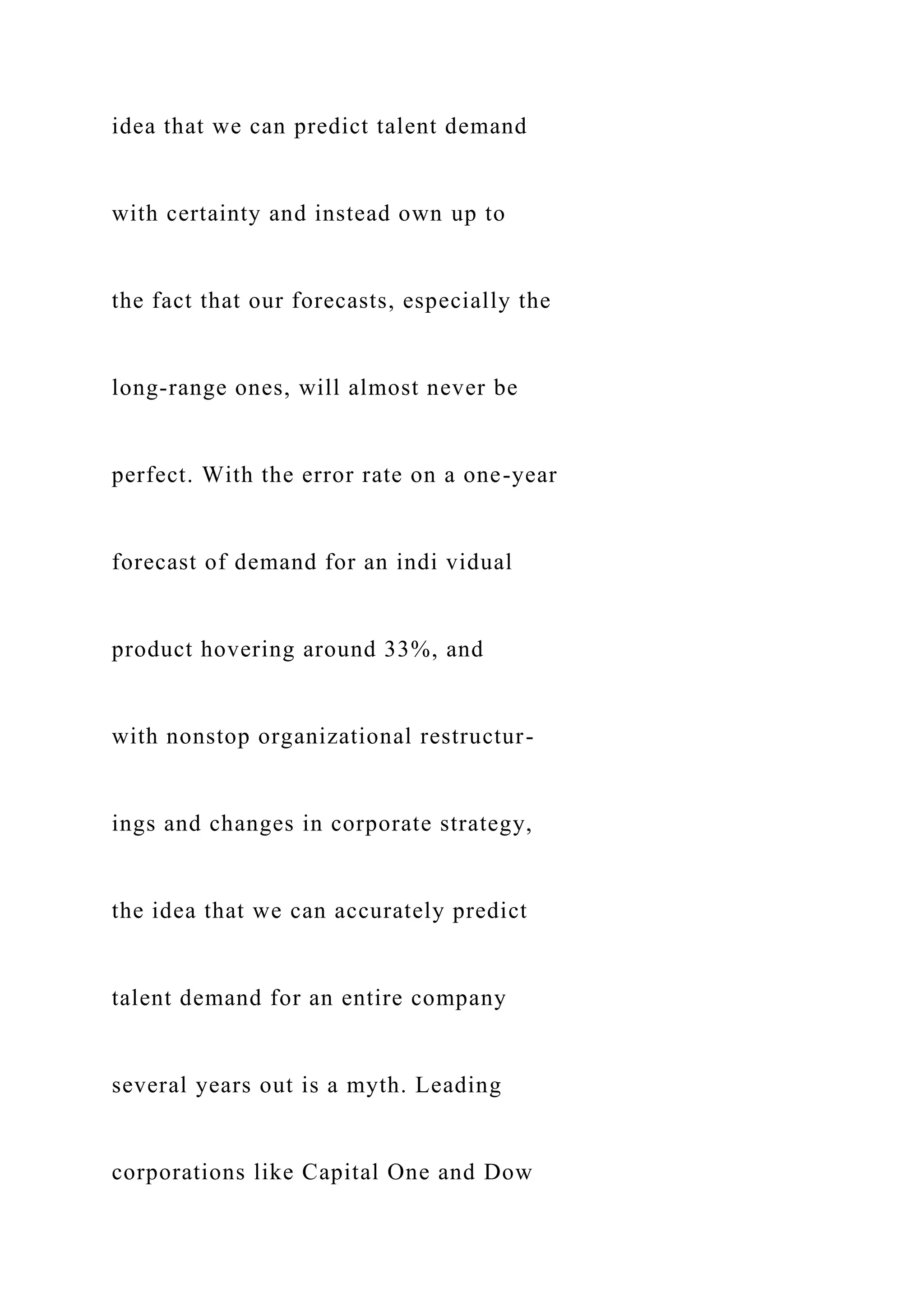
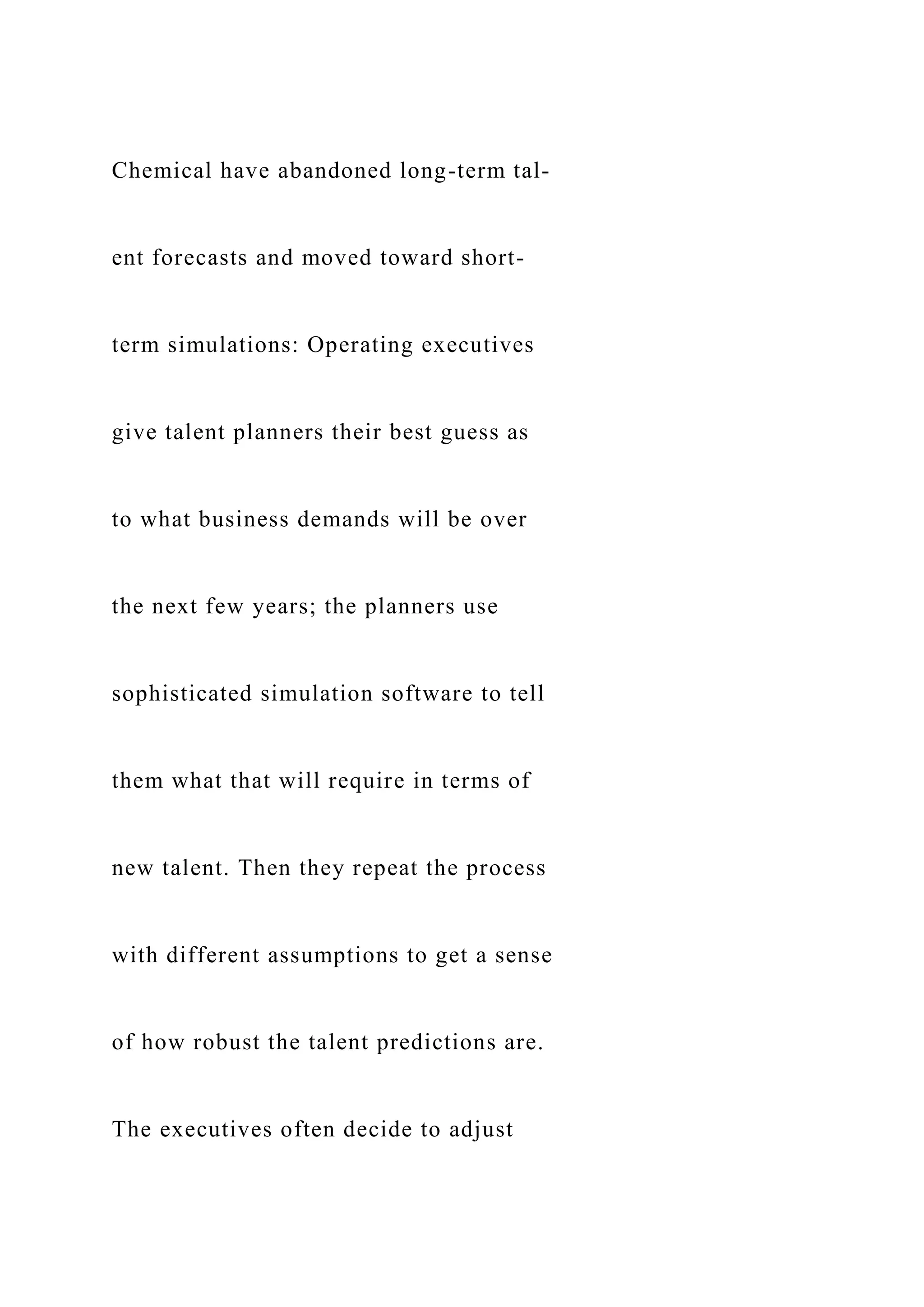
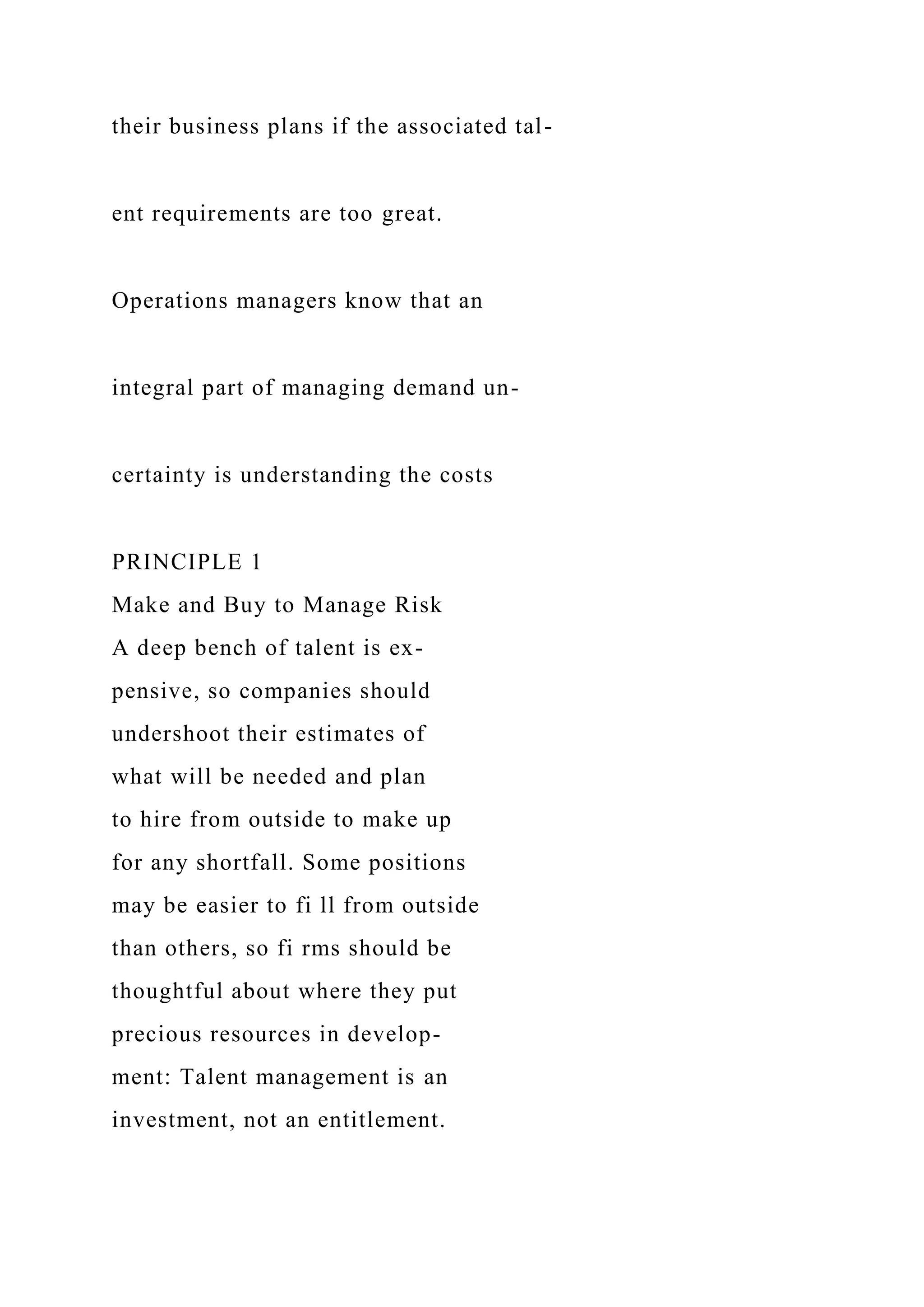
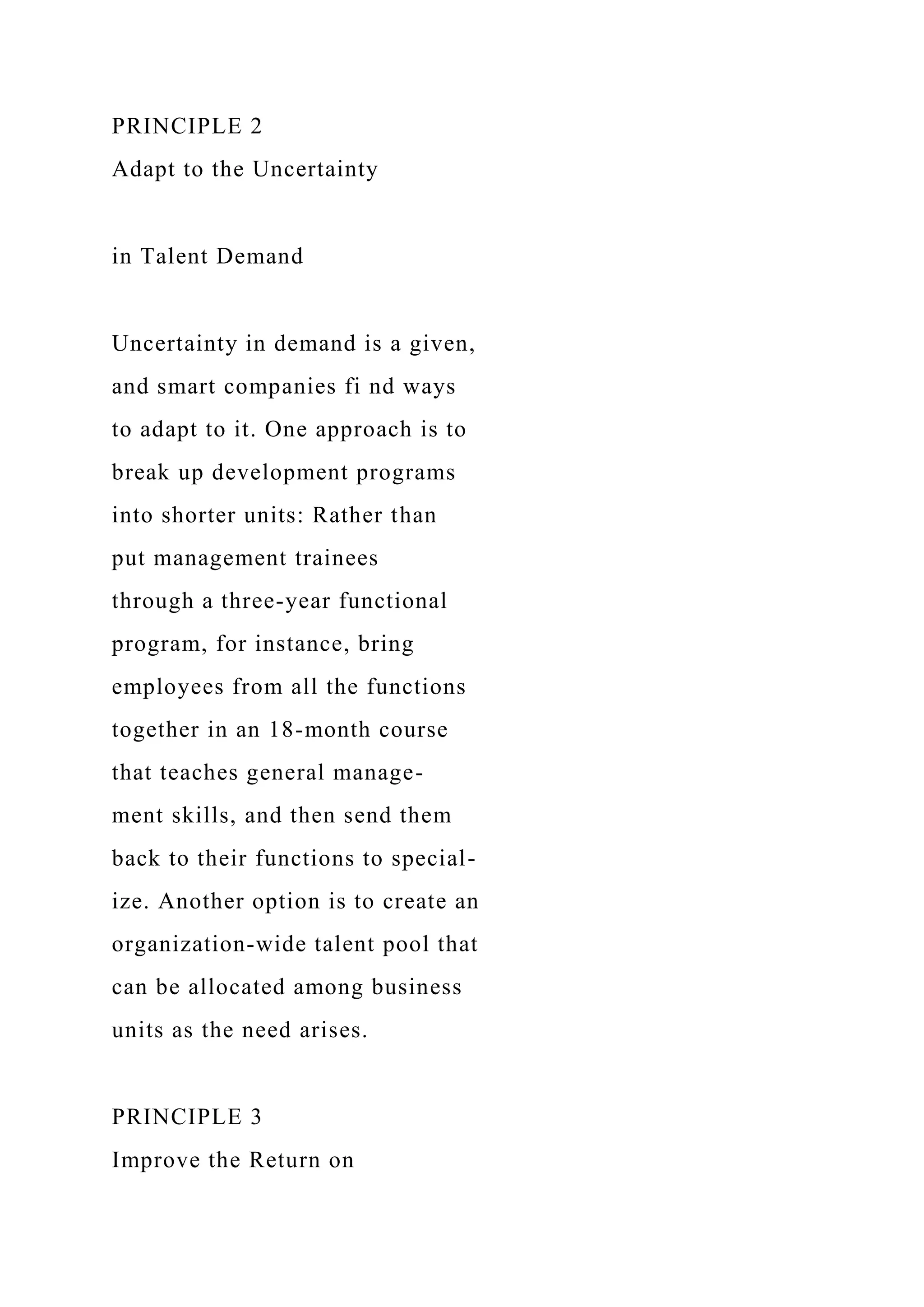
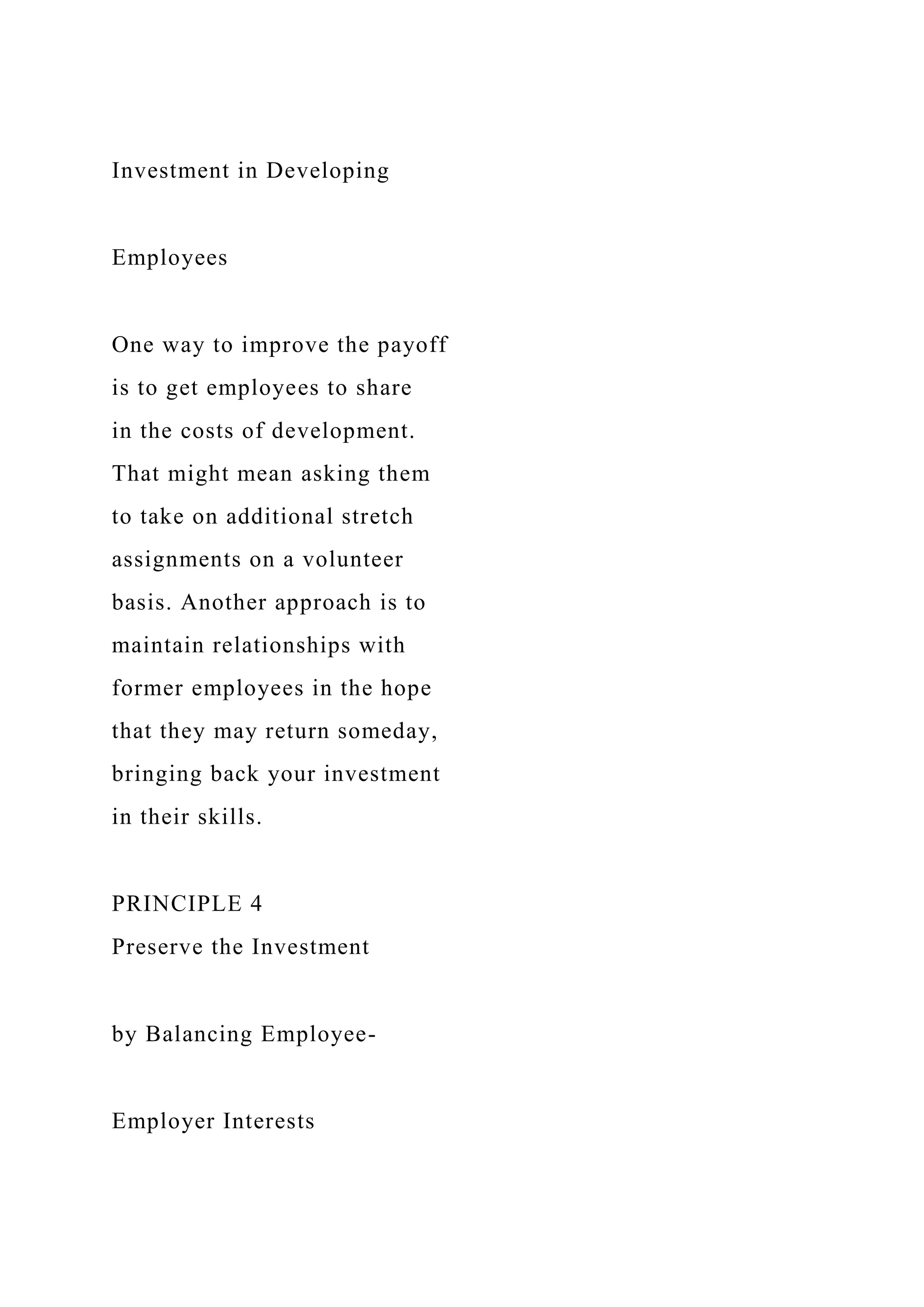

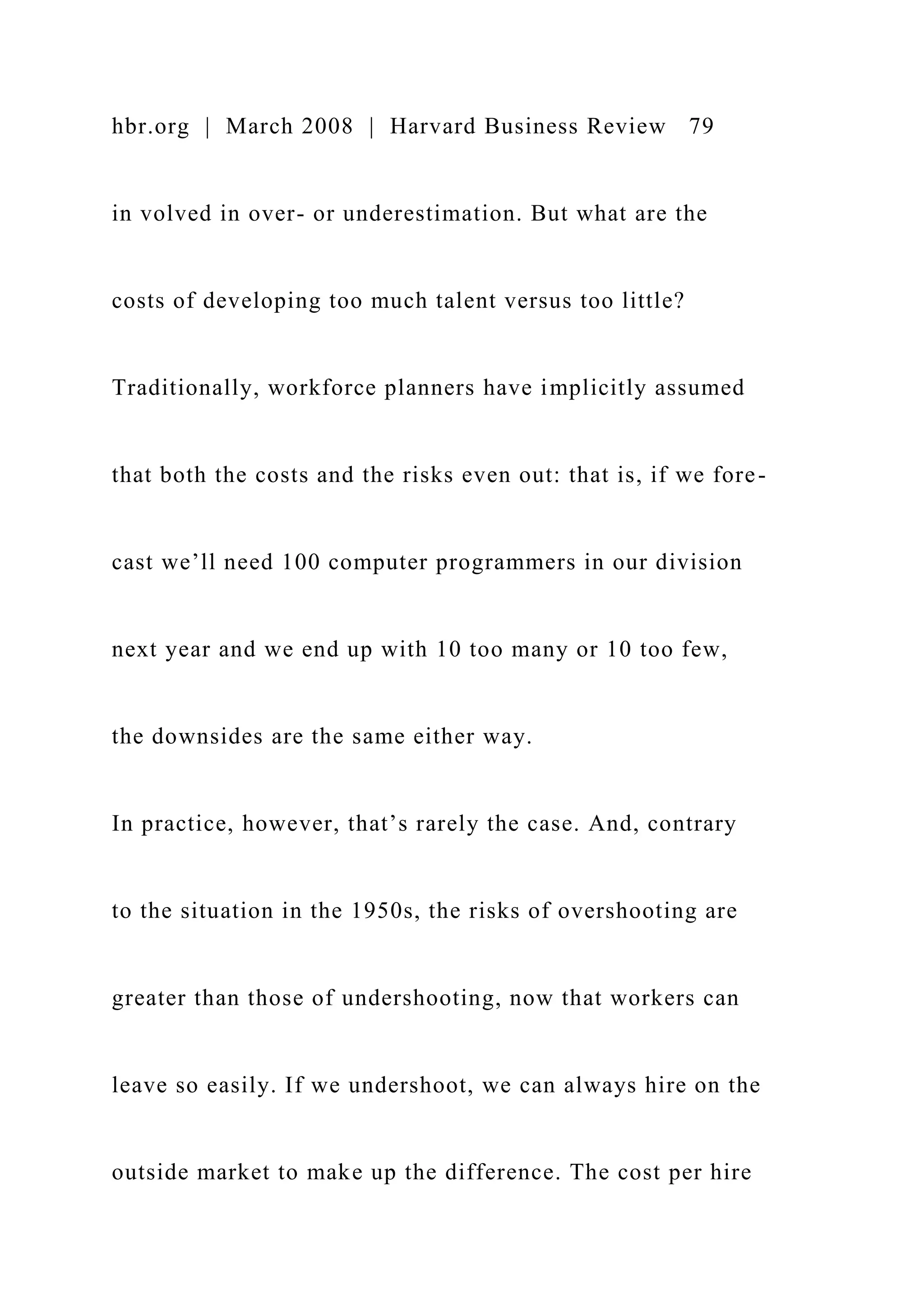
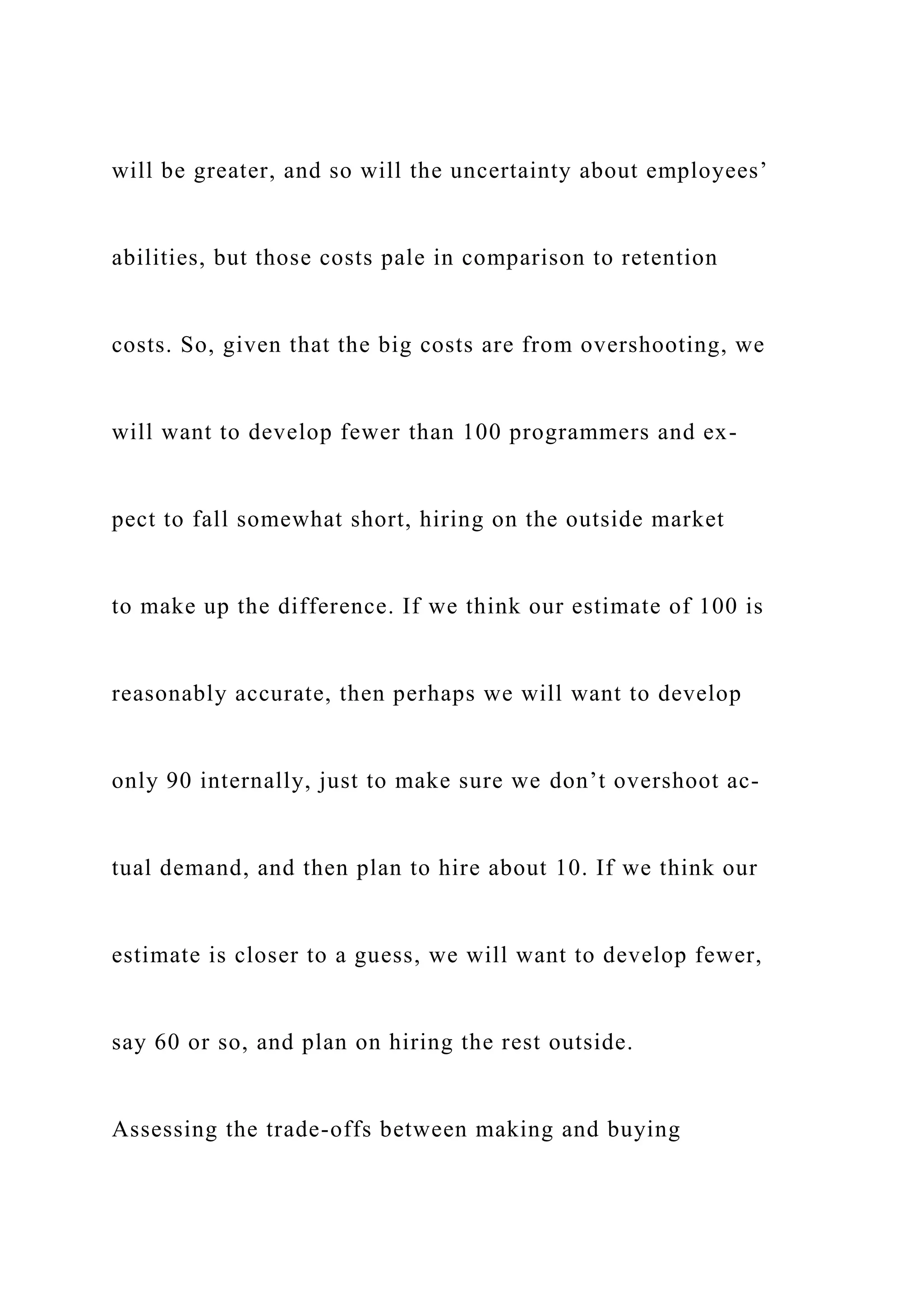
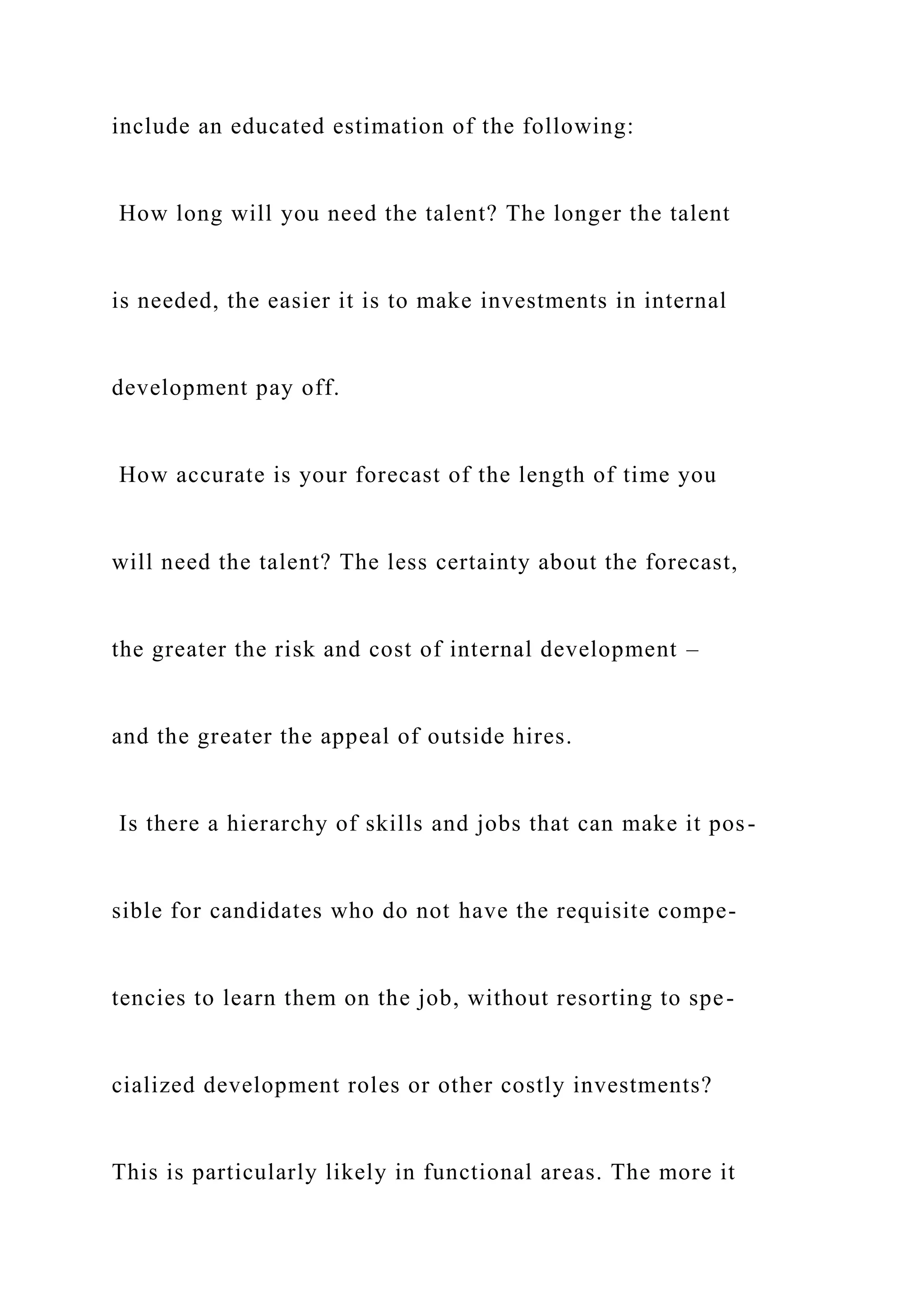

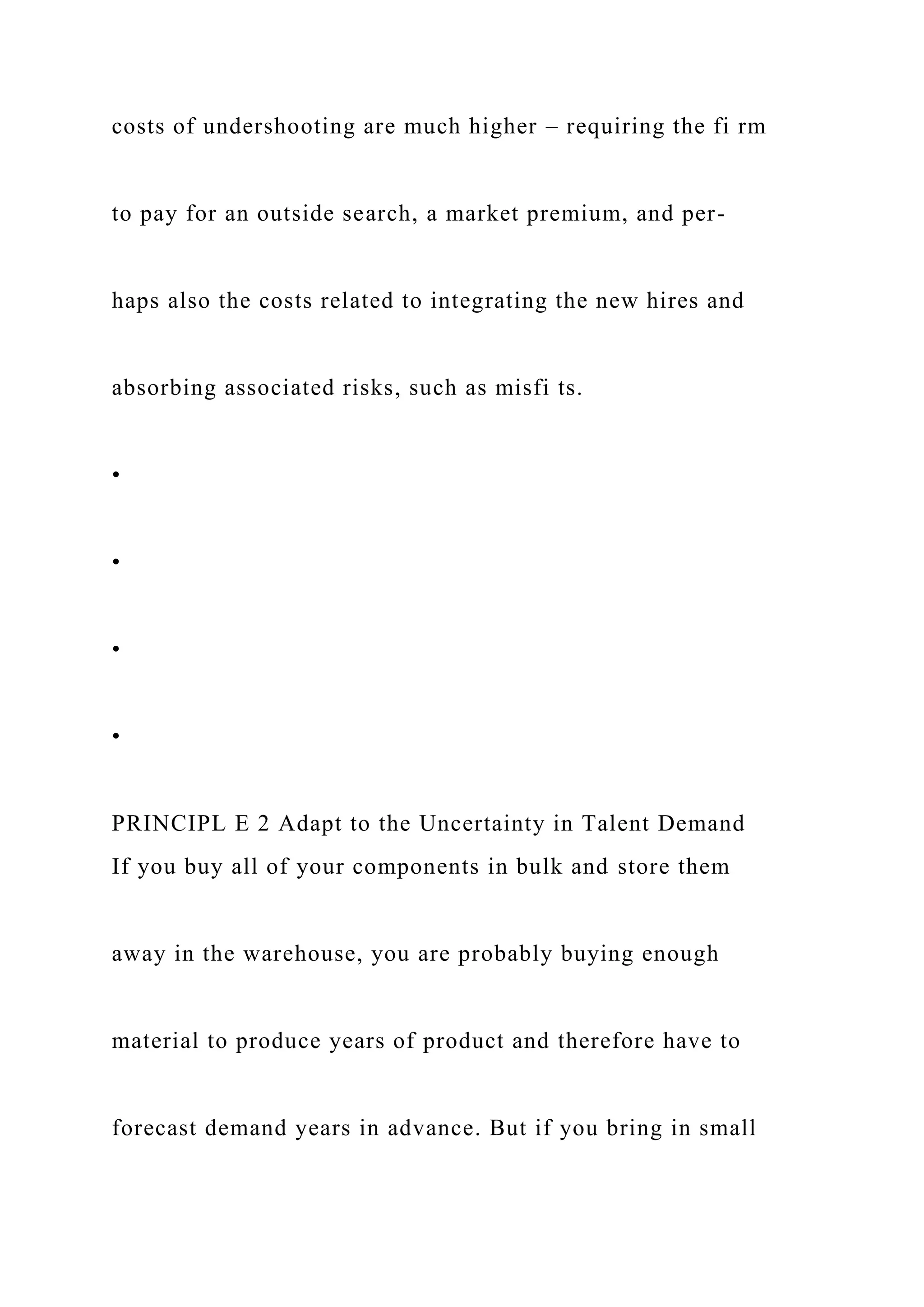
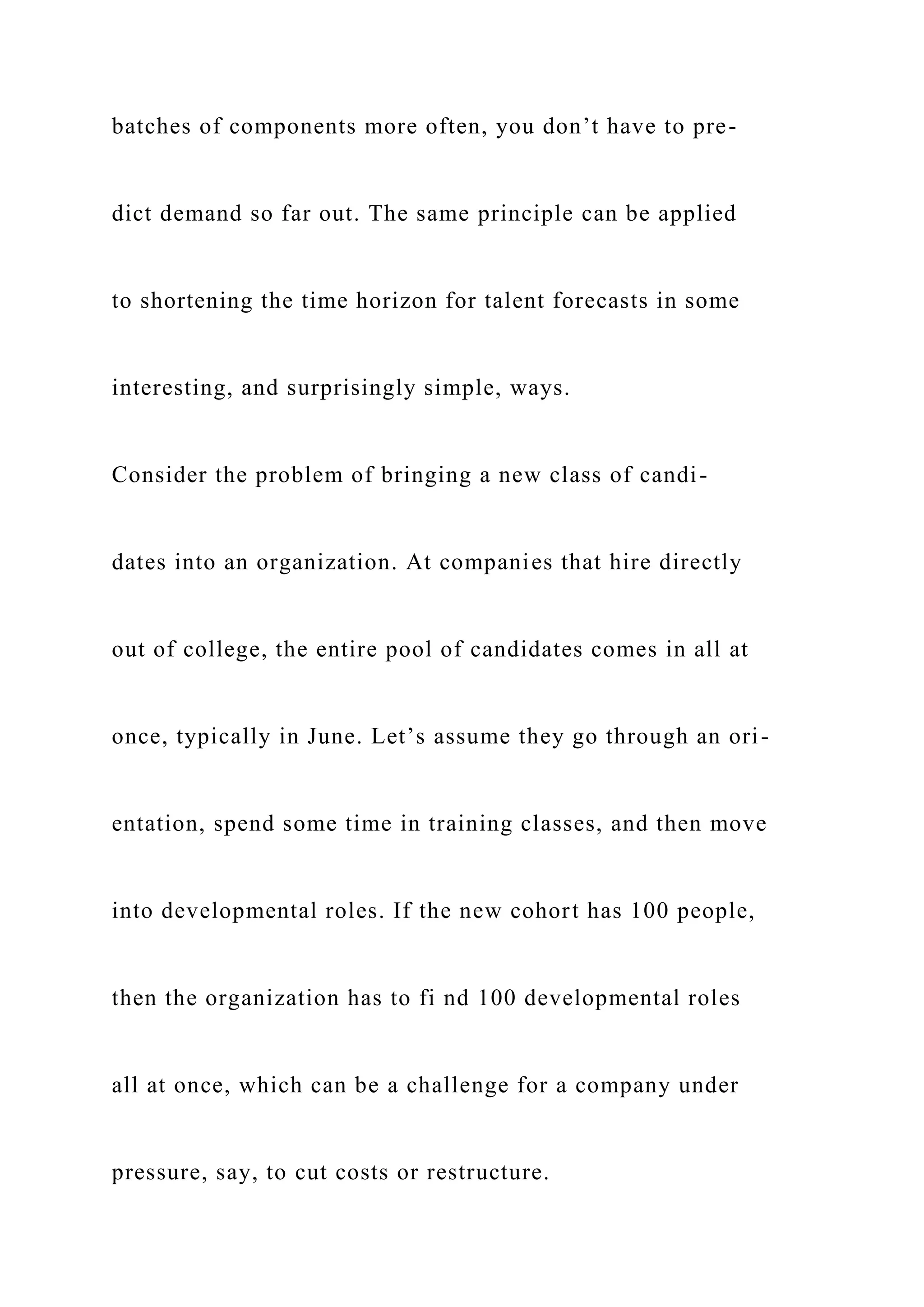
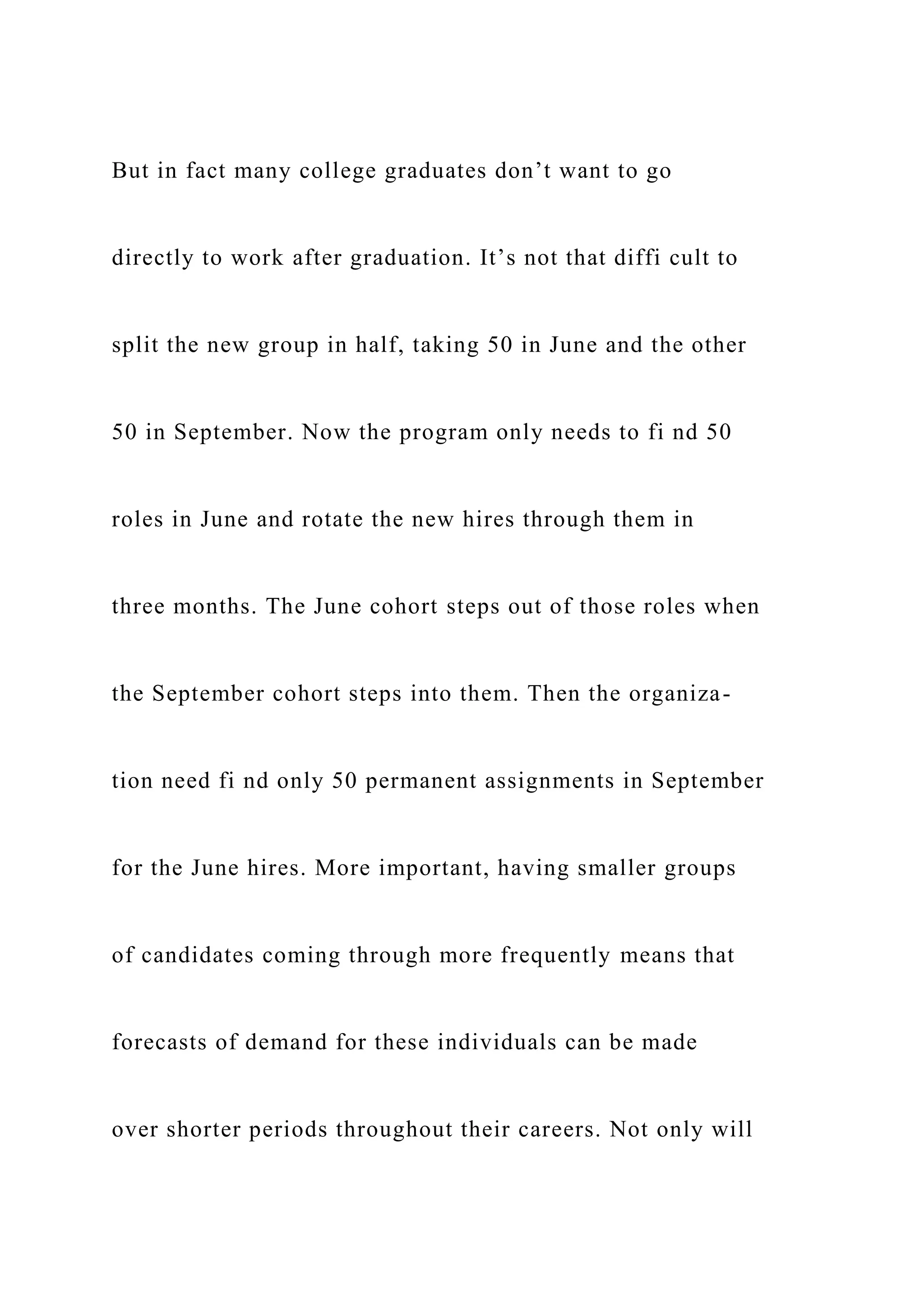
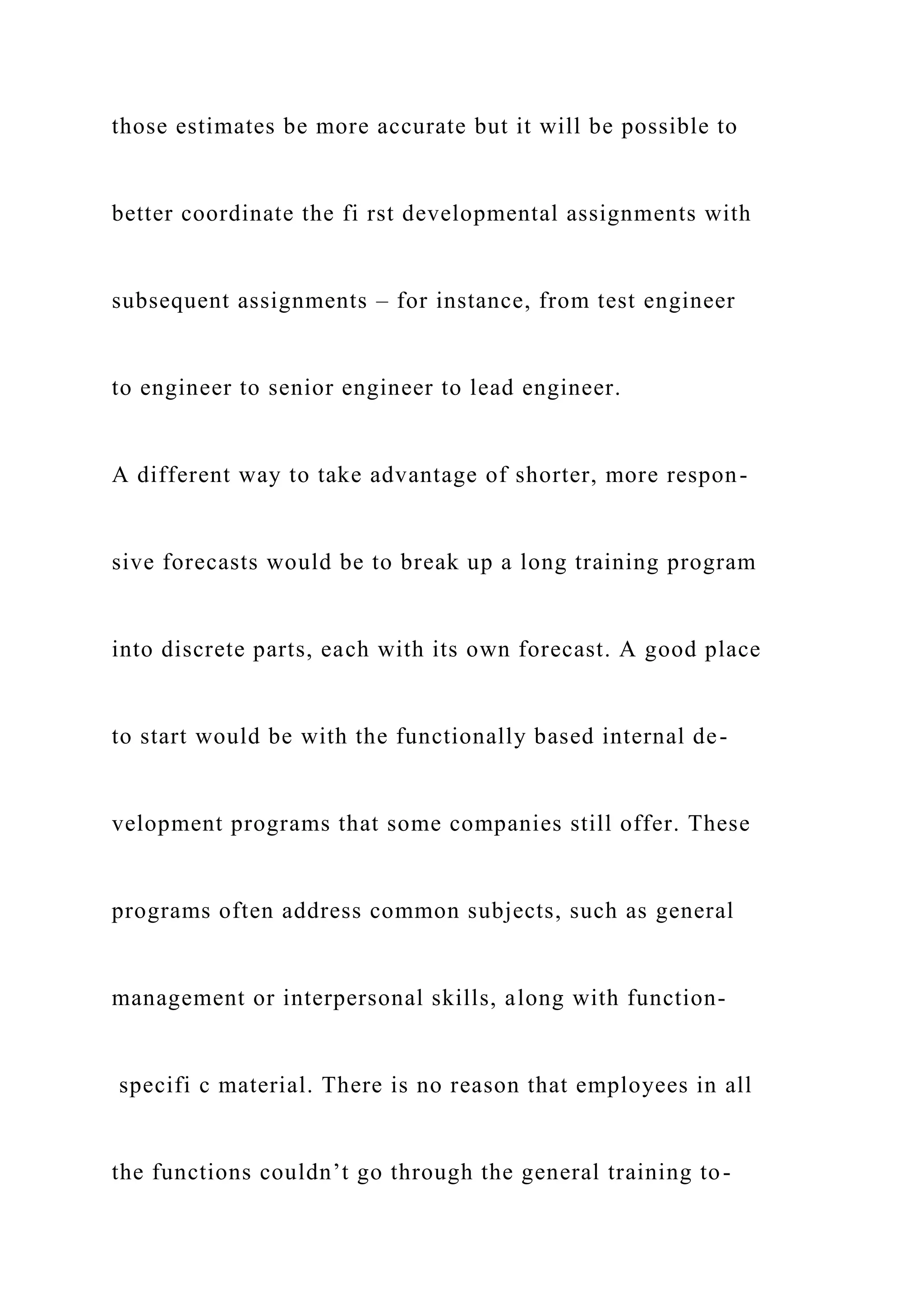
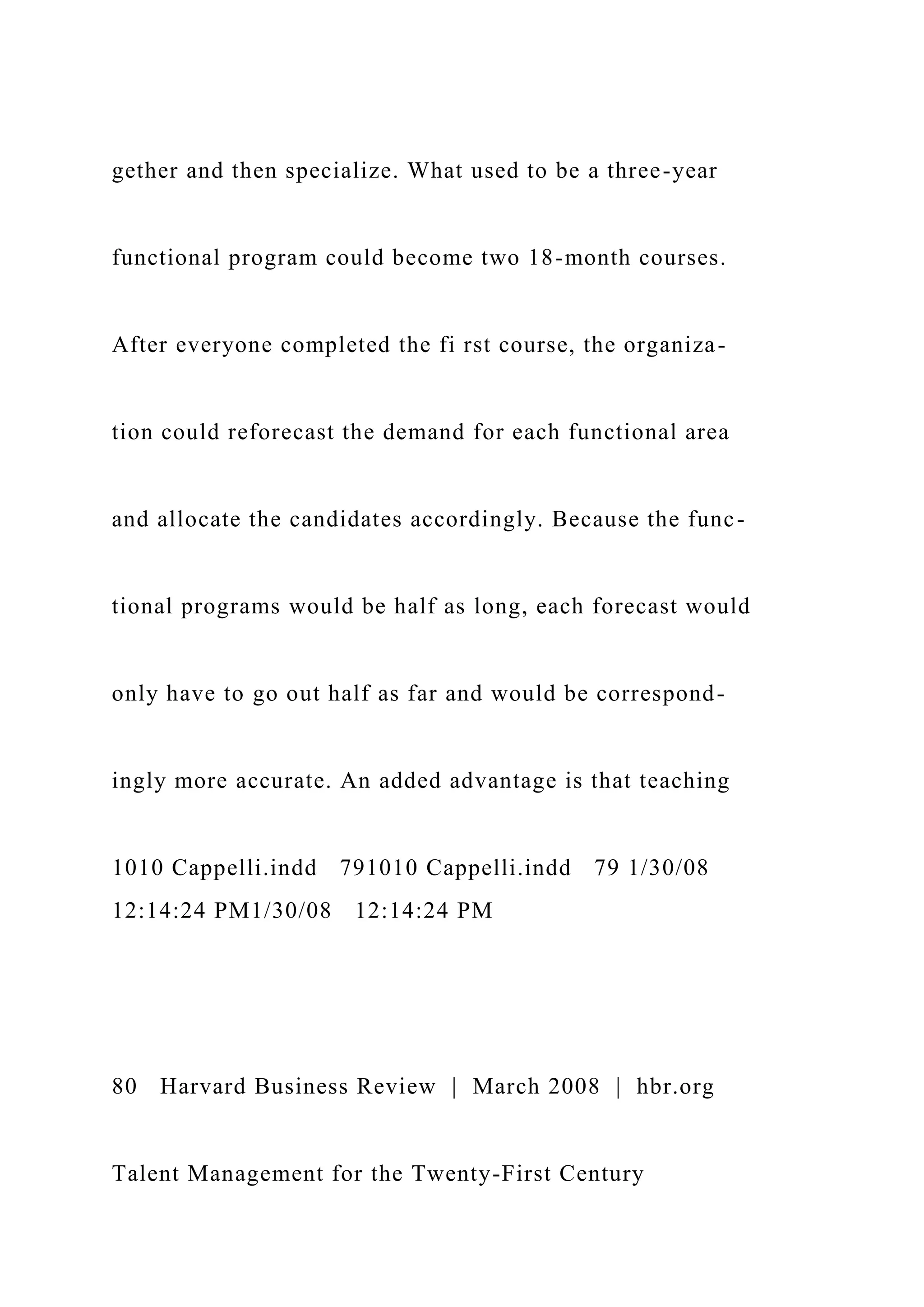
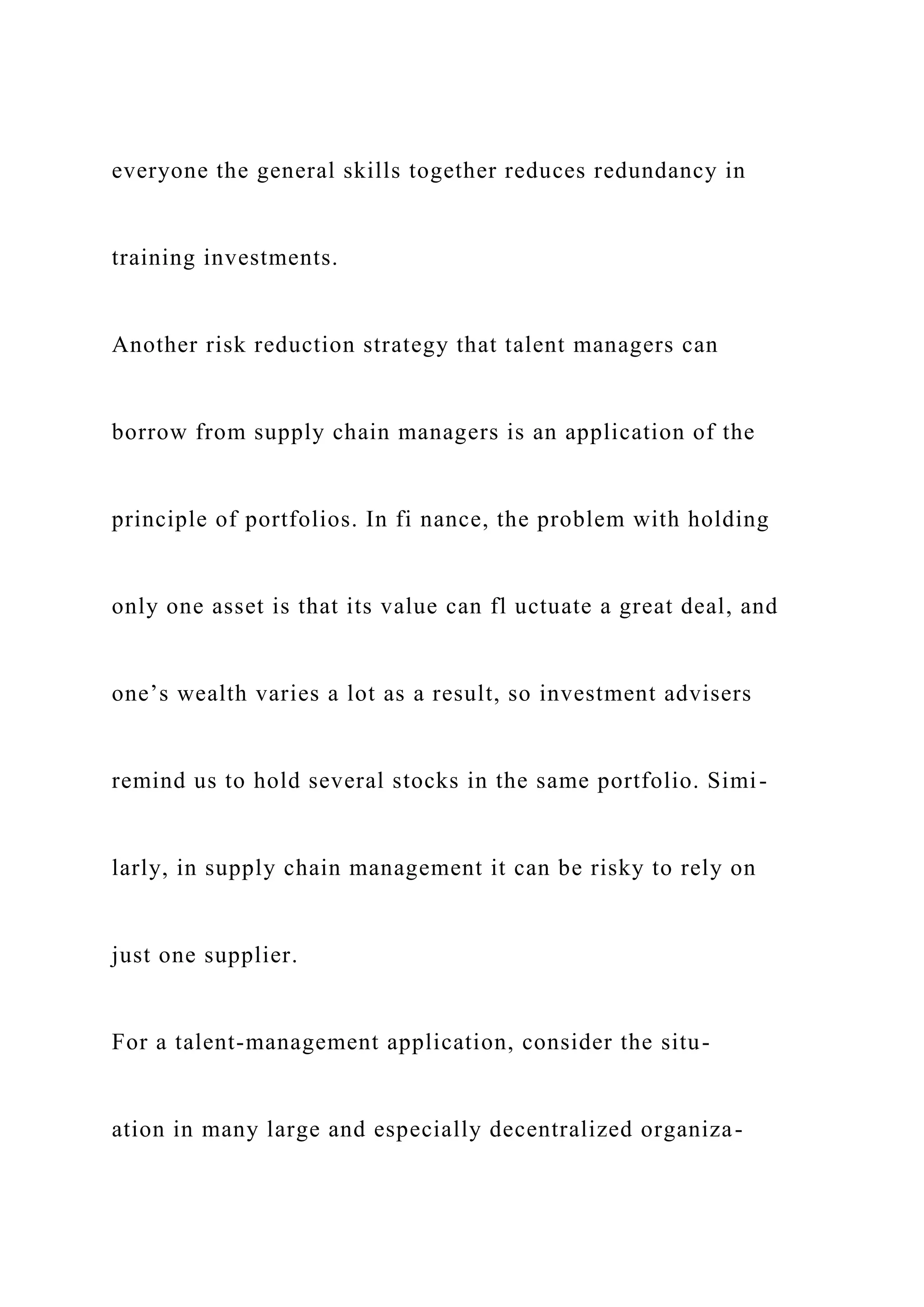
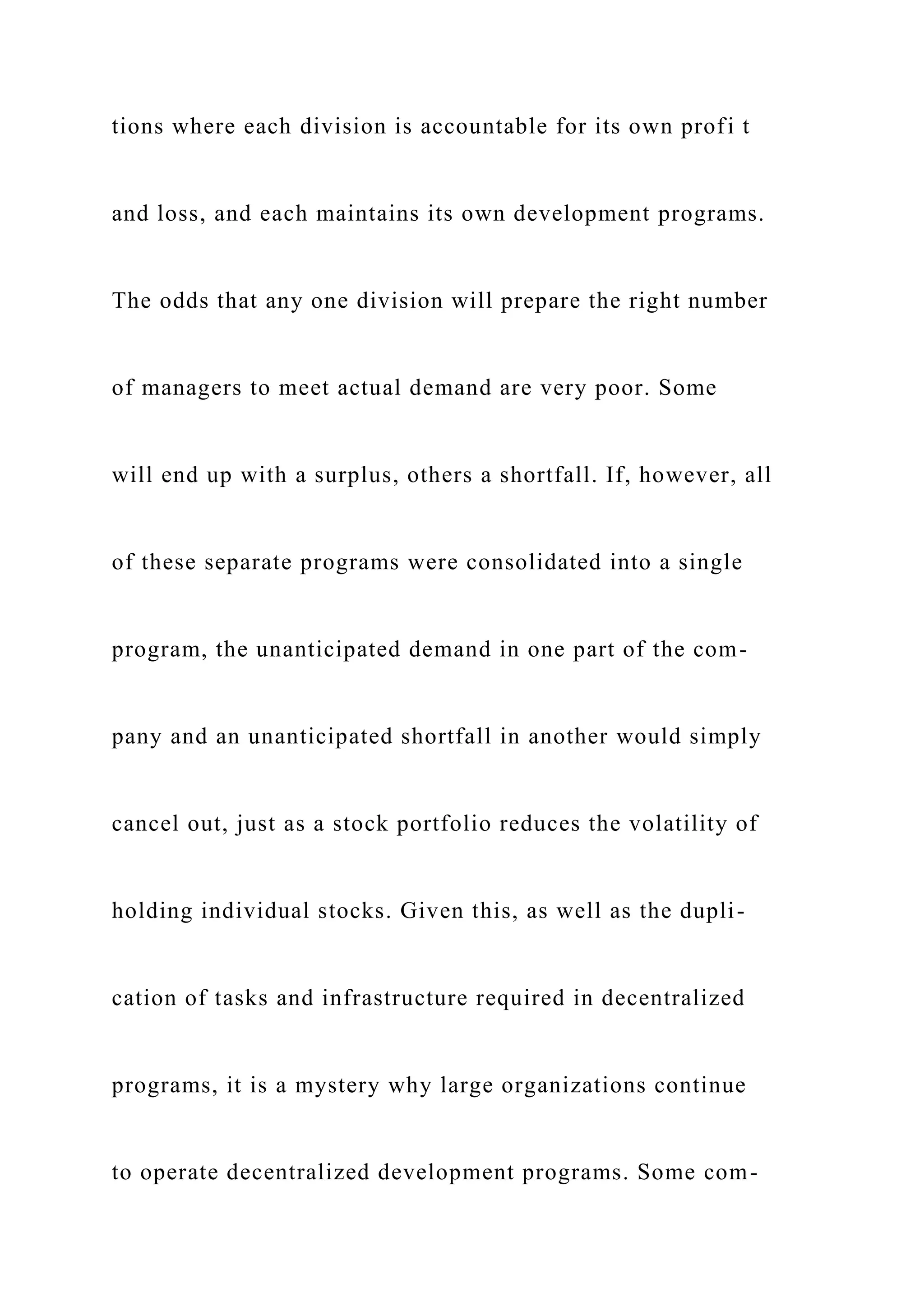

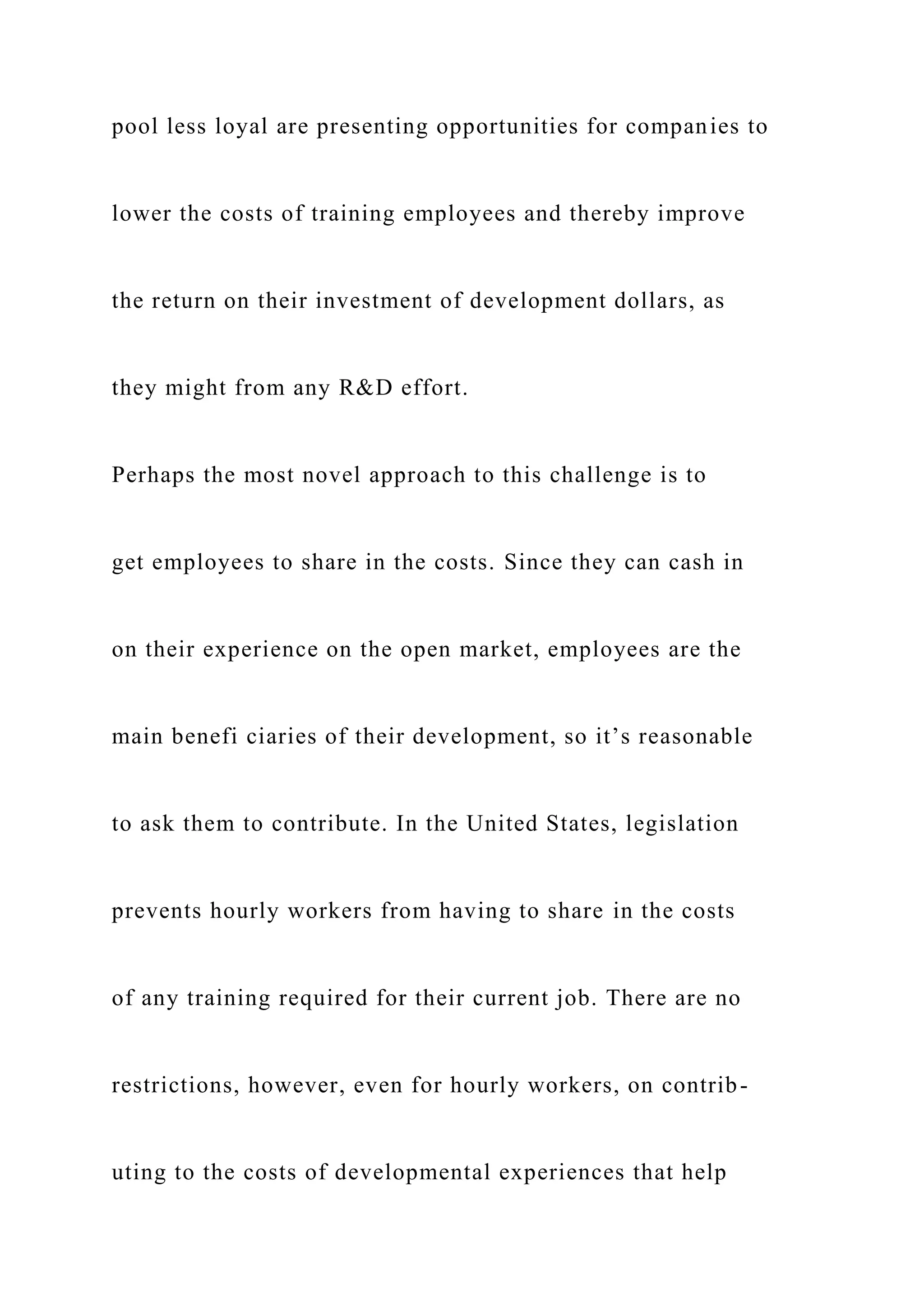
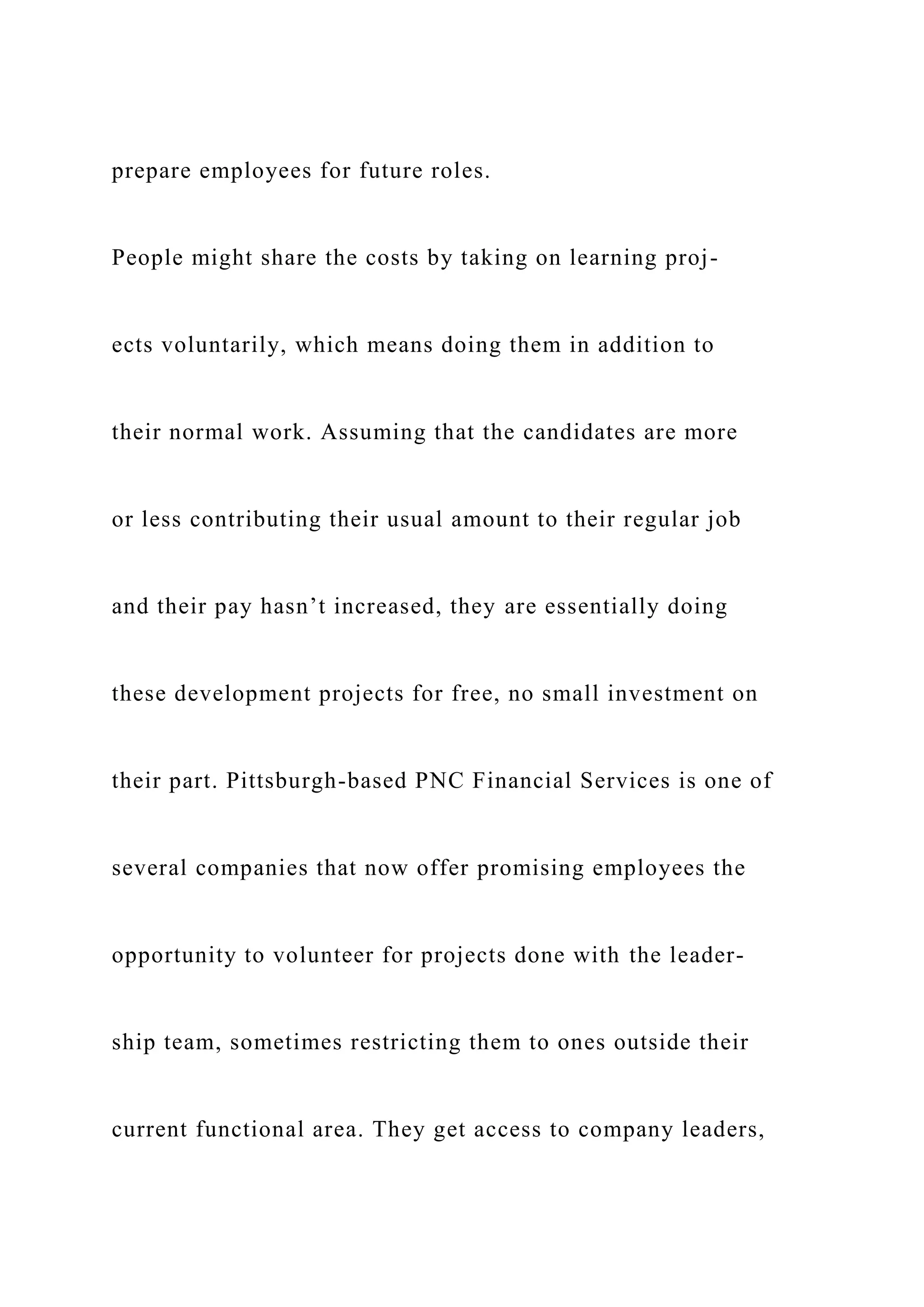
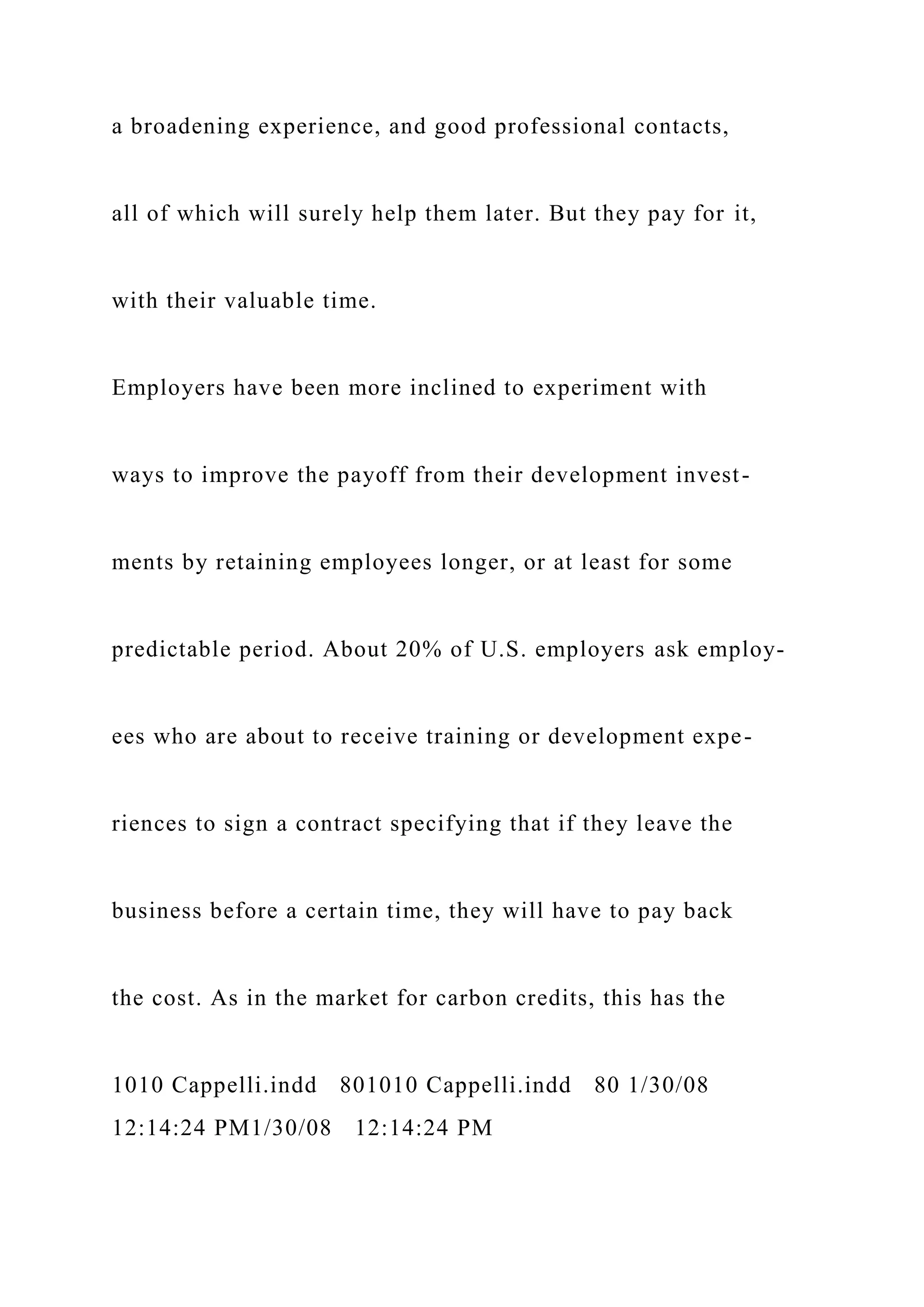
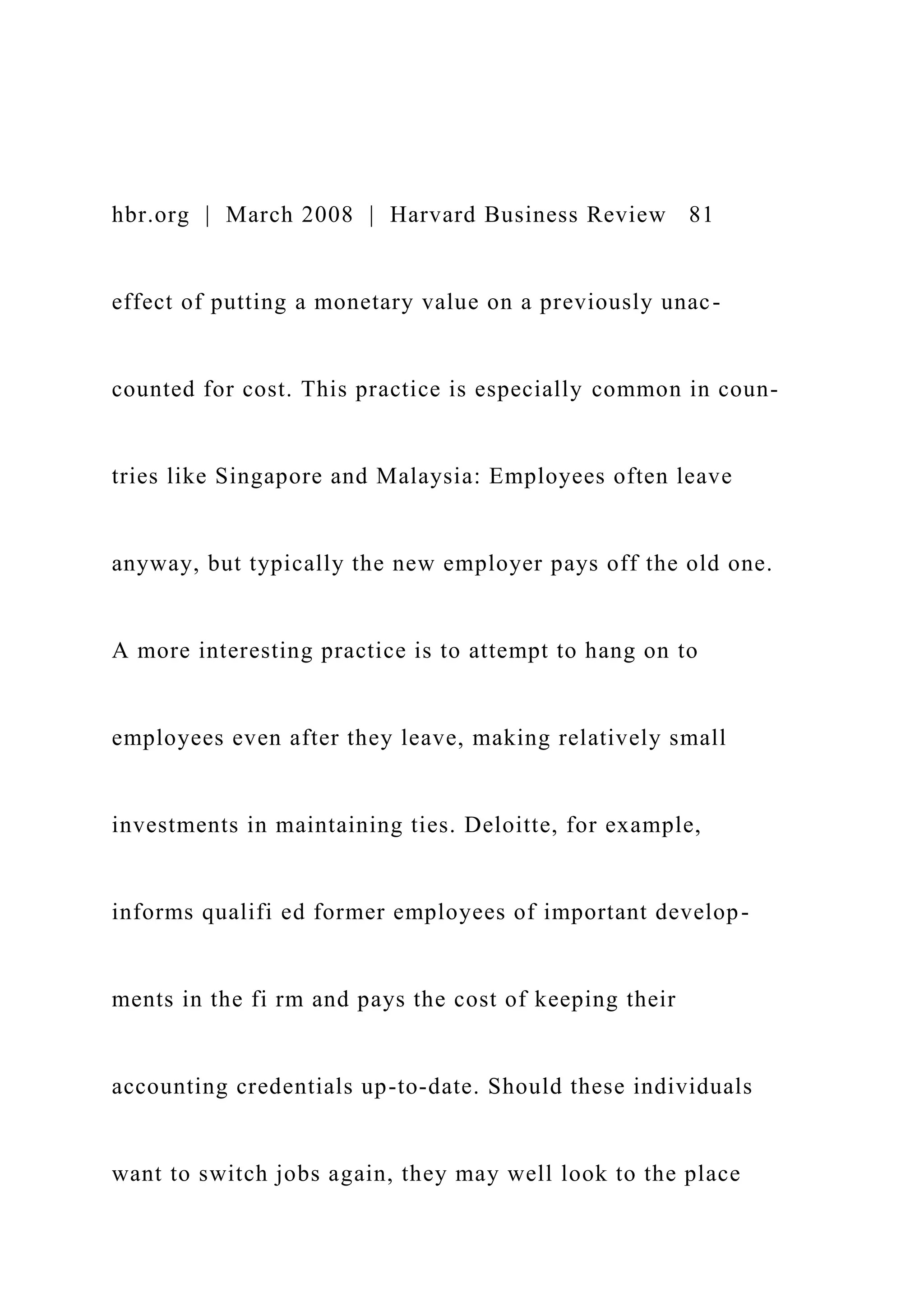
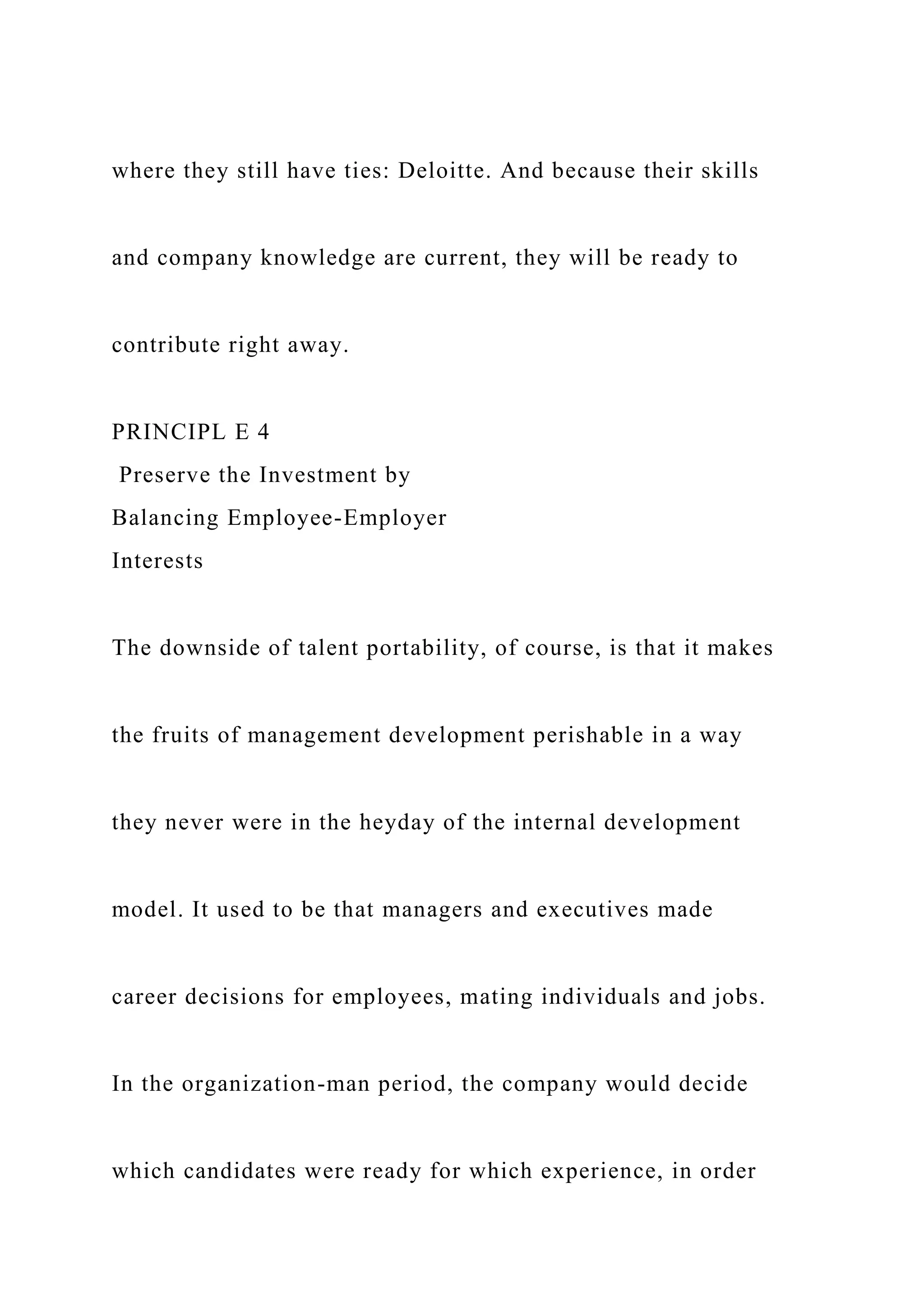
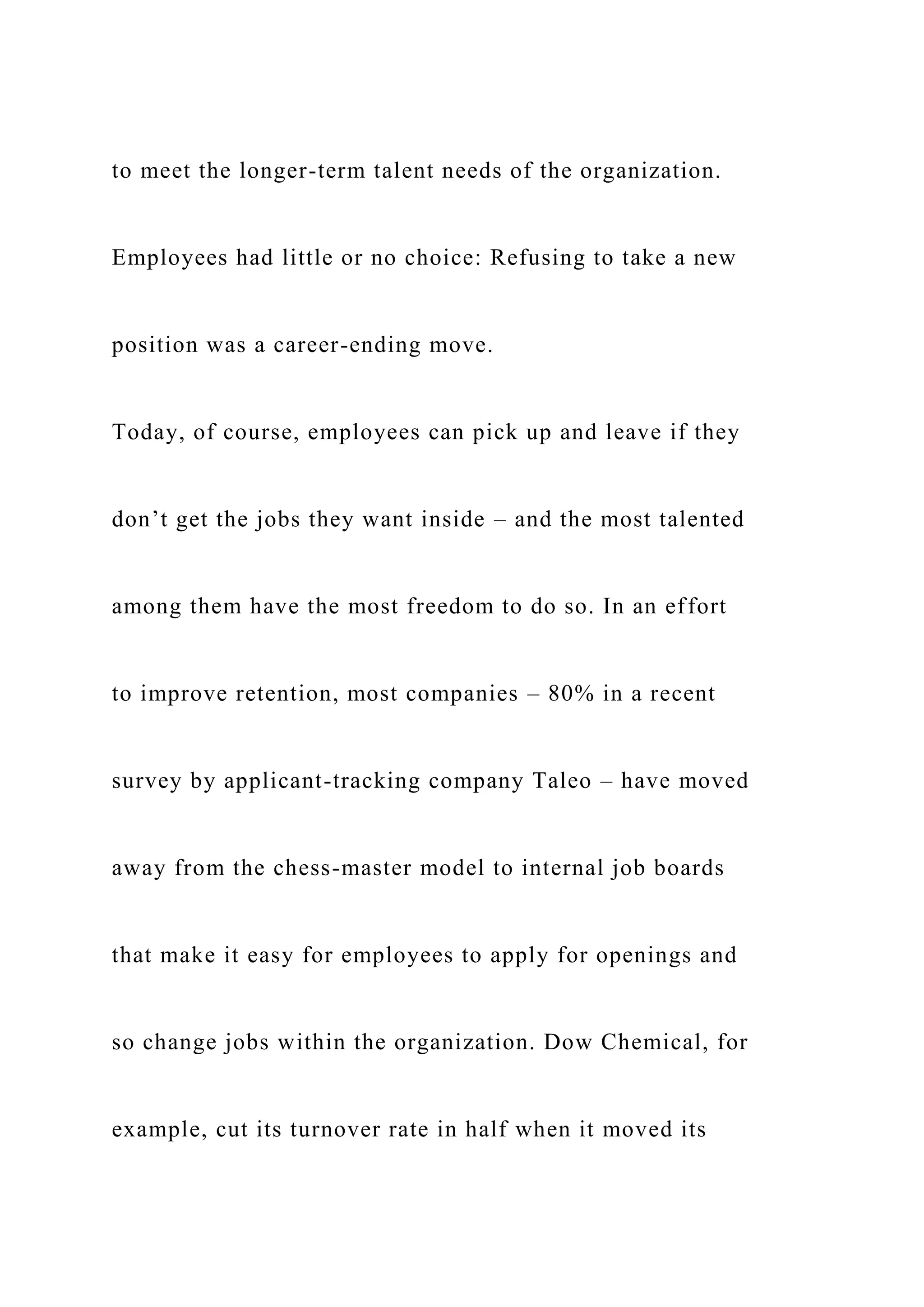
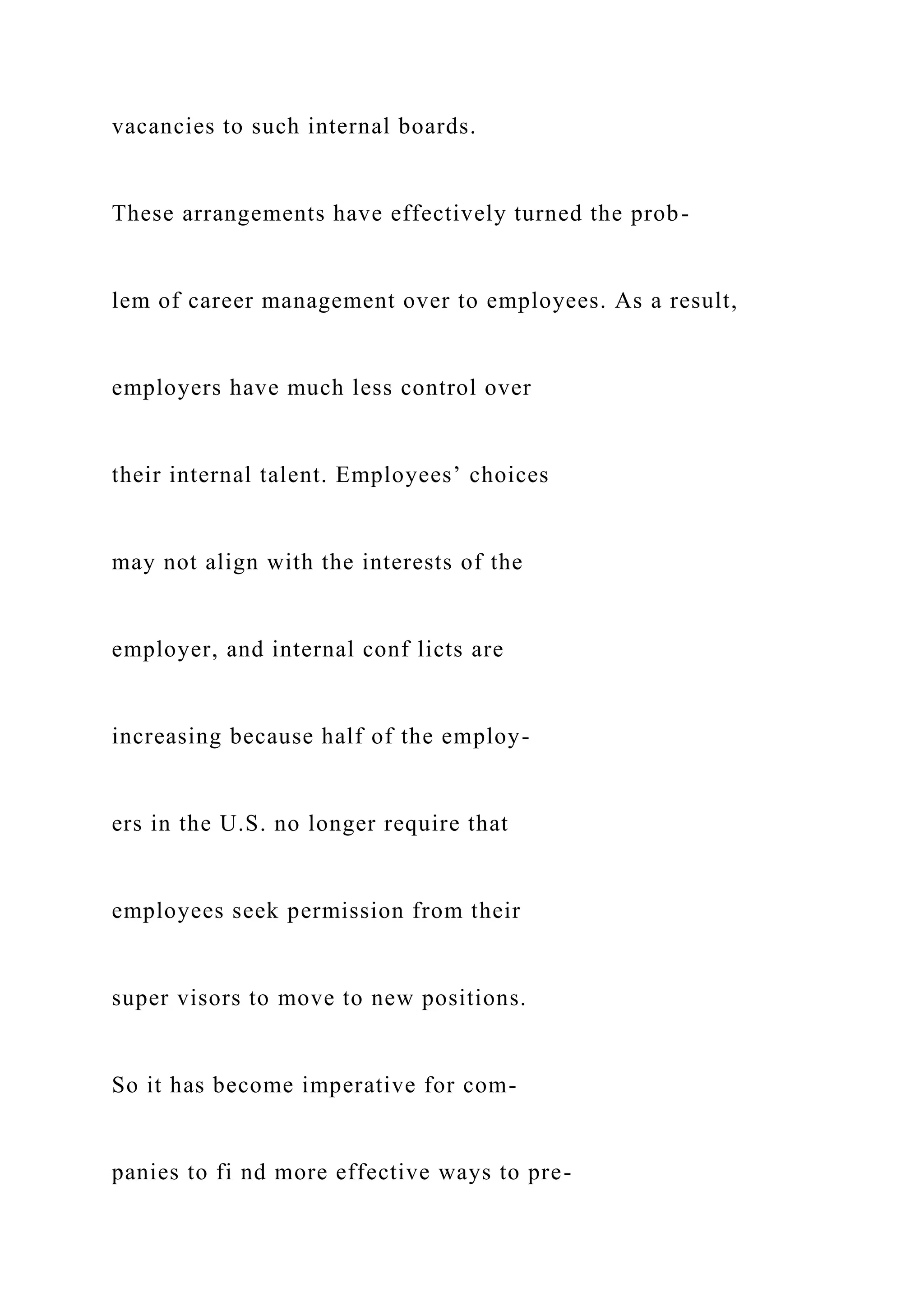
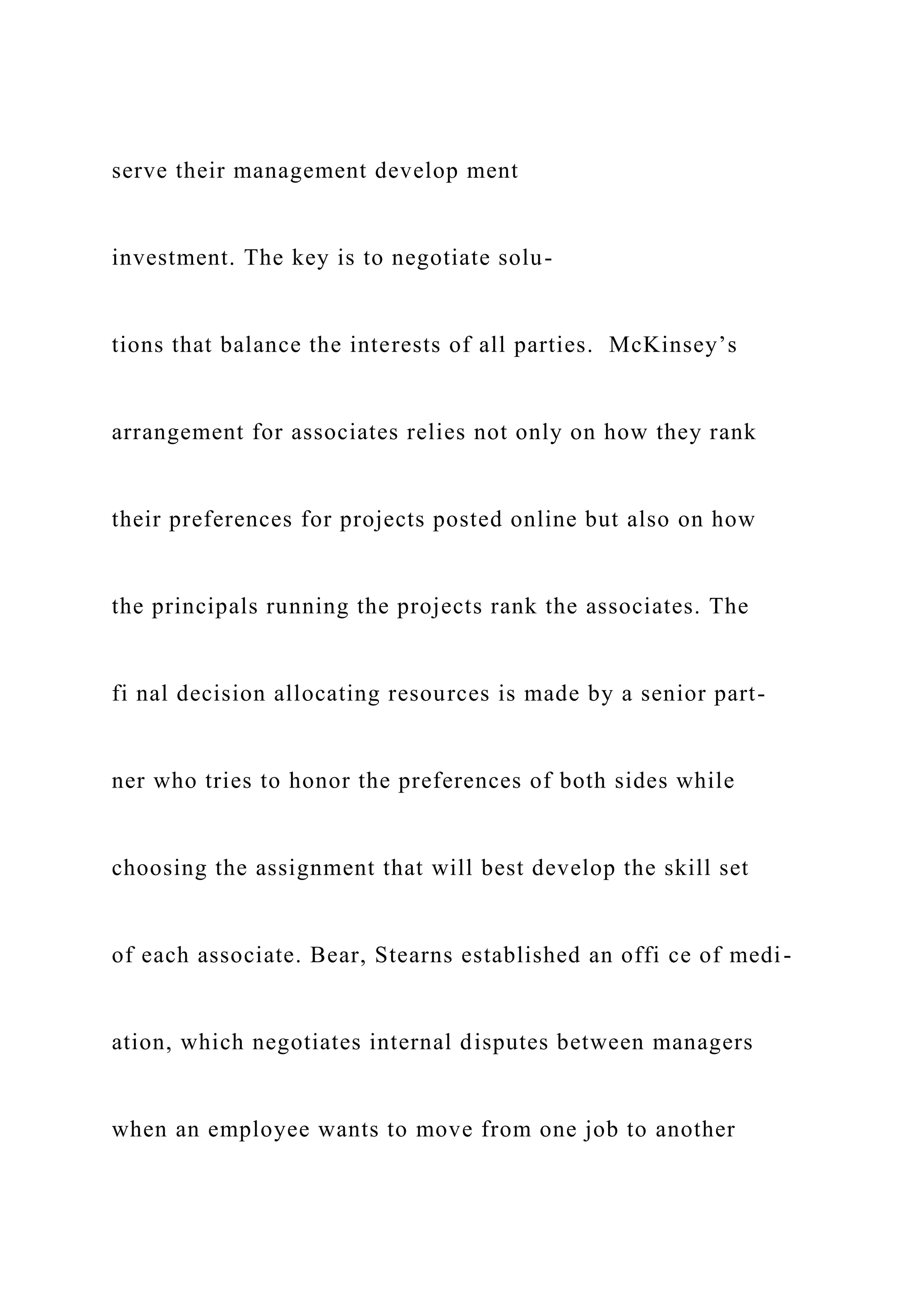
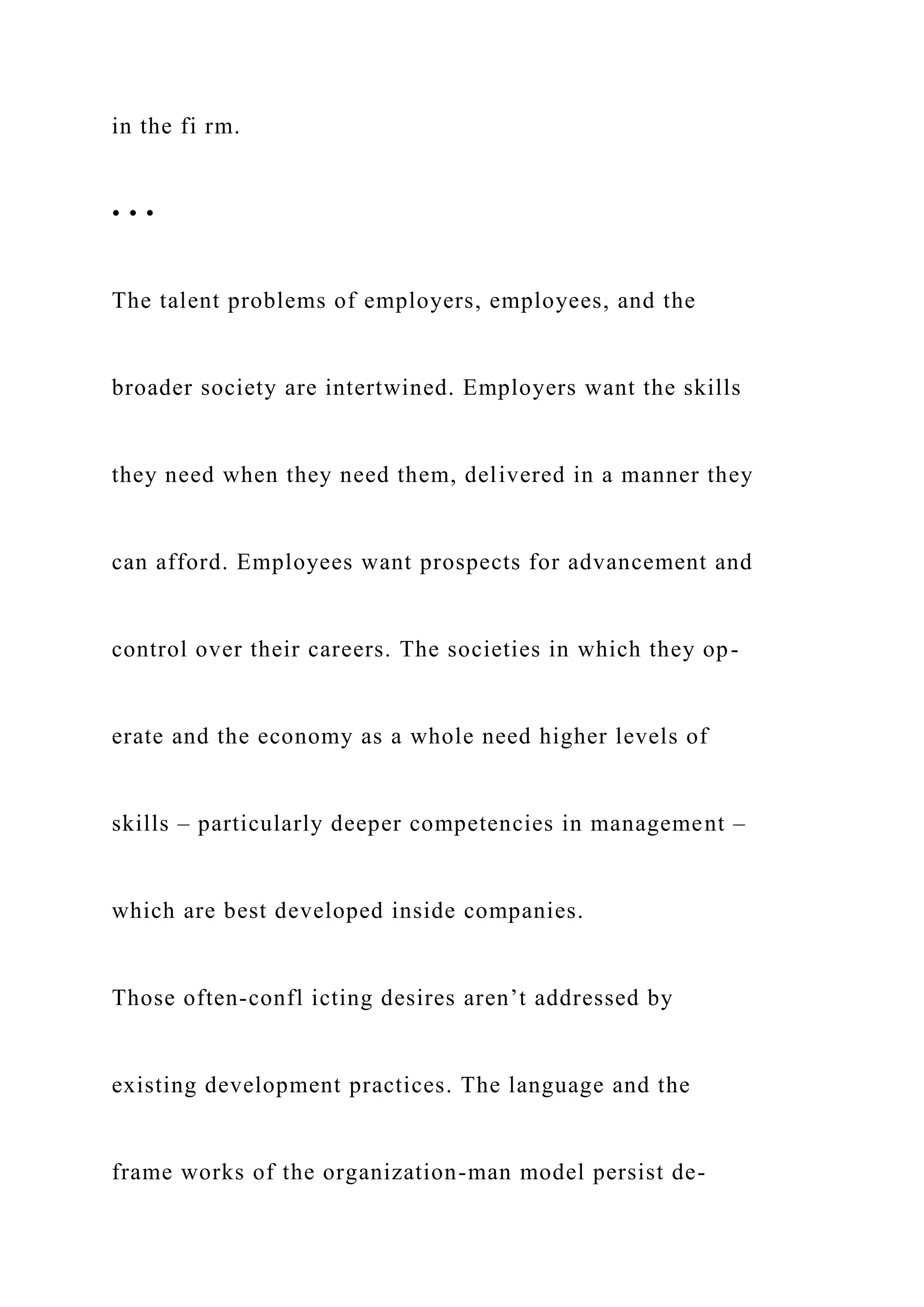
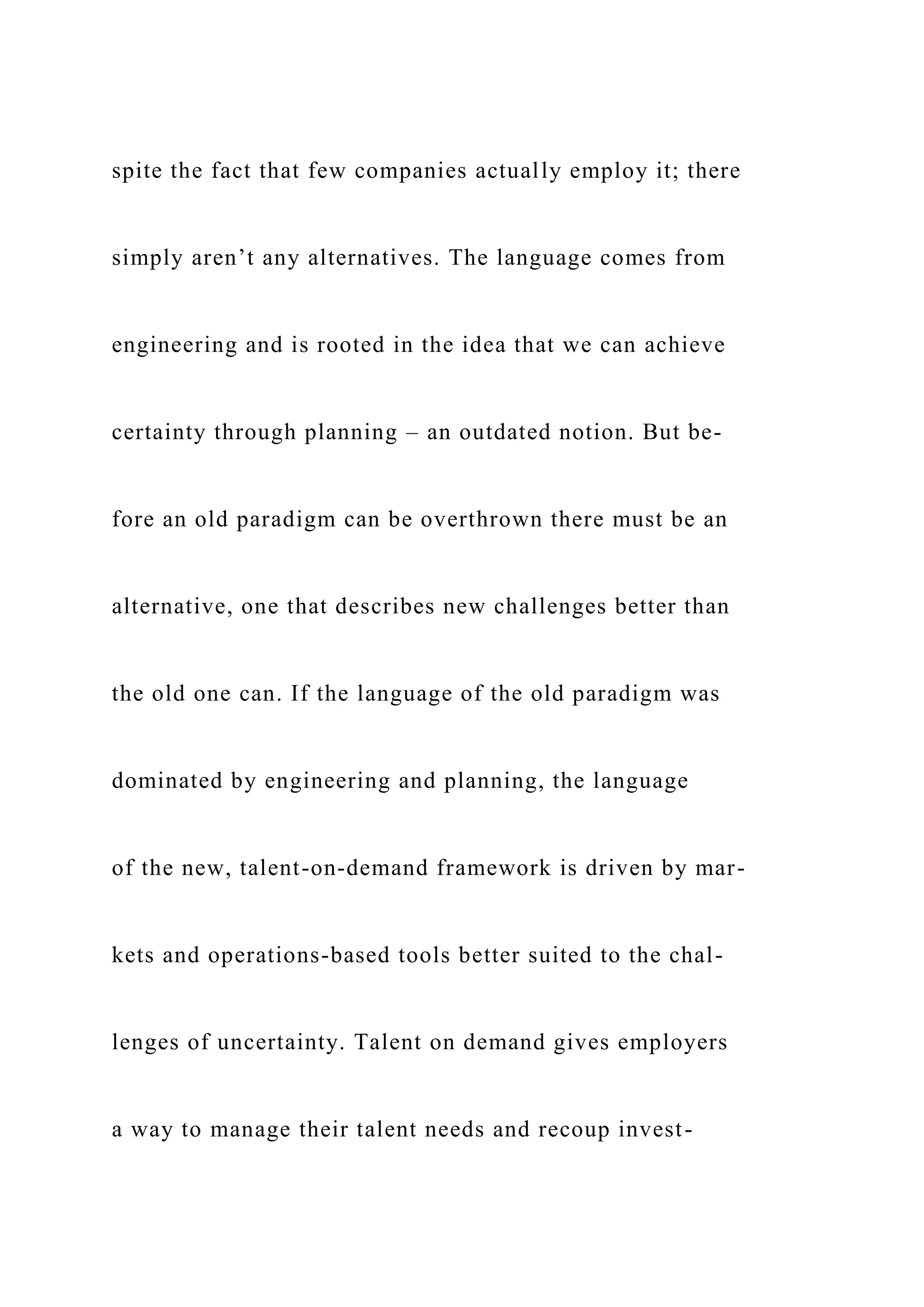
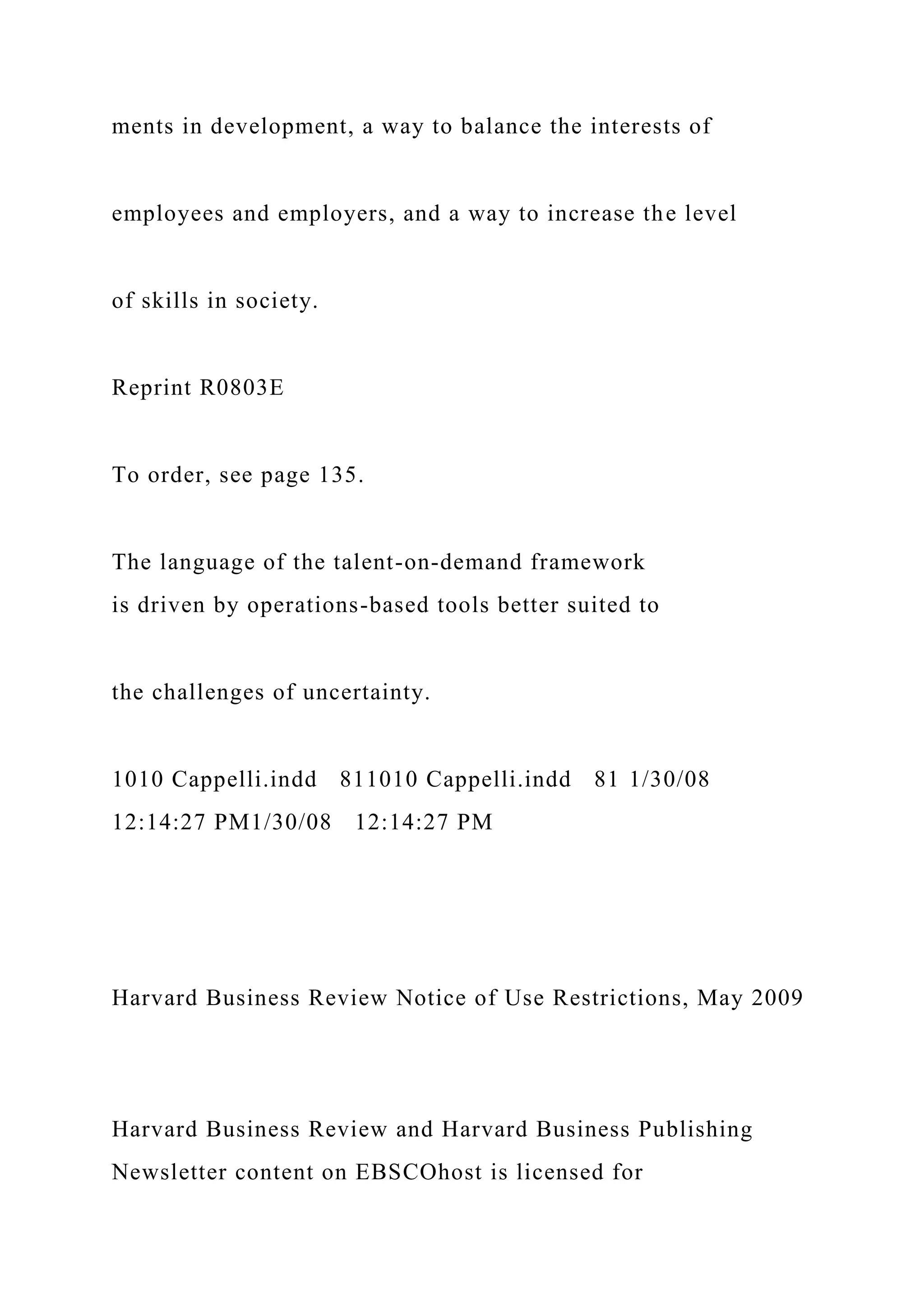
![the private individual use of authorized EBSCOhost users. It is
not intended for use as assigned course material
in academic institutions nor as corporate learning or training
materials in businesses. Academic licensees may
not use this content in electronic reserves, electronic course
packs, persistent linking from syllabi or by any
other means of incorporating the content into course resources.
Business licensees may not host this content on
learning management systems or use persistent linking or other
means to incorporate the content into learning
management systems. Harvard Business Publishing will be
pleased to grant permission to make this content
available through such means. For rates and permission, contact
[email protected]](https://image.slidesharecdn.com/reflectionpaper1reflectionpaper2reflectionpaper-221031054129-dcabb3bf/75/Reflection-Paper-1Reflection-Paper-2Reflection-Paper-docx-238-2048.jpg)

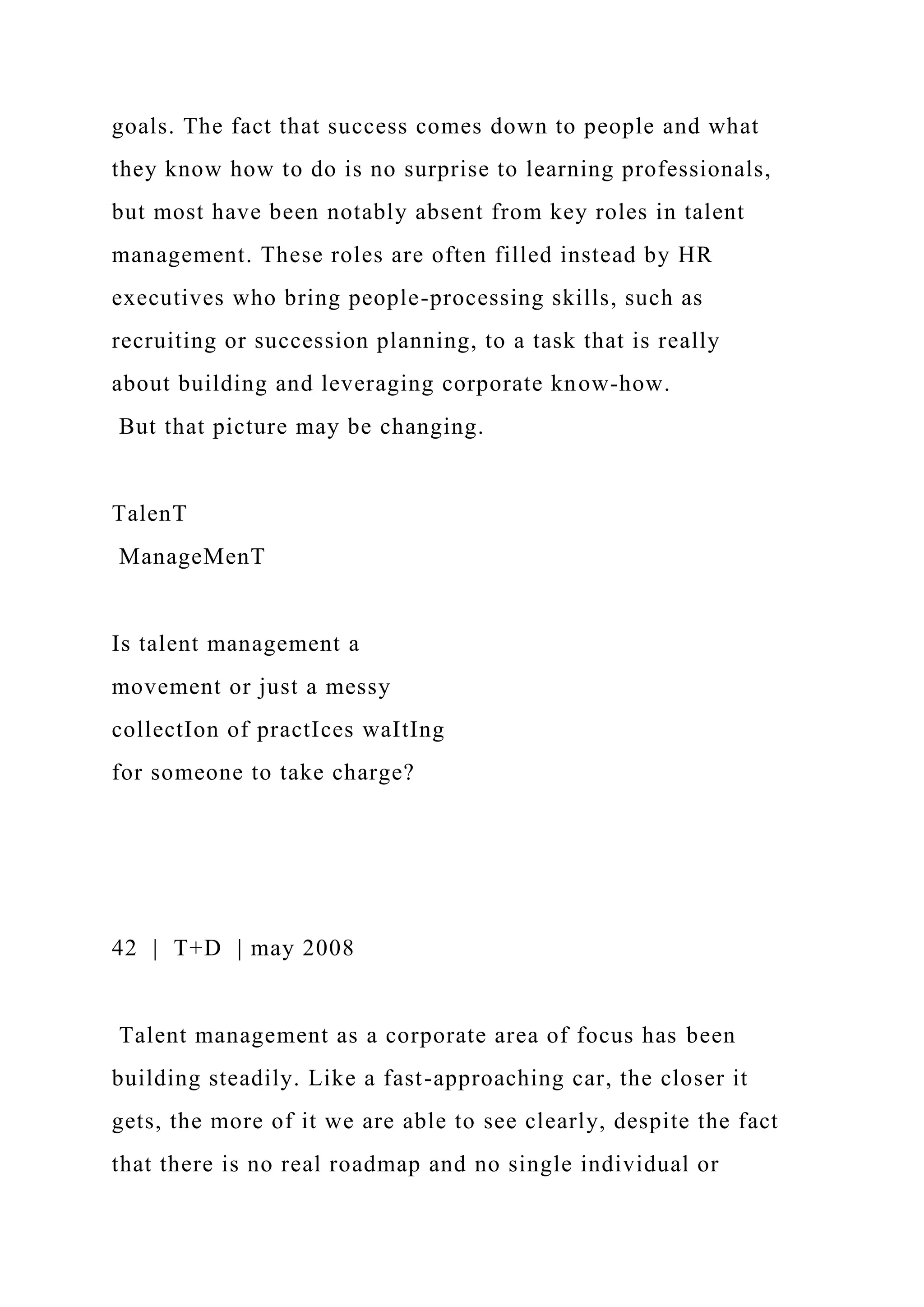
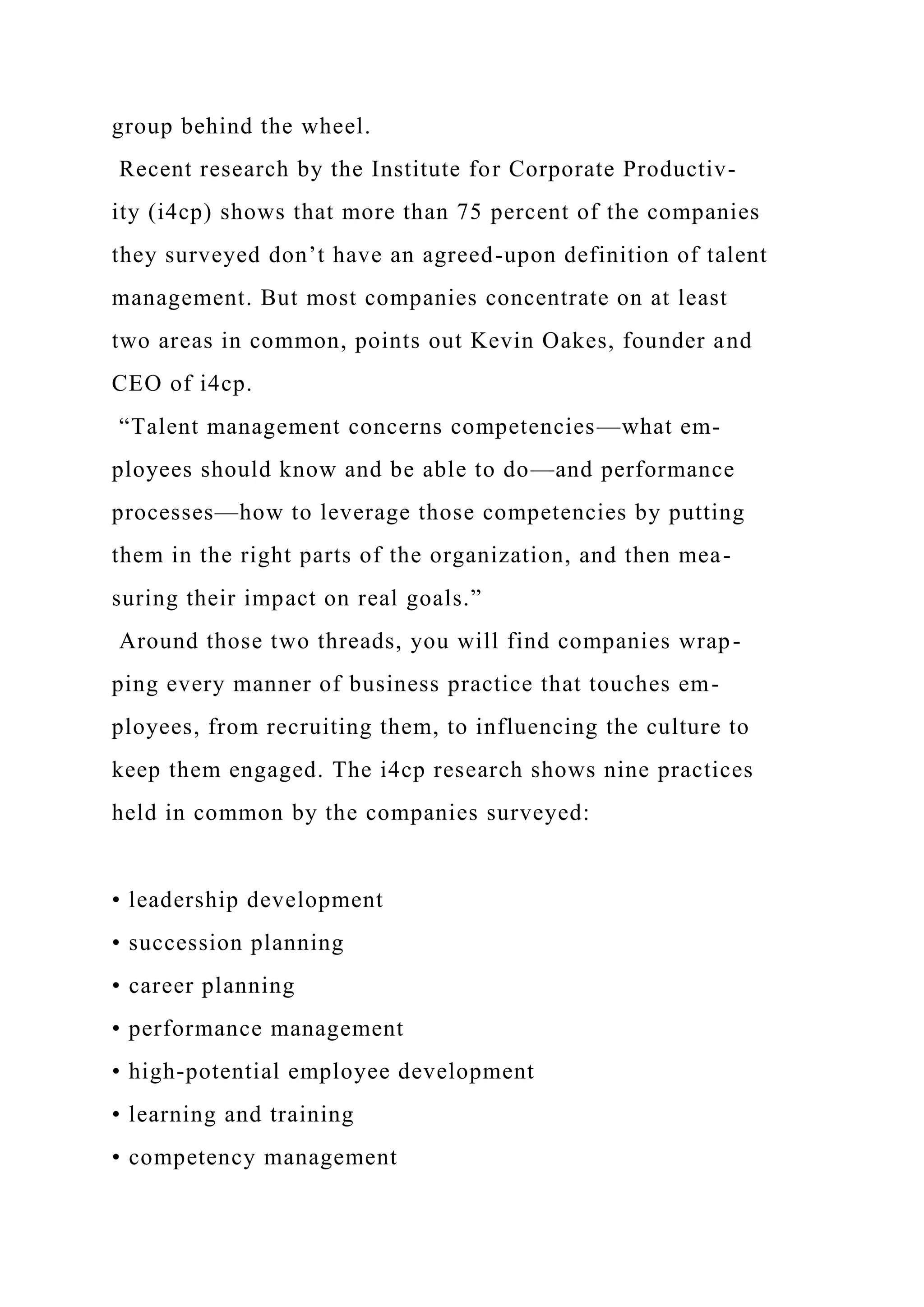
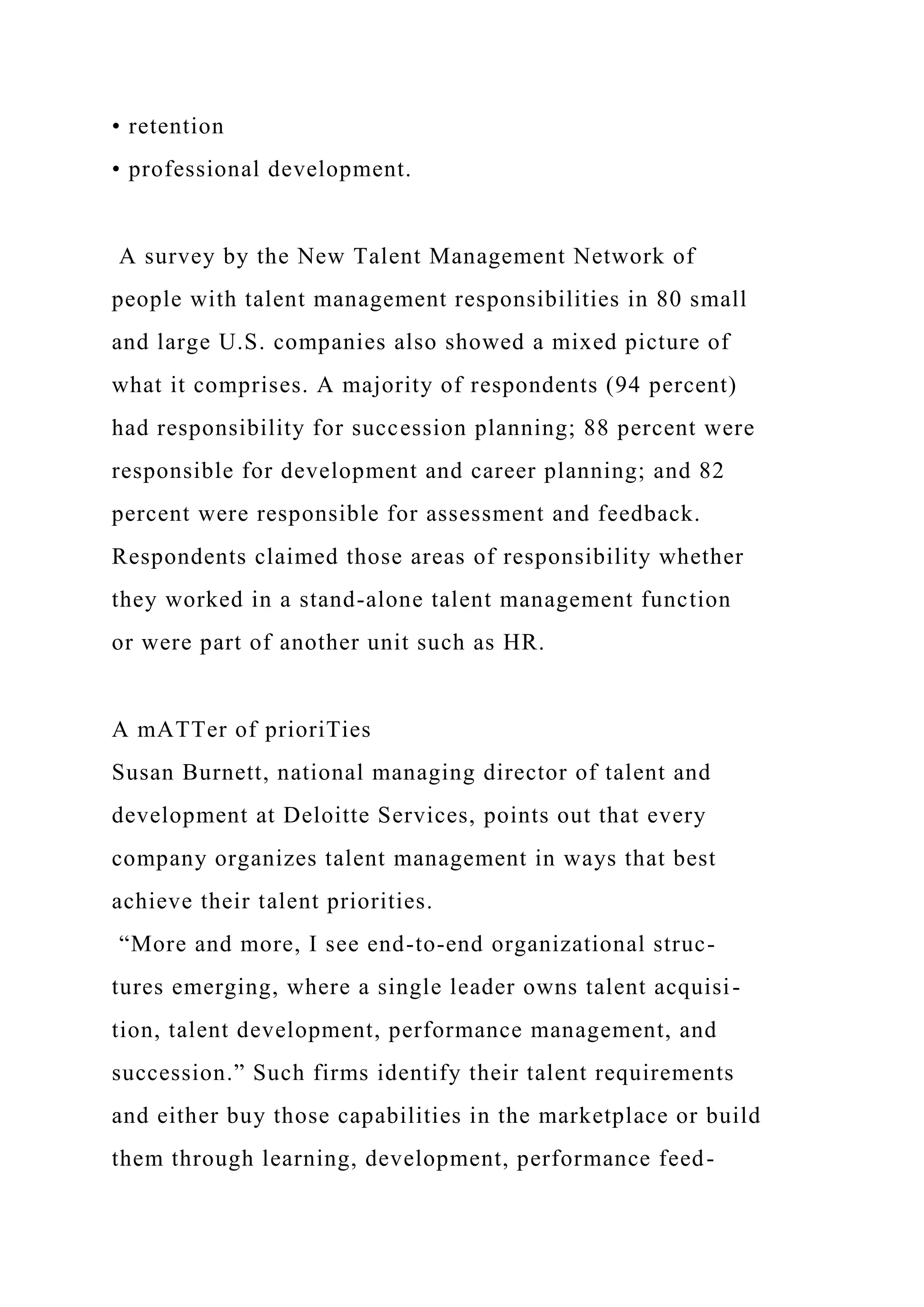
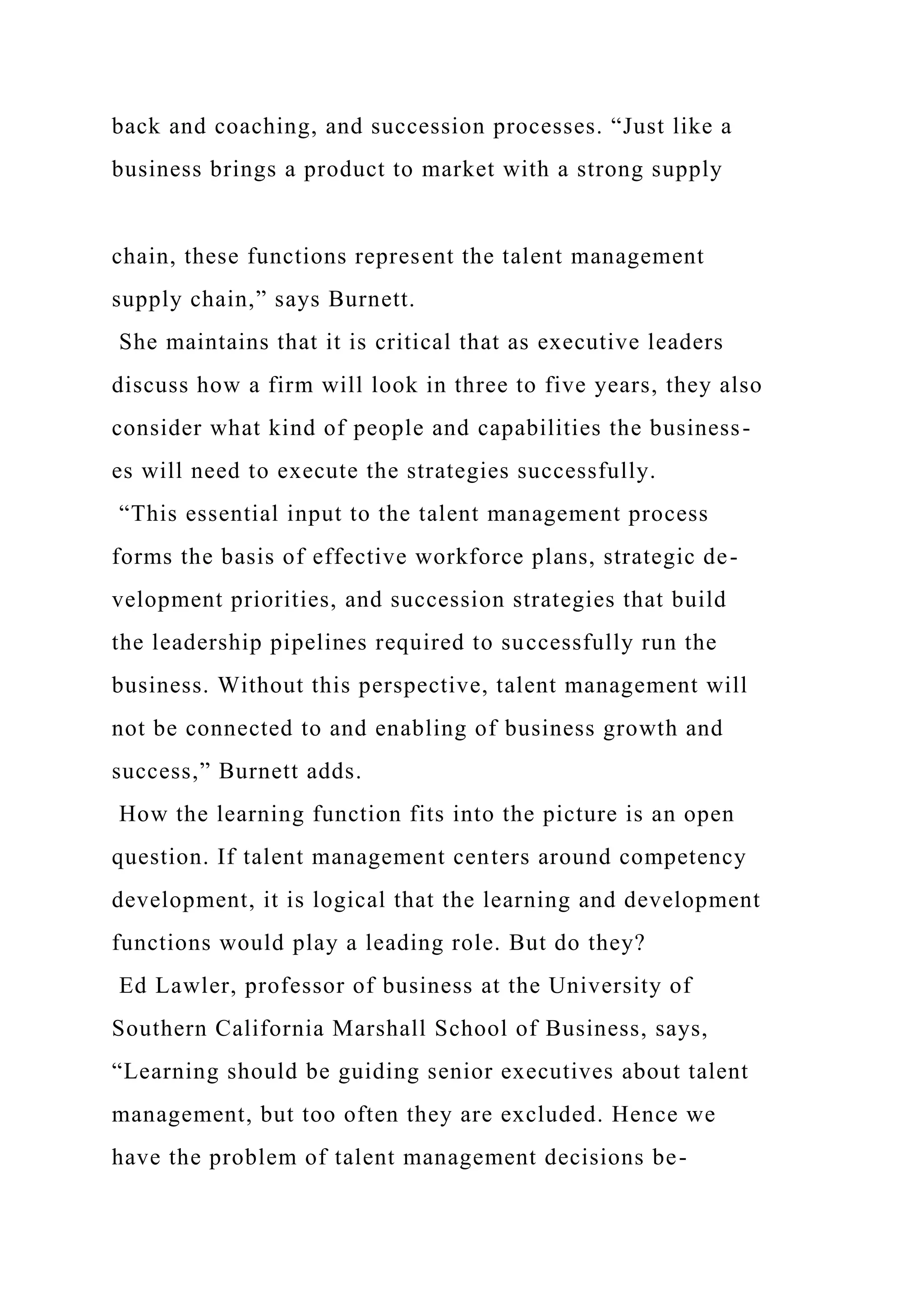


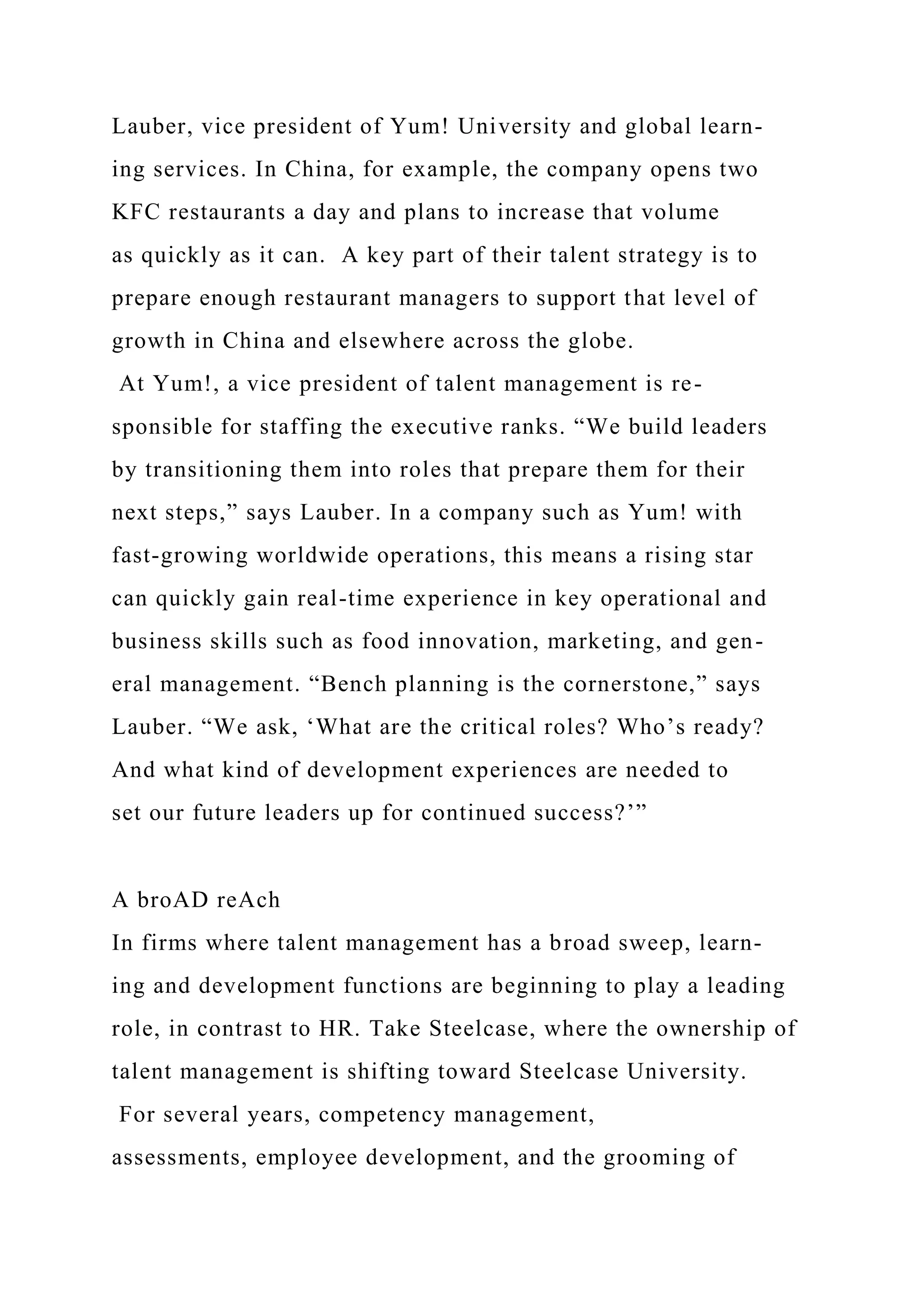
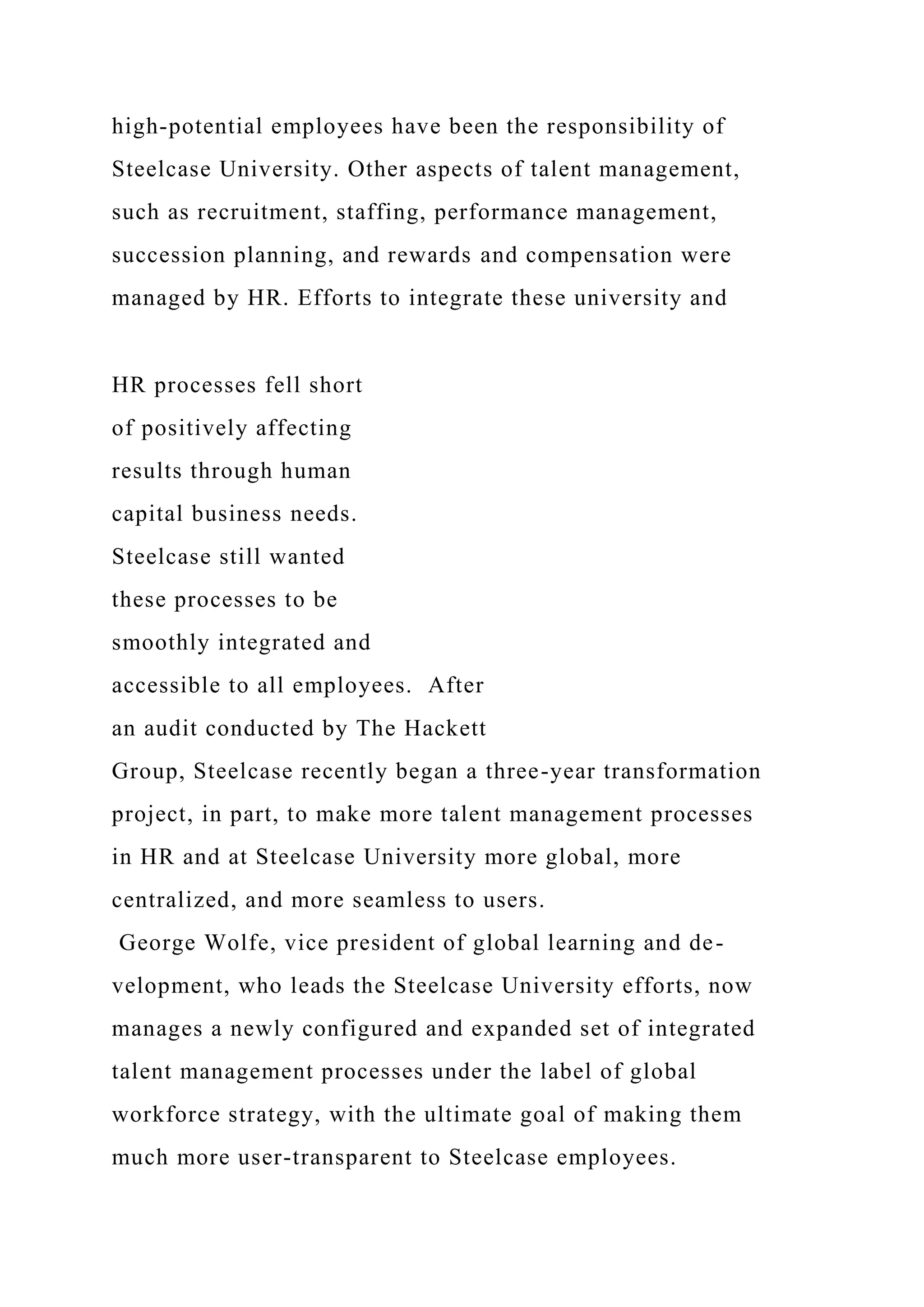
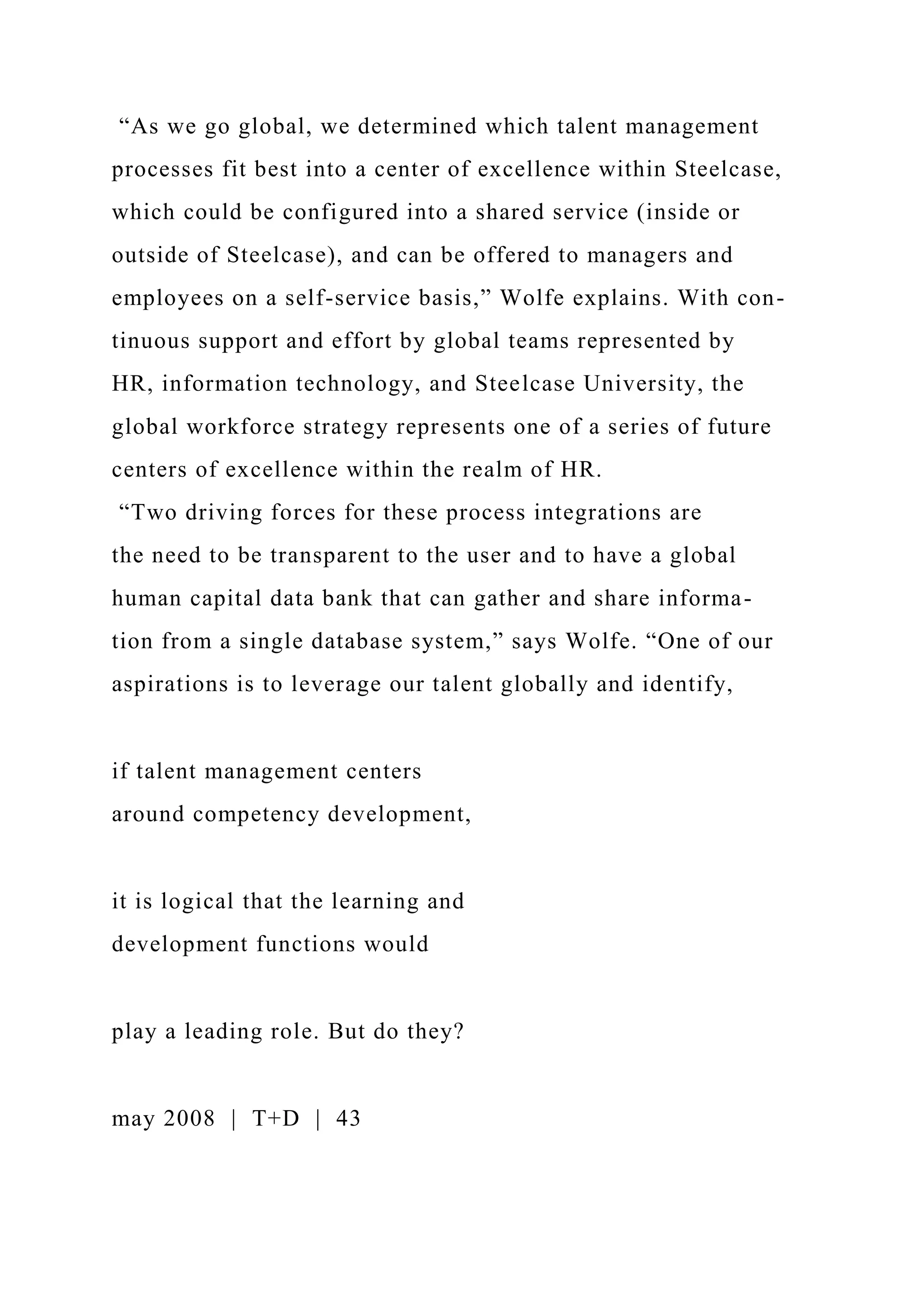
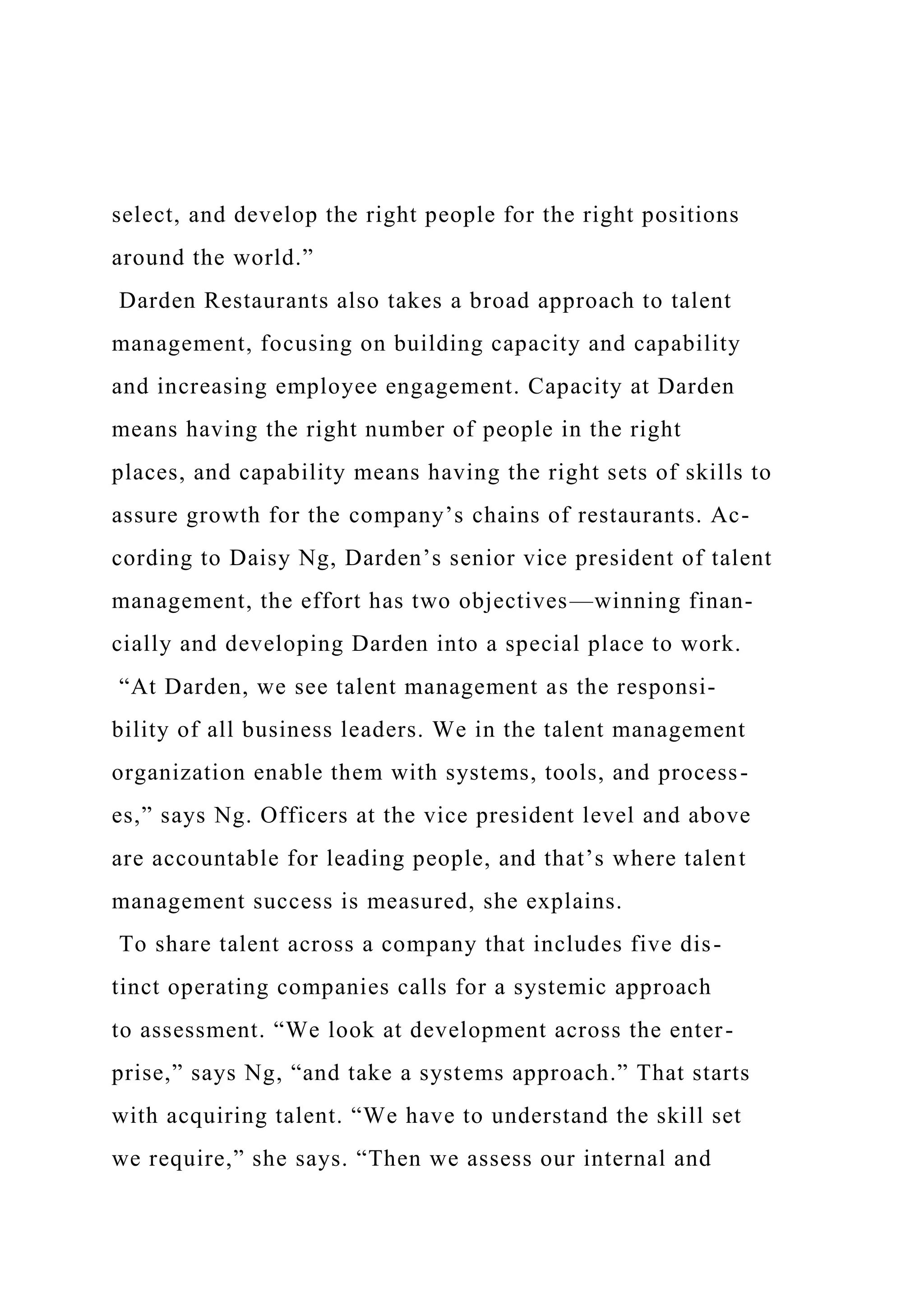
![external capability and close gaps by developing people as
needed. We also work to retain and engage employees, and
everything is surrounded by the right compensation.”
WhAT nexT?
Writing about talent management for the forthcoming ASTD
Handbook of Workplace Learning and Performance, Oakes
Illustration by Steve Fife44 | T+D | may 2008
Talent management as a
corporate area of focus has
been building steadily. like a
fast-approaching car, the closer
it gets, the more of it we are able
to see clearly, despite the fact
that there is no real roadmap and
no single individual or group
behind the wheel.
What Do You think?
T+D welcomes your comments. If you would
like to respond to this article, or any article
that appears in T+D, please send your feedback
to [email protected] Responses sent to the](https://image.slidesharecdn.com/reflectionpaper1reflectionpaper2reflectionpaper-221031054129-dcabb3bf/75/Reflection-Paper-1Reflection-Paper-2Reflection-Paper-docx-250-2048.jpg)
